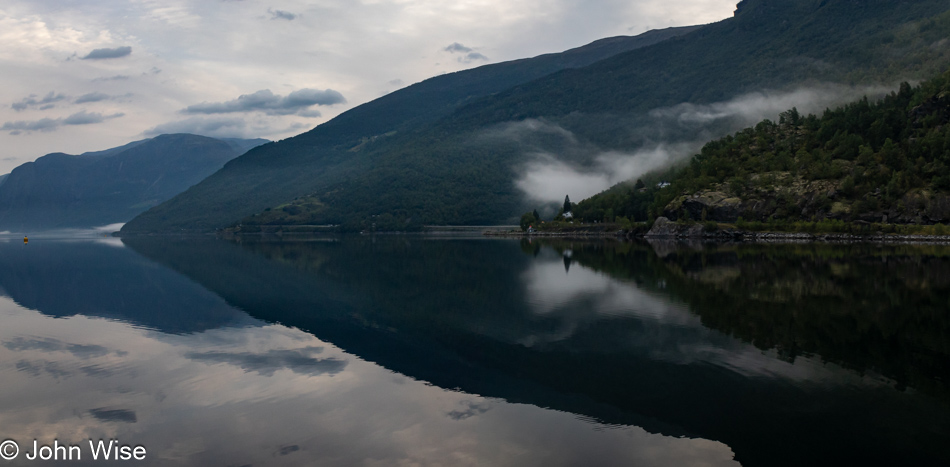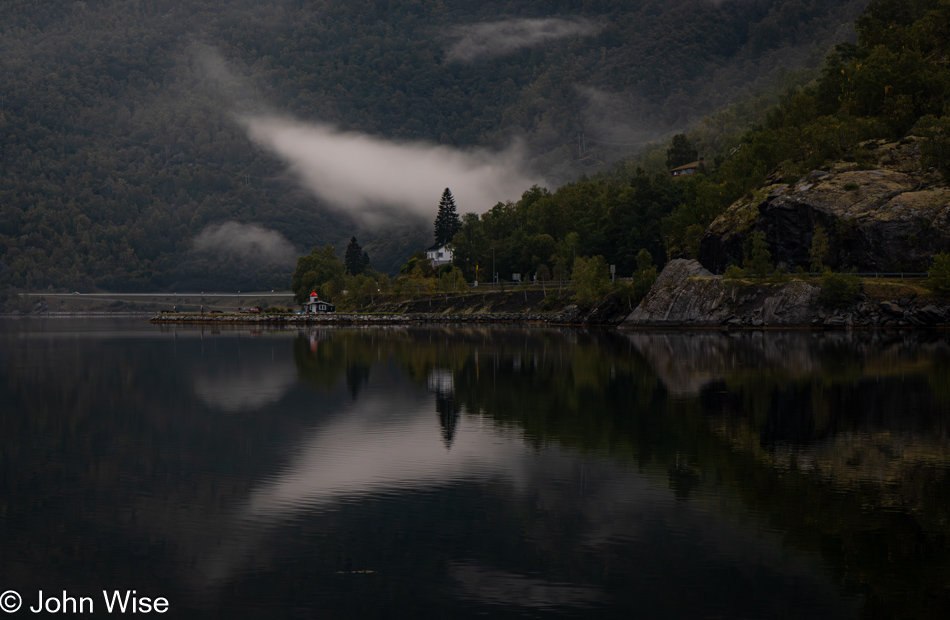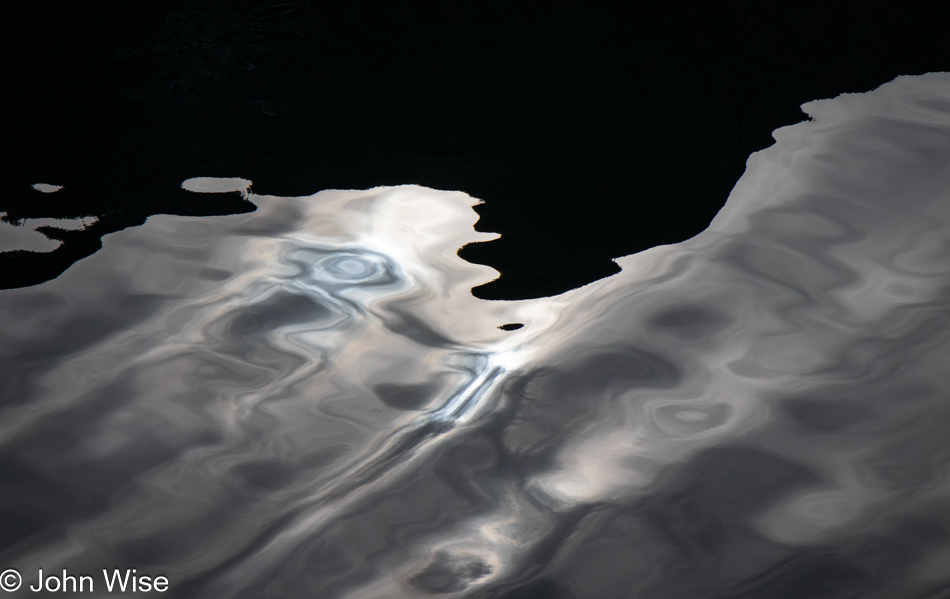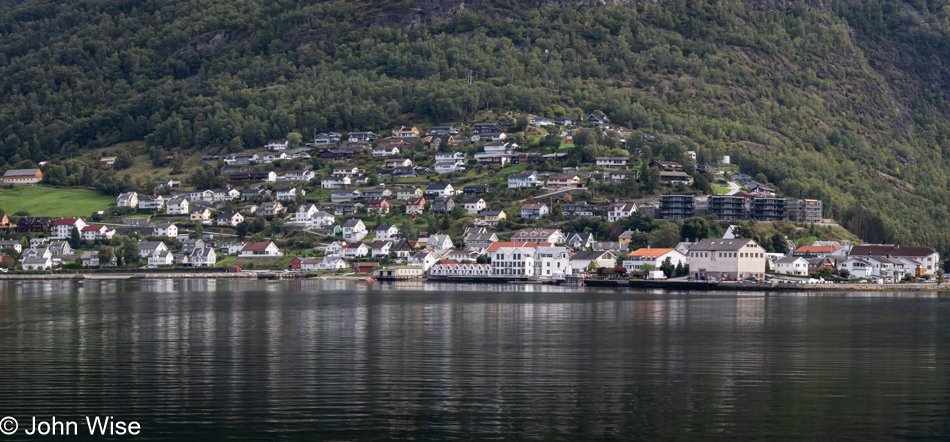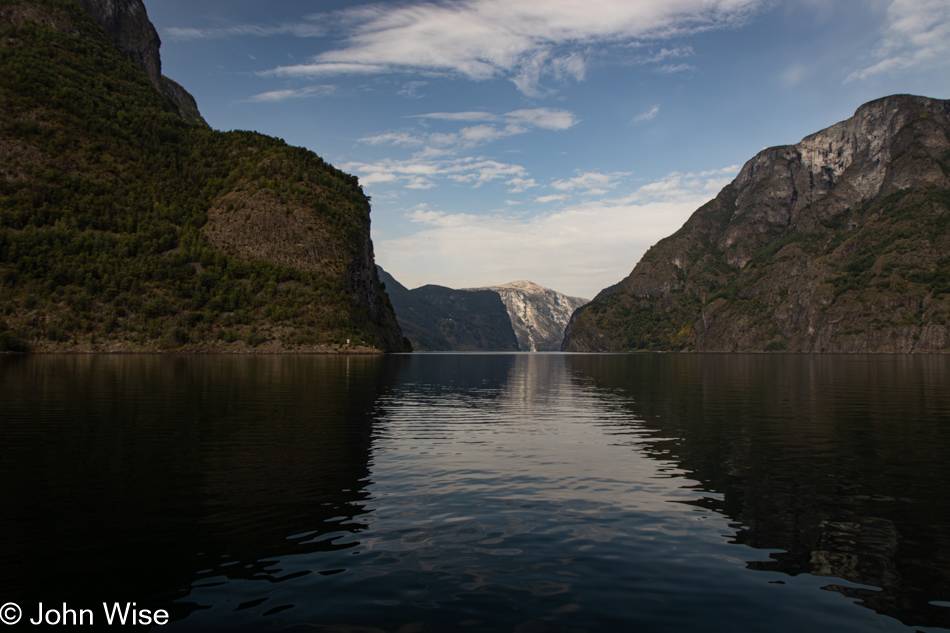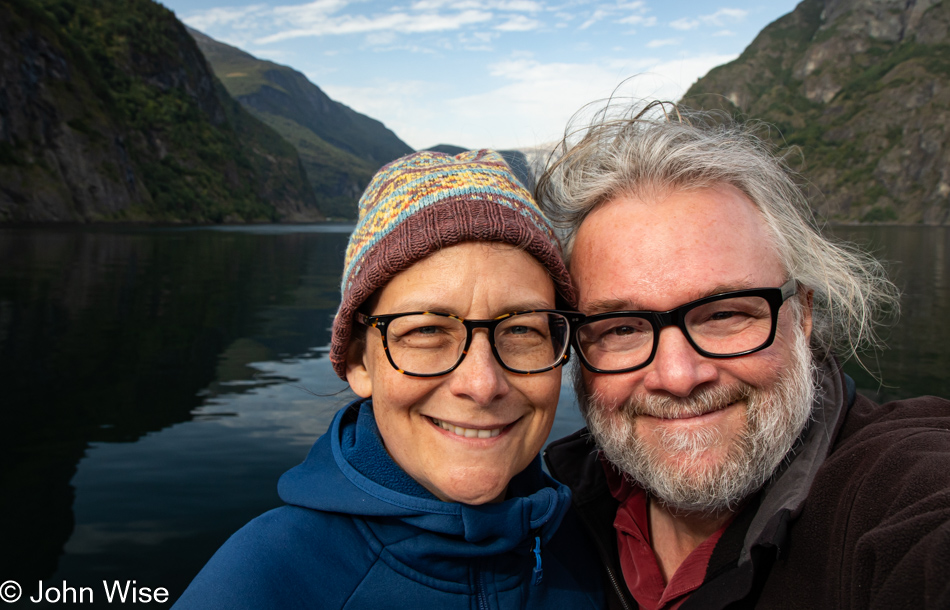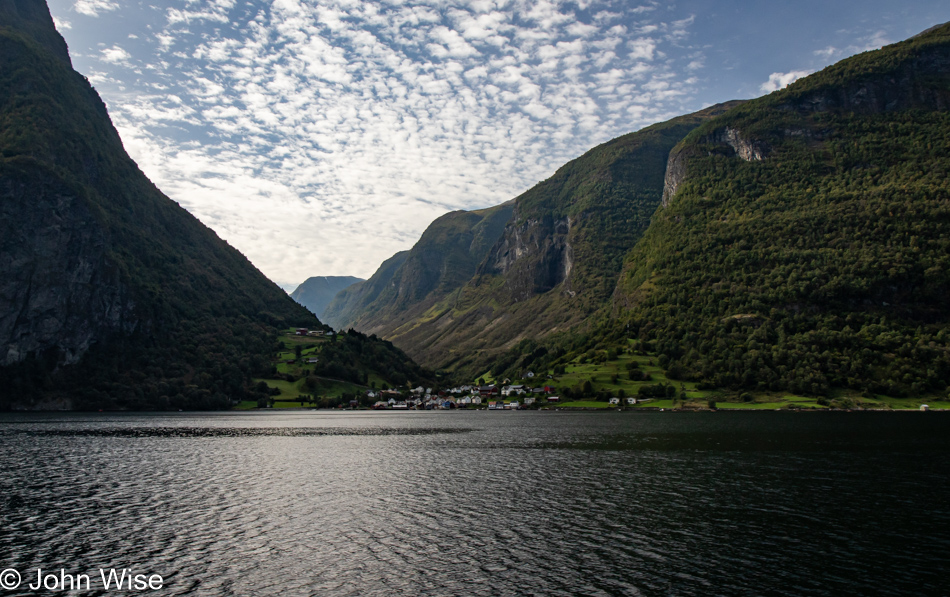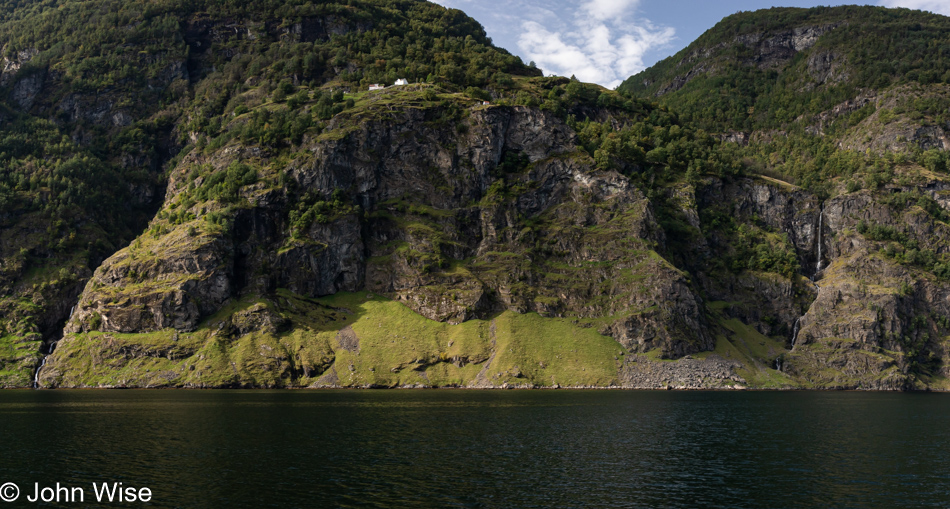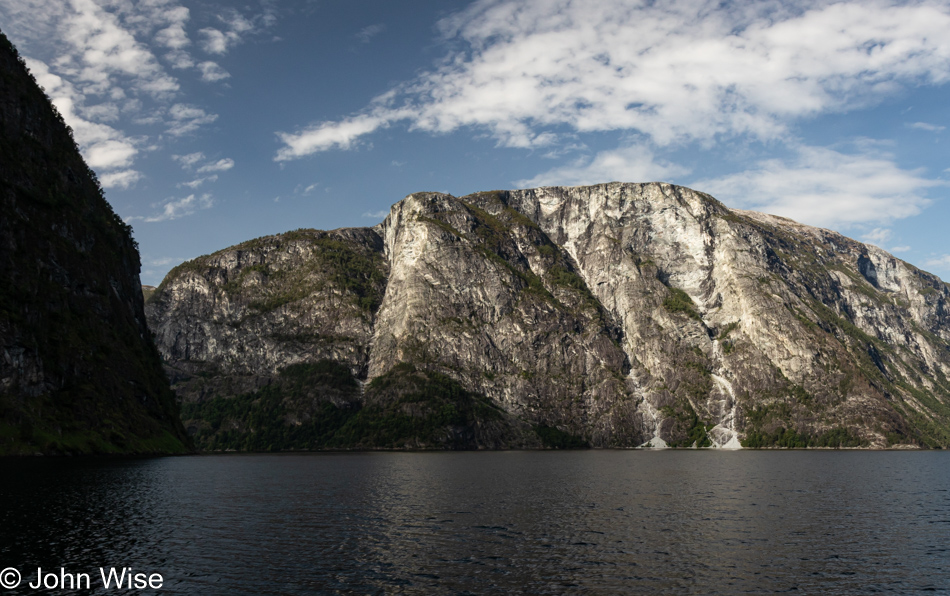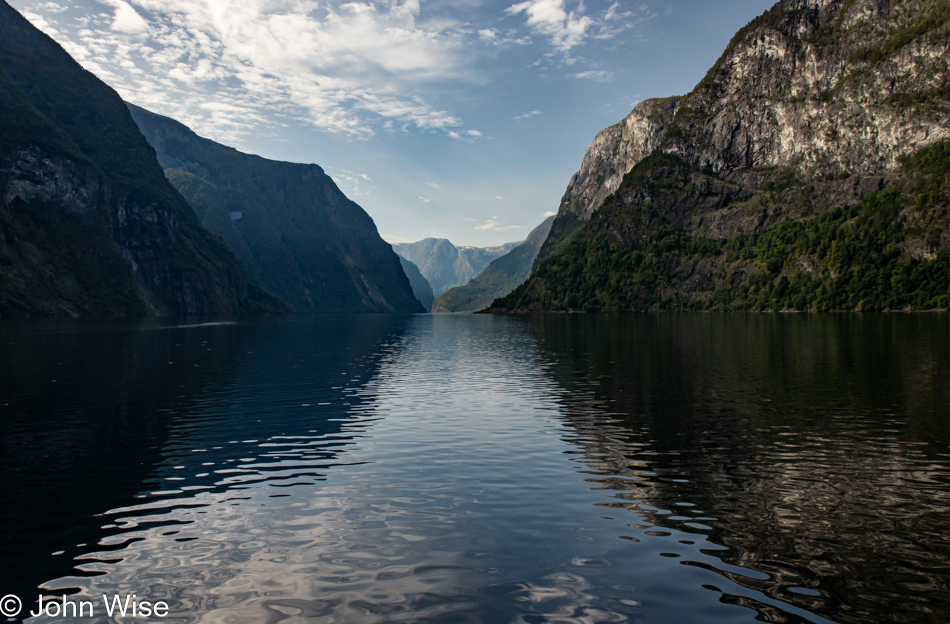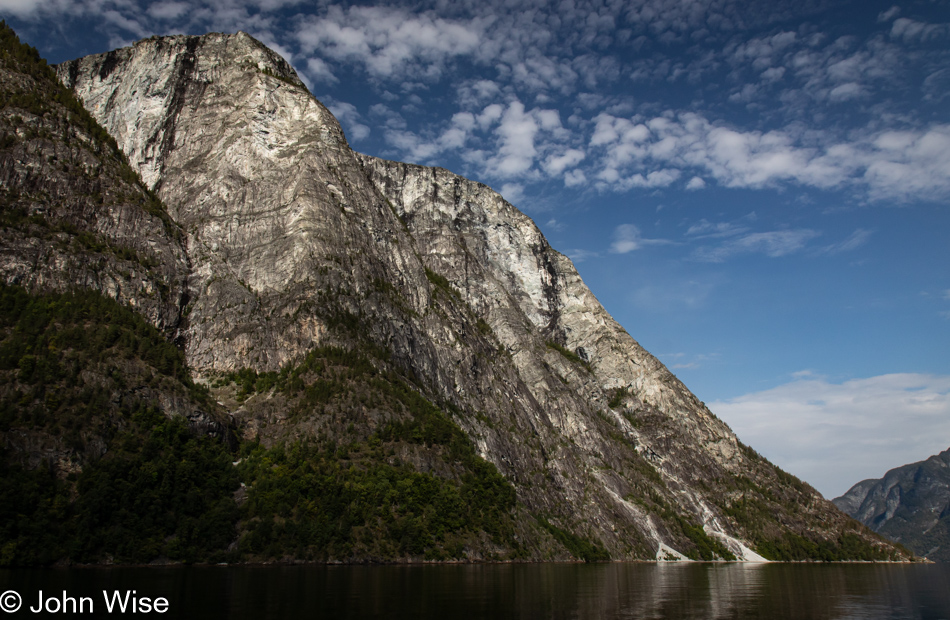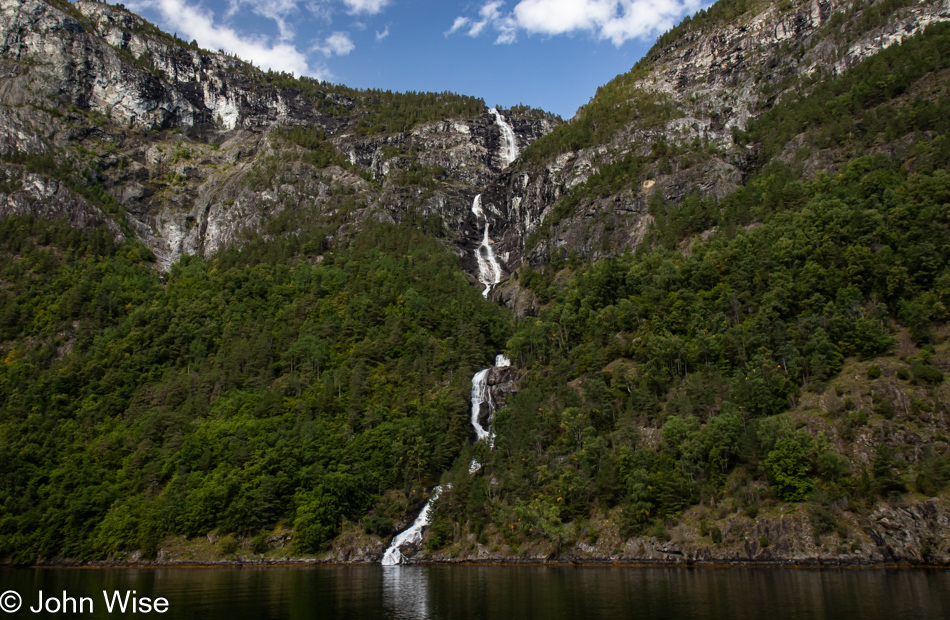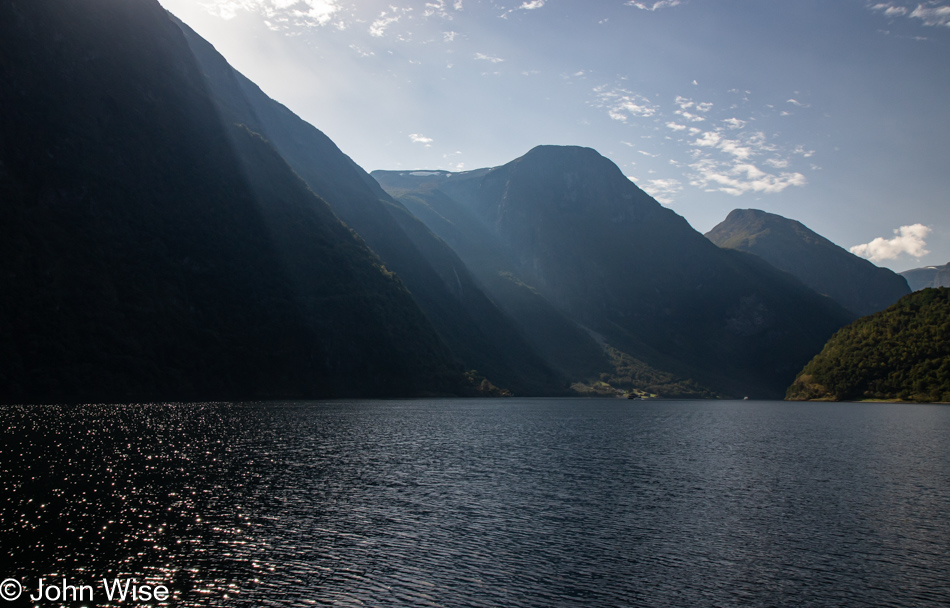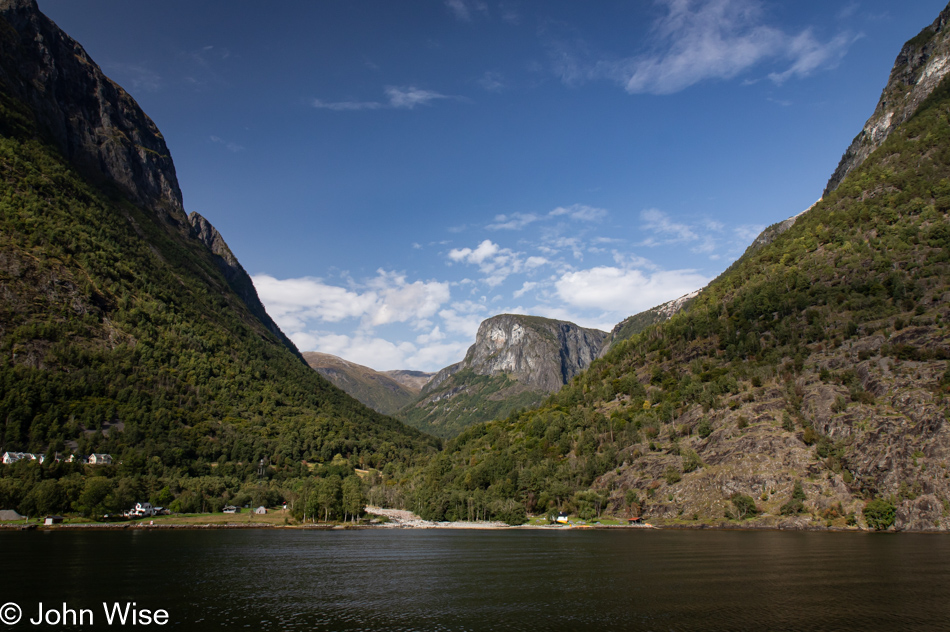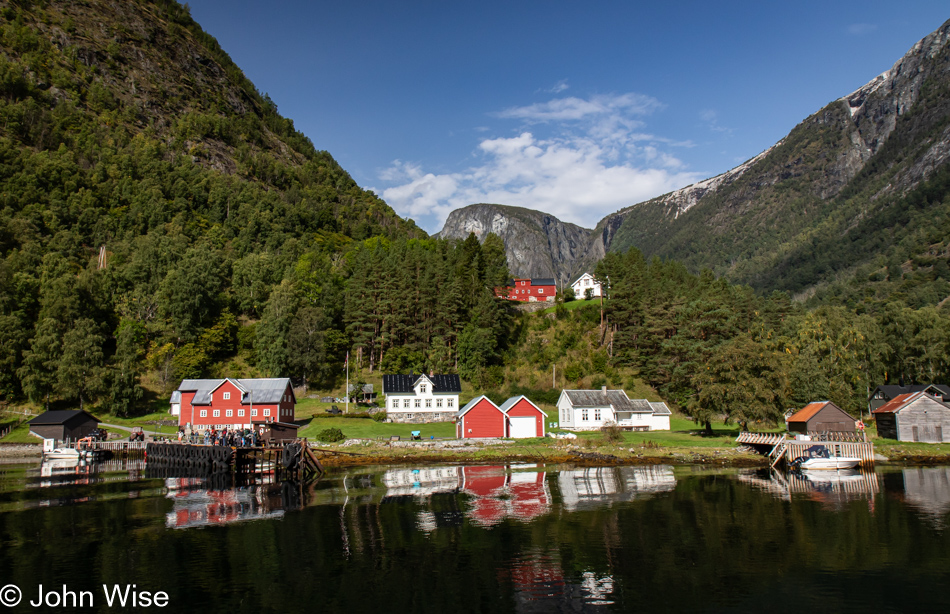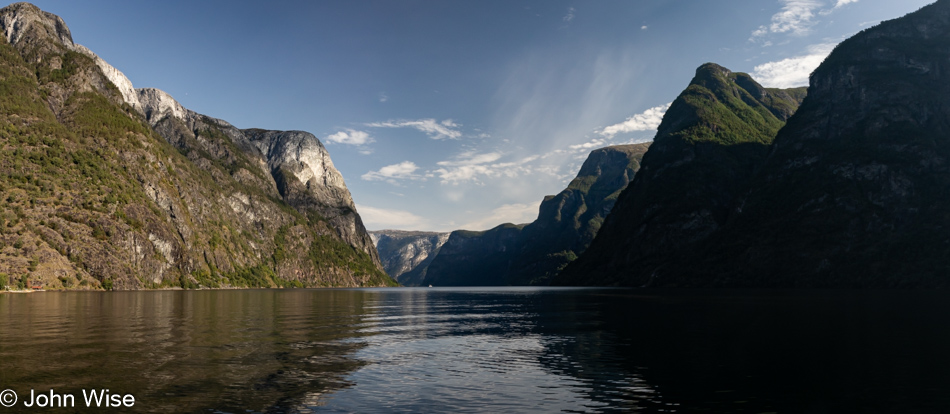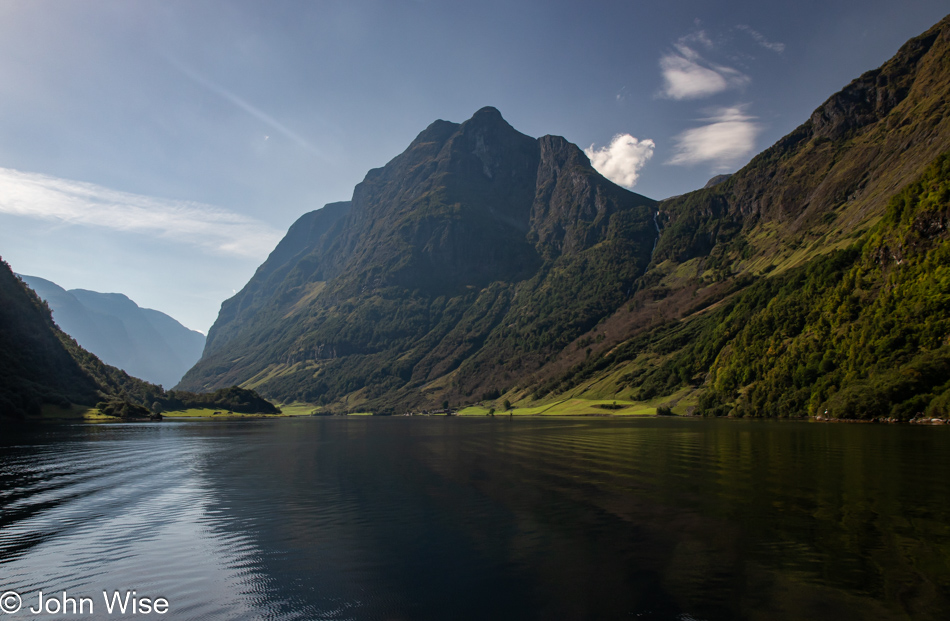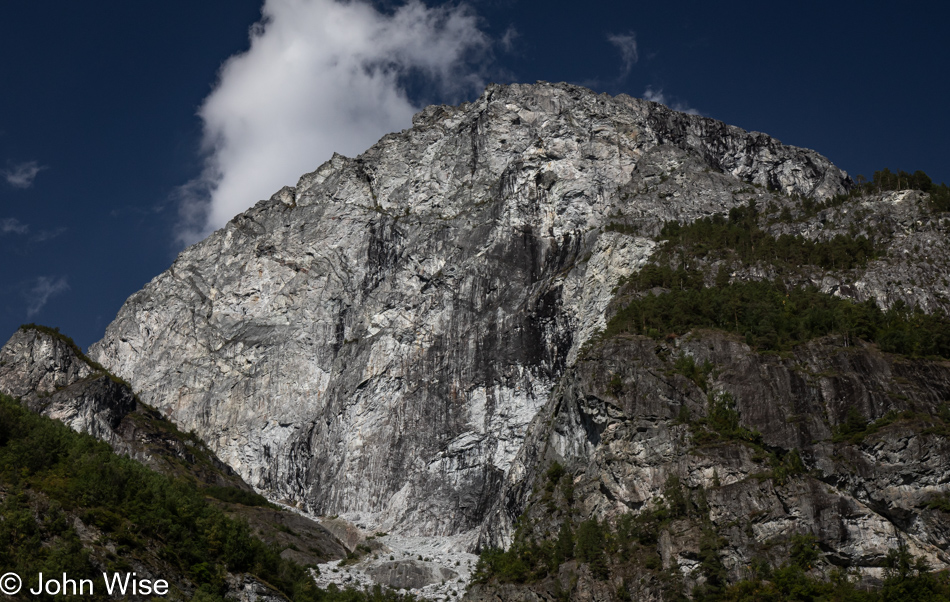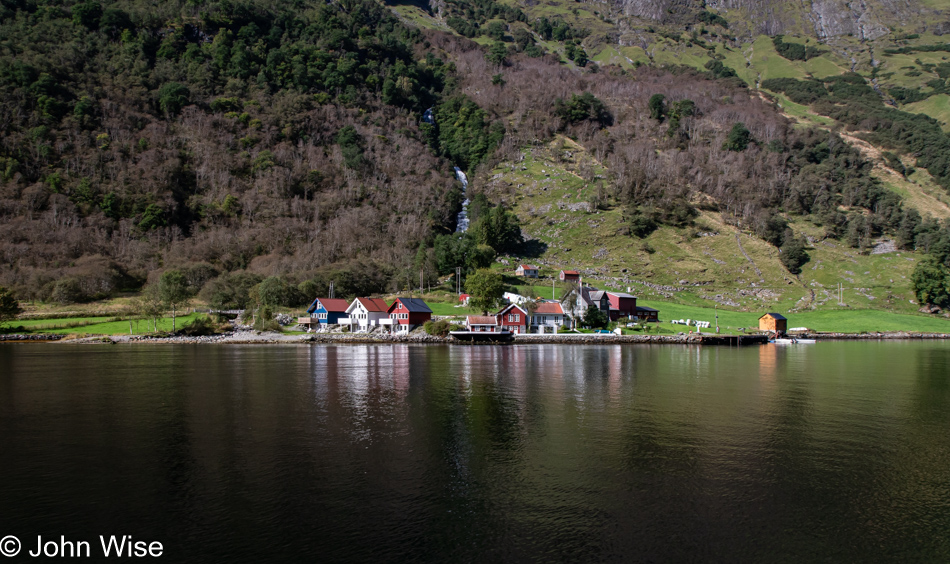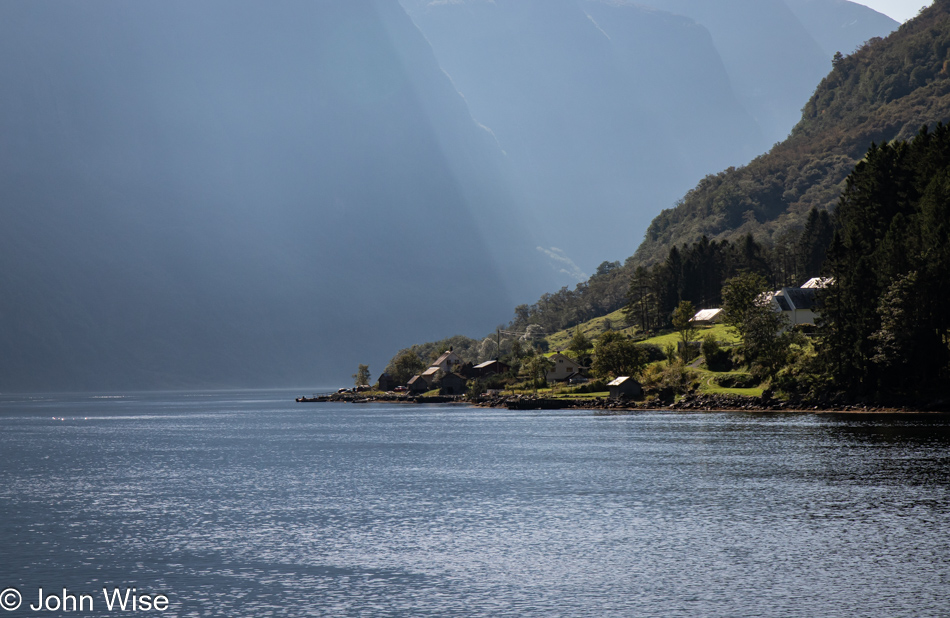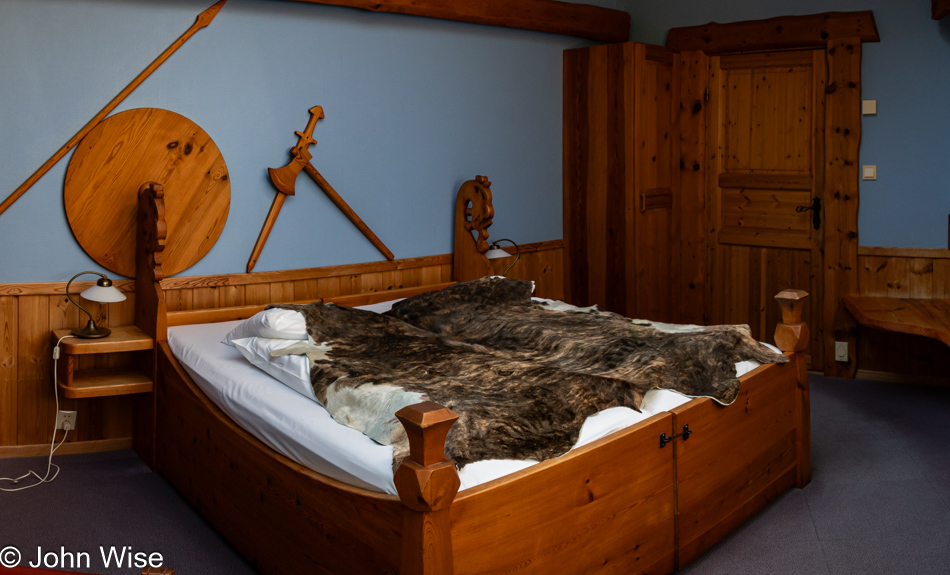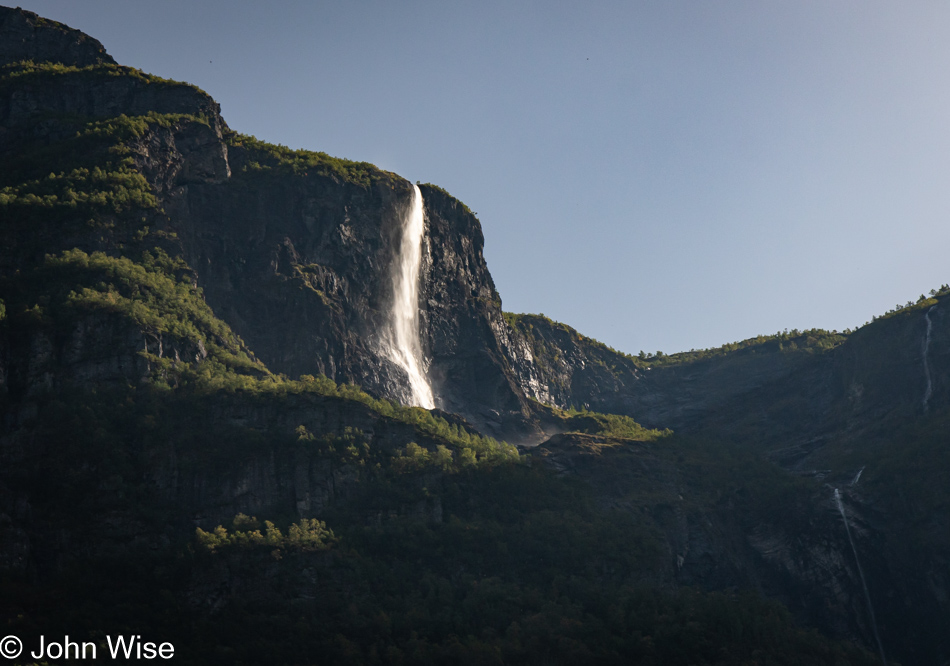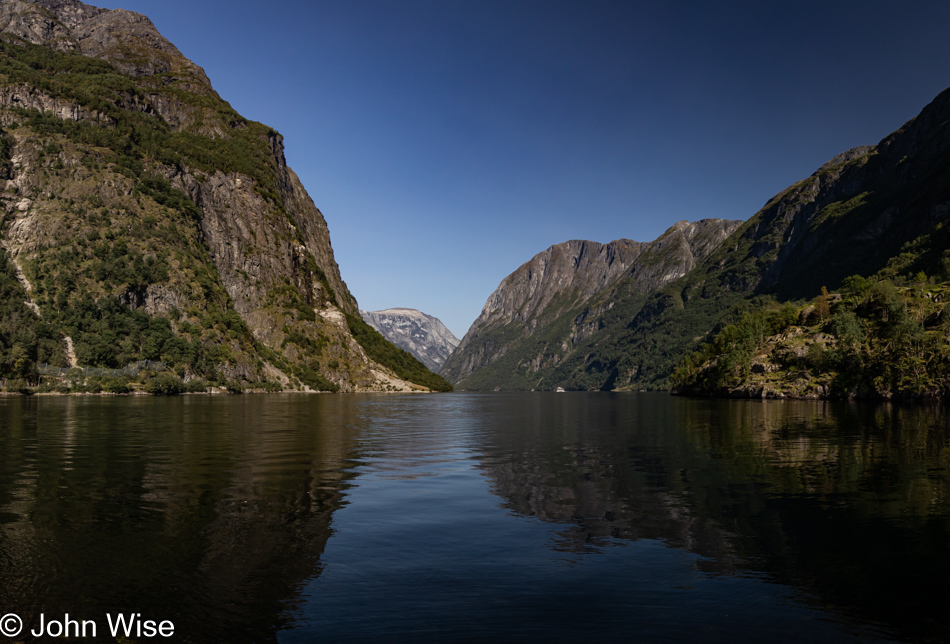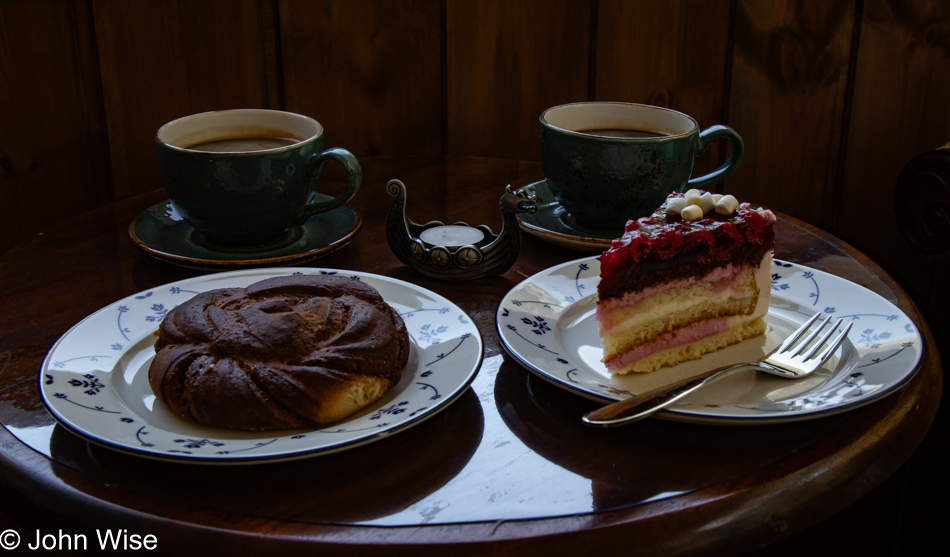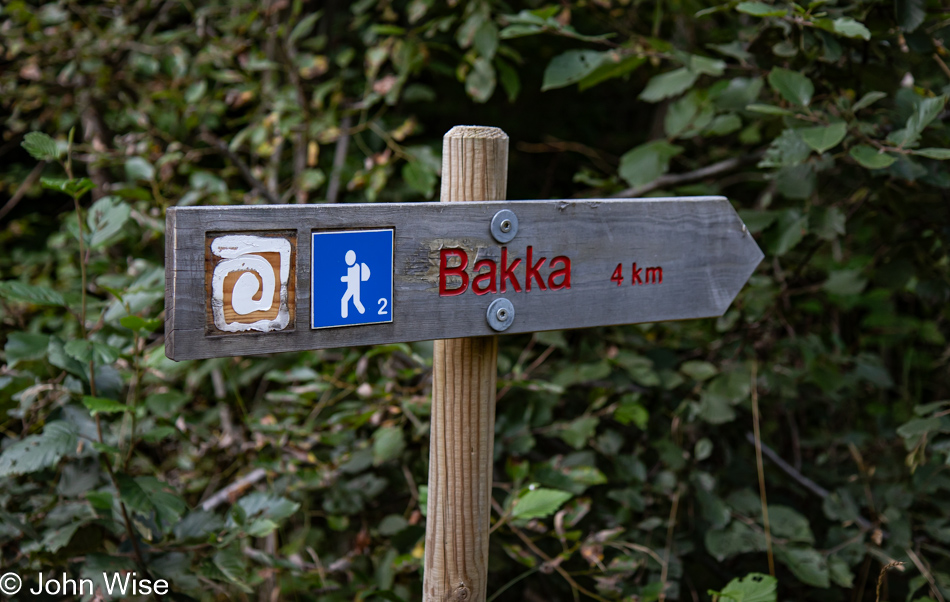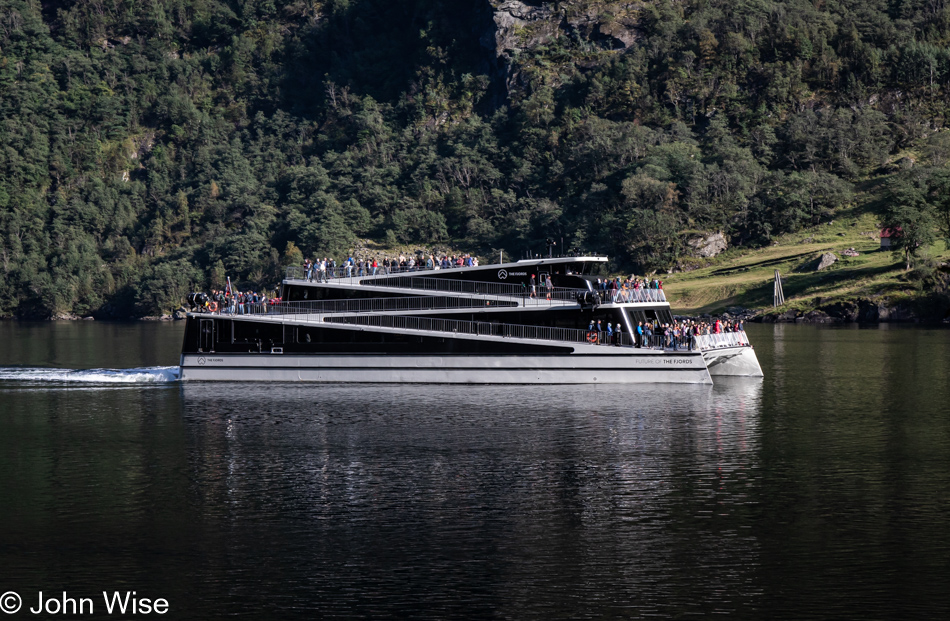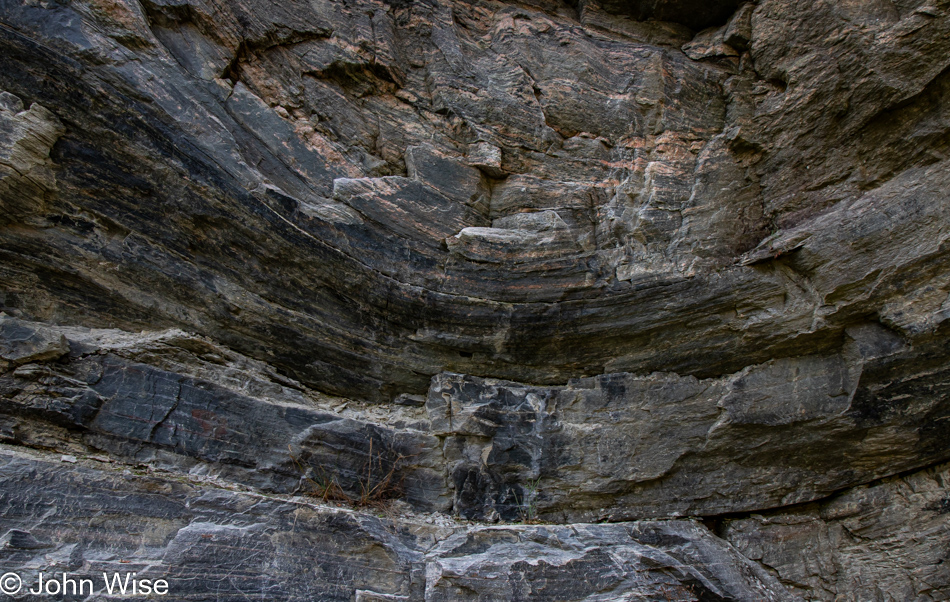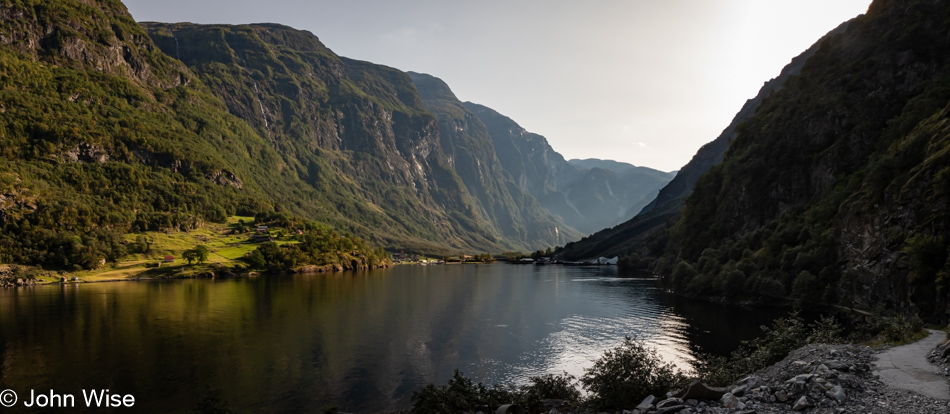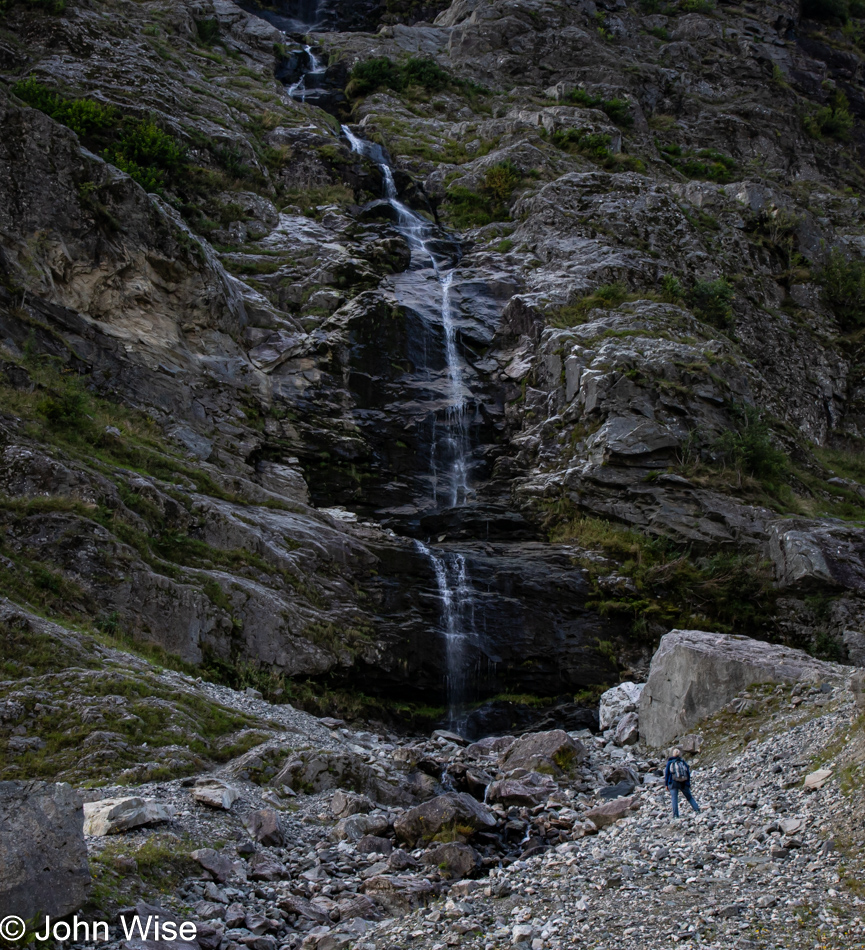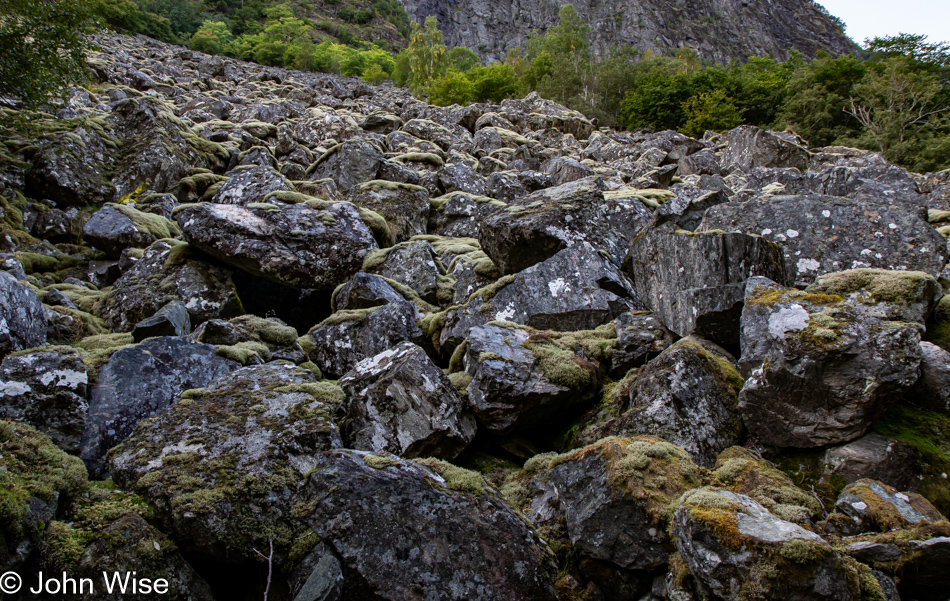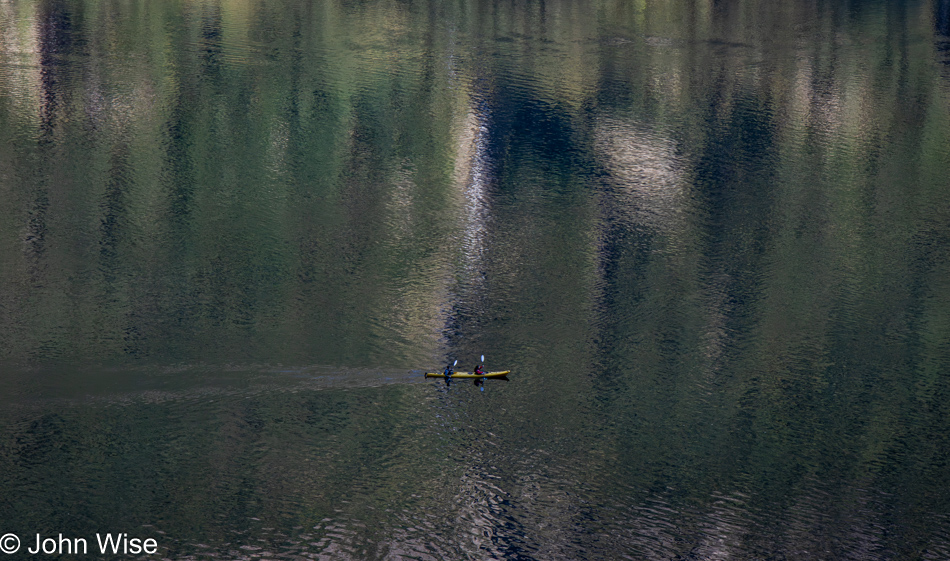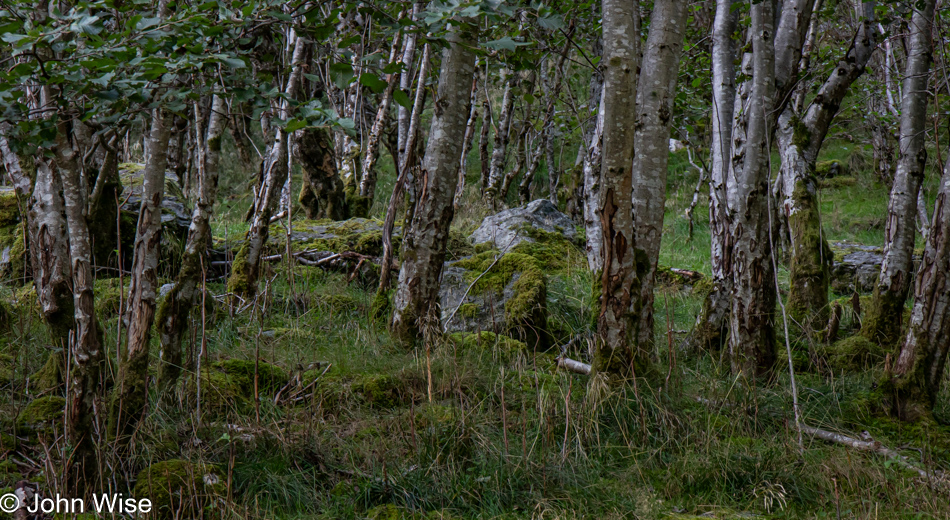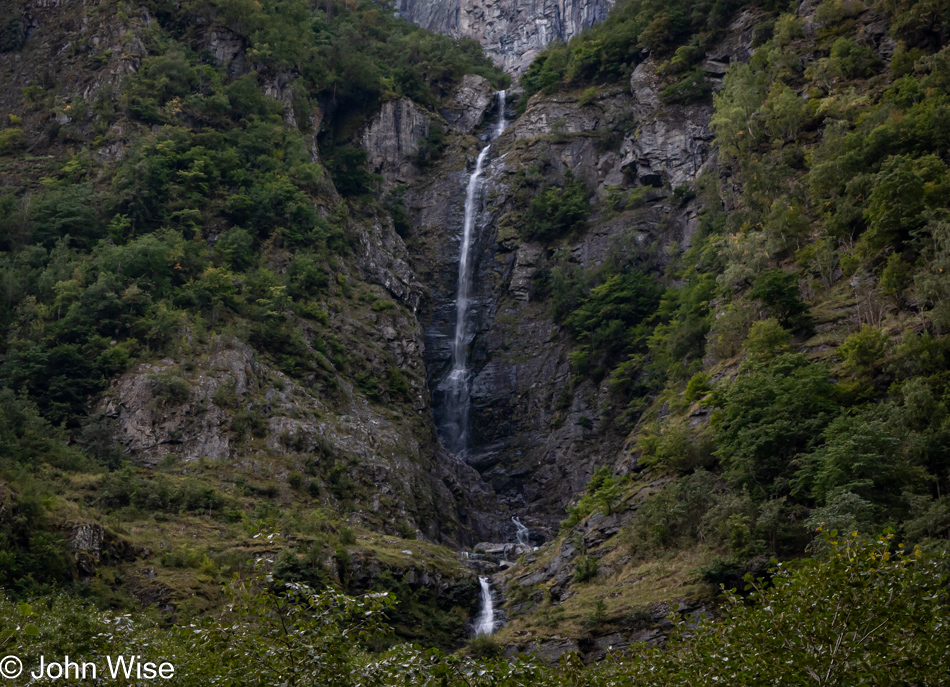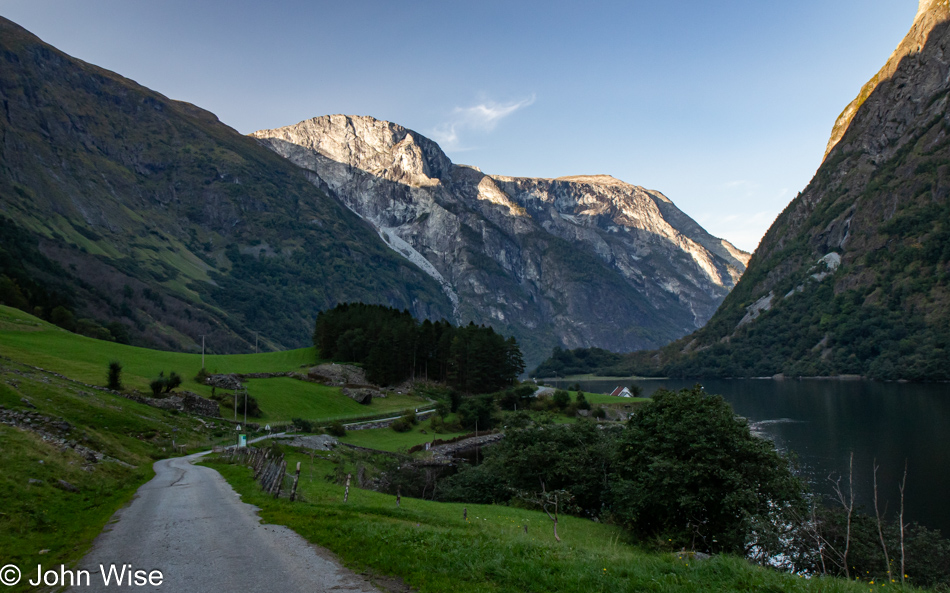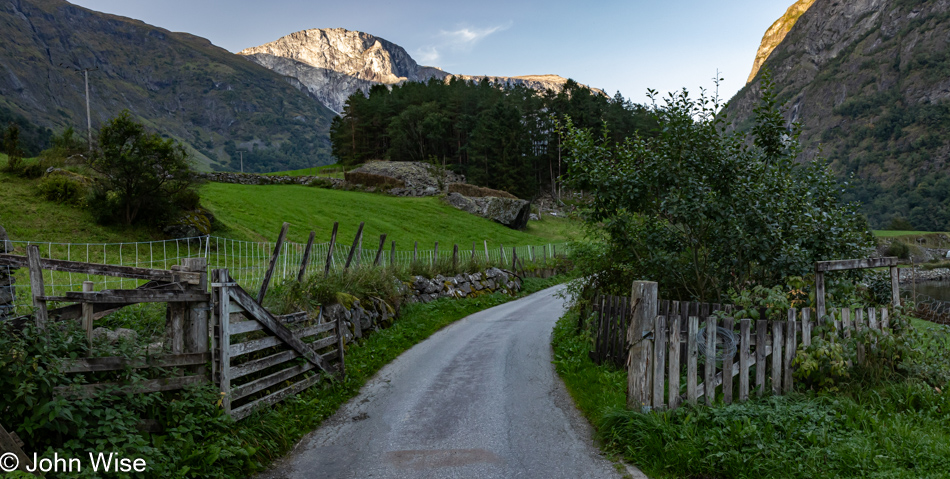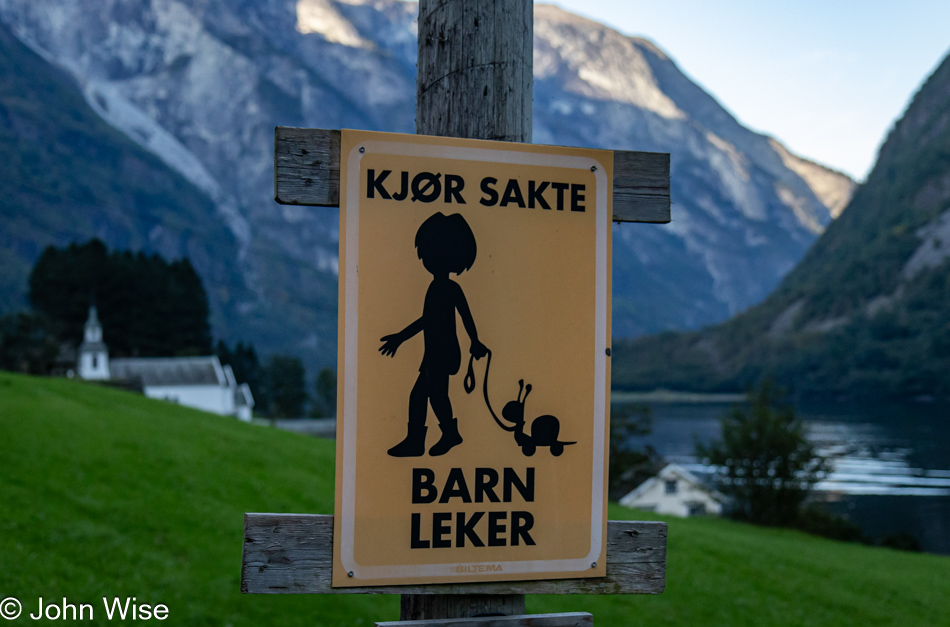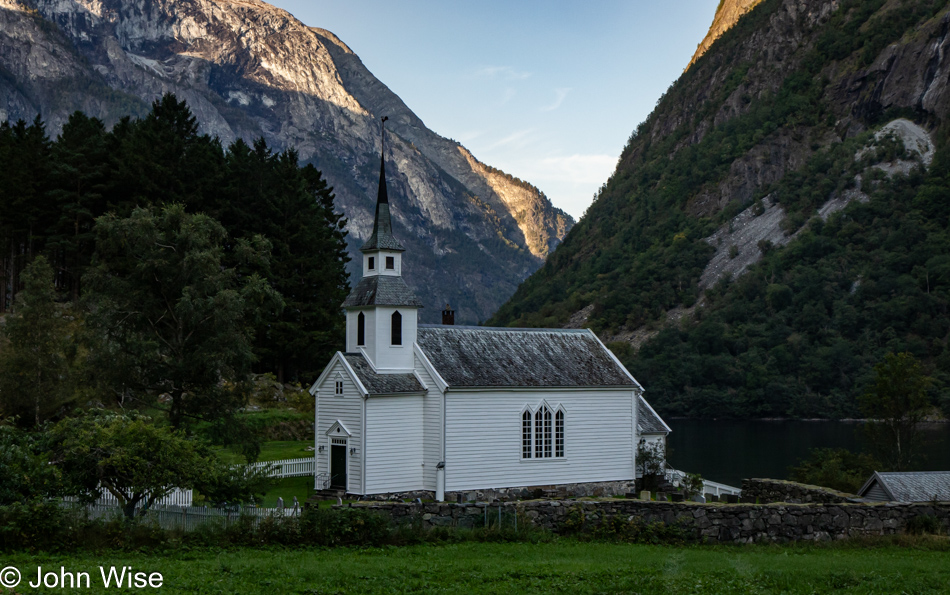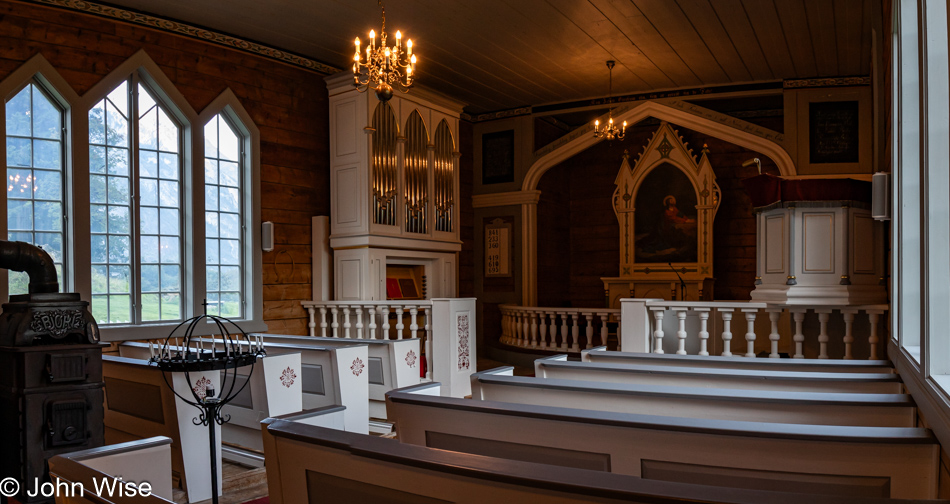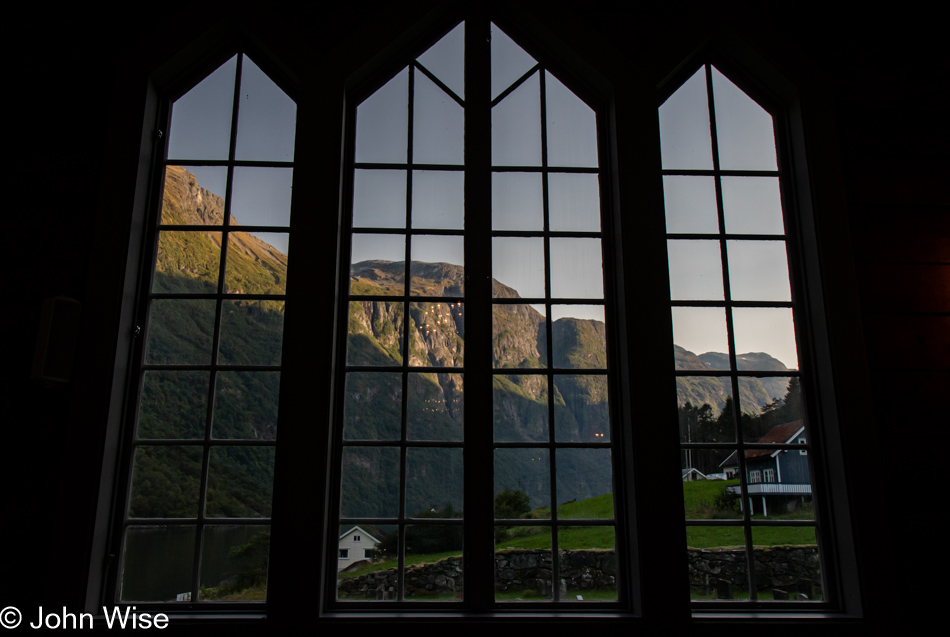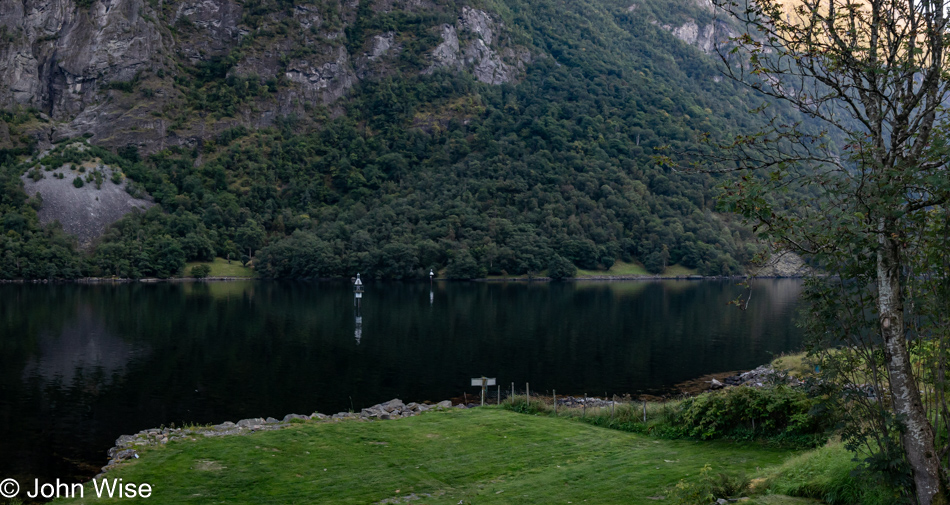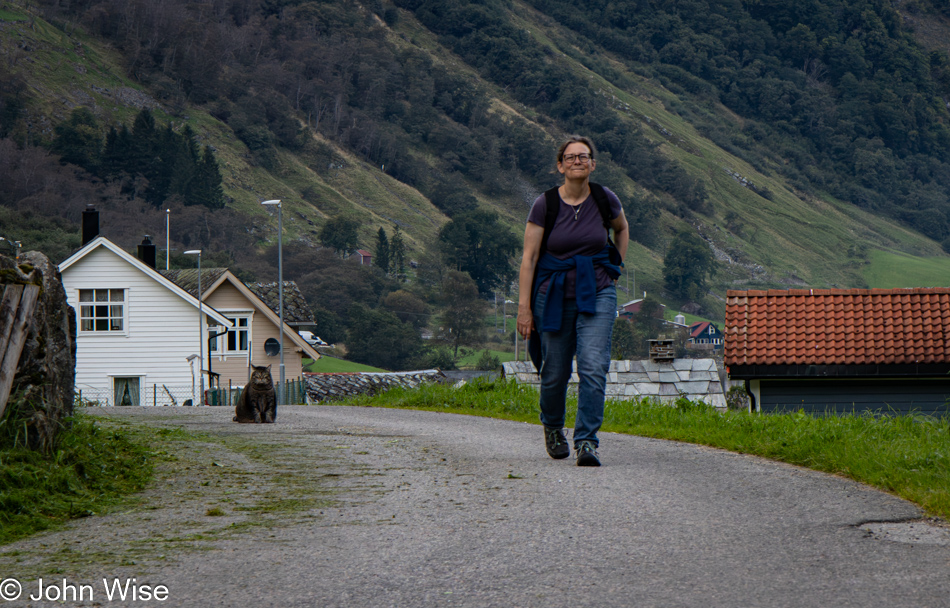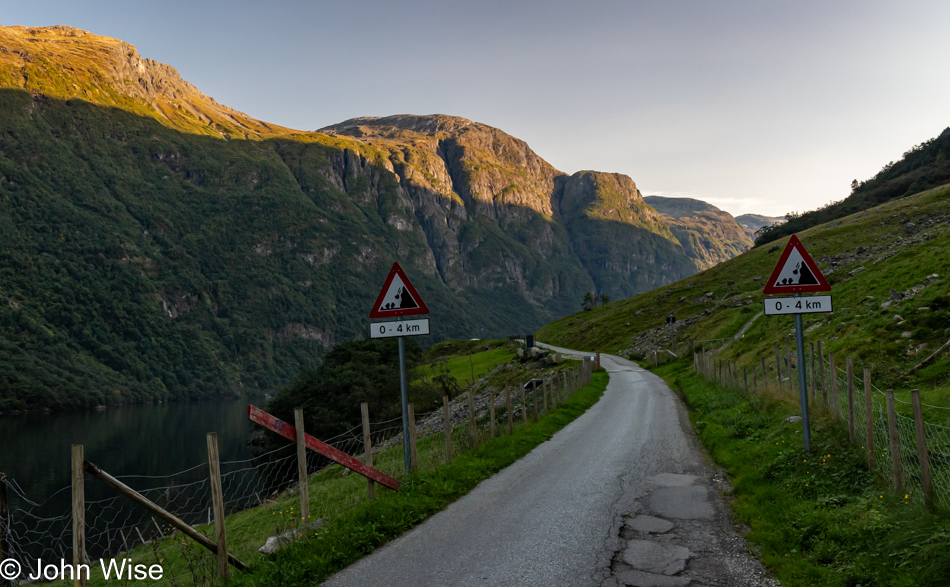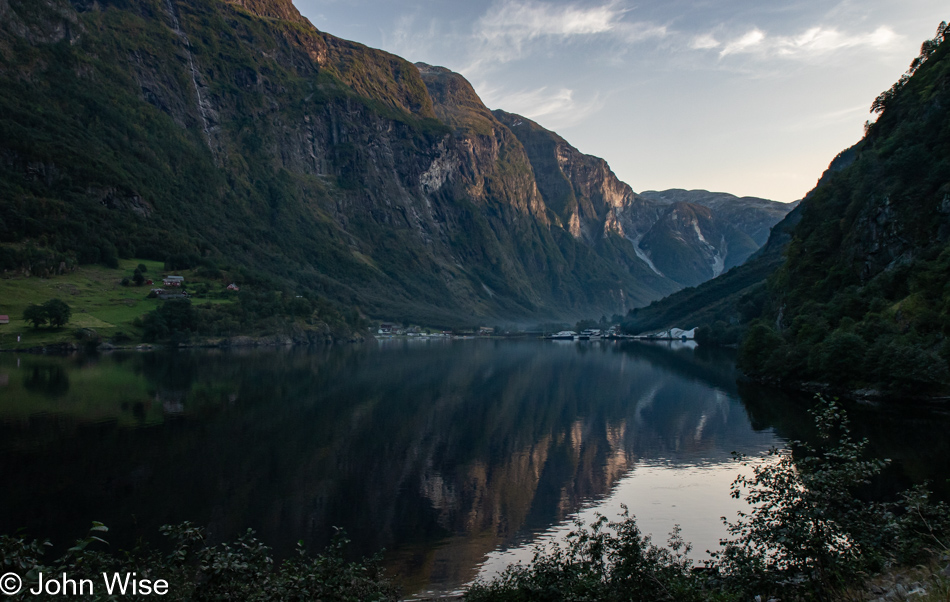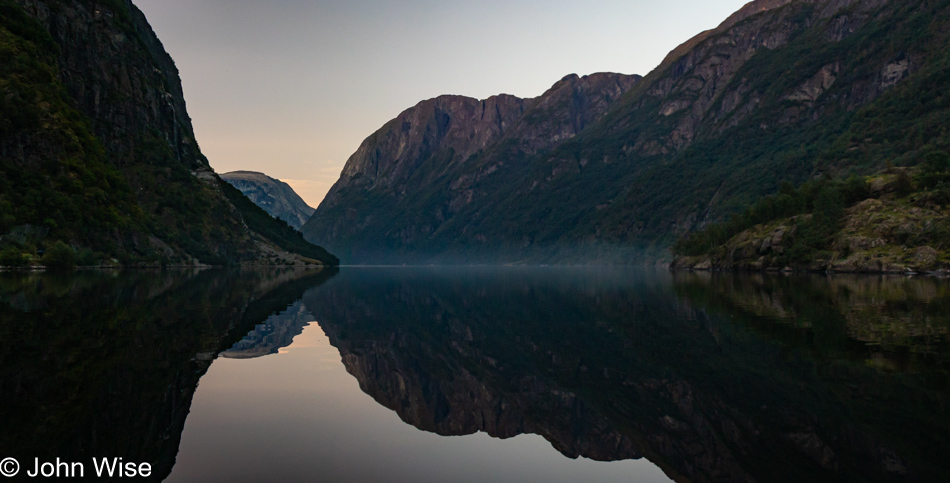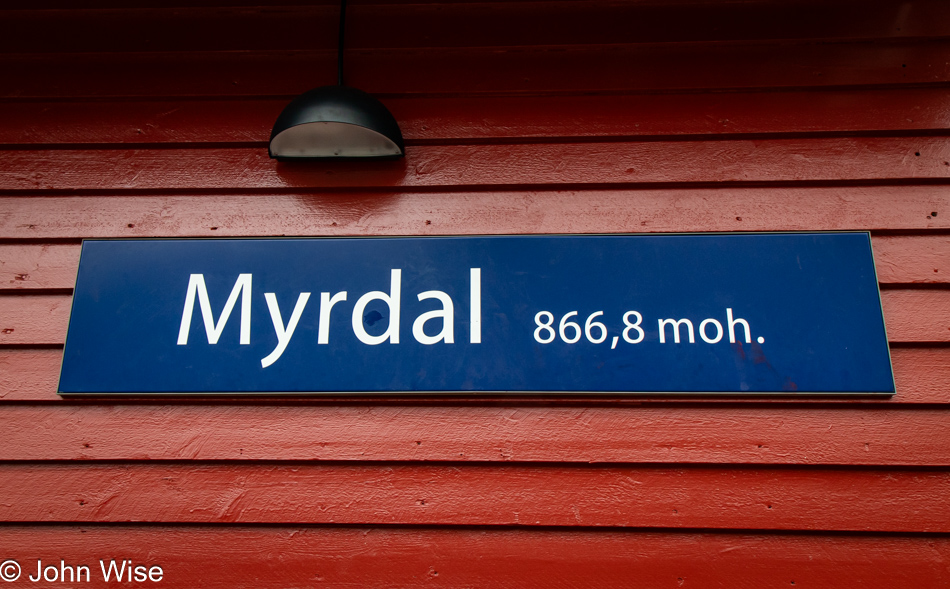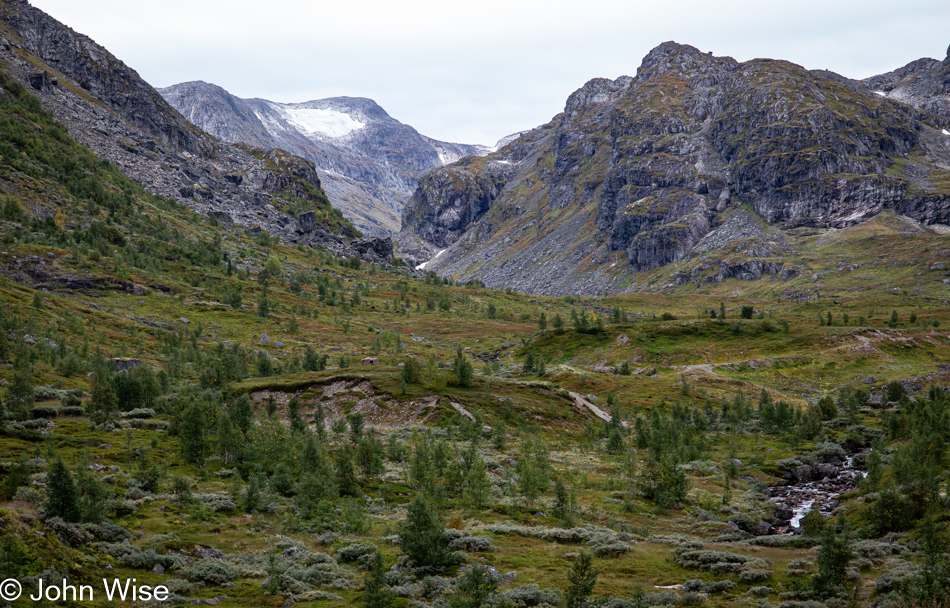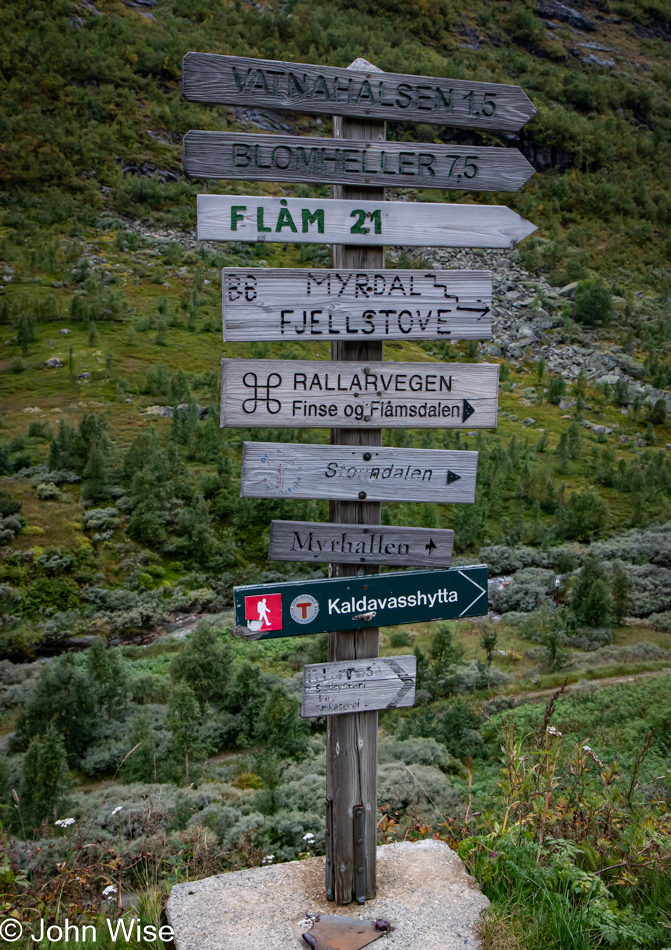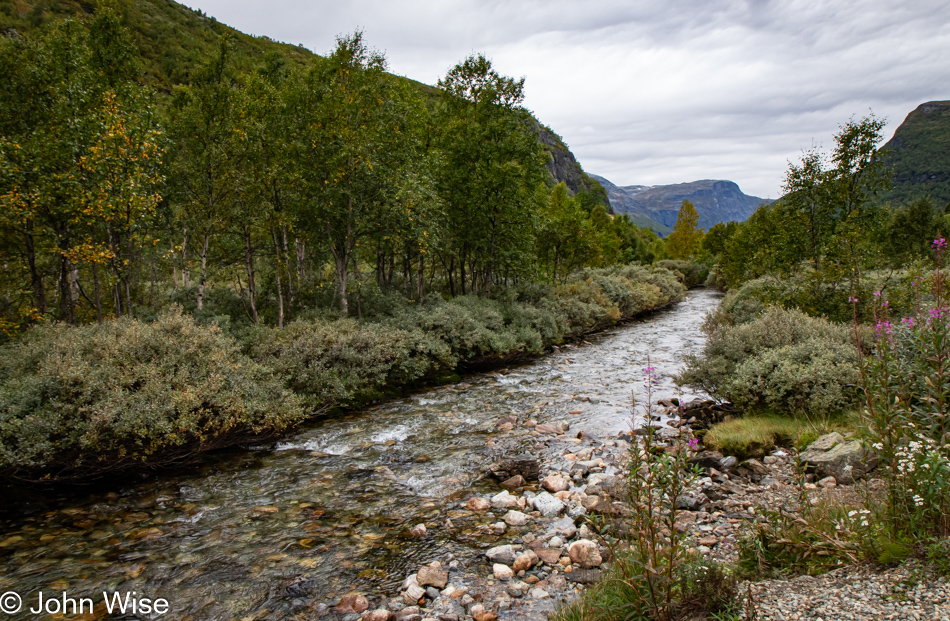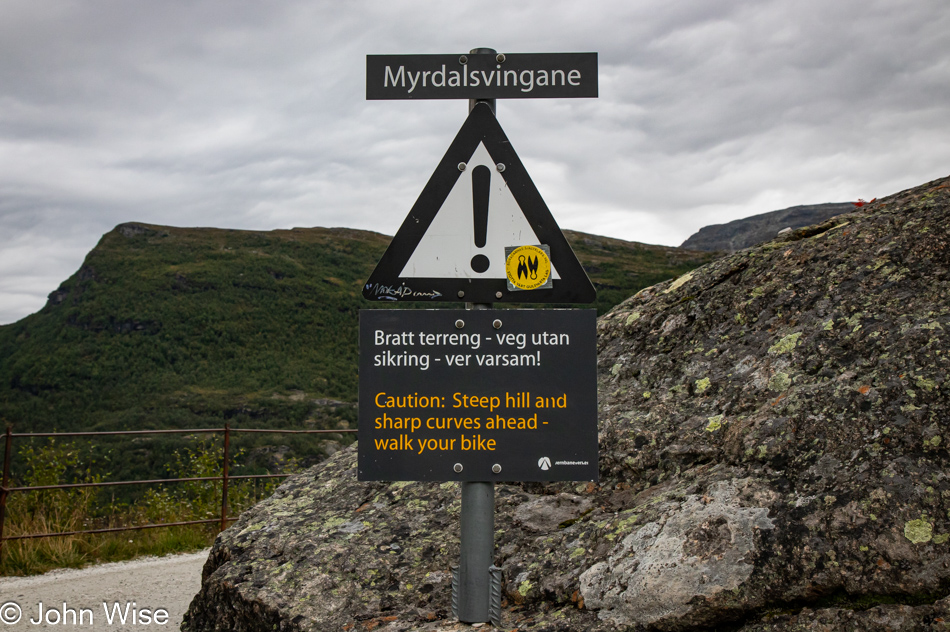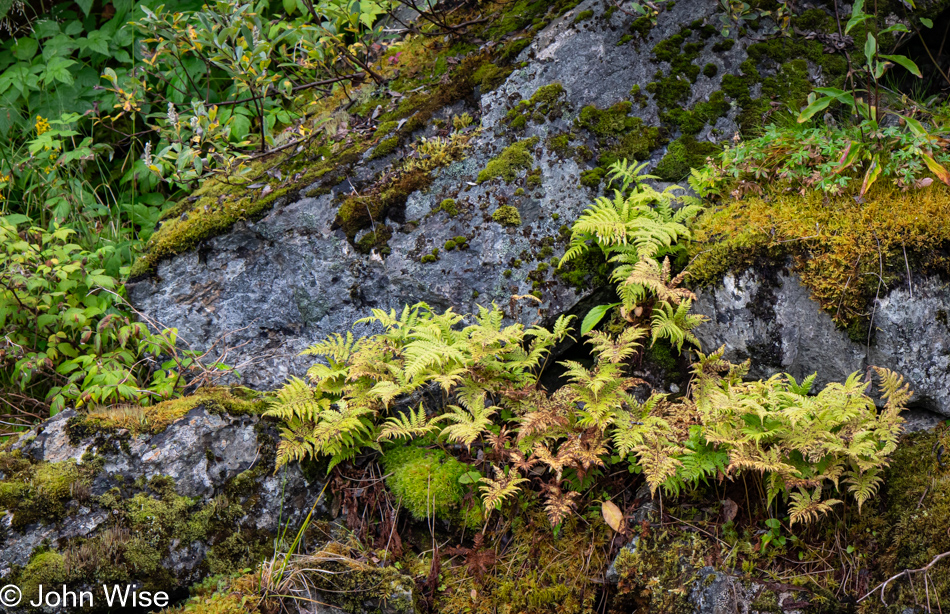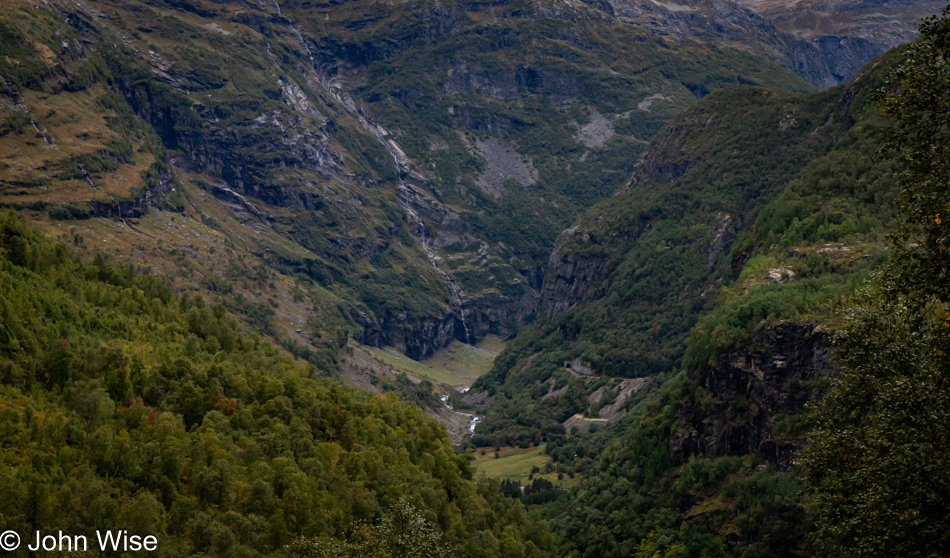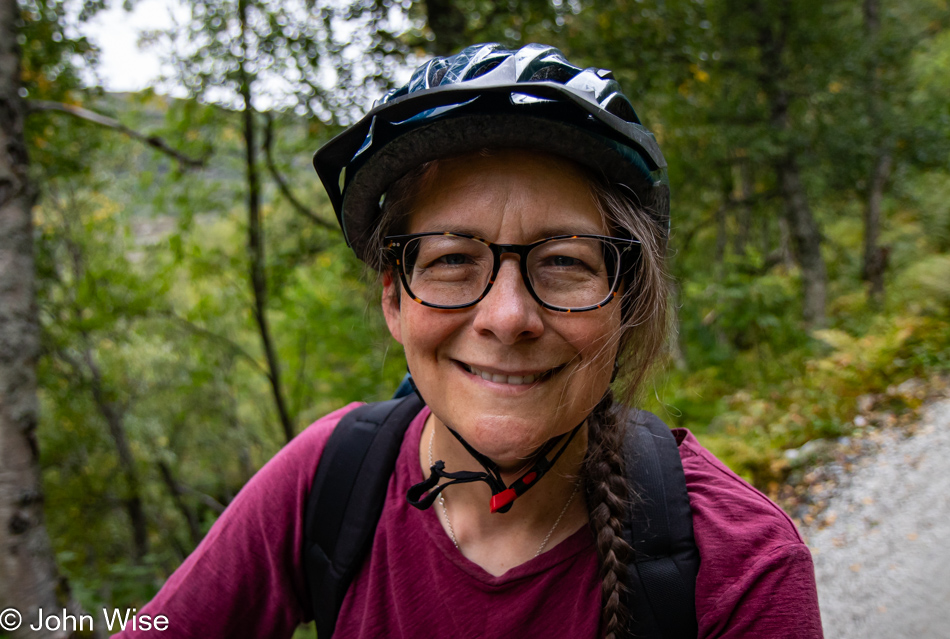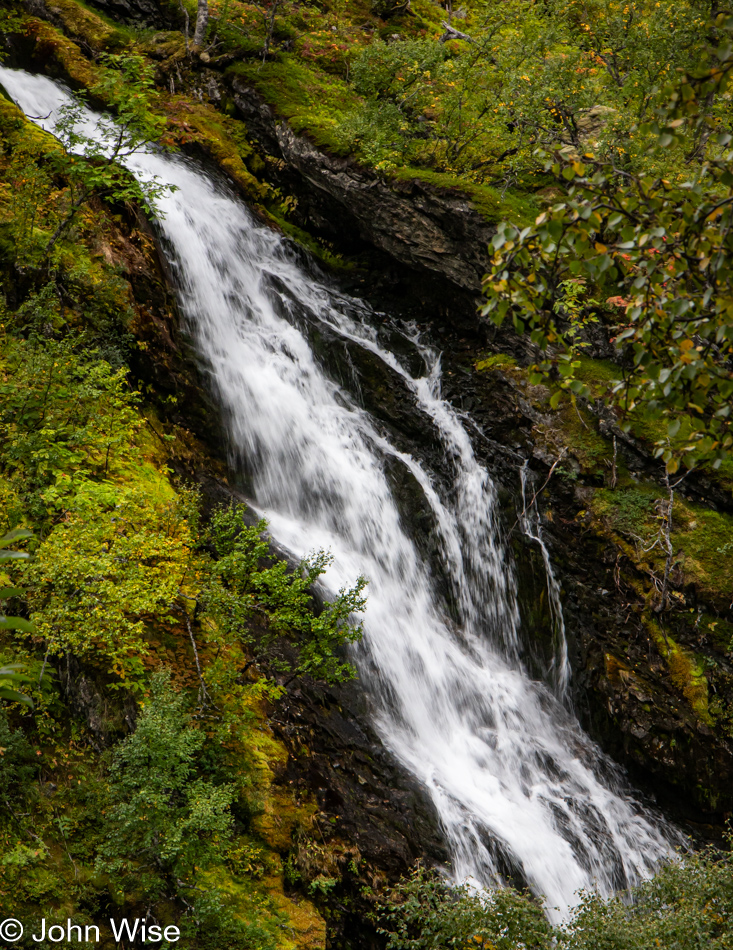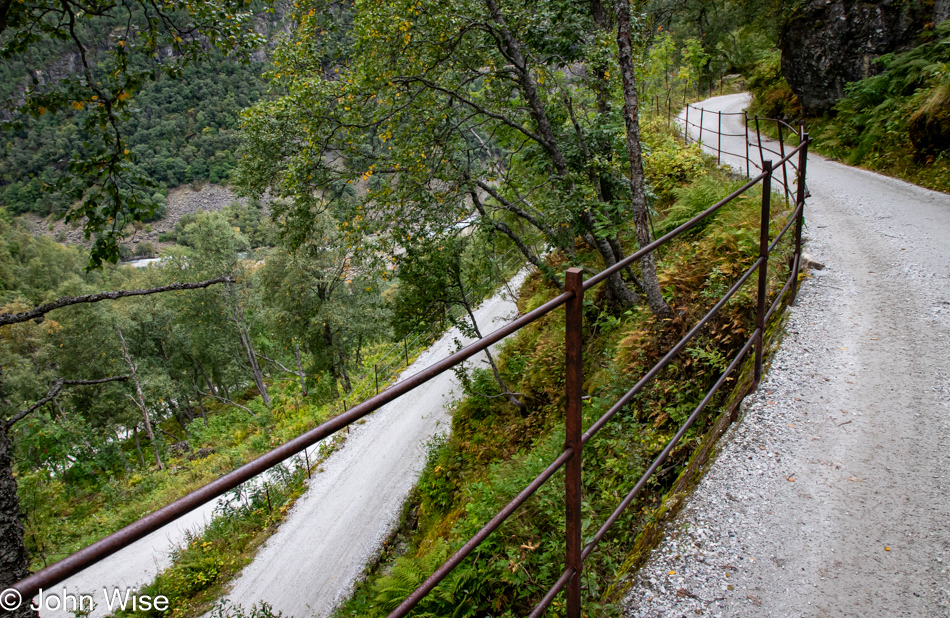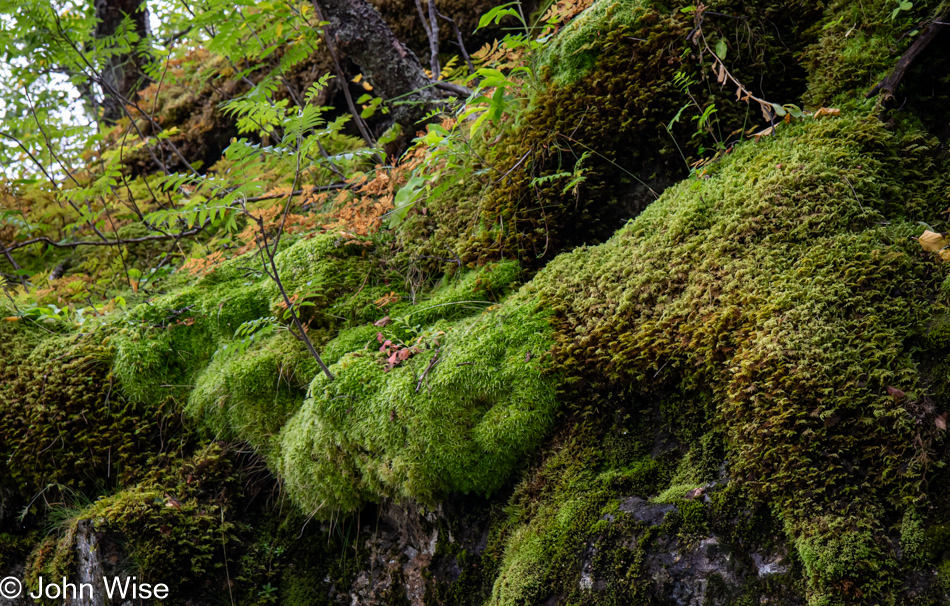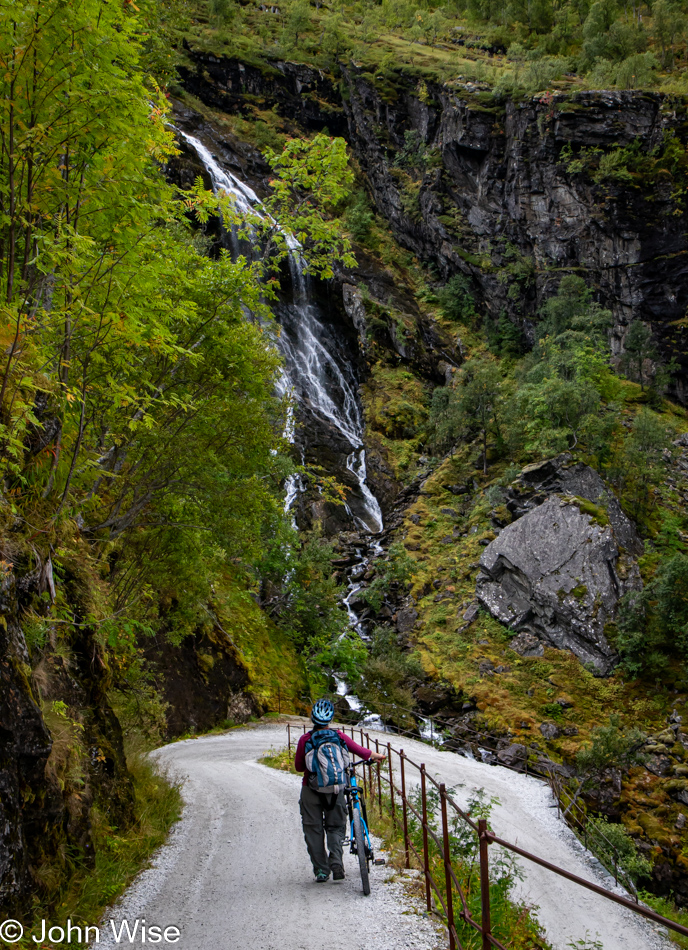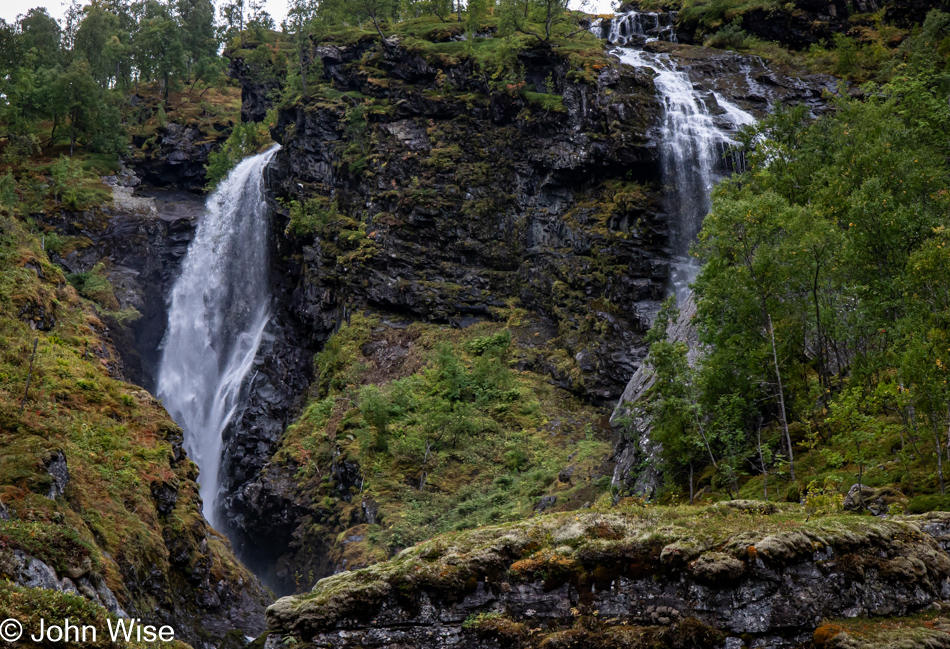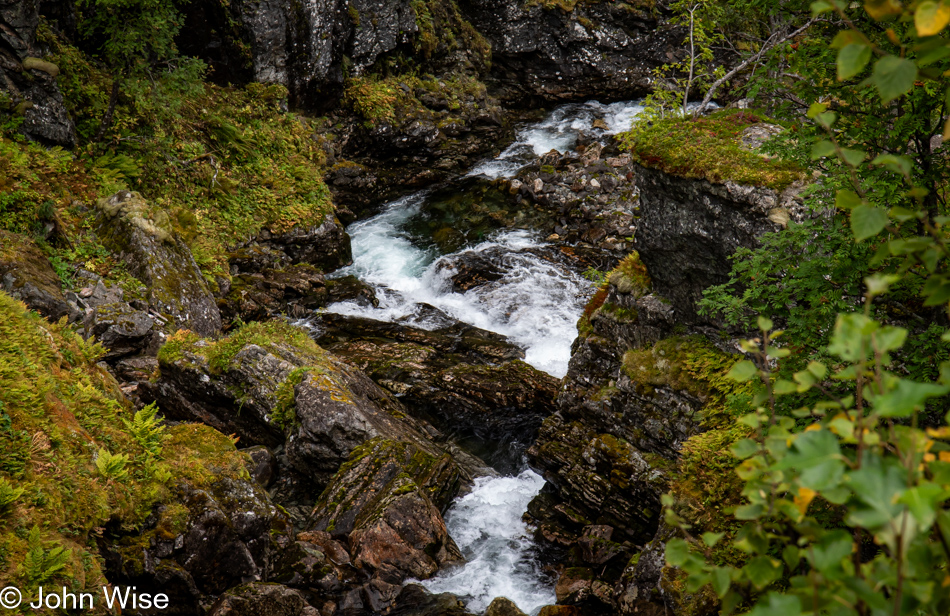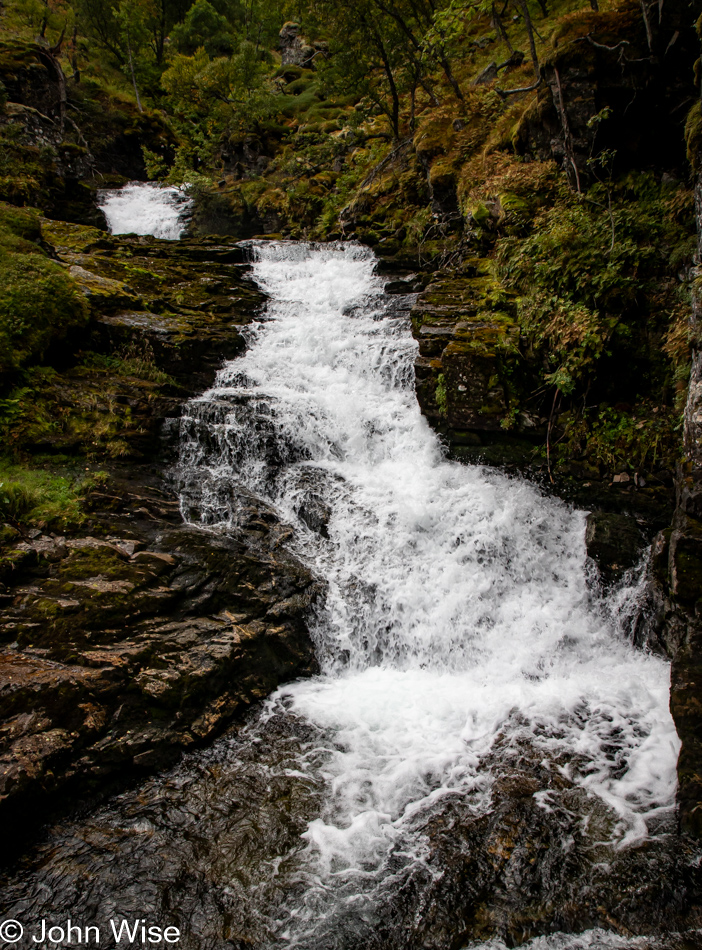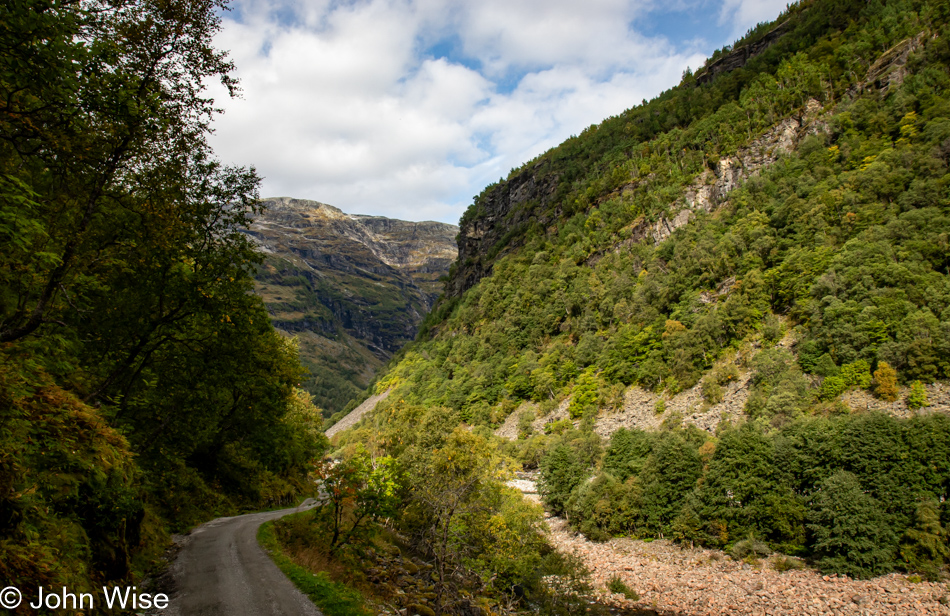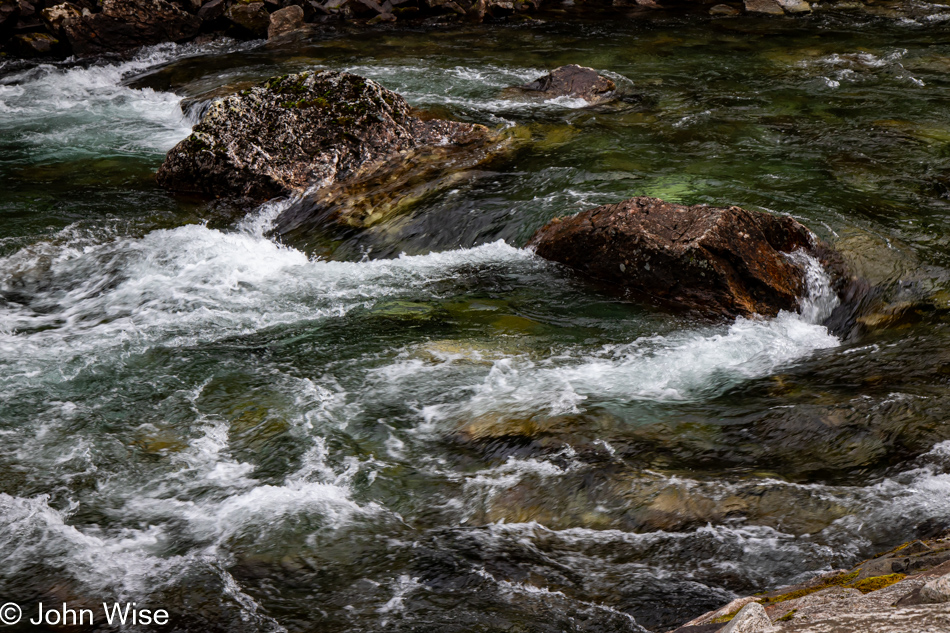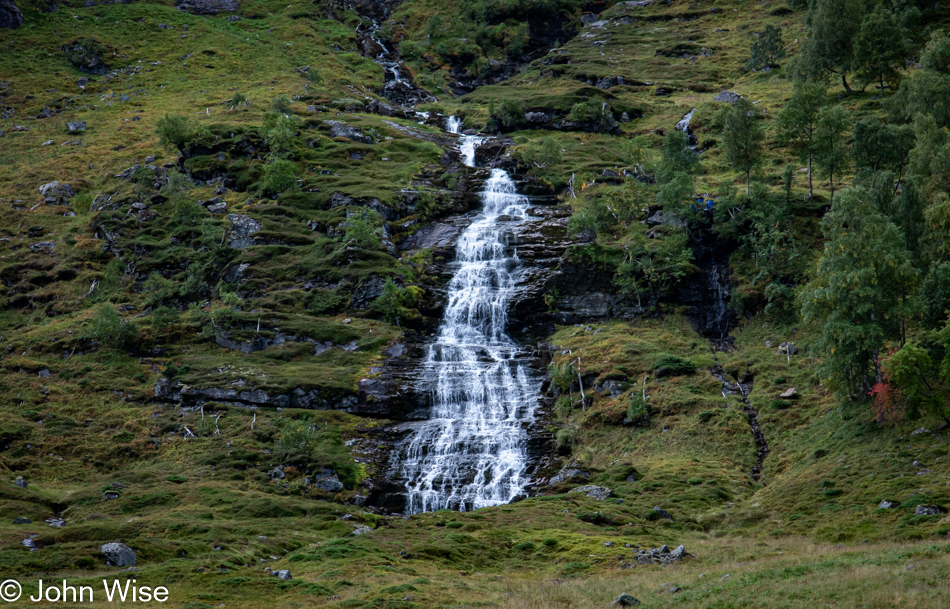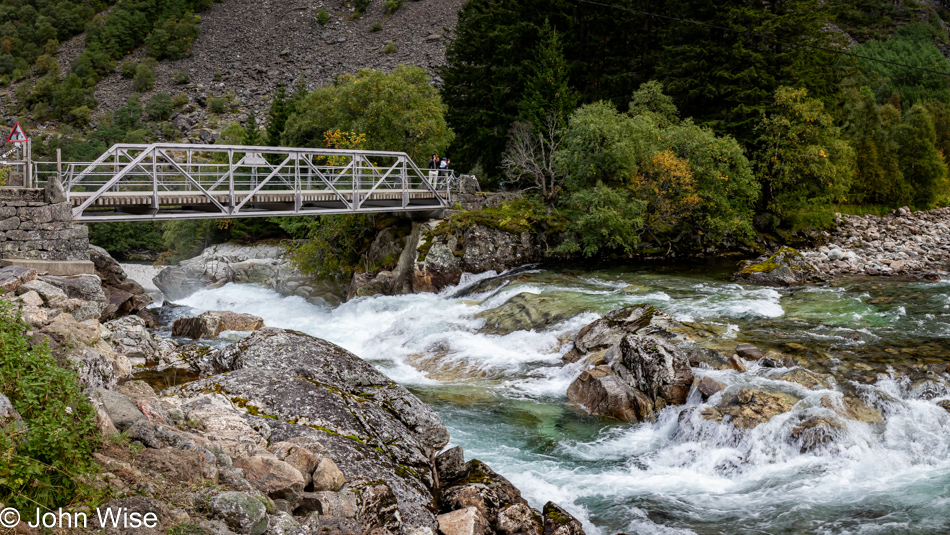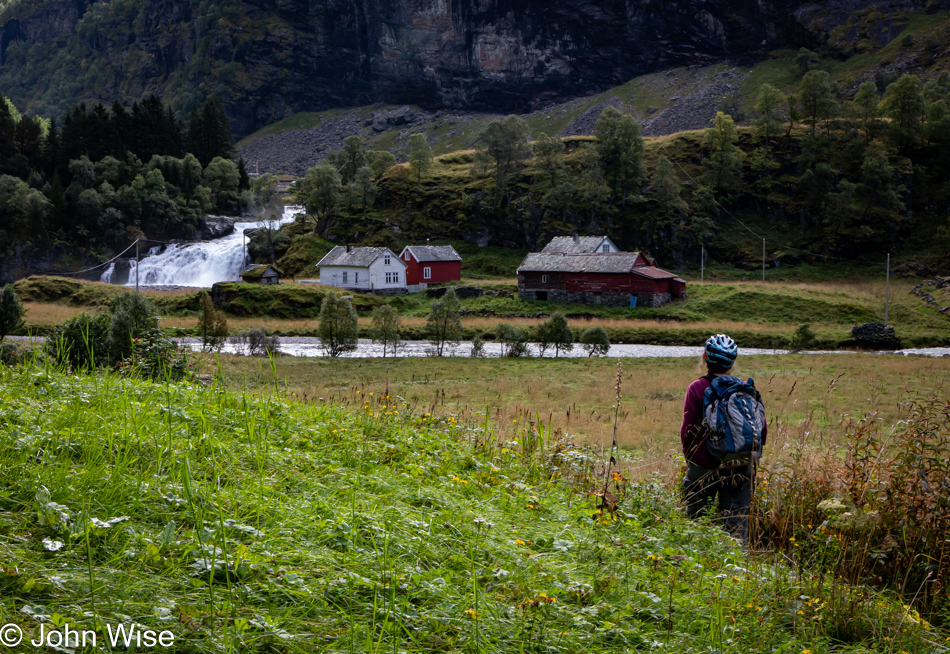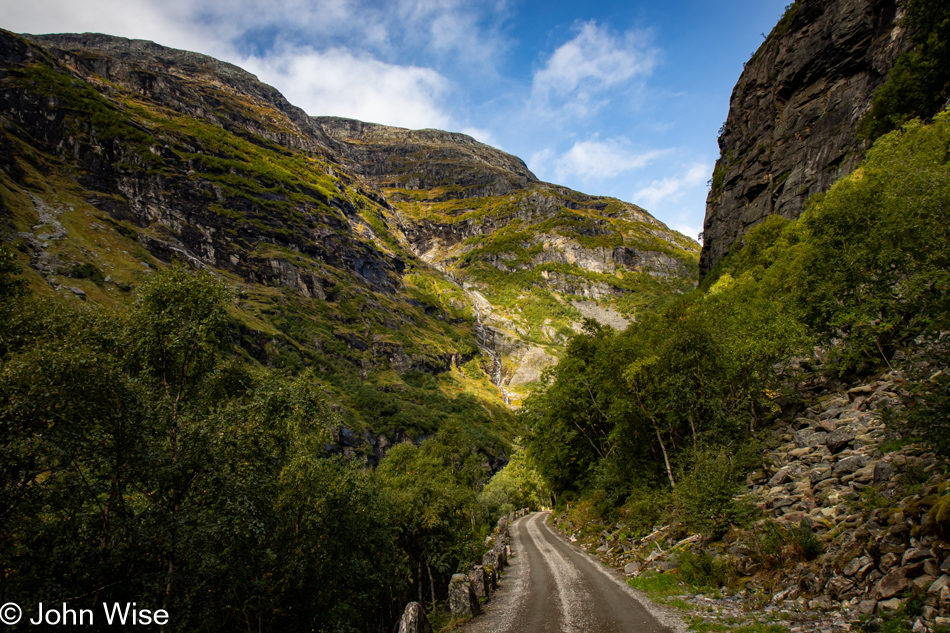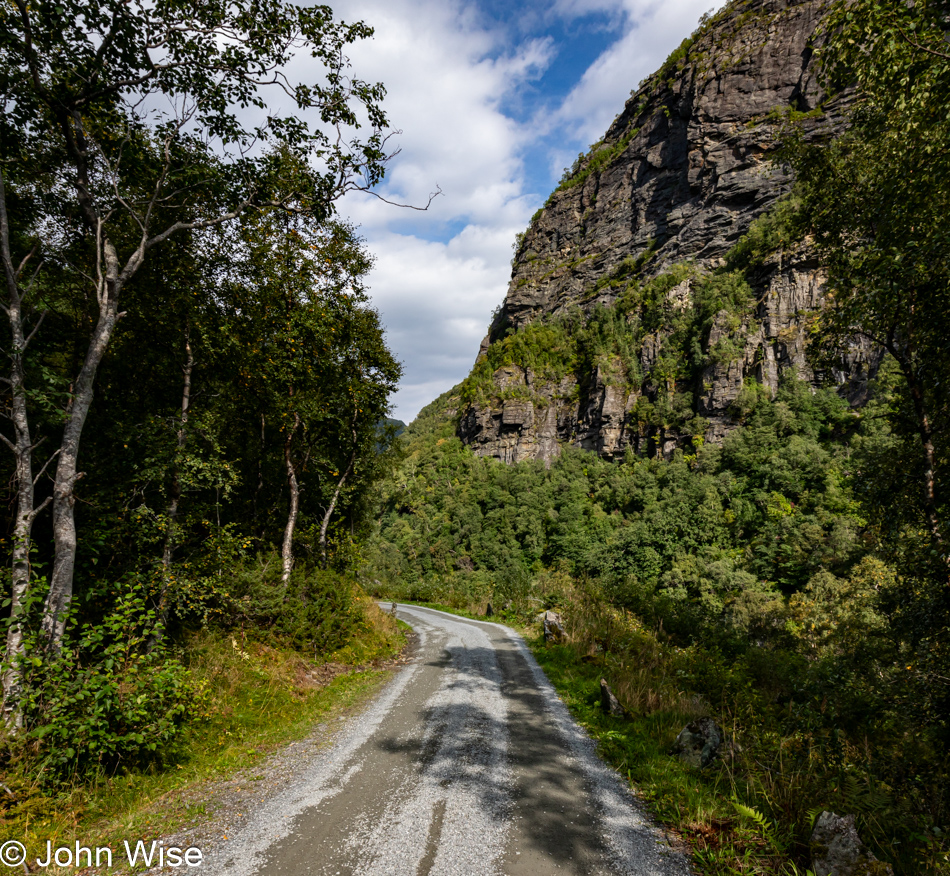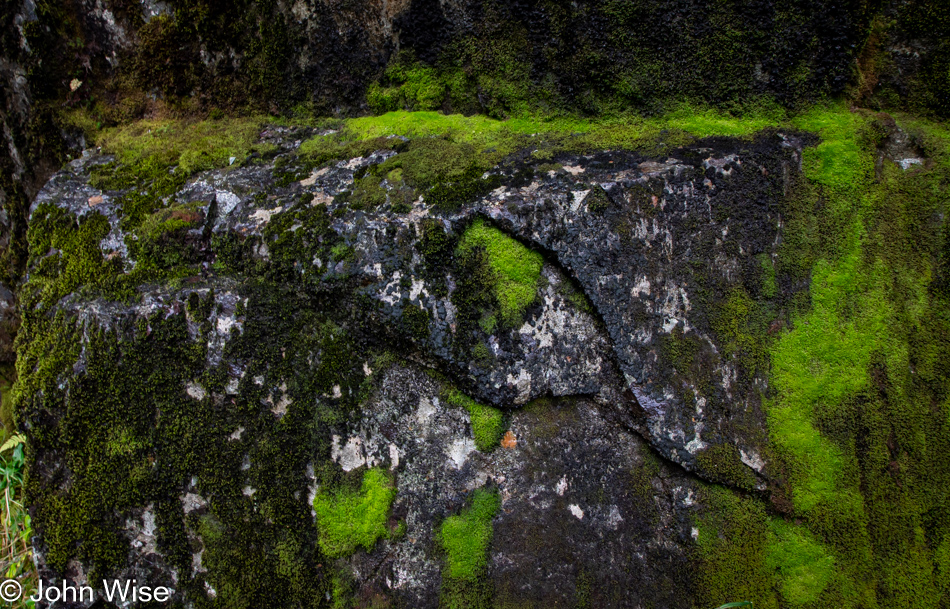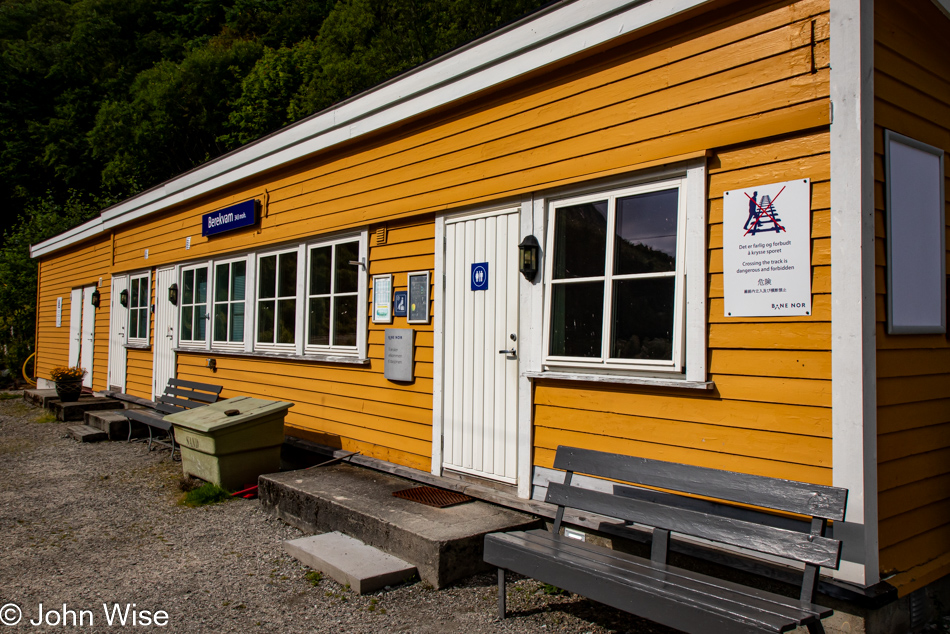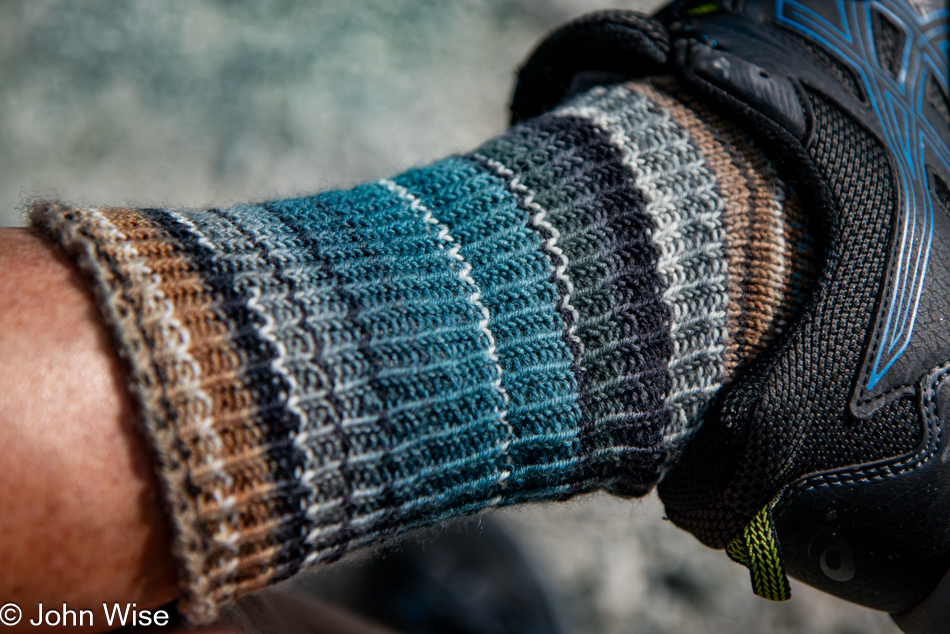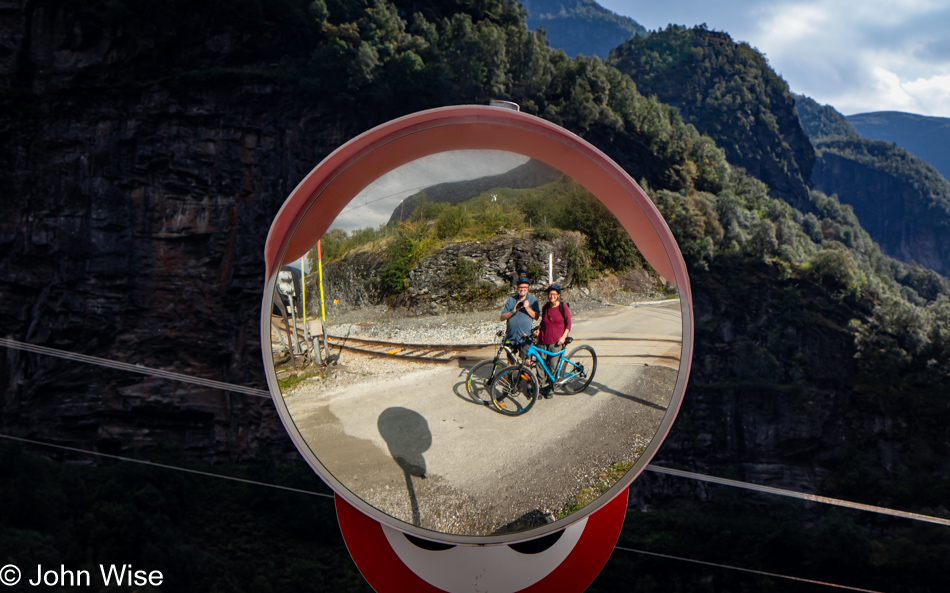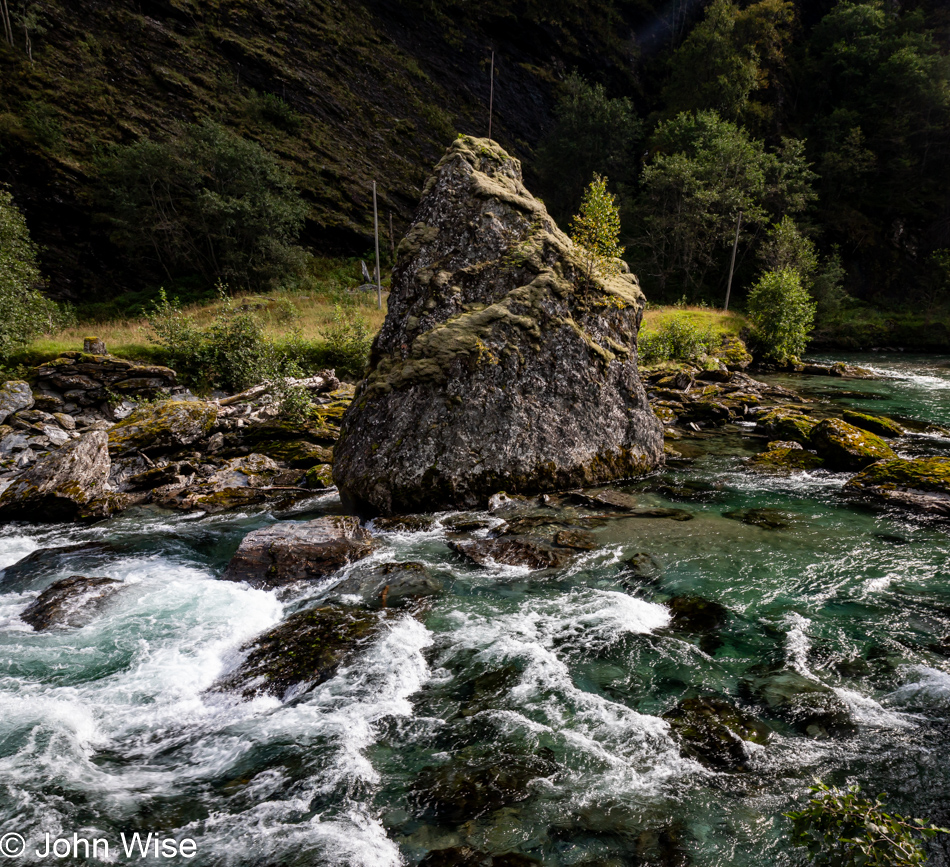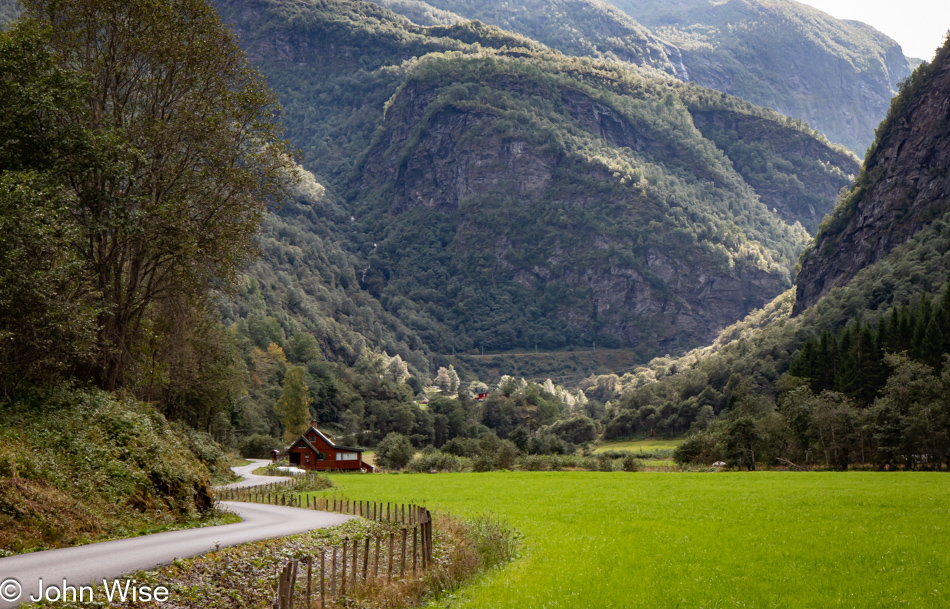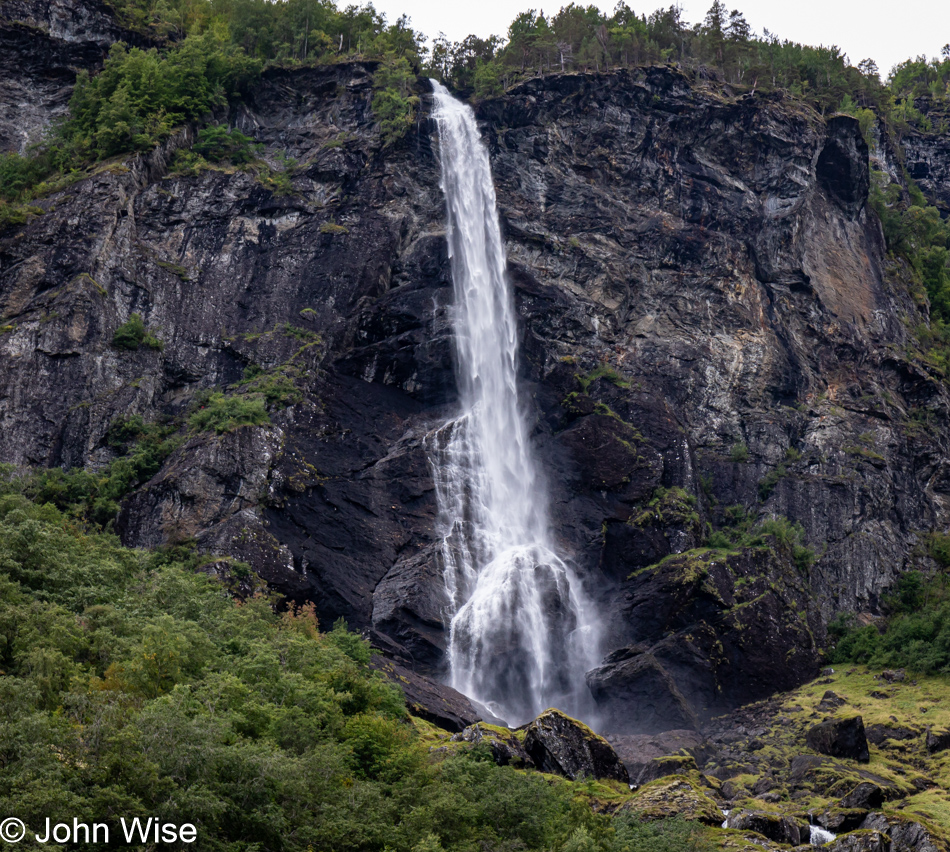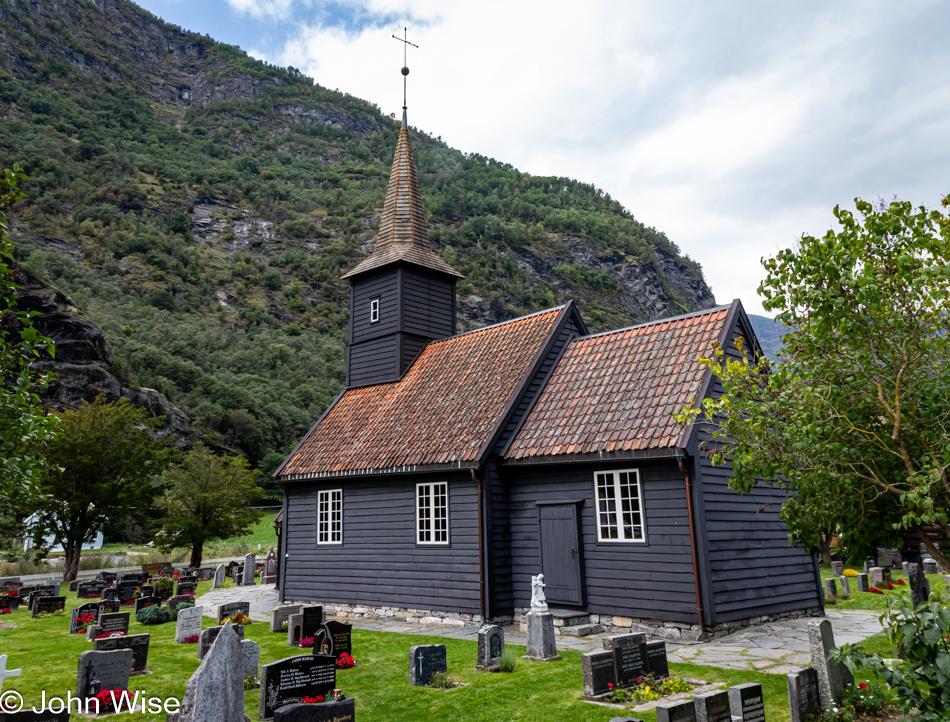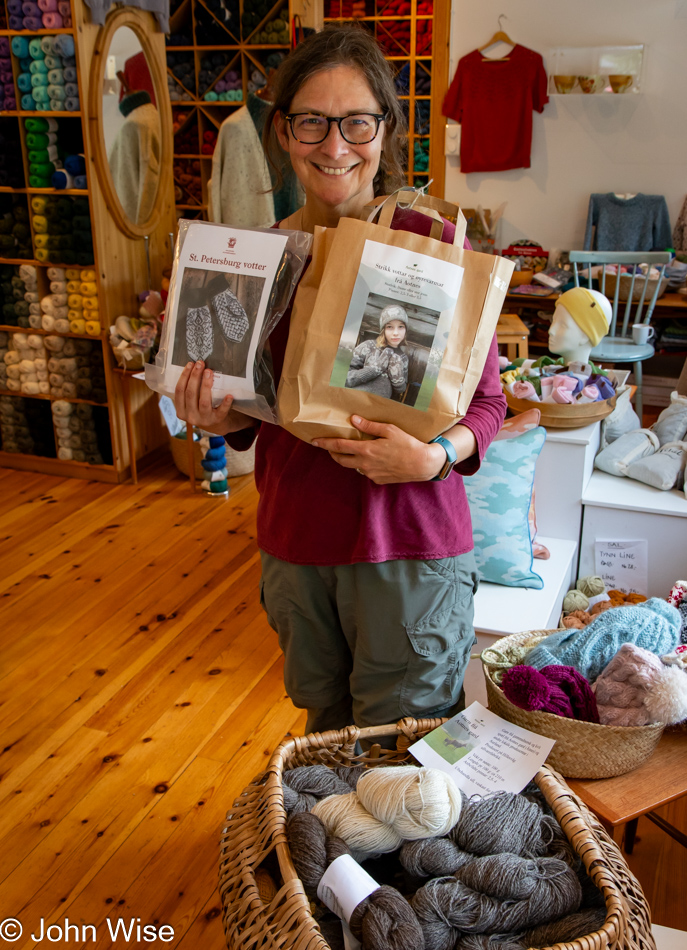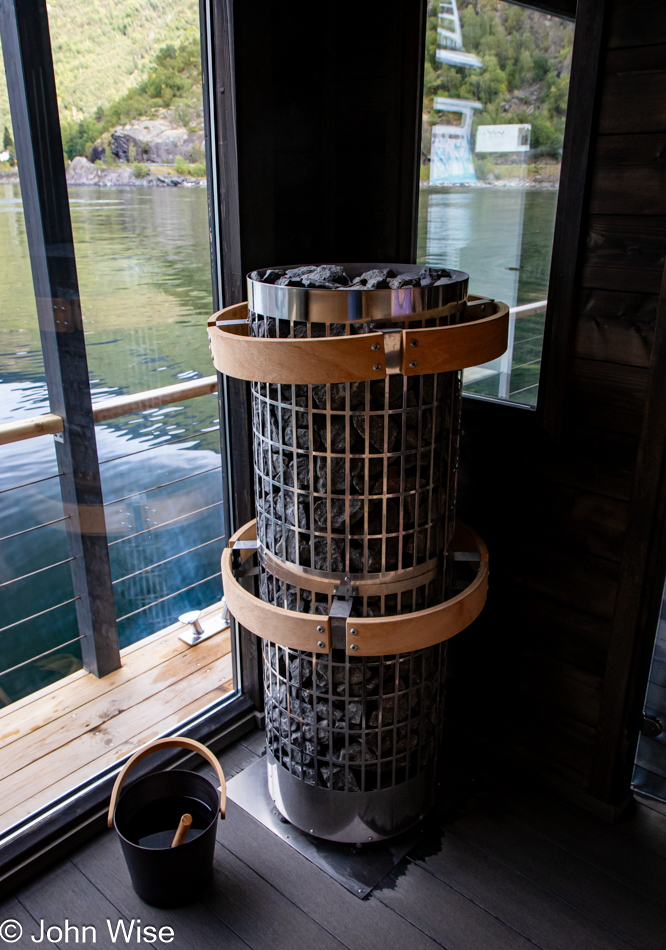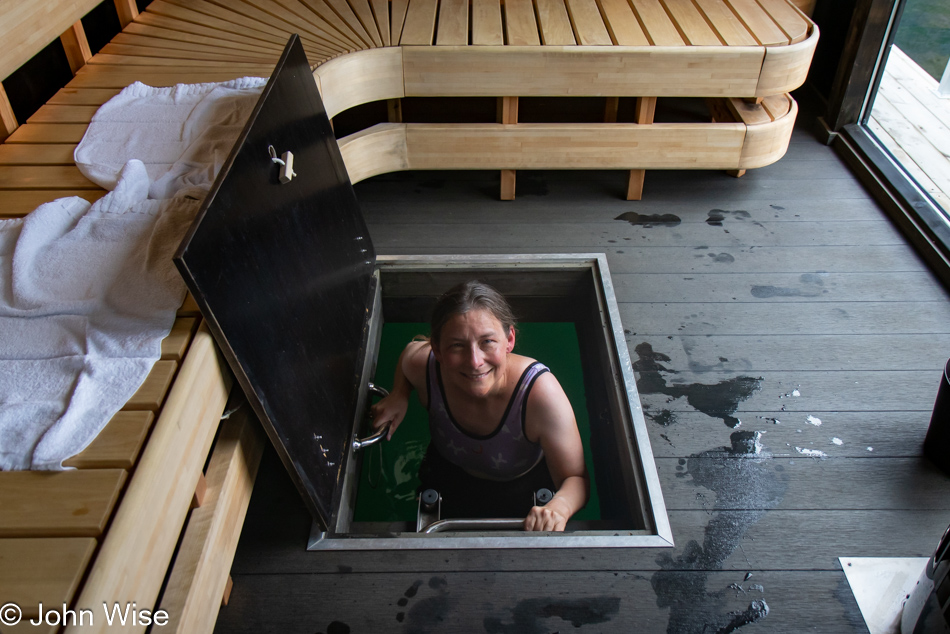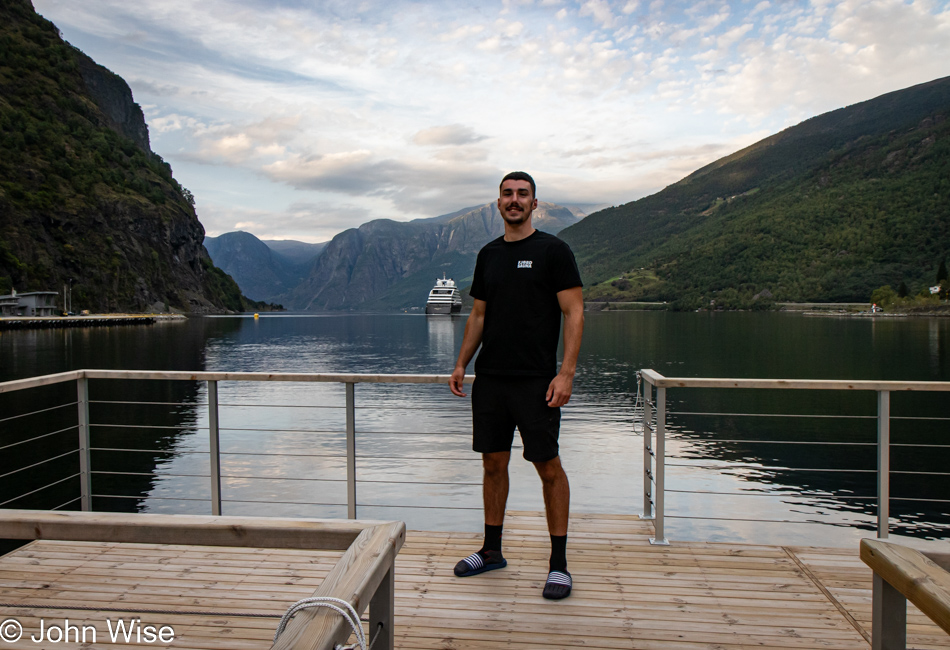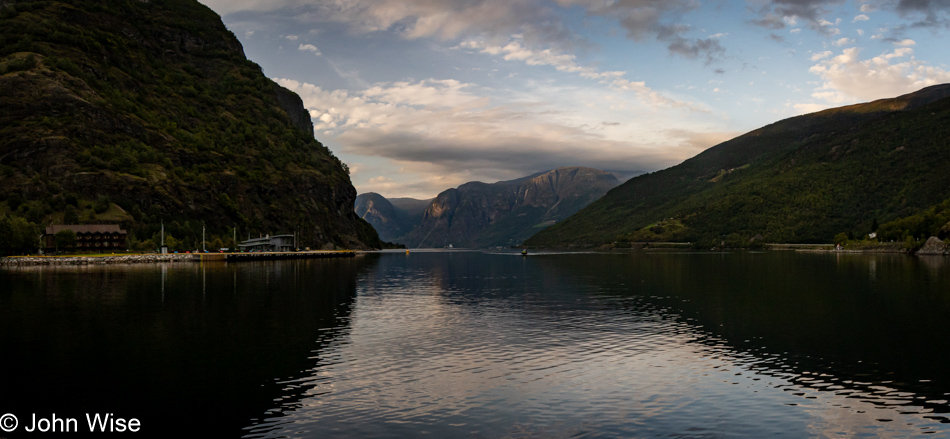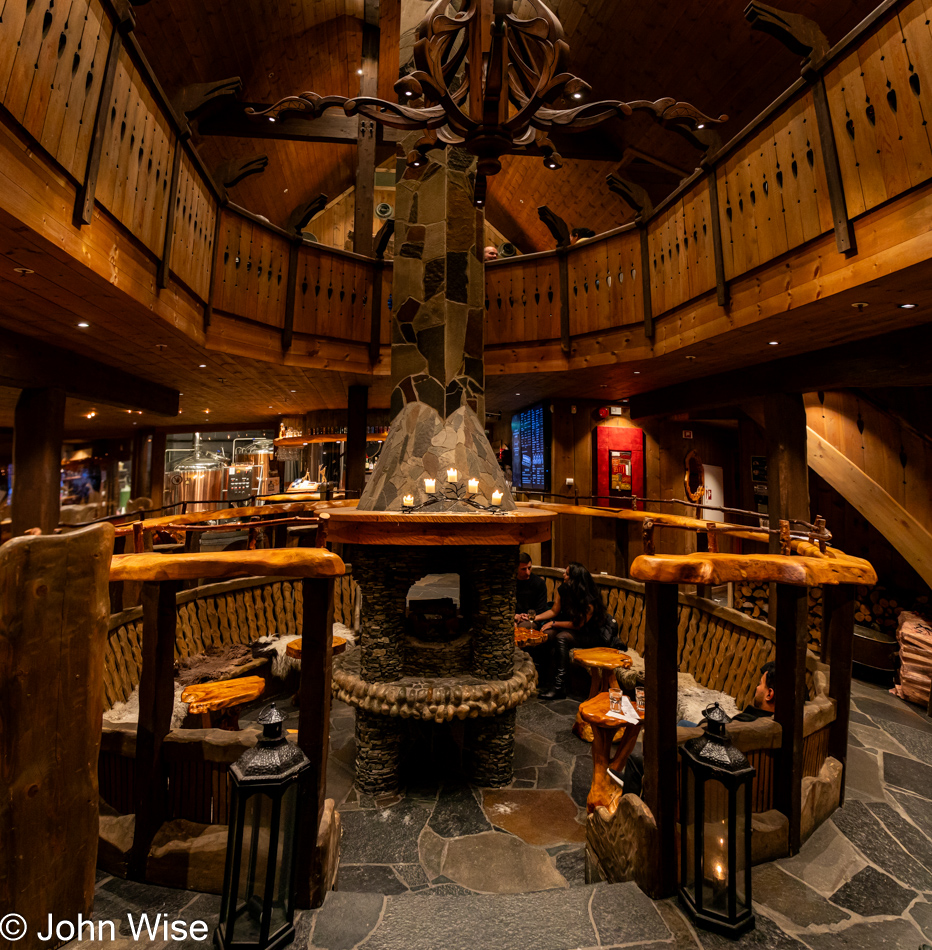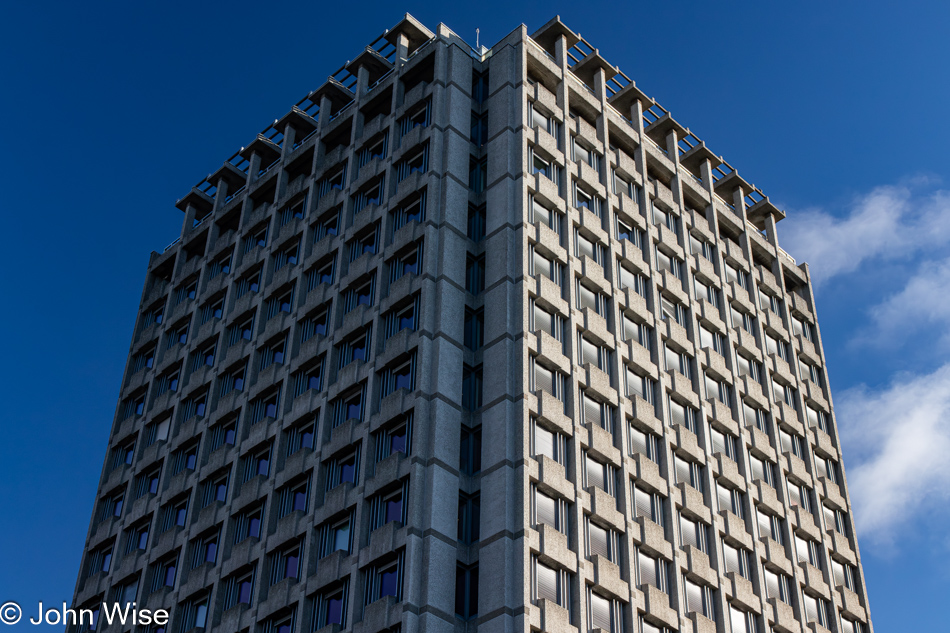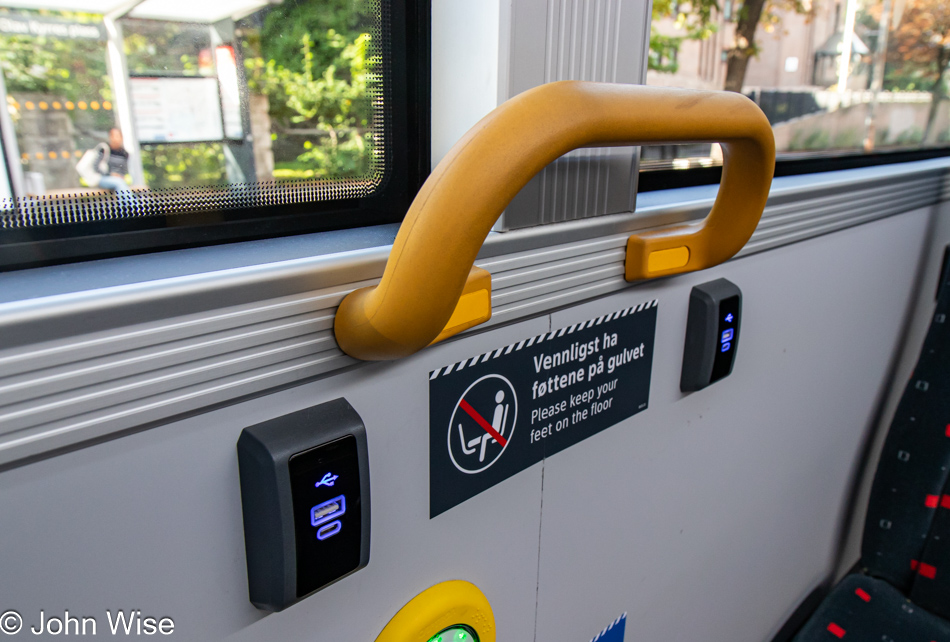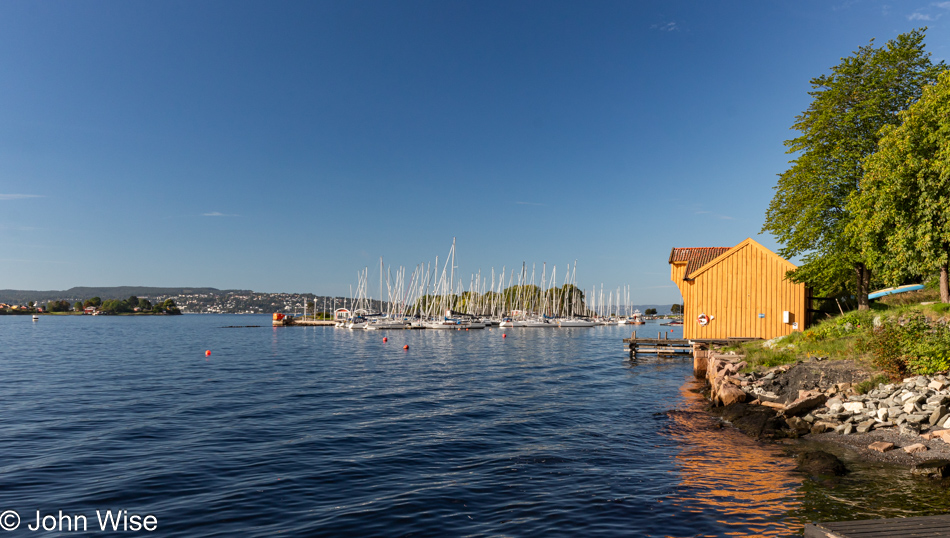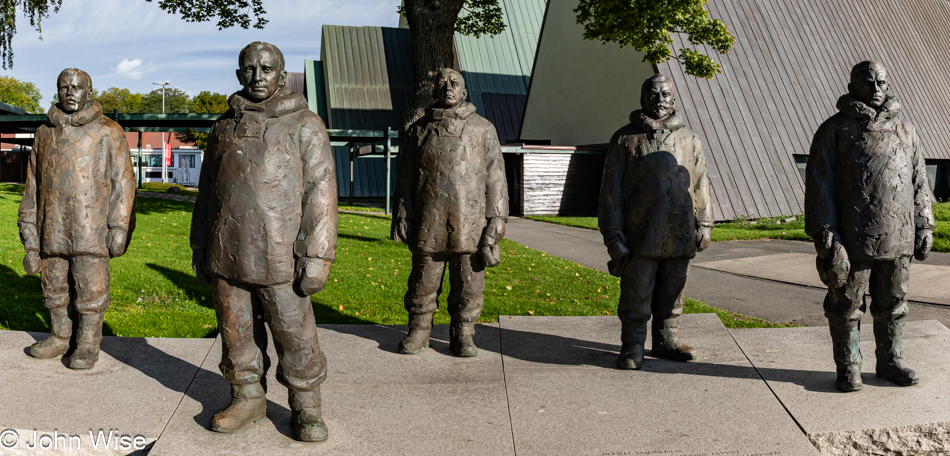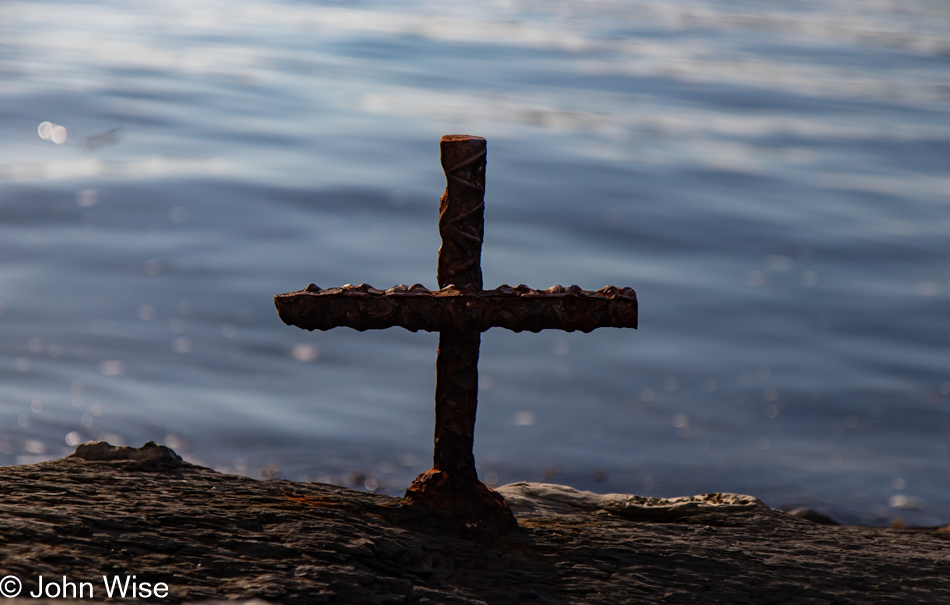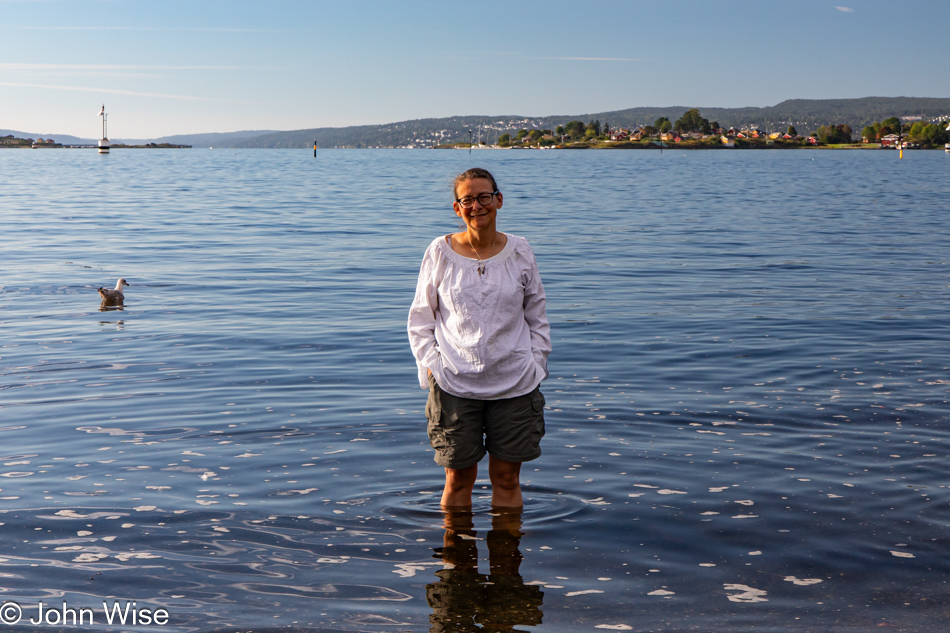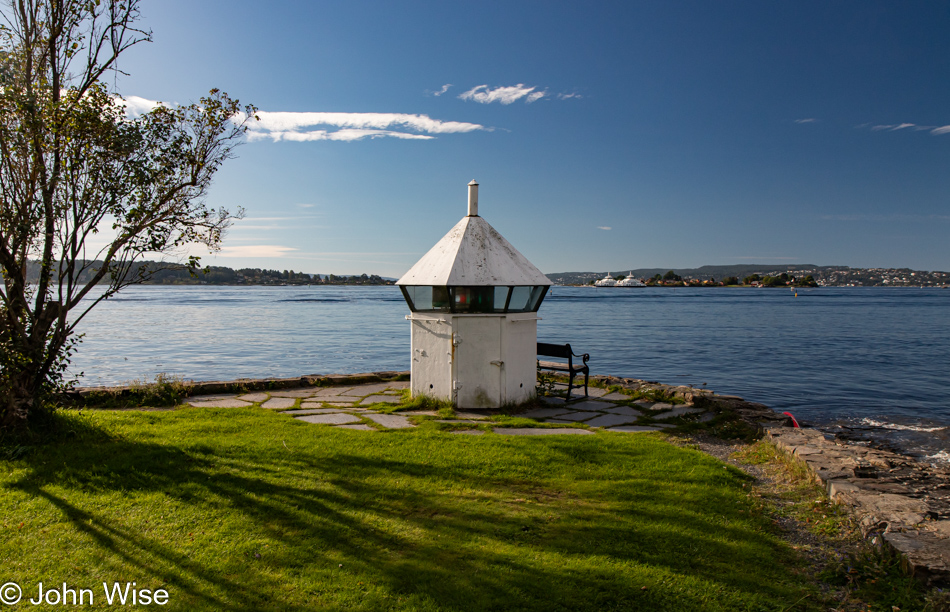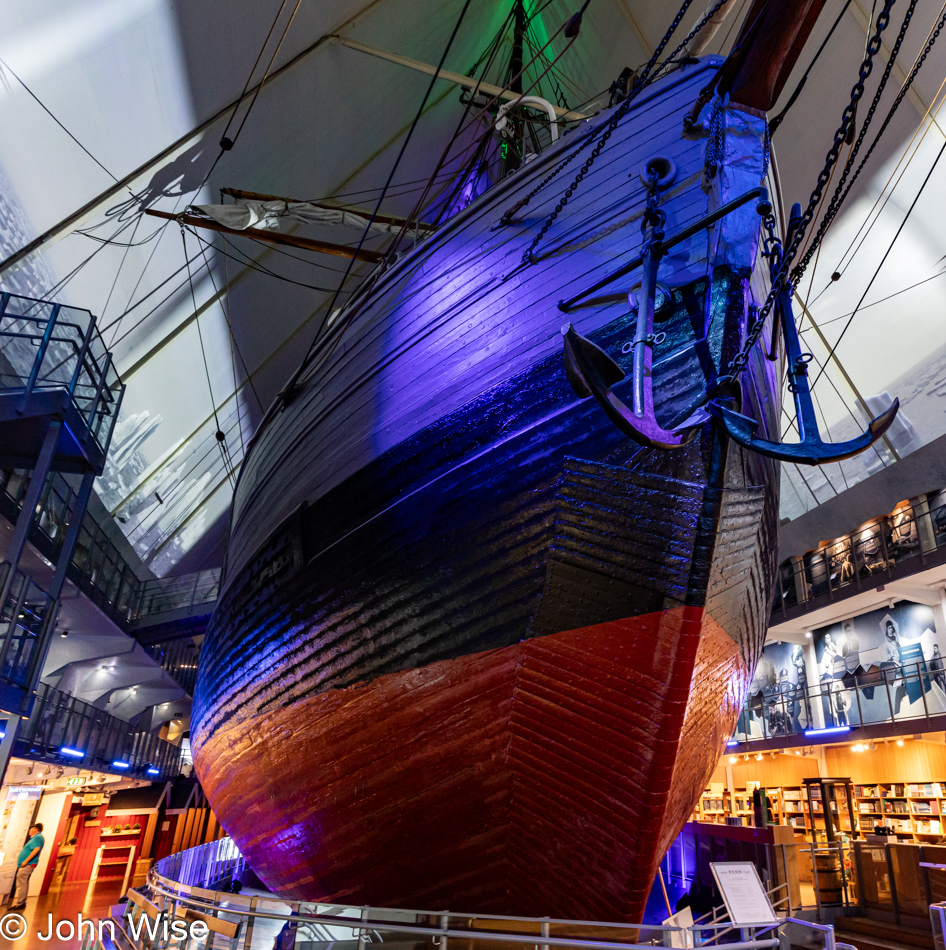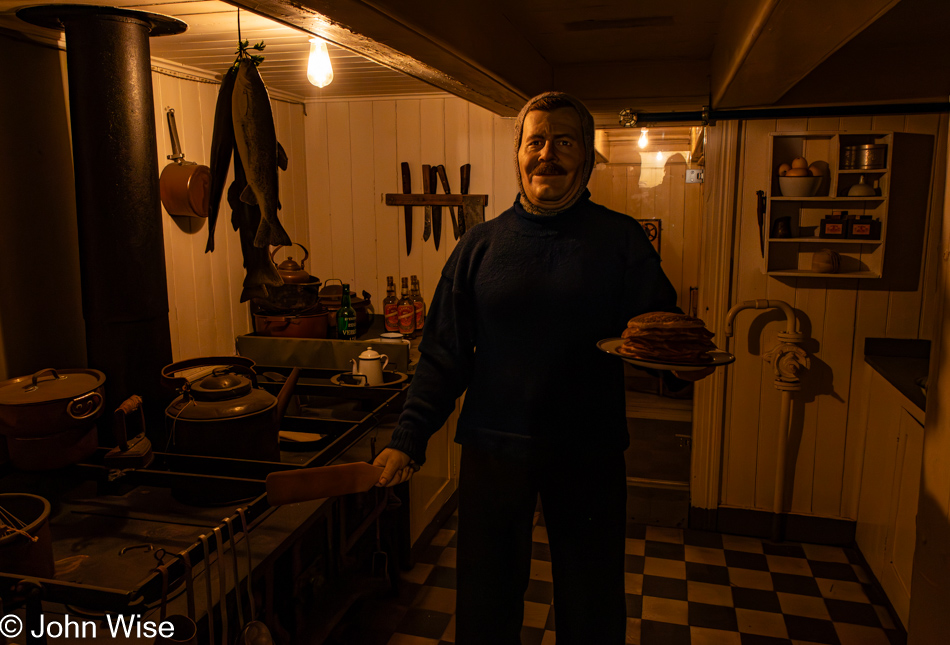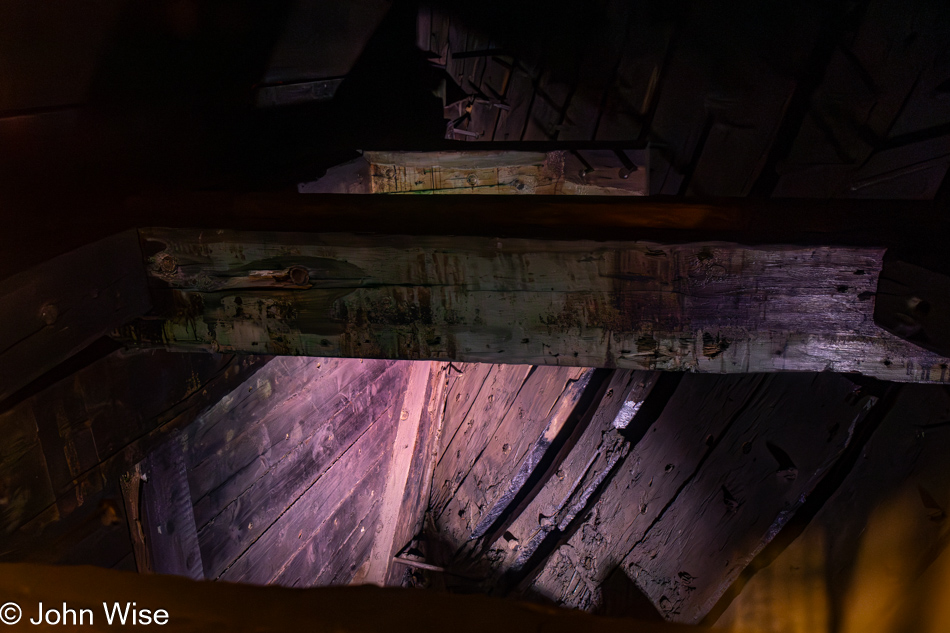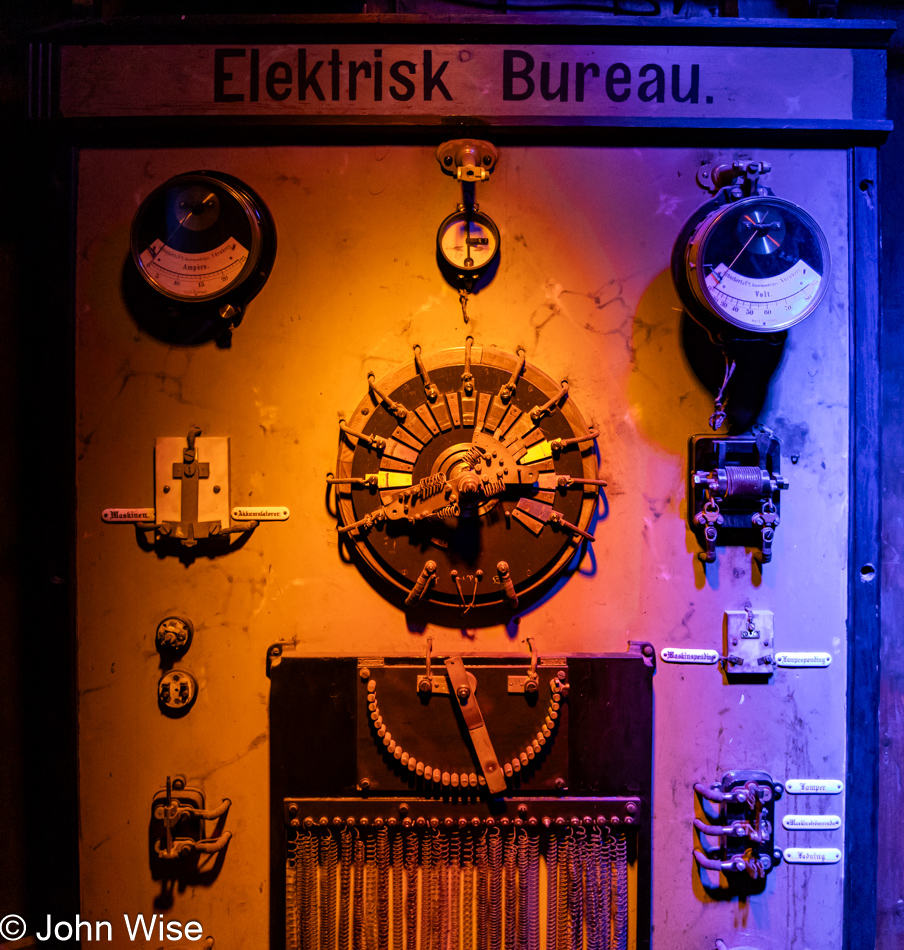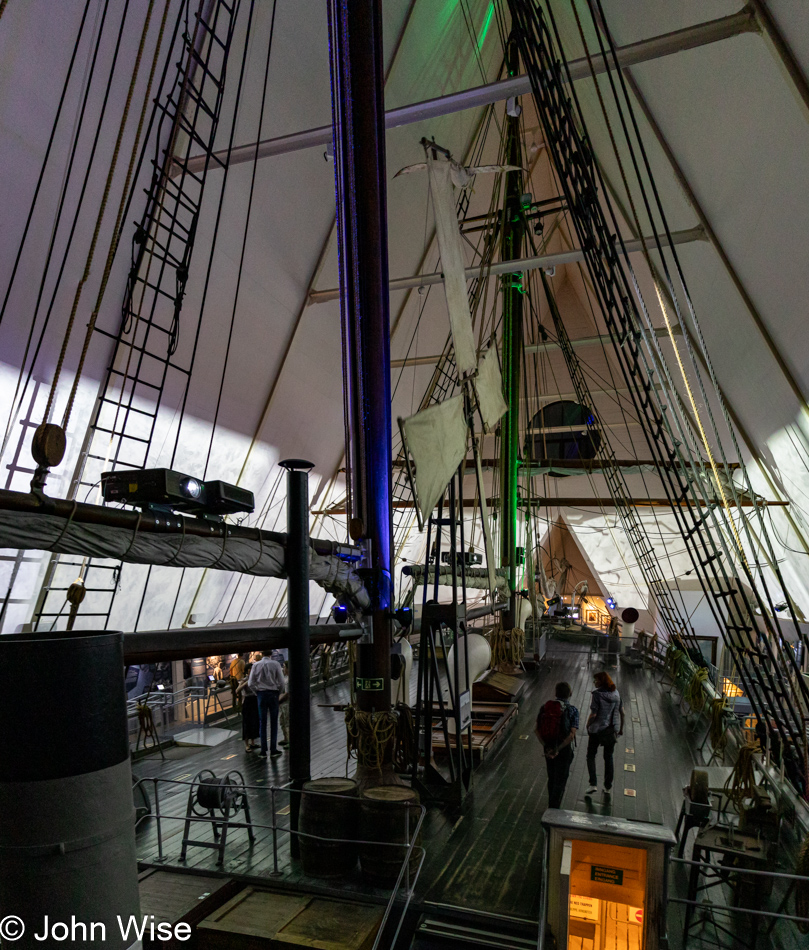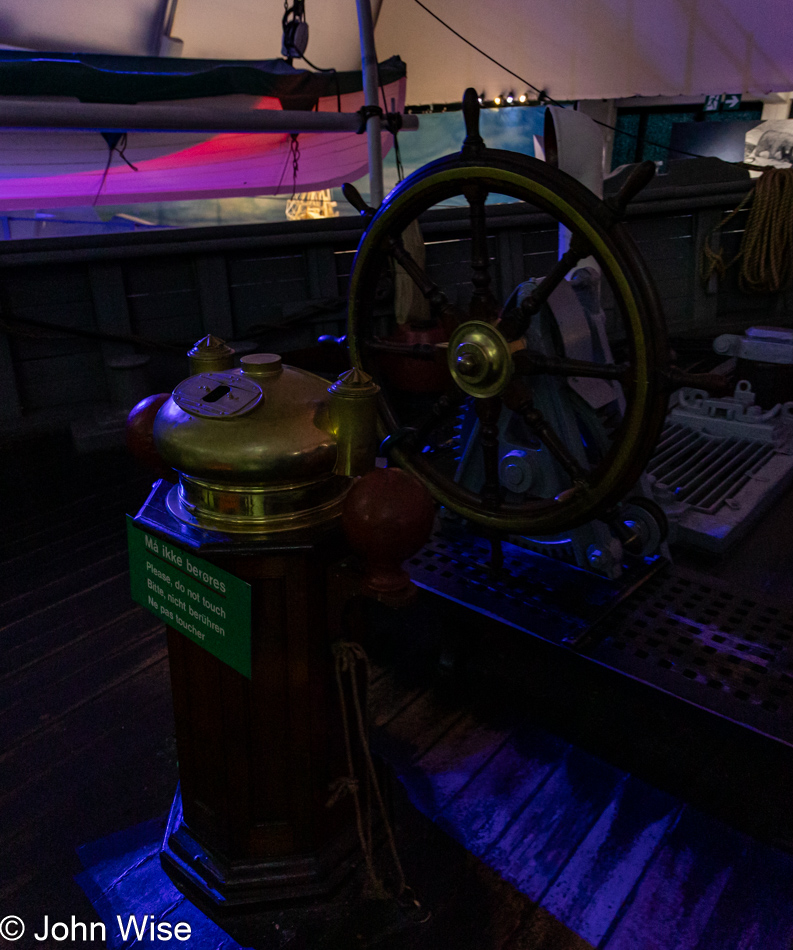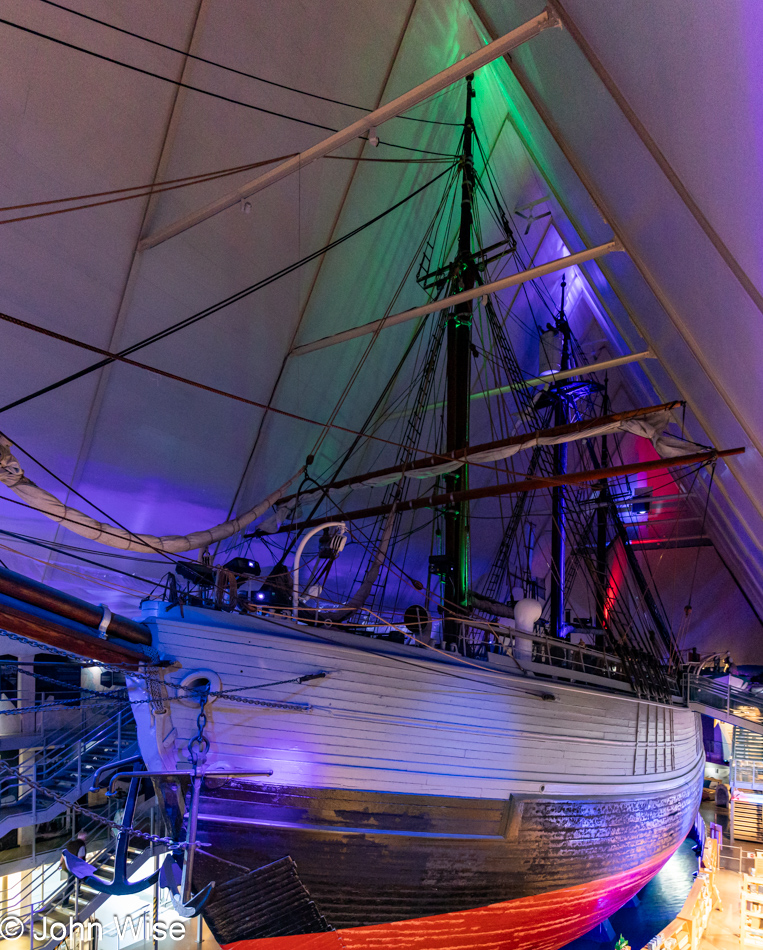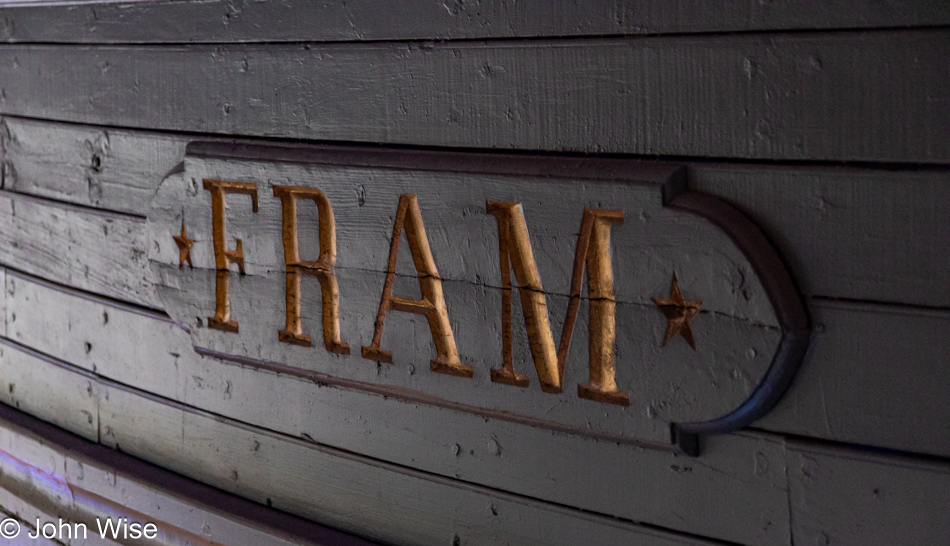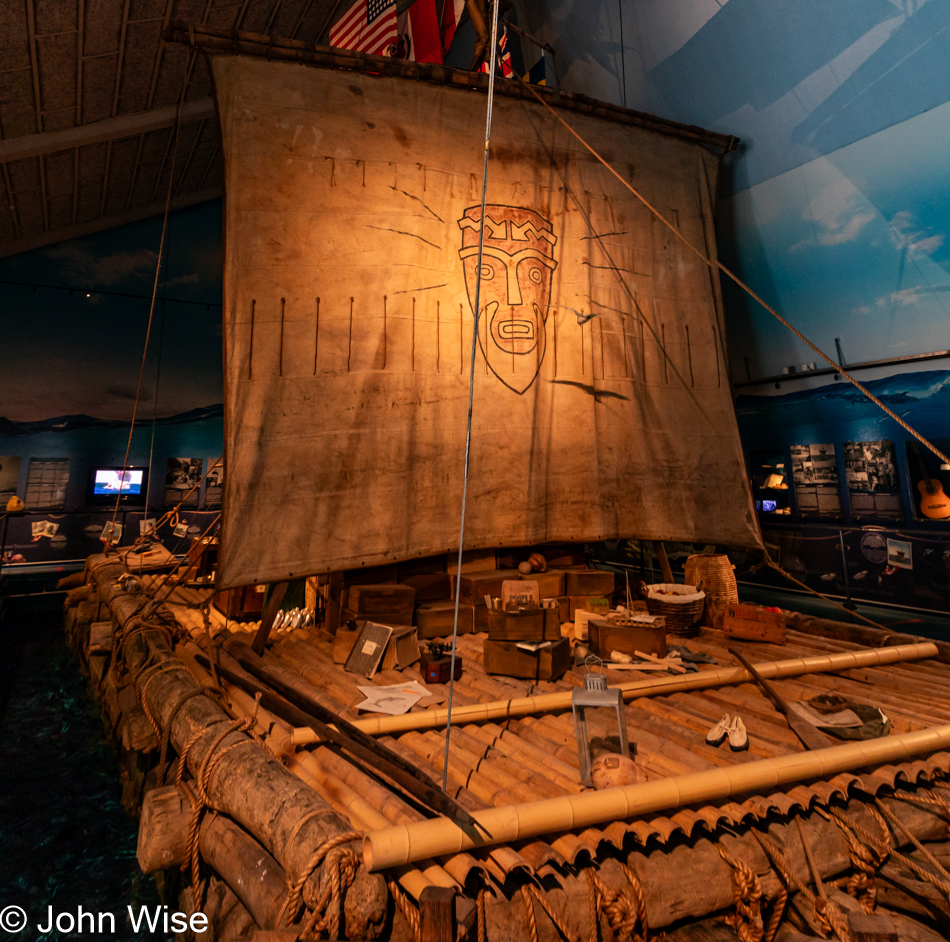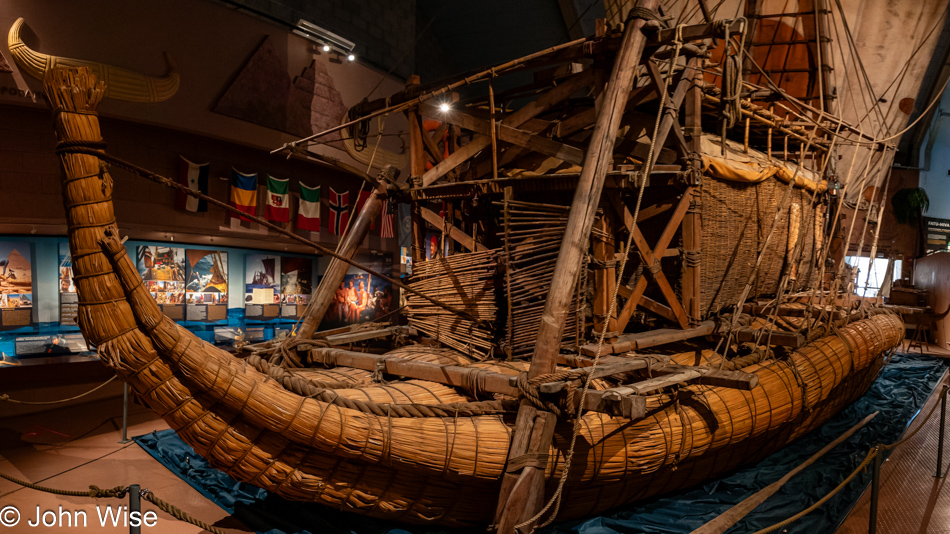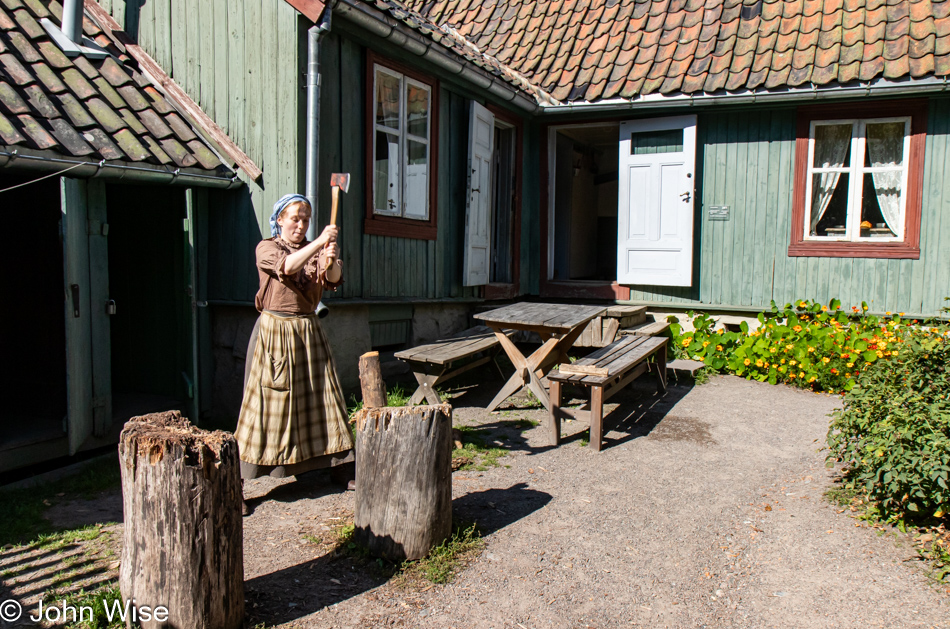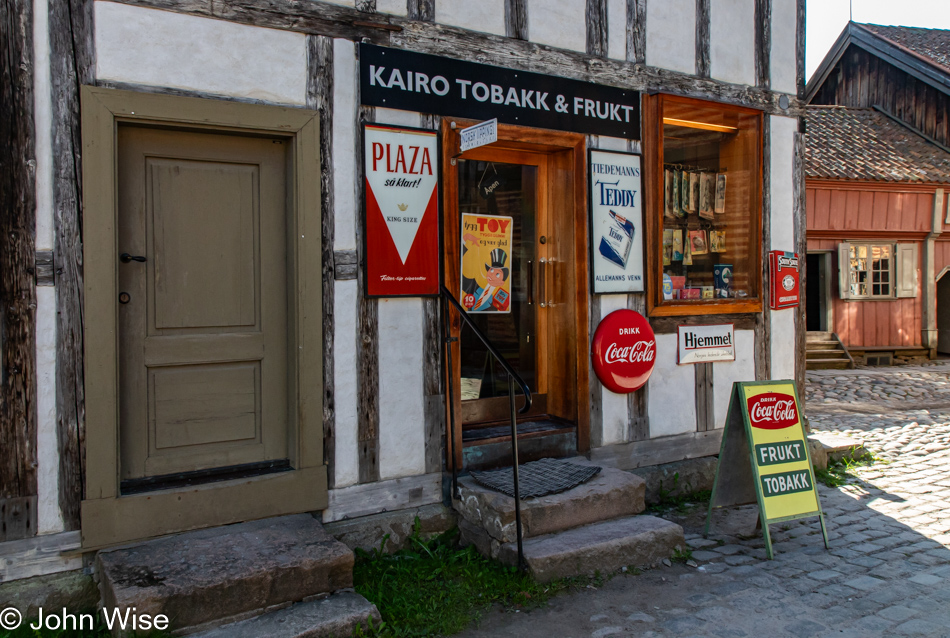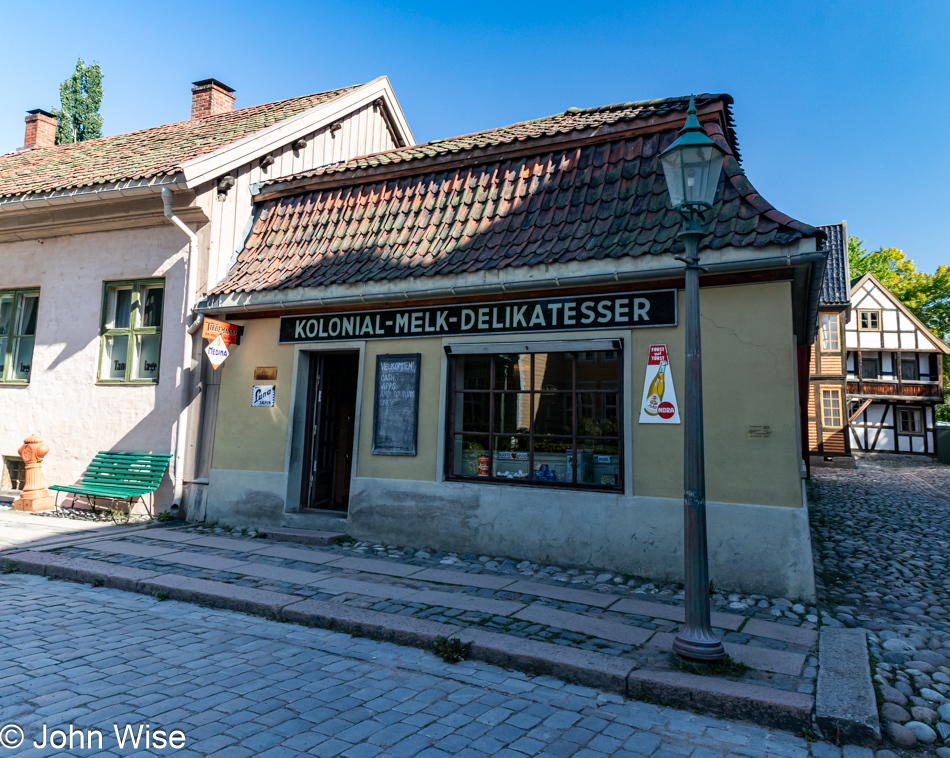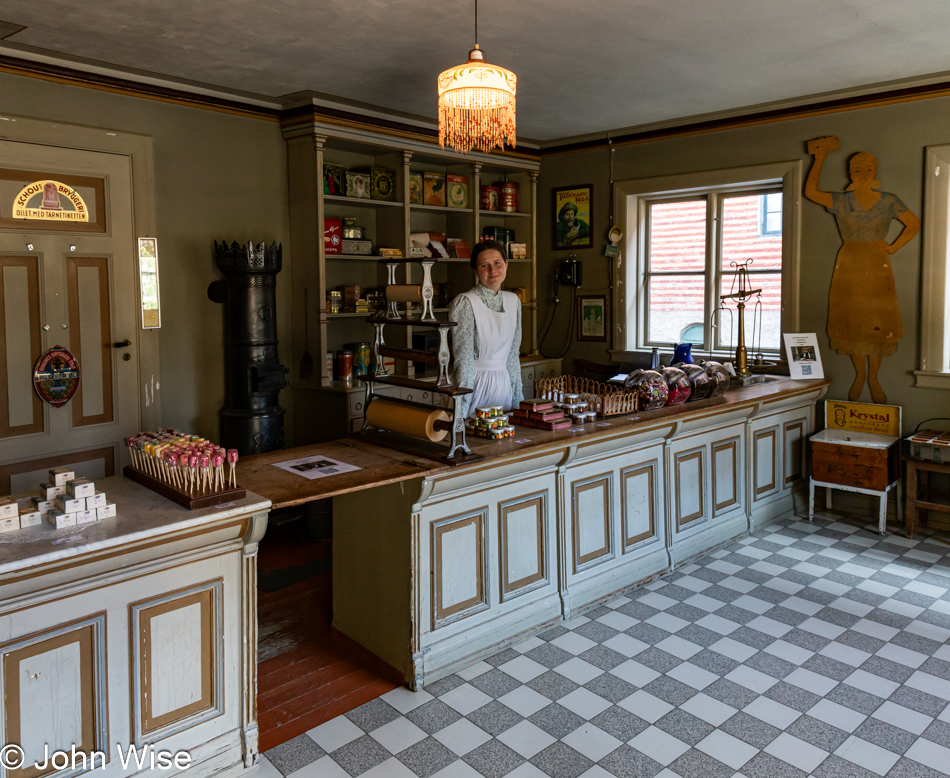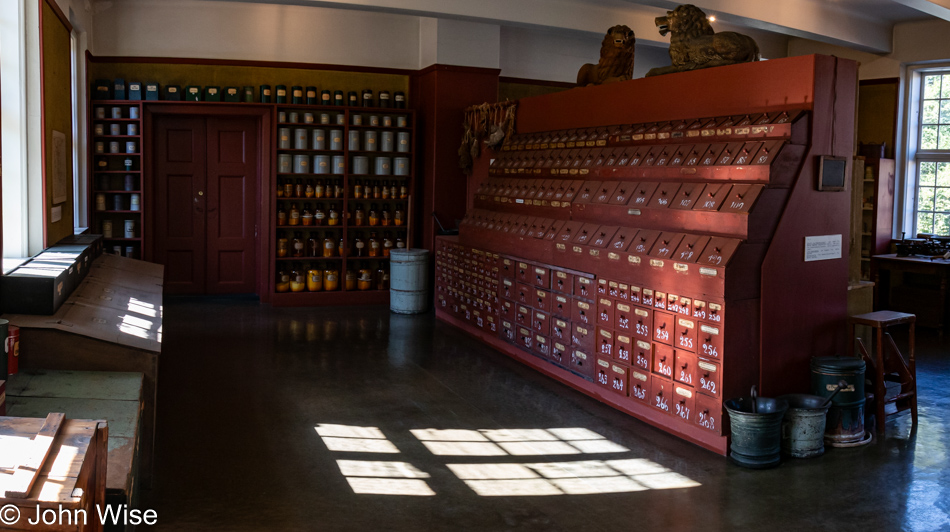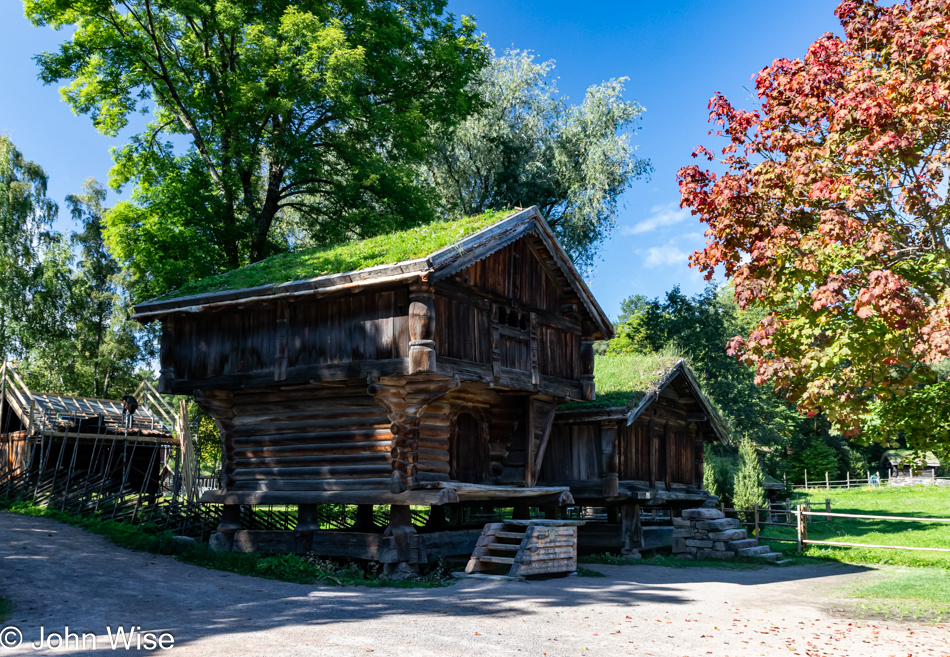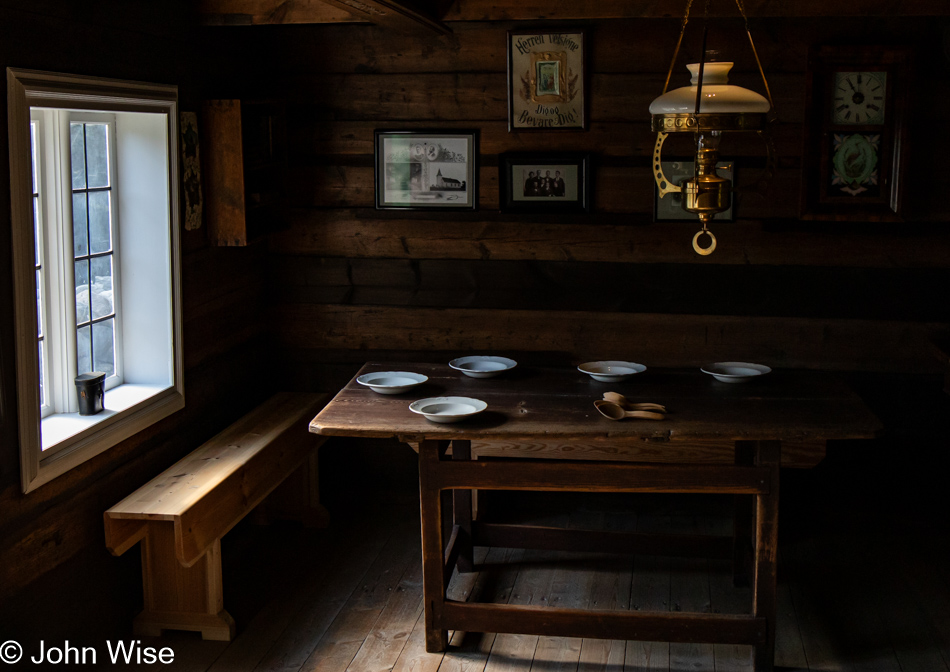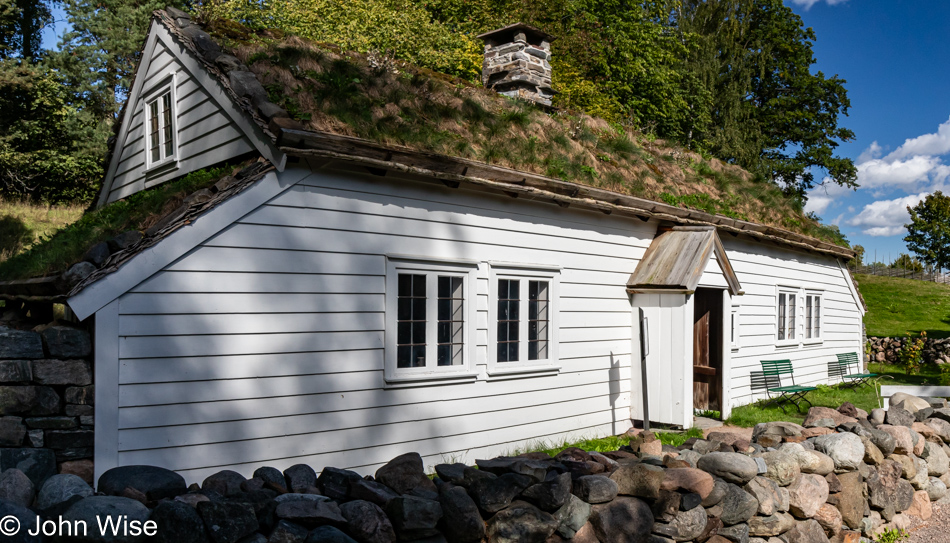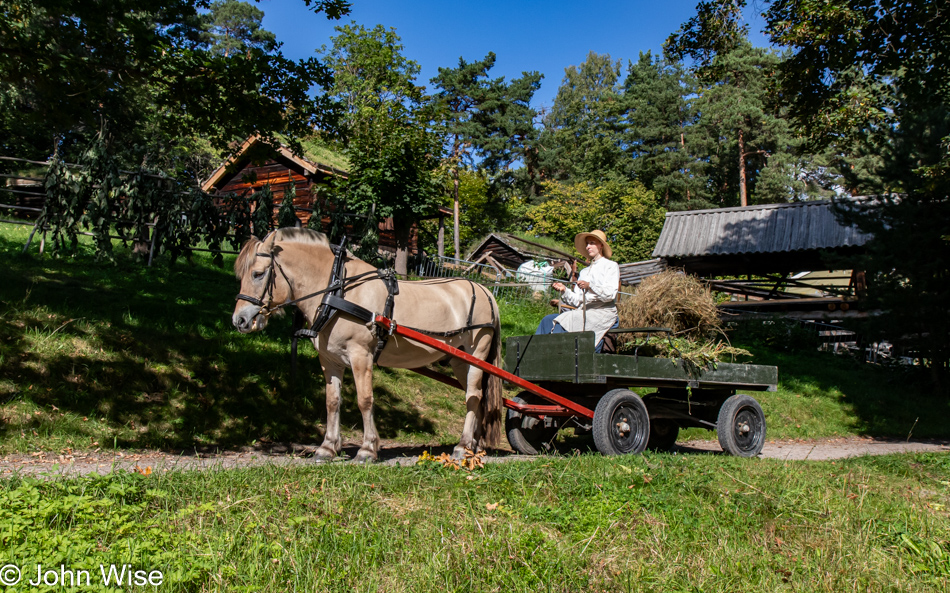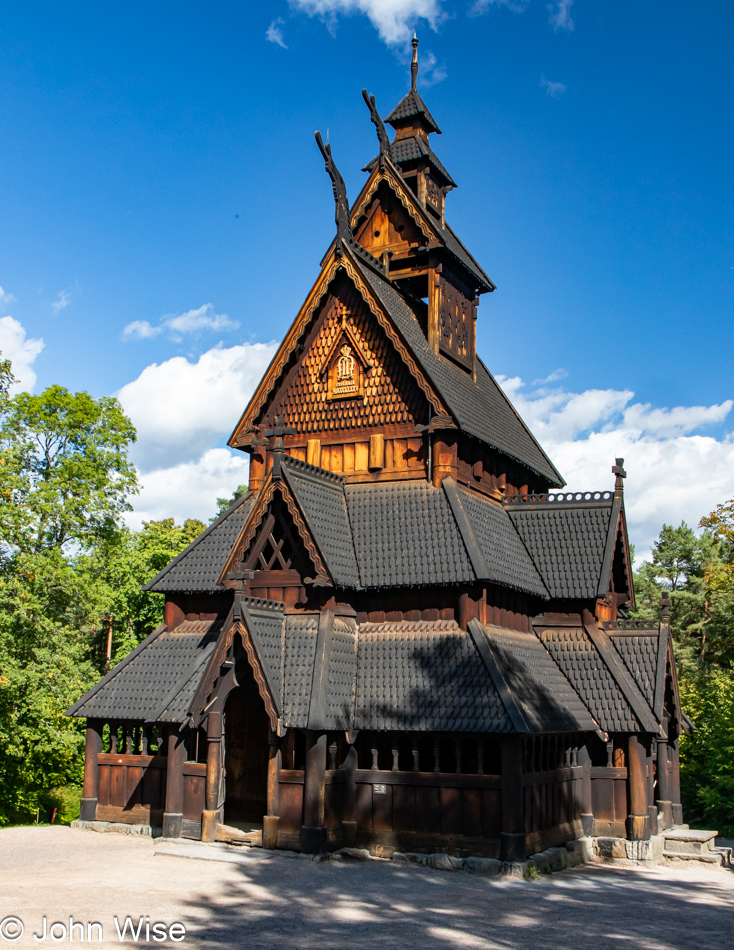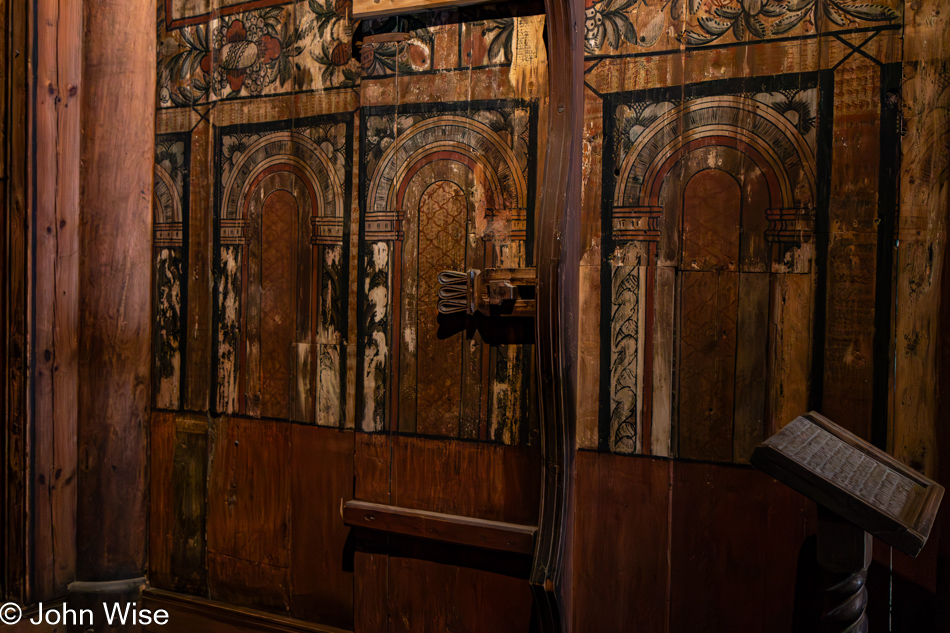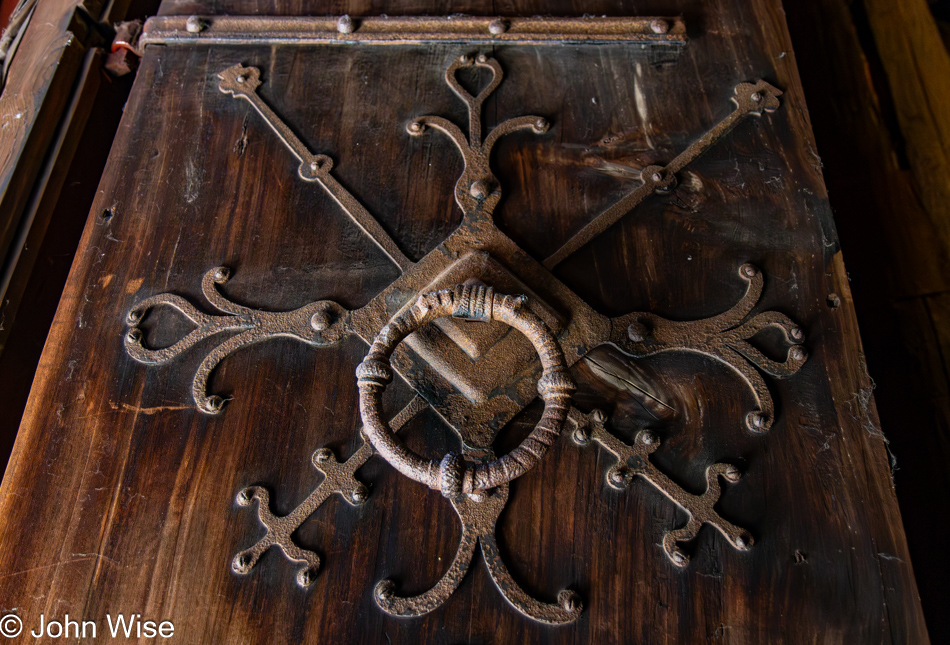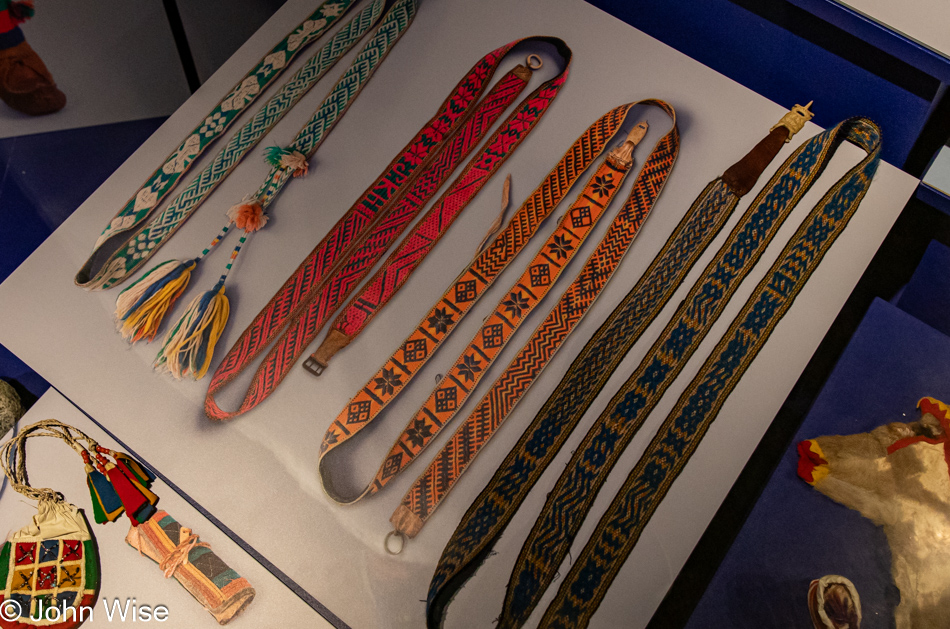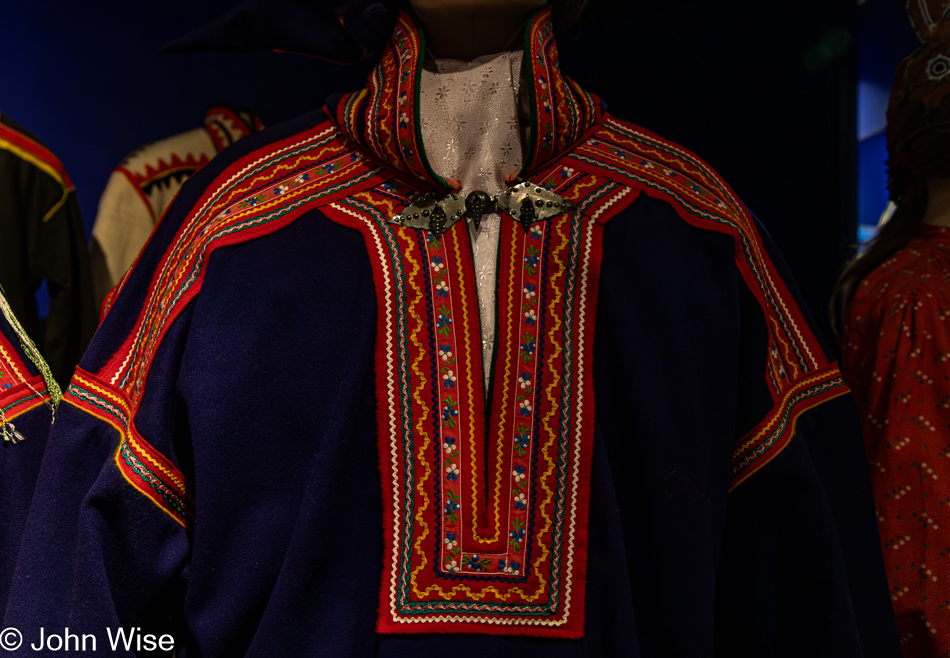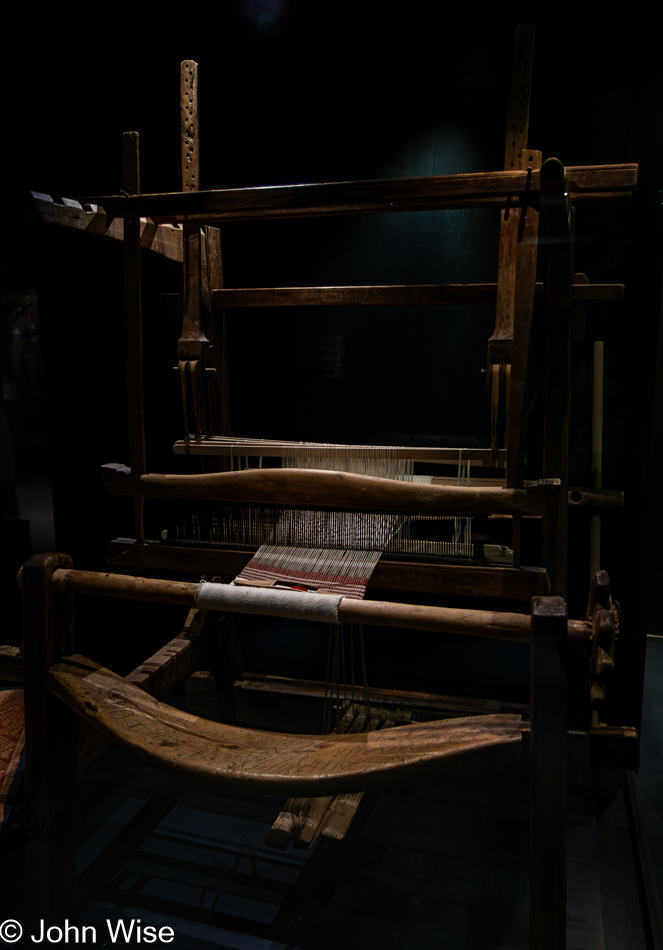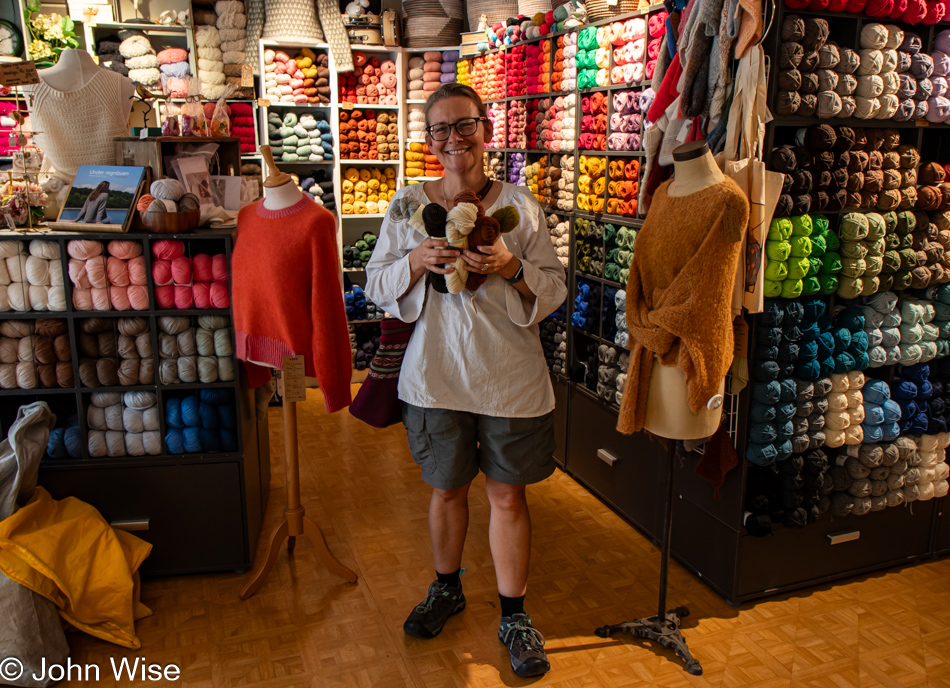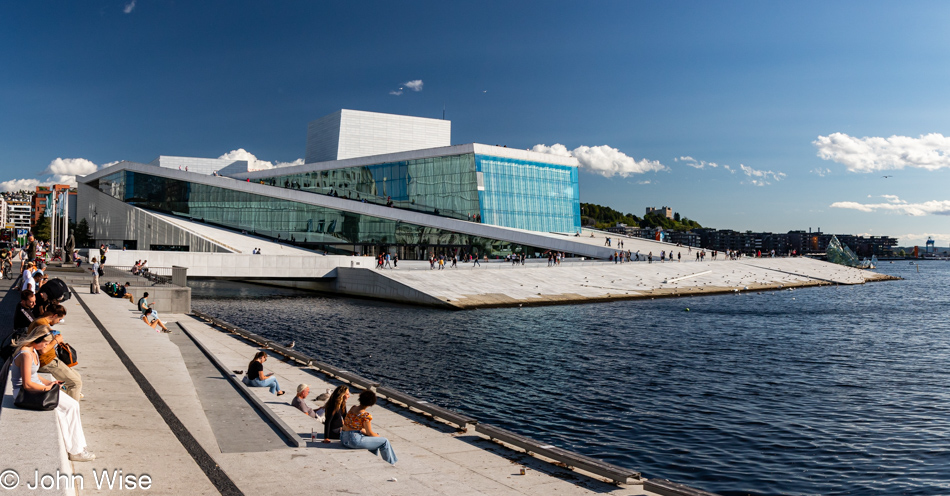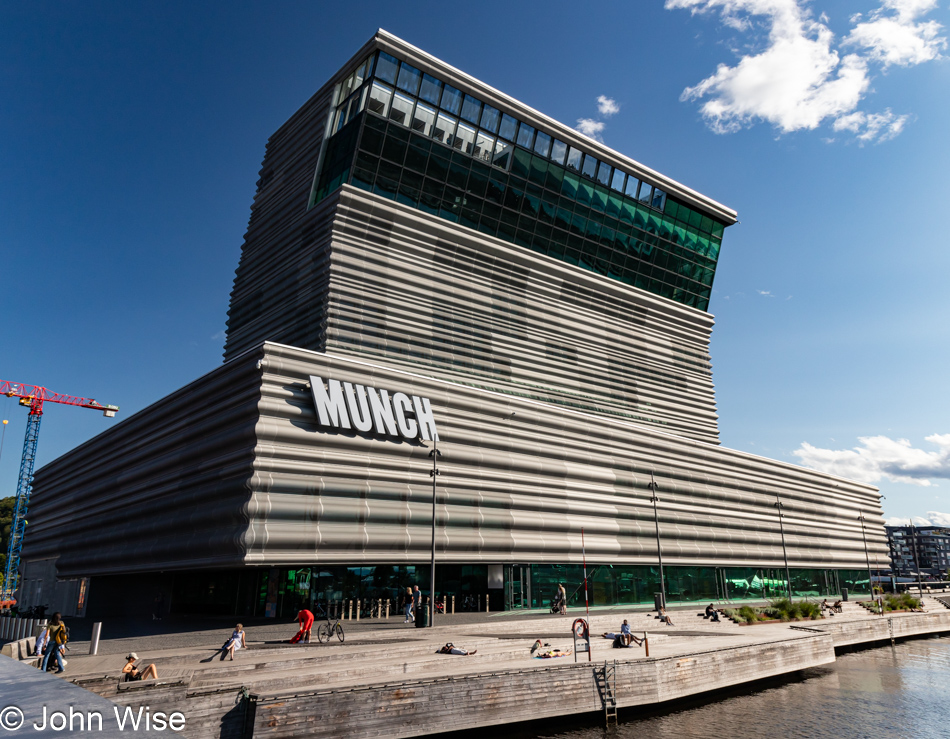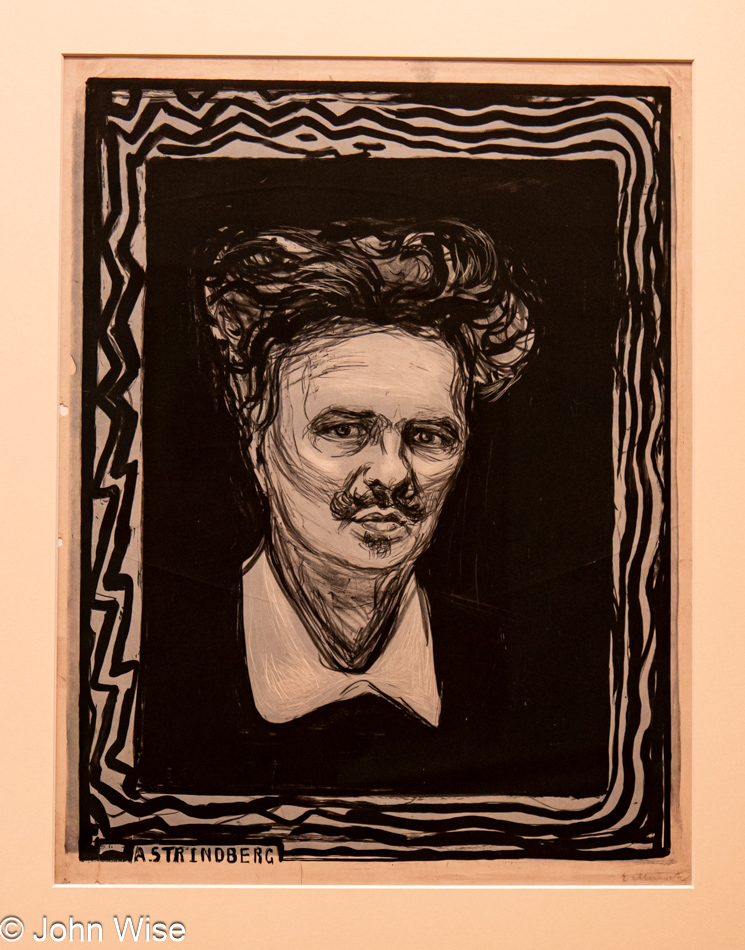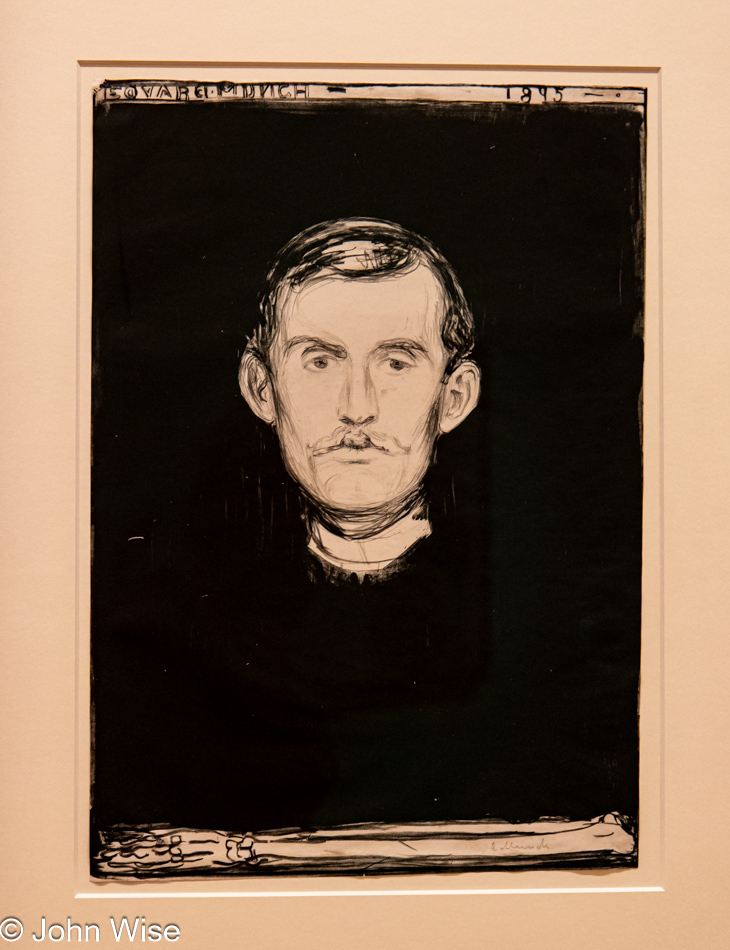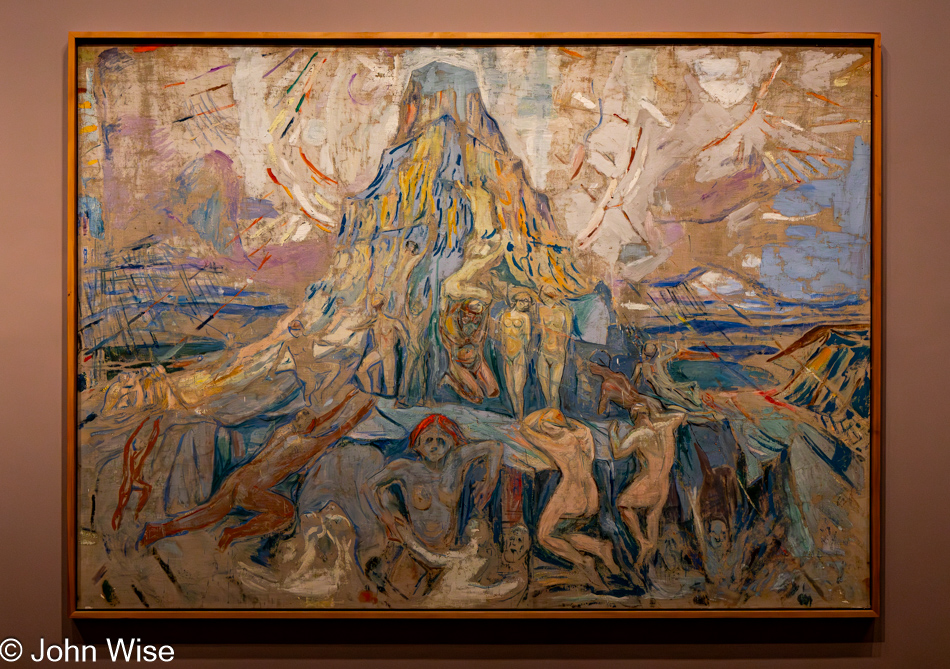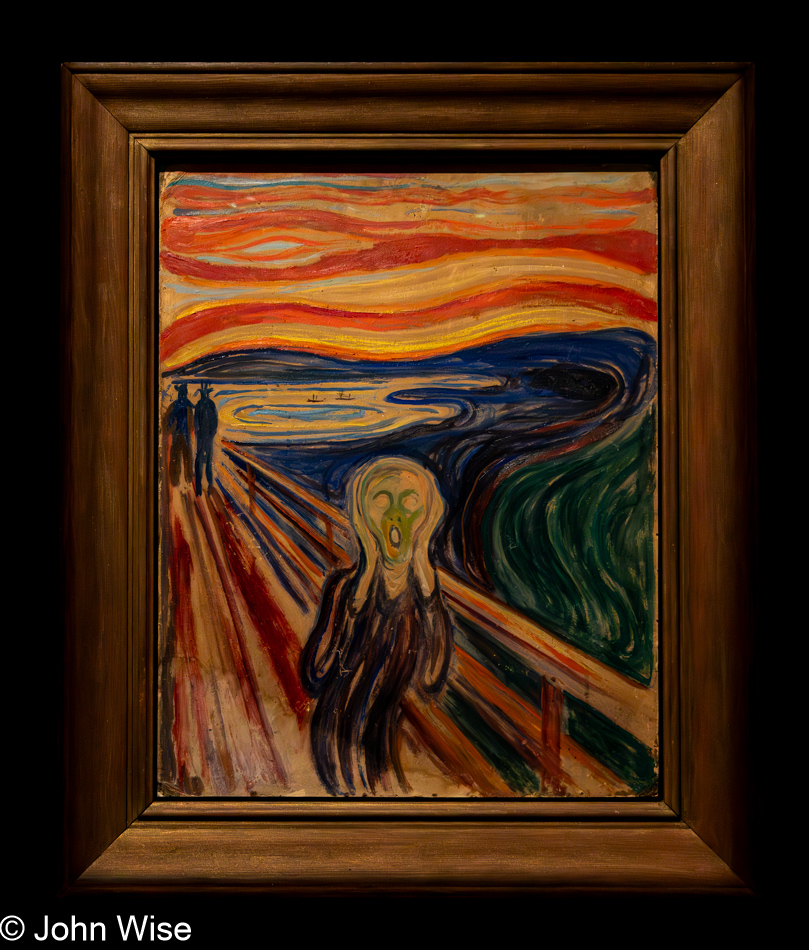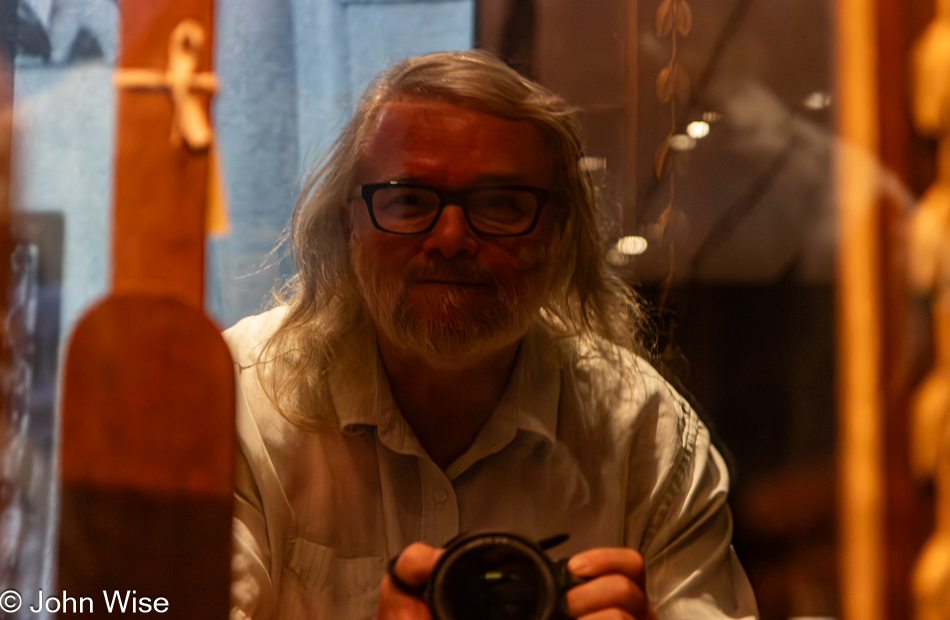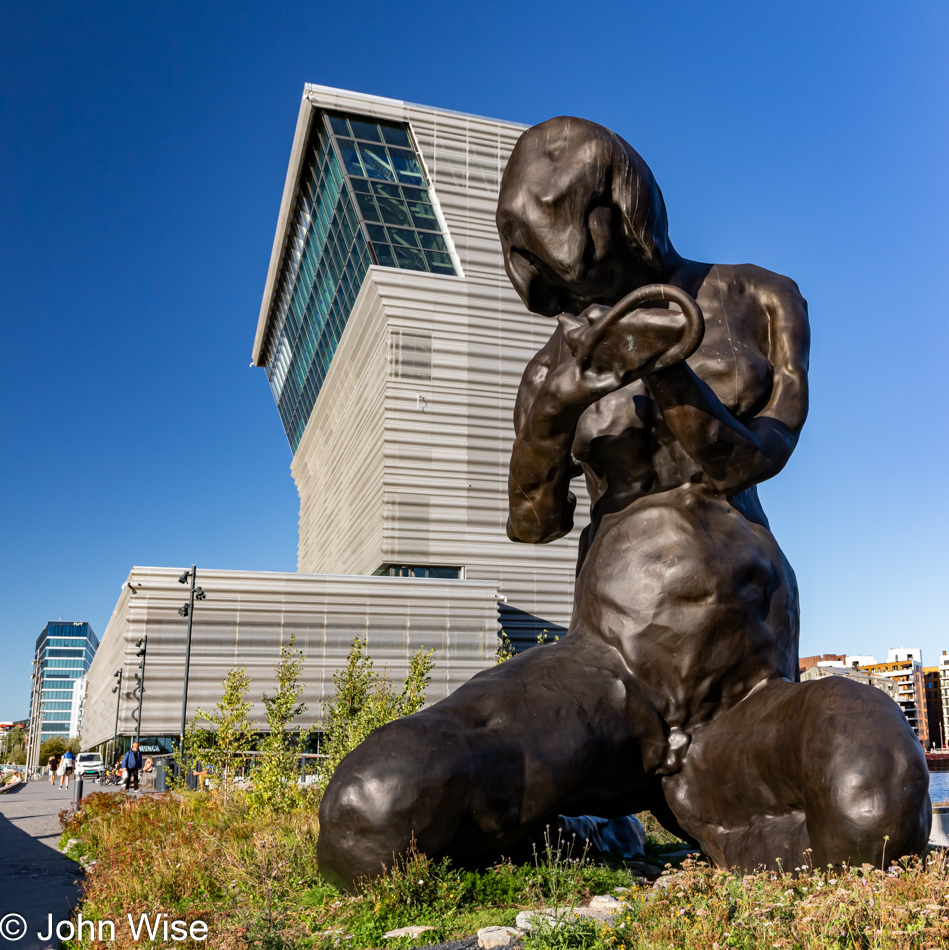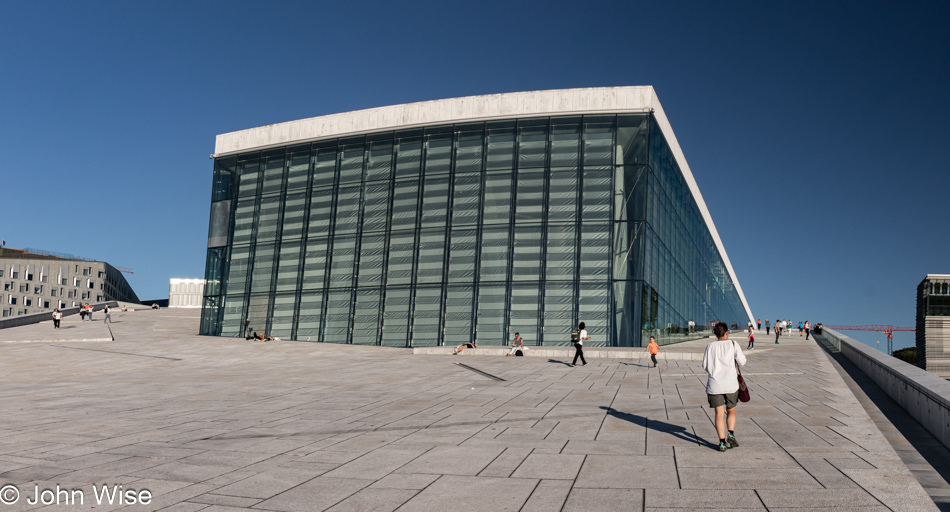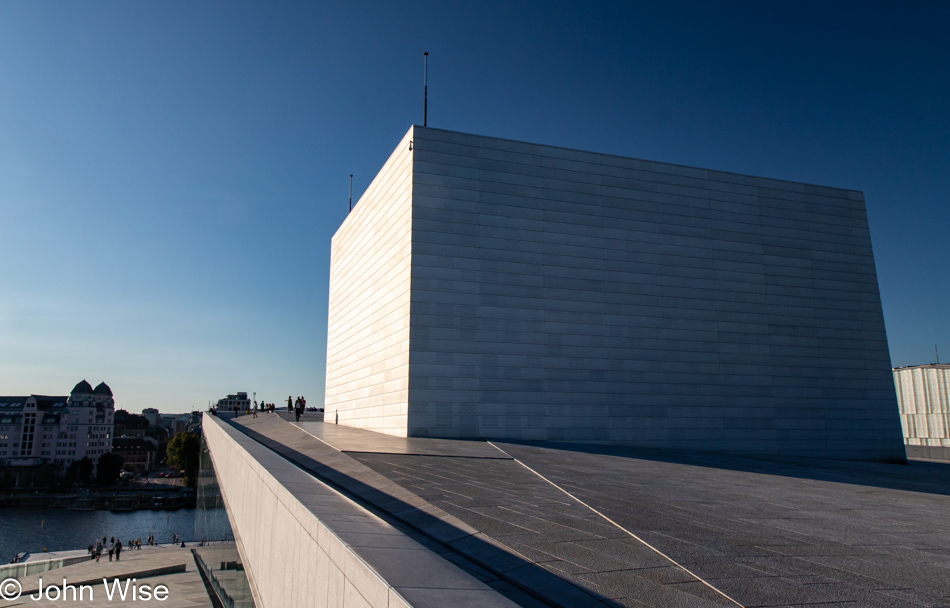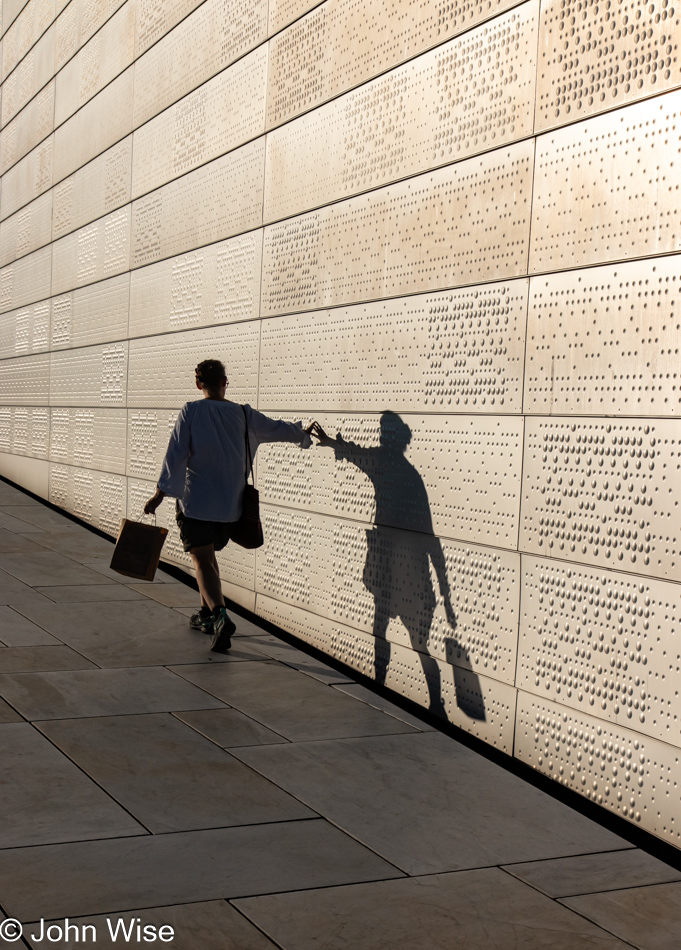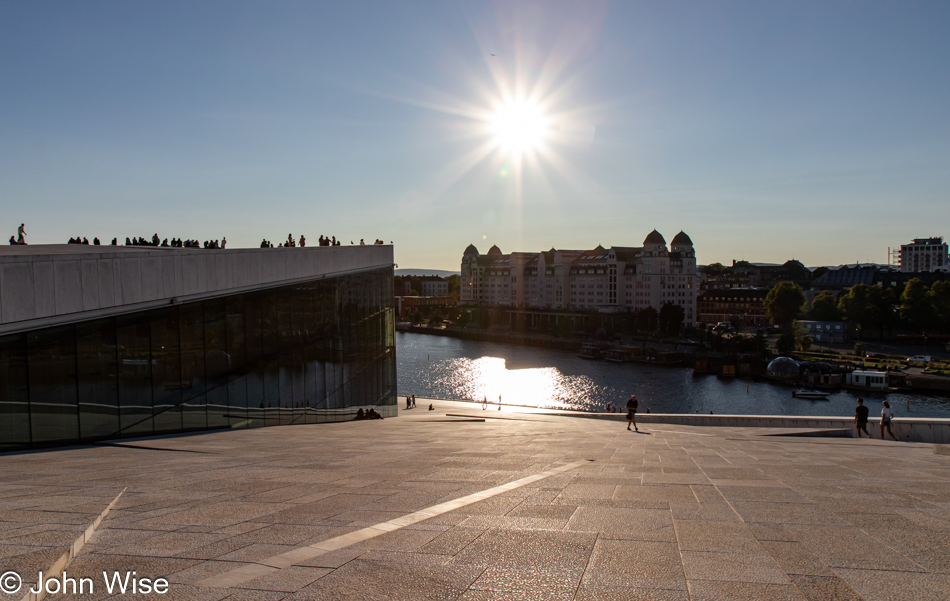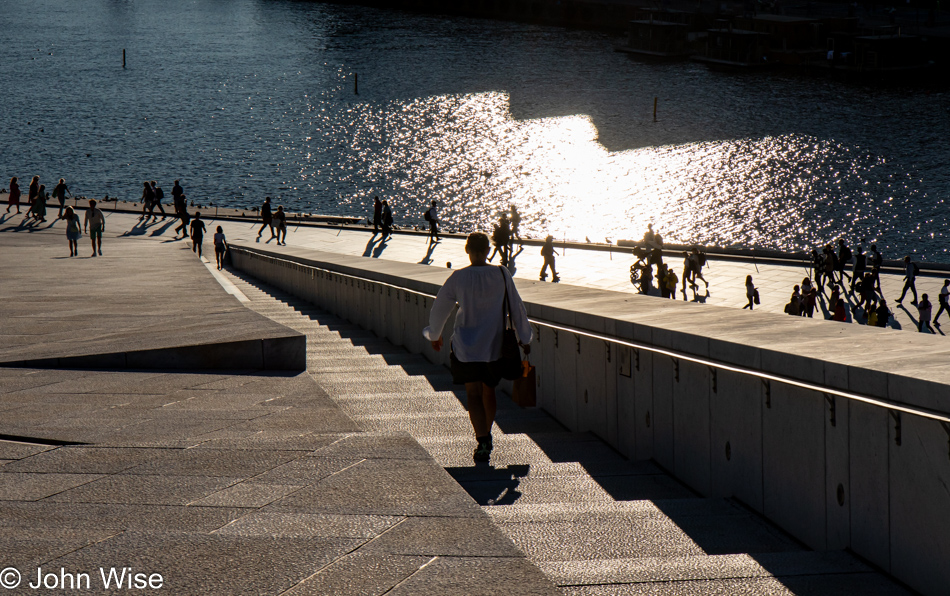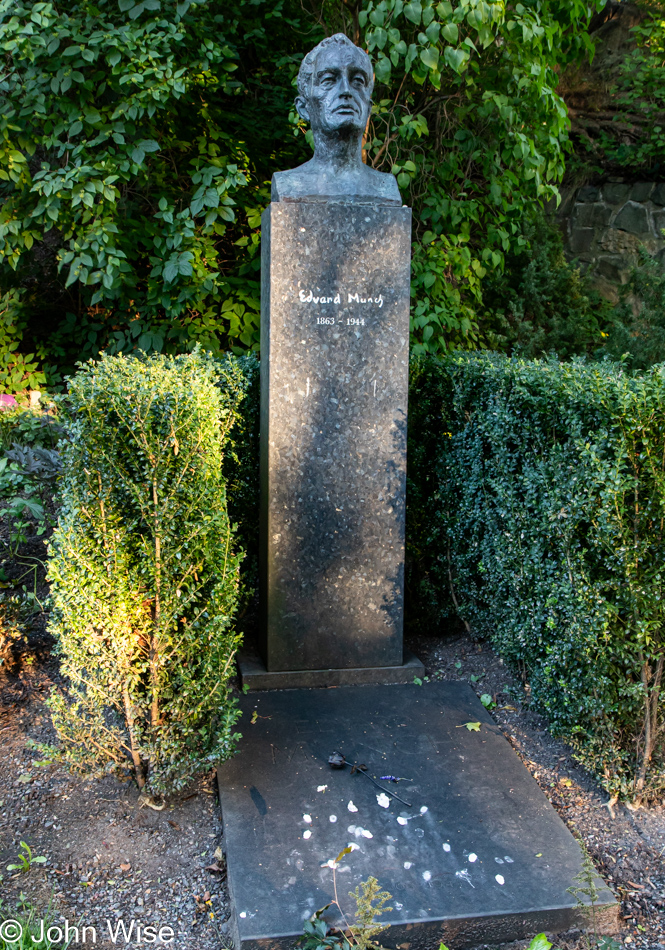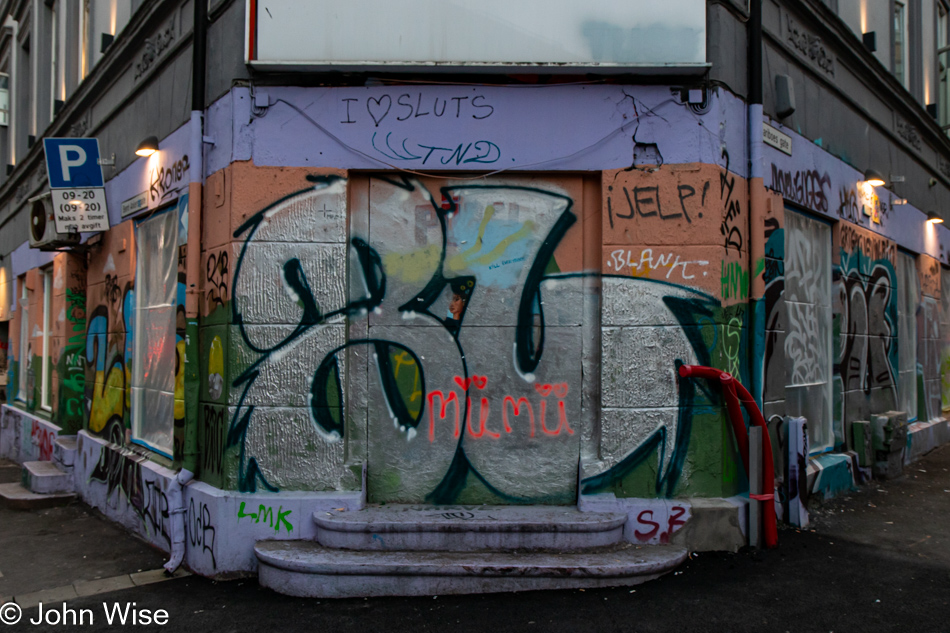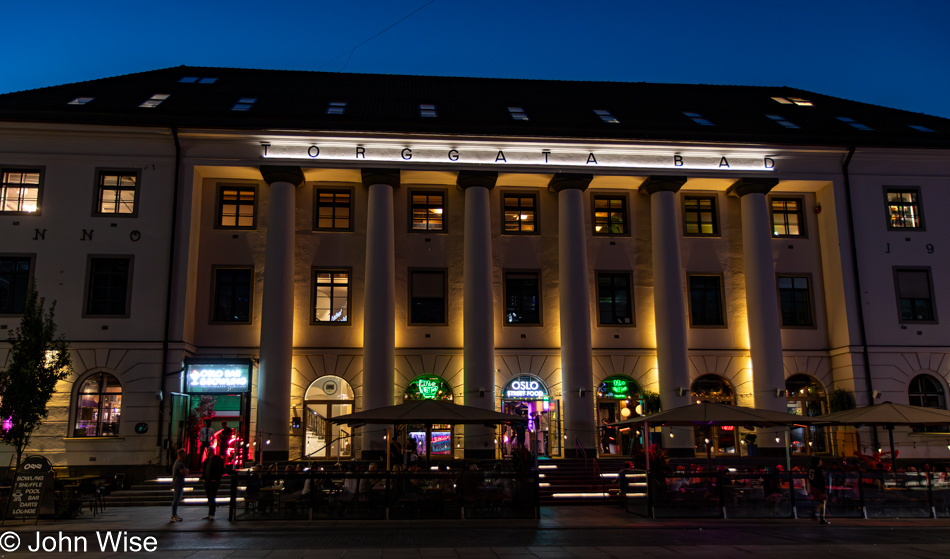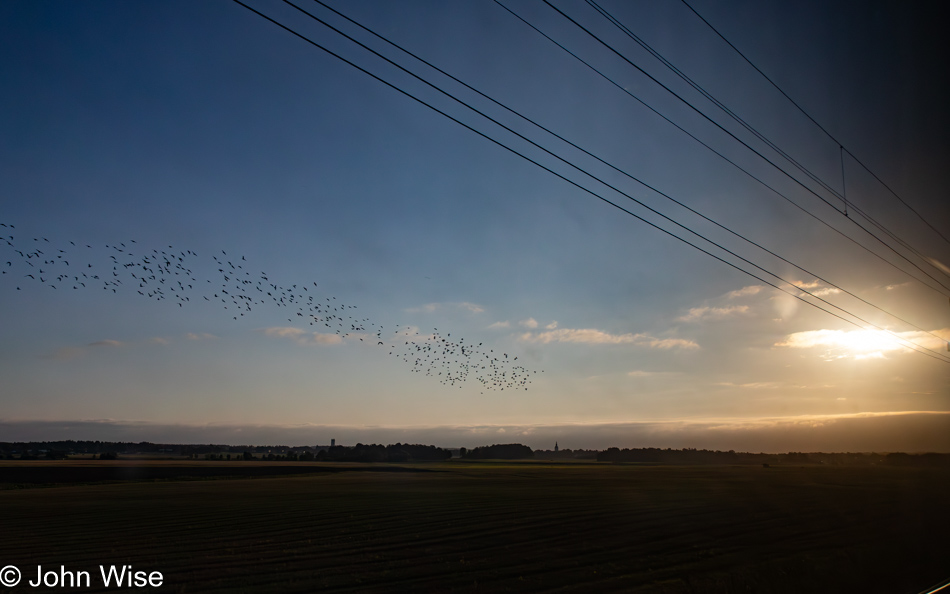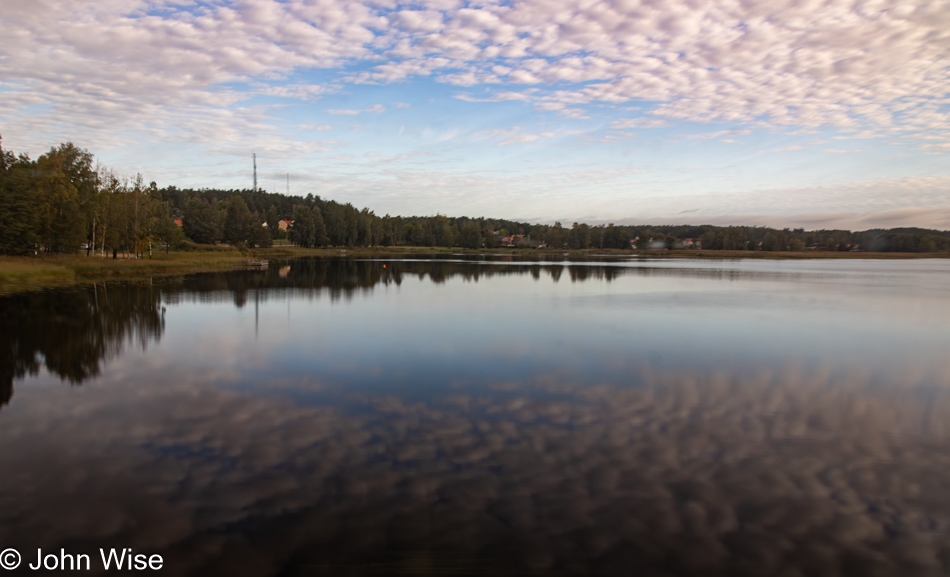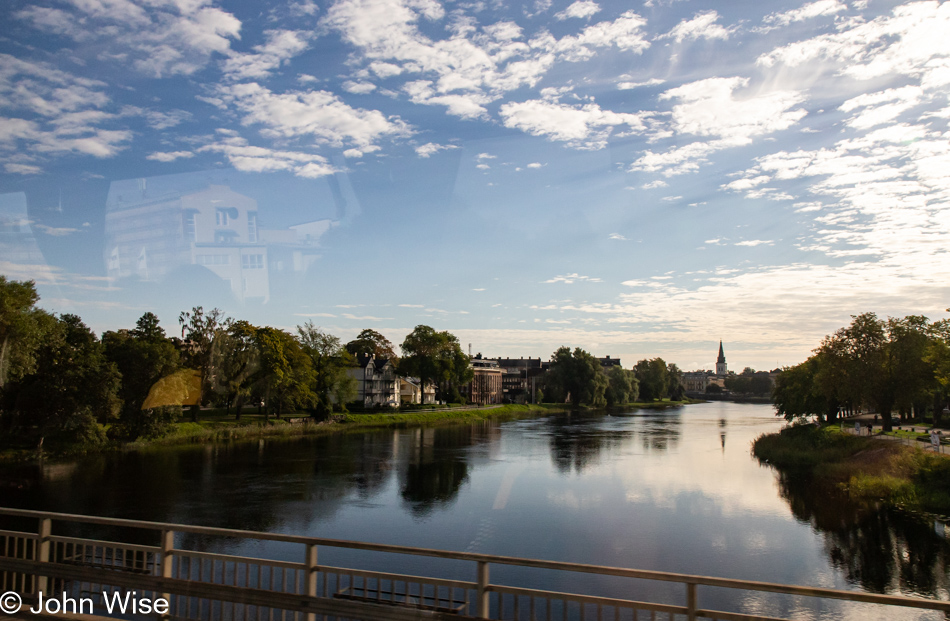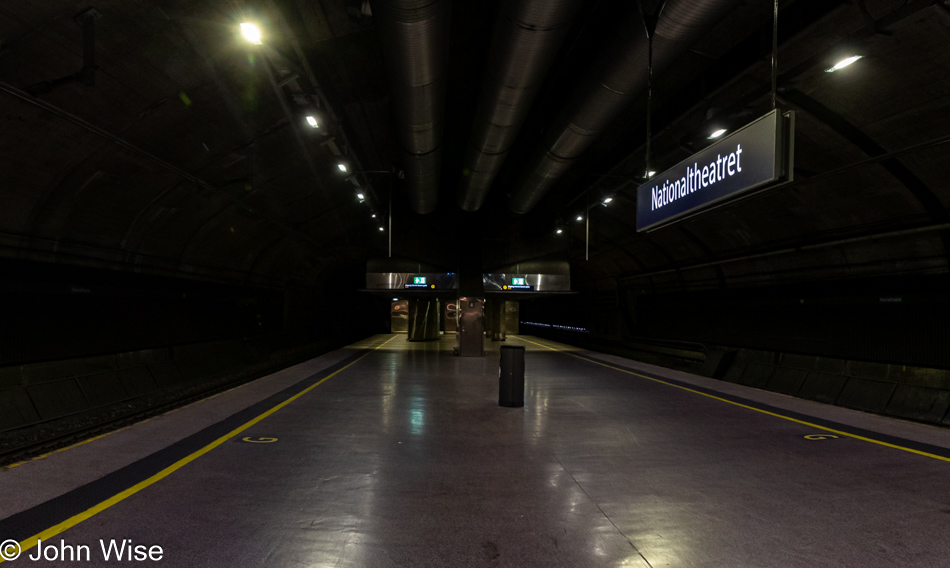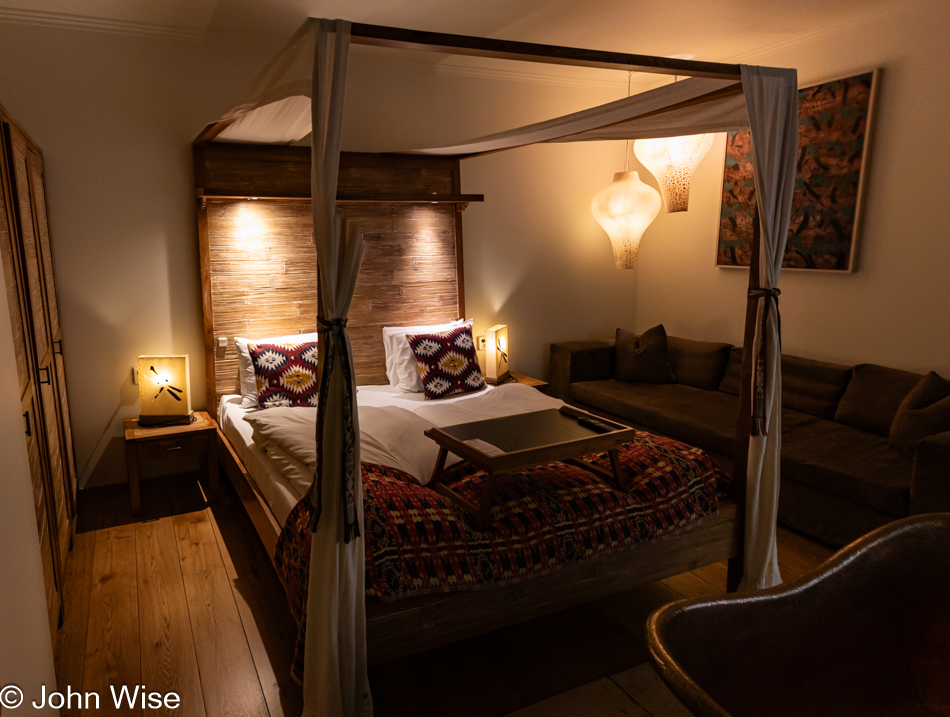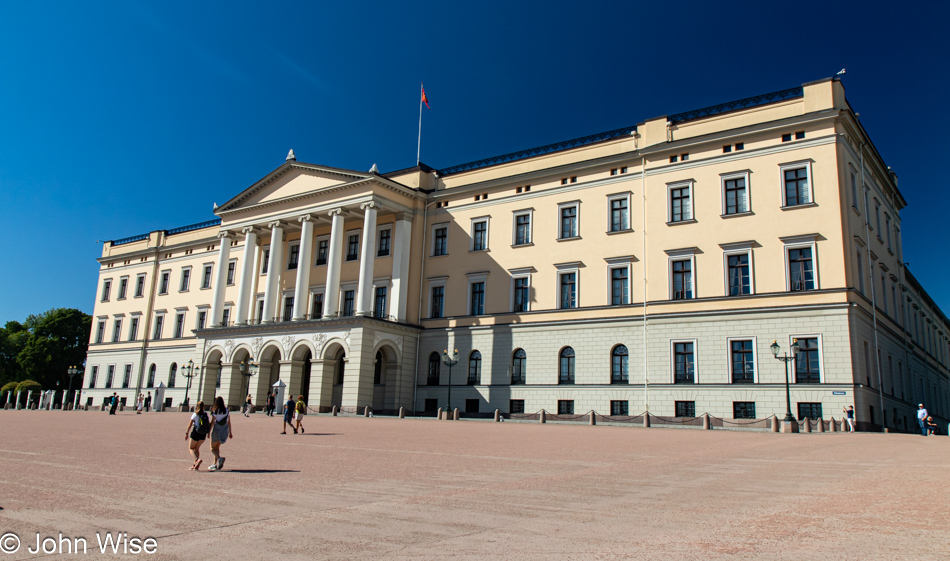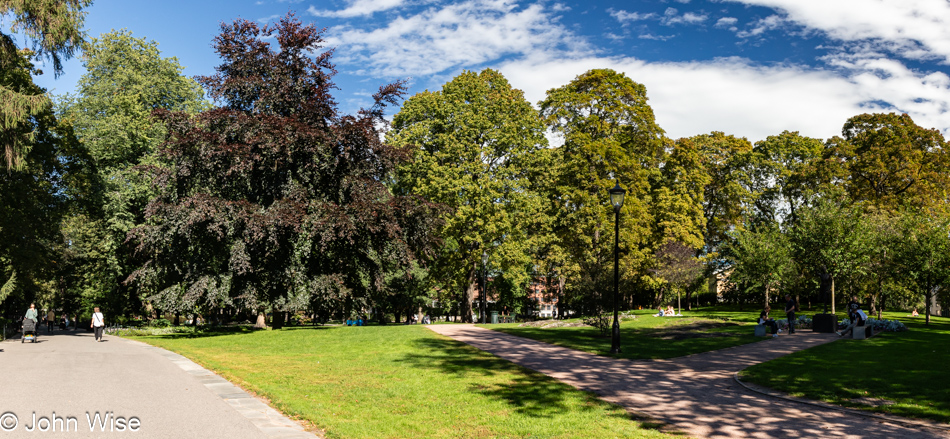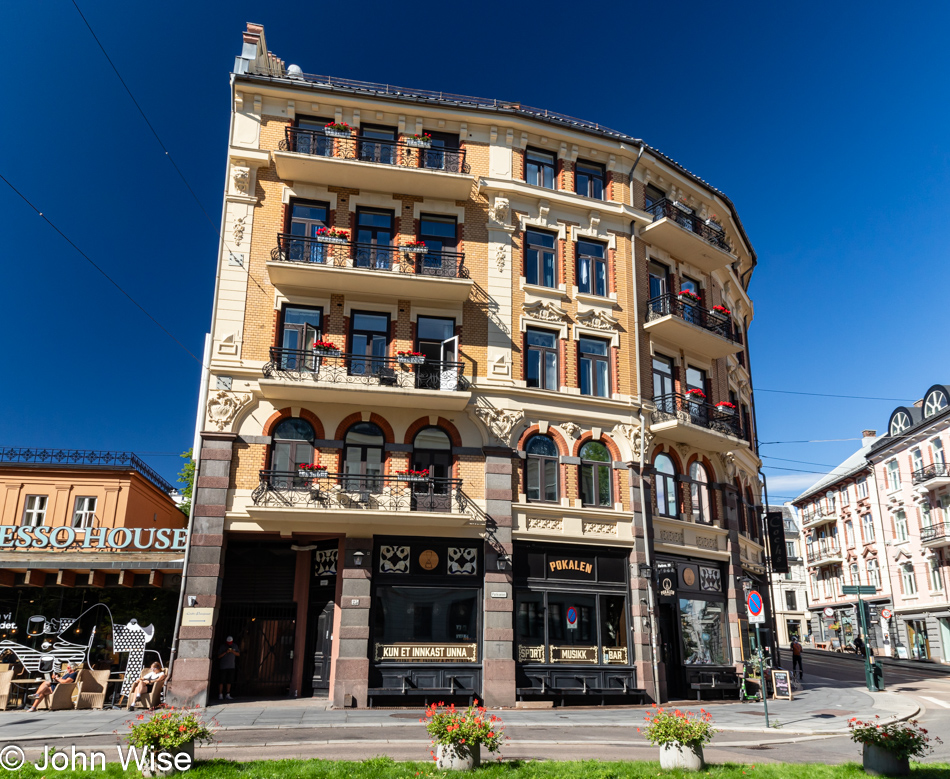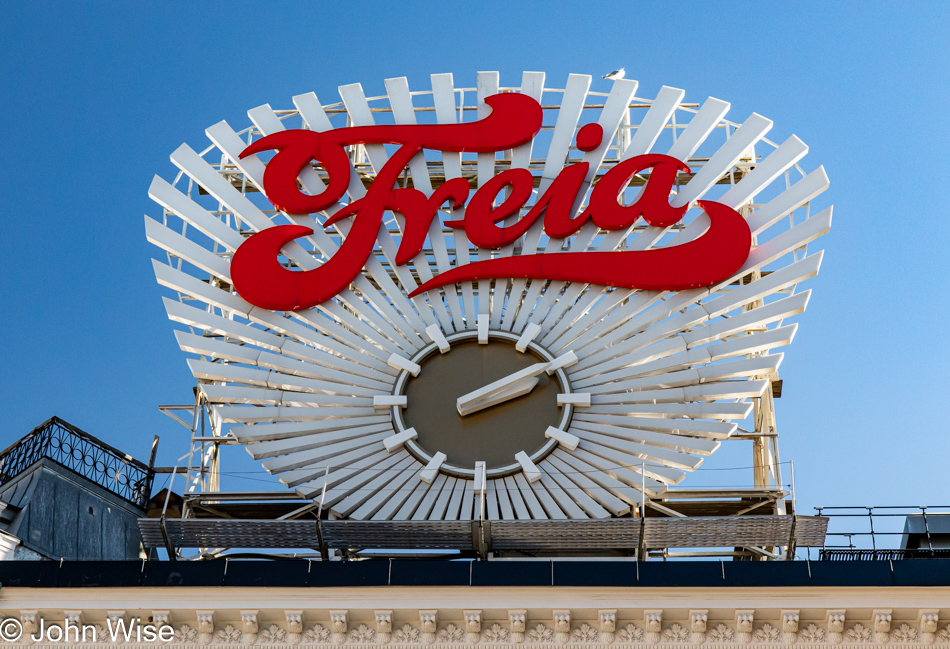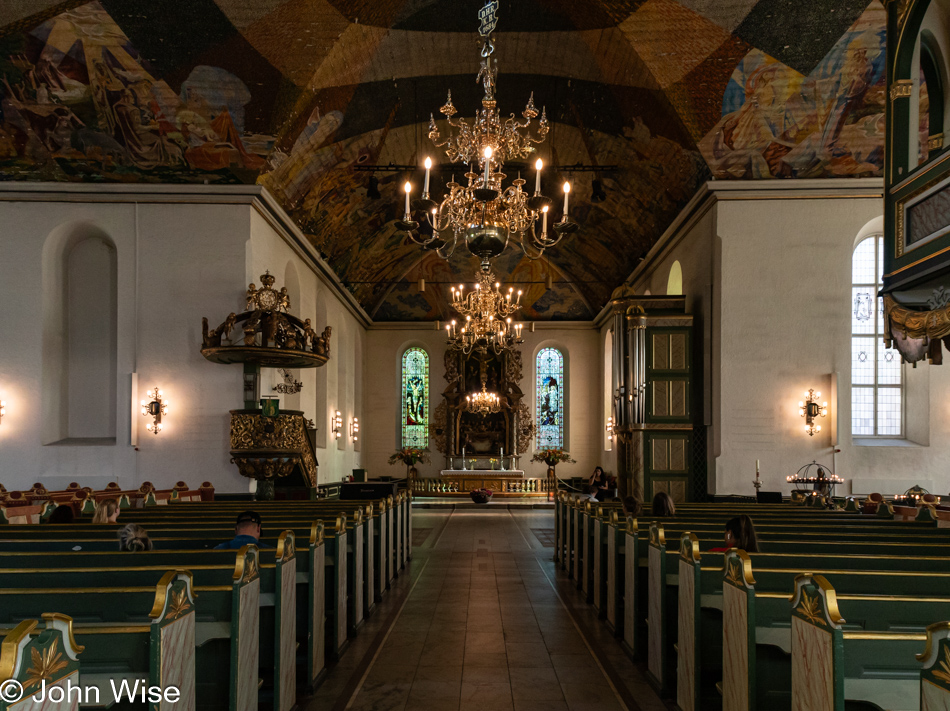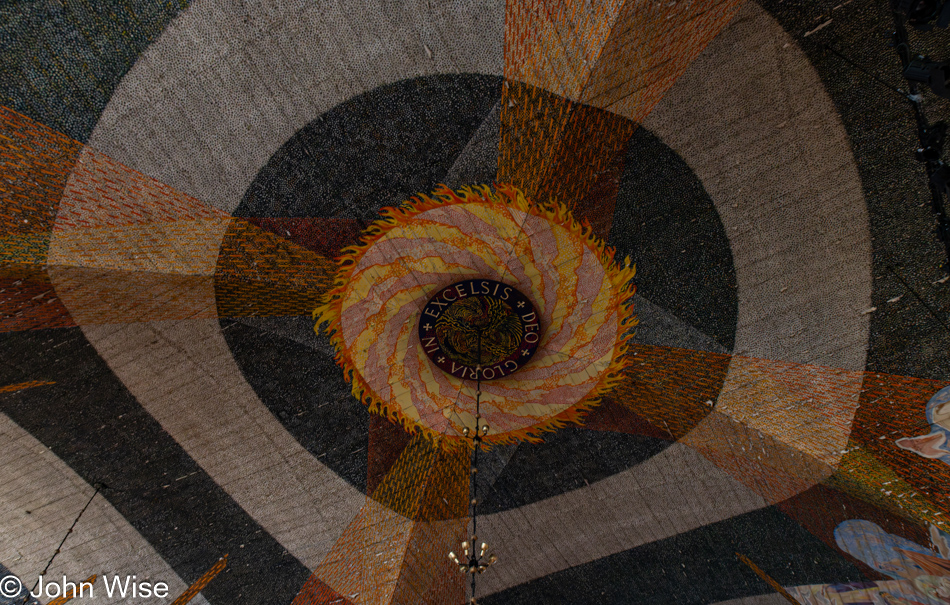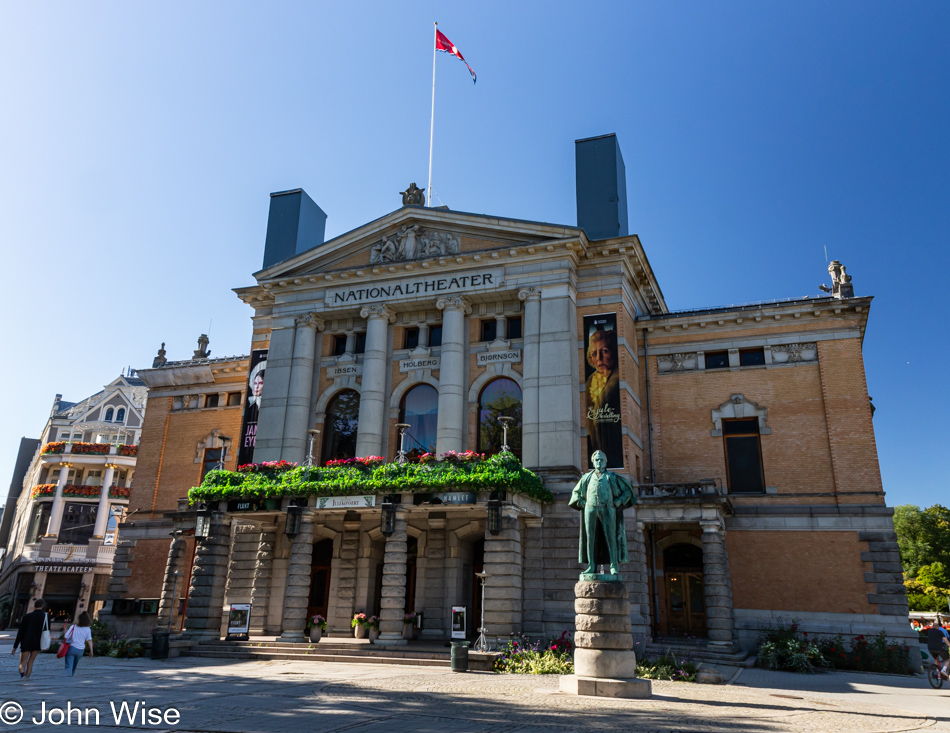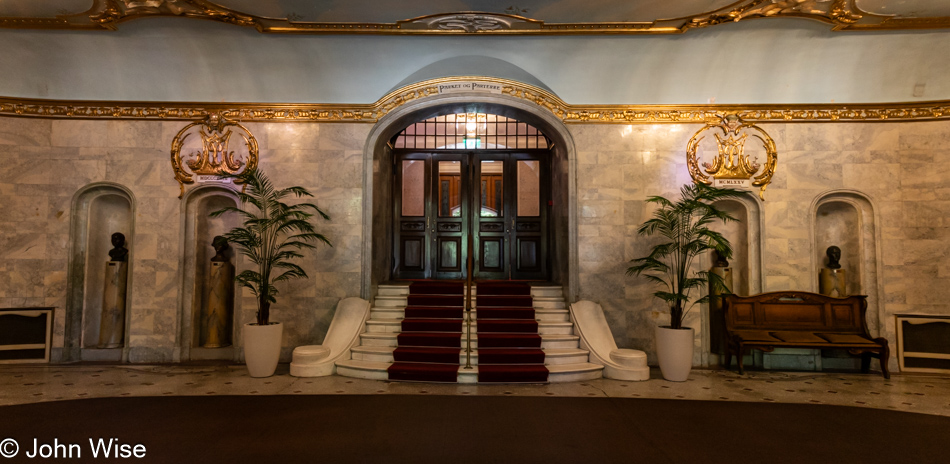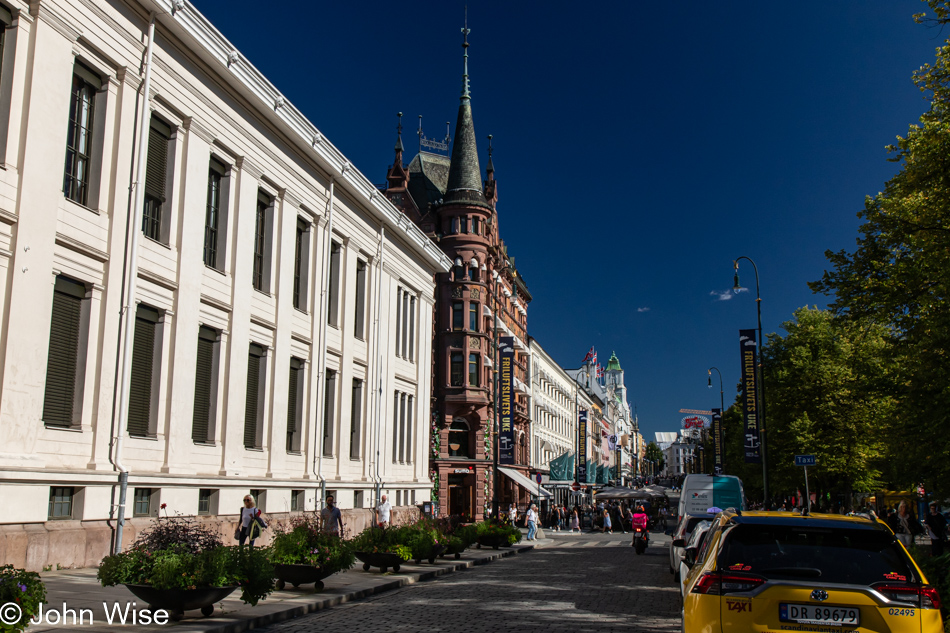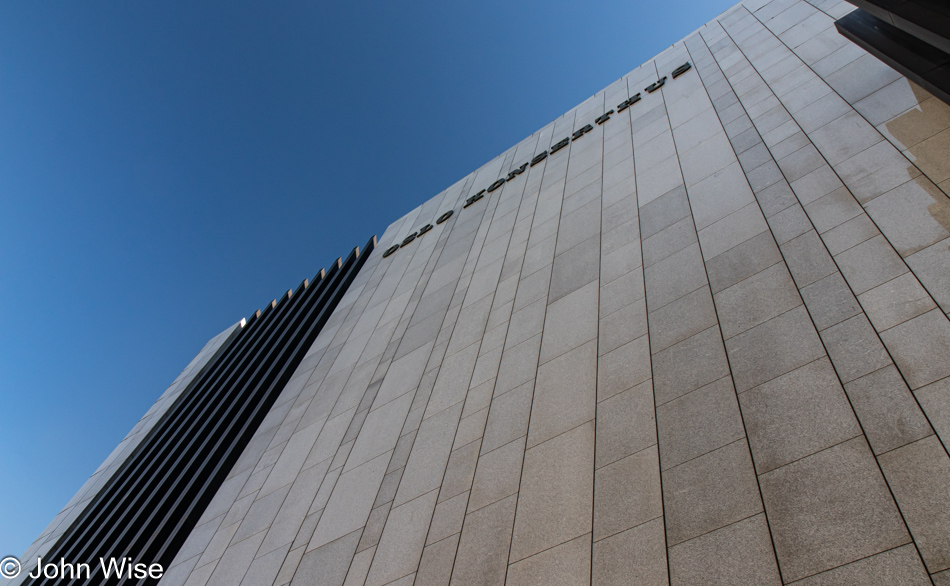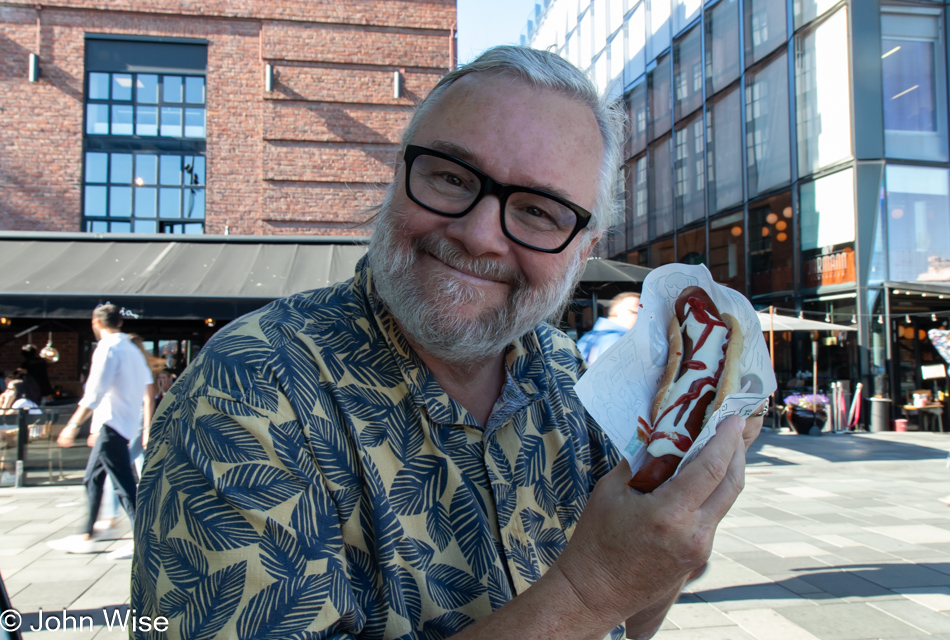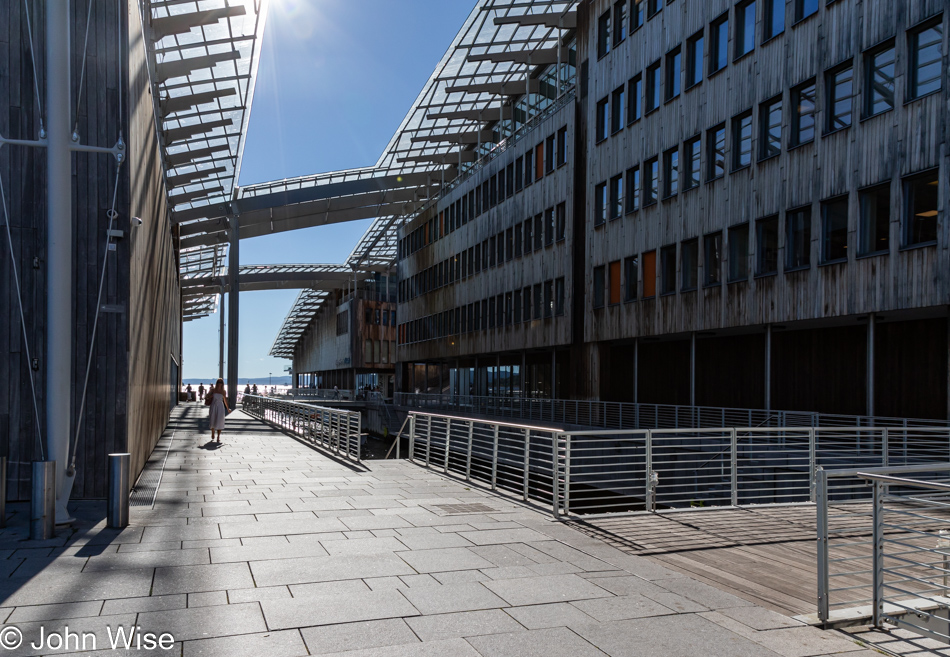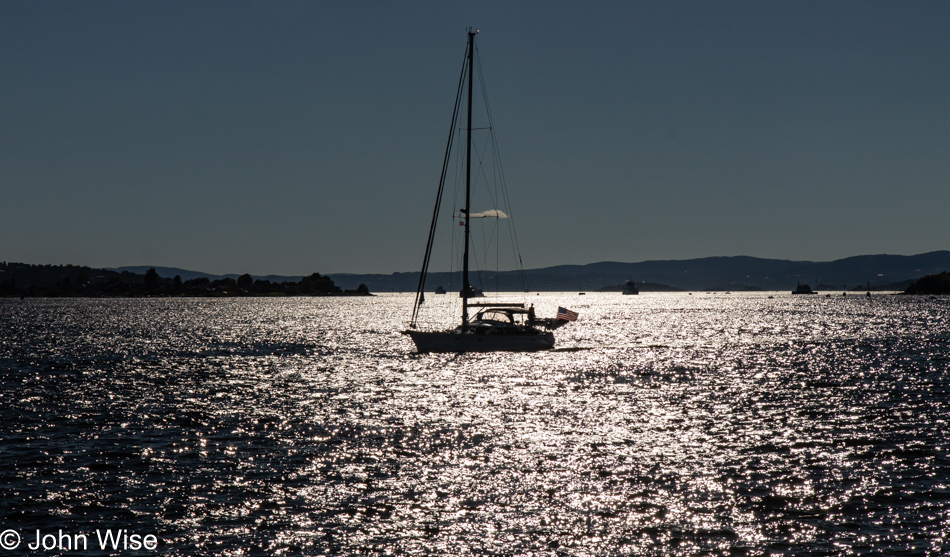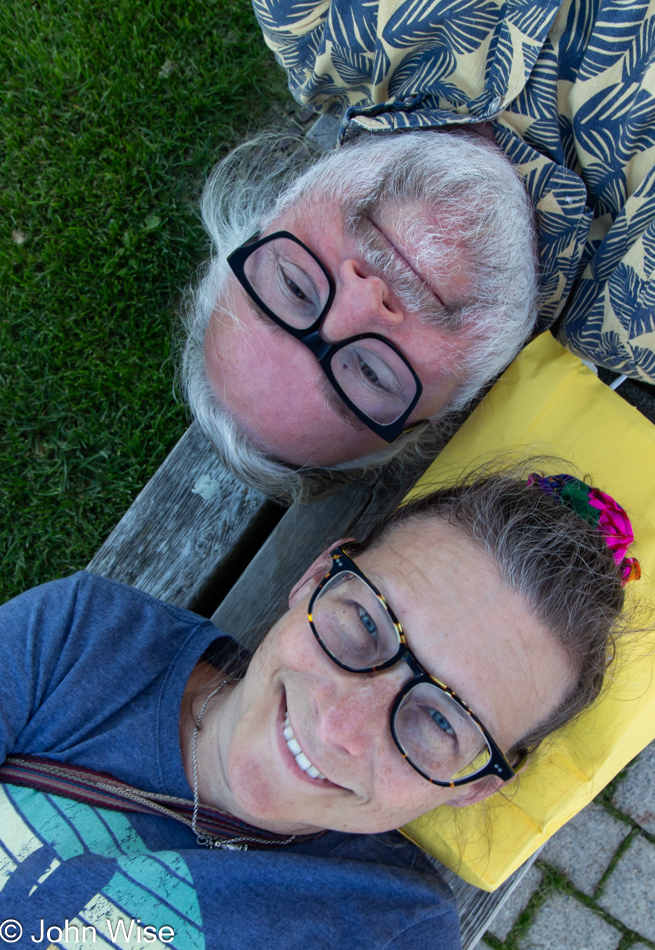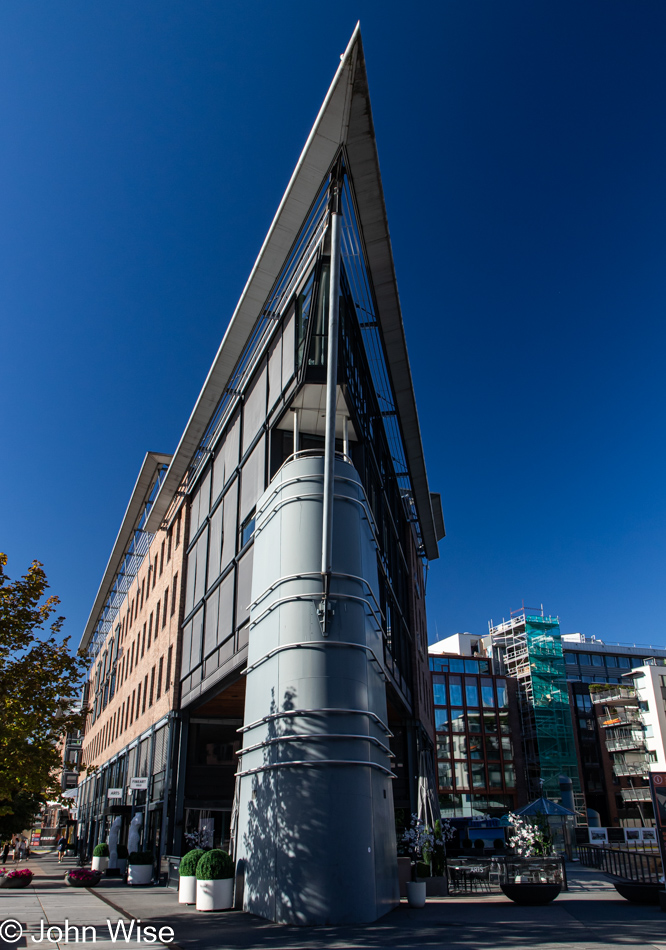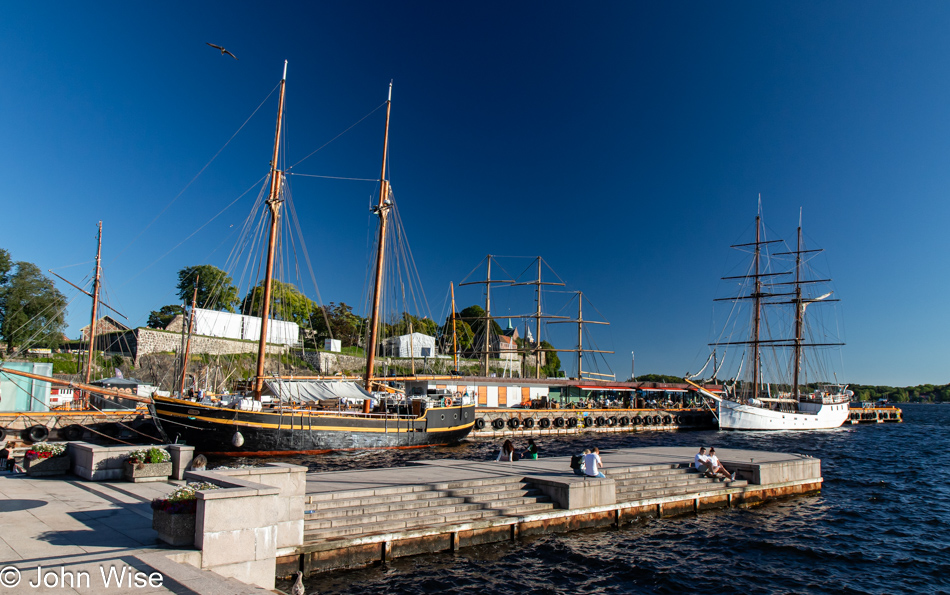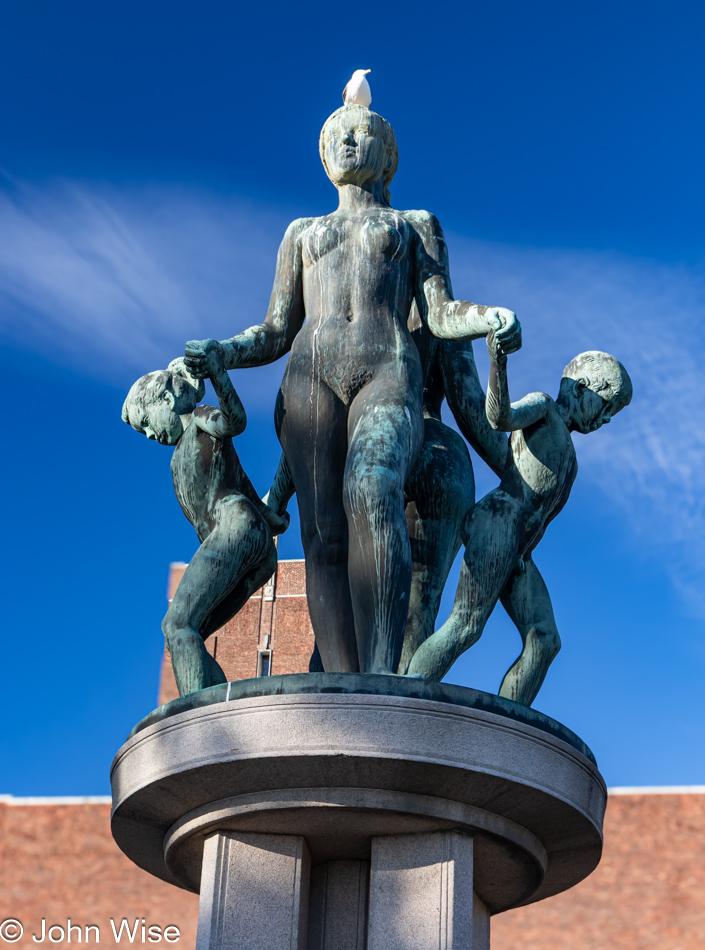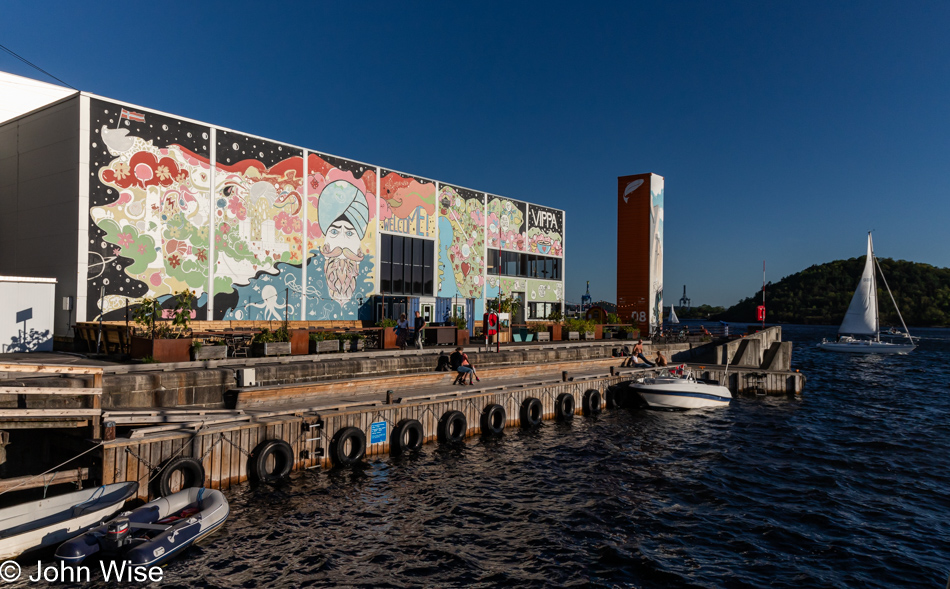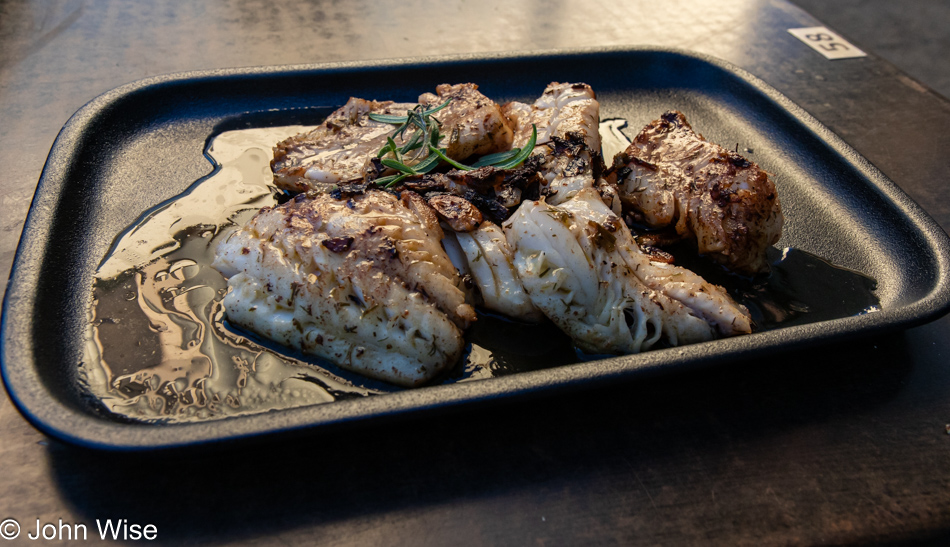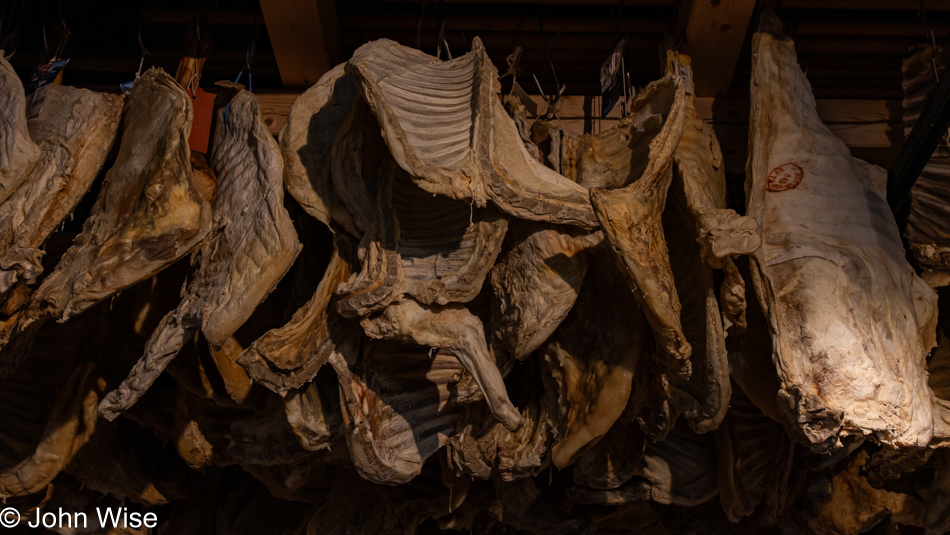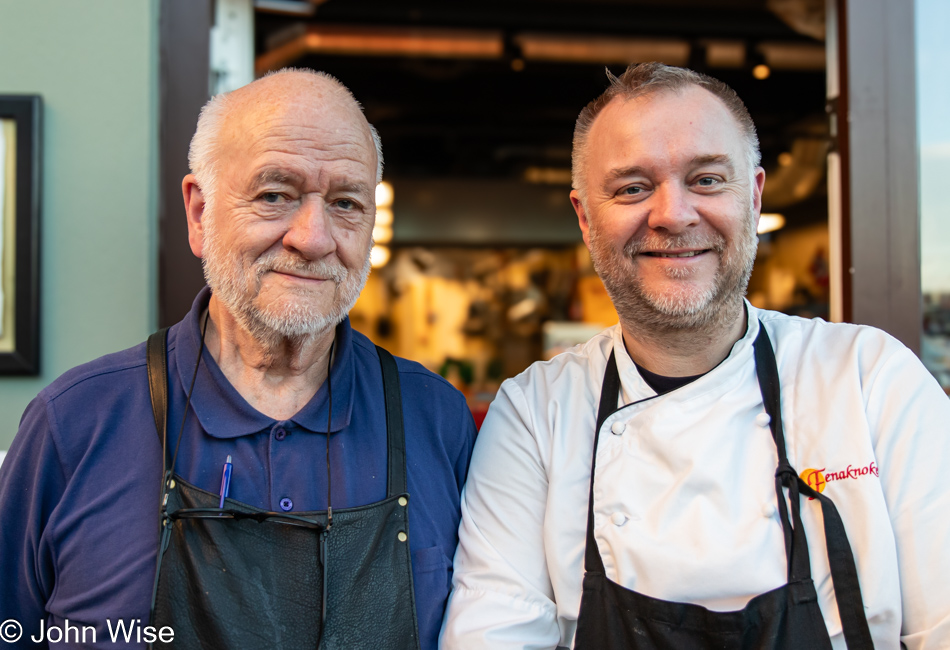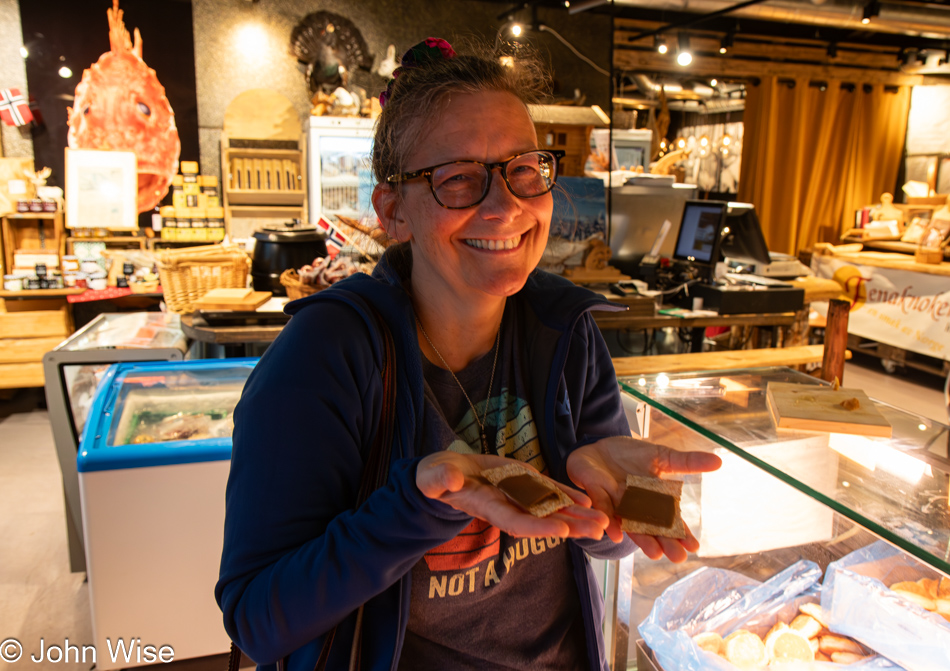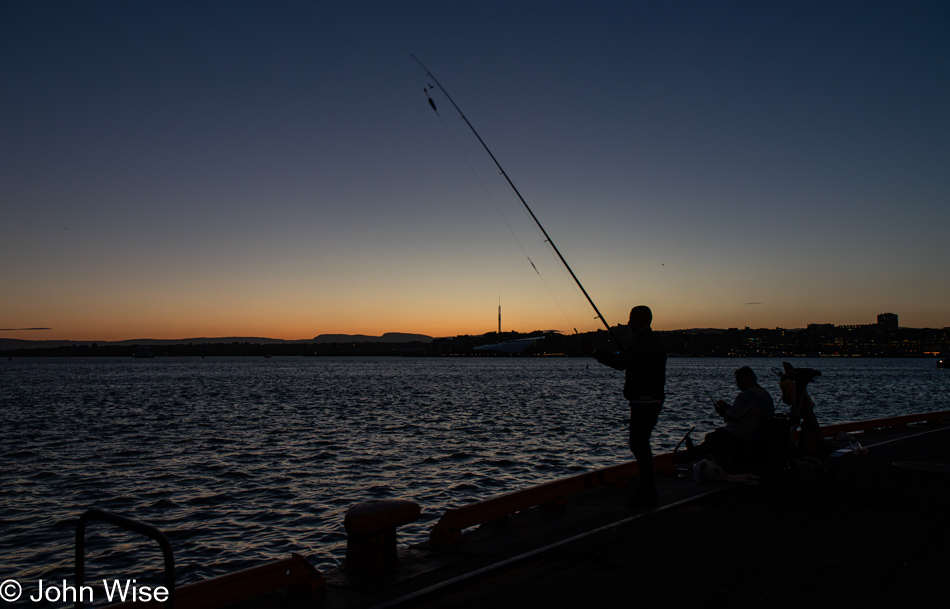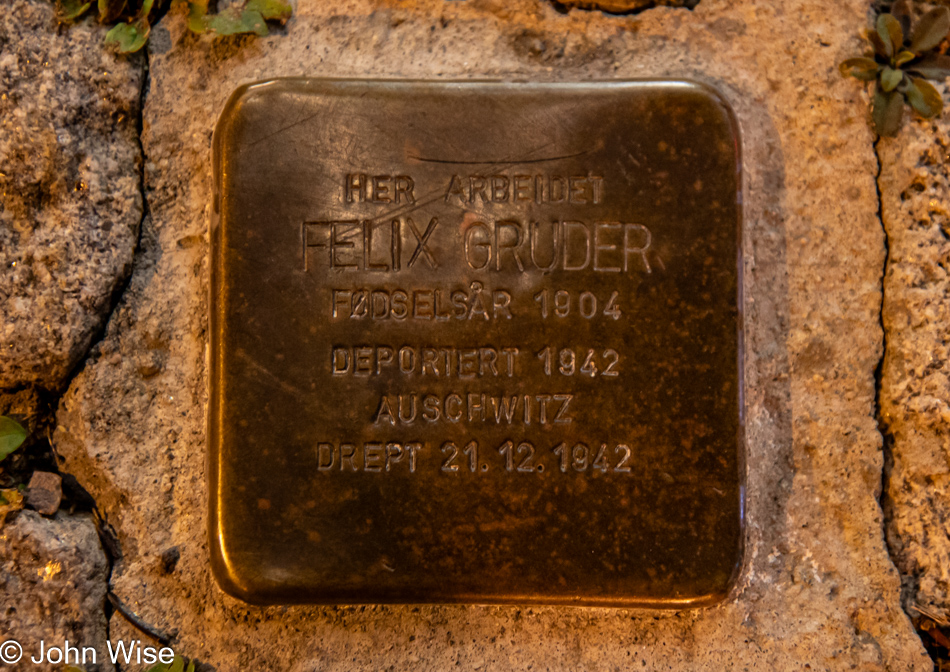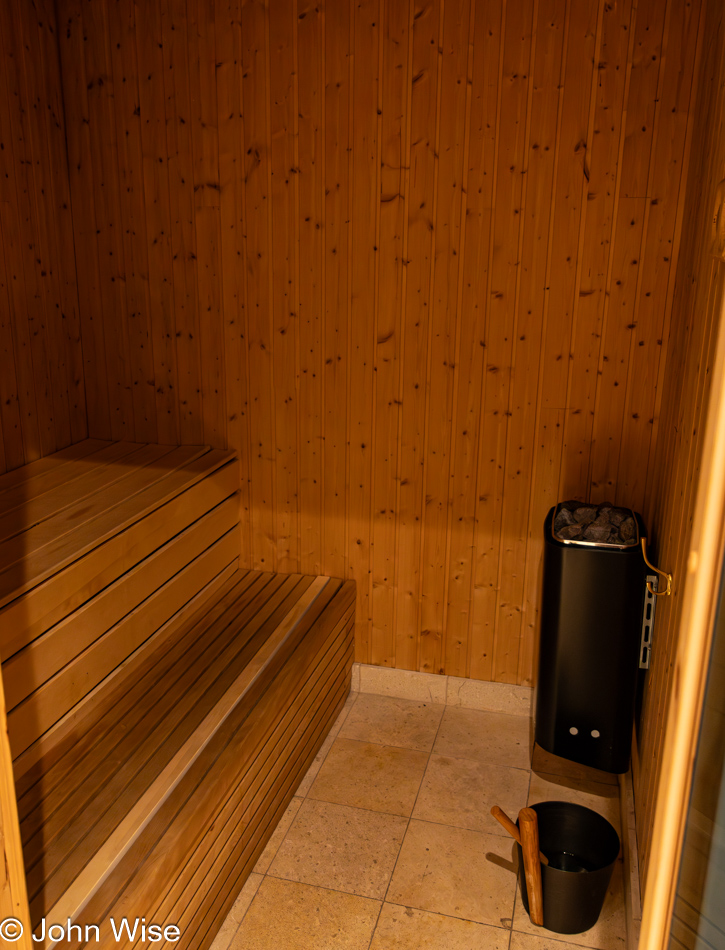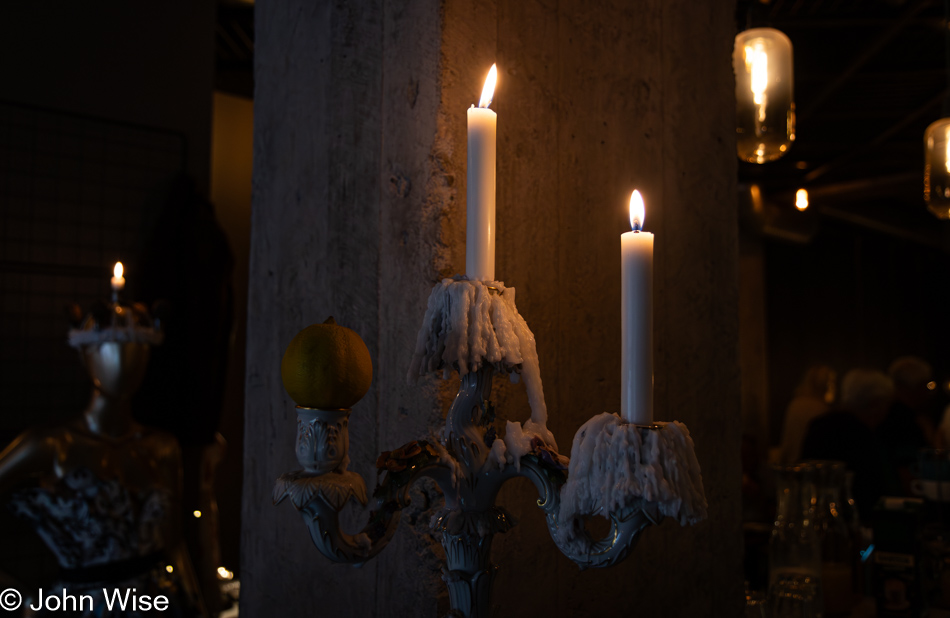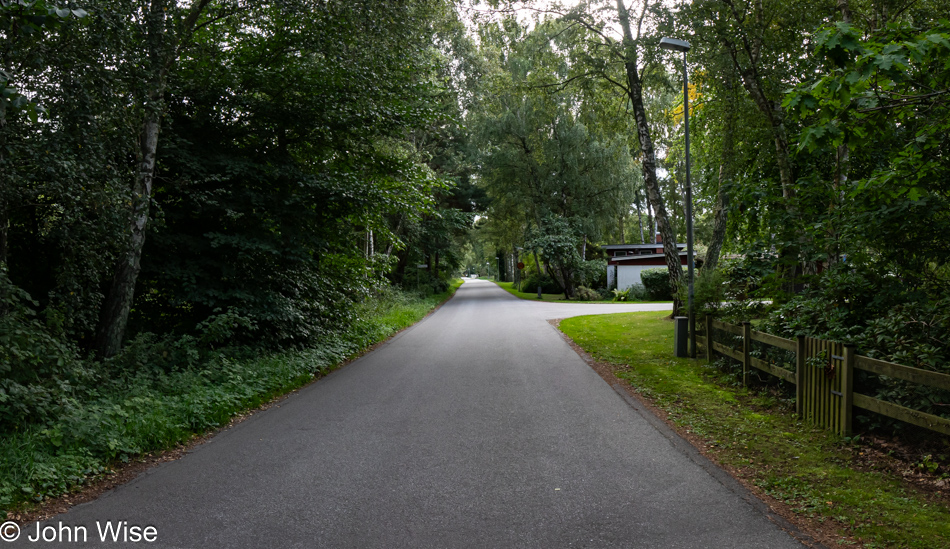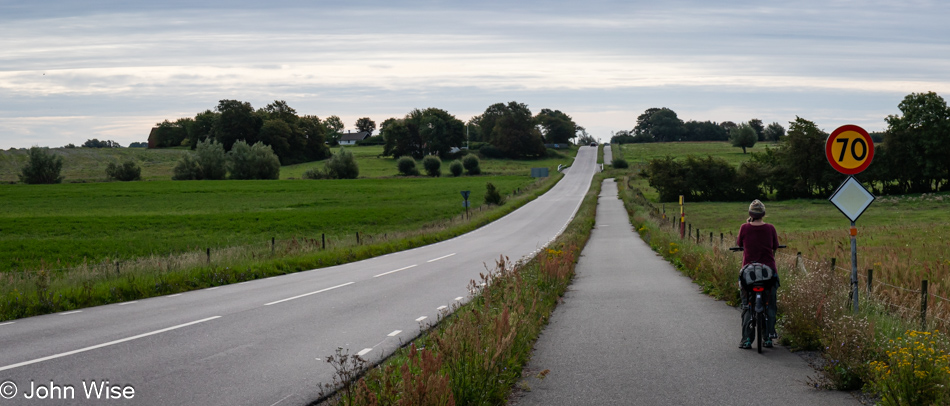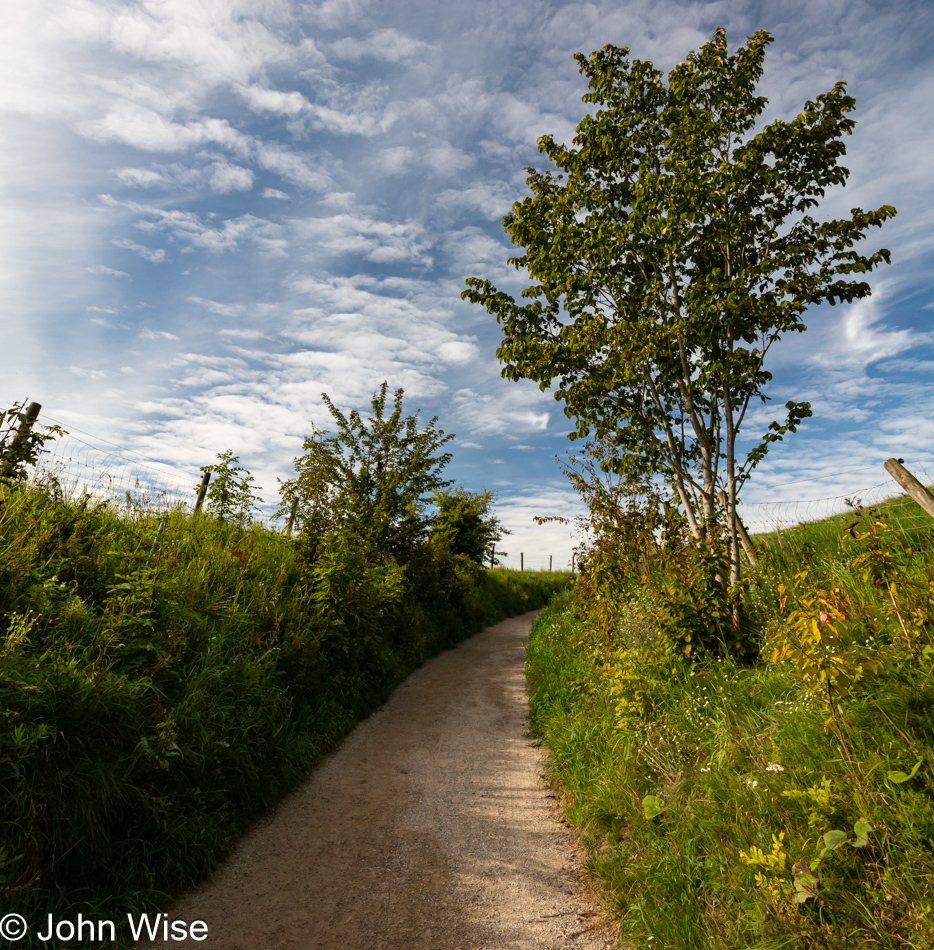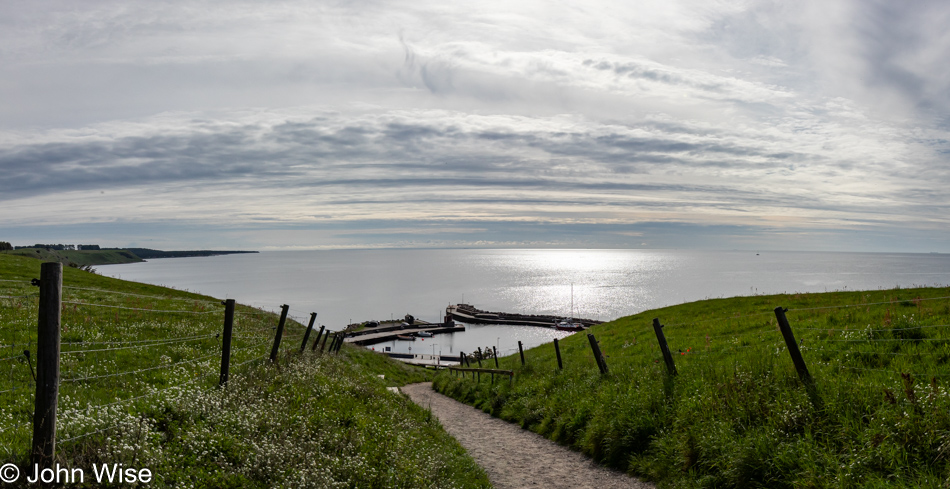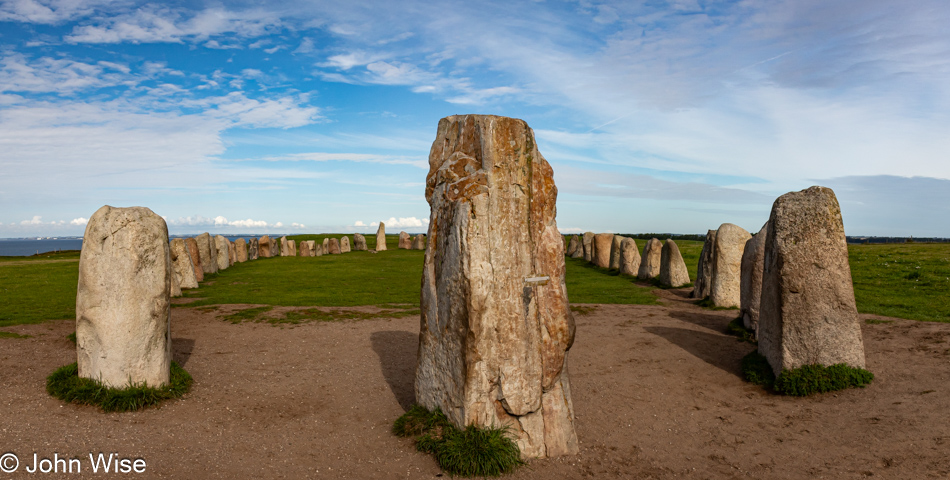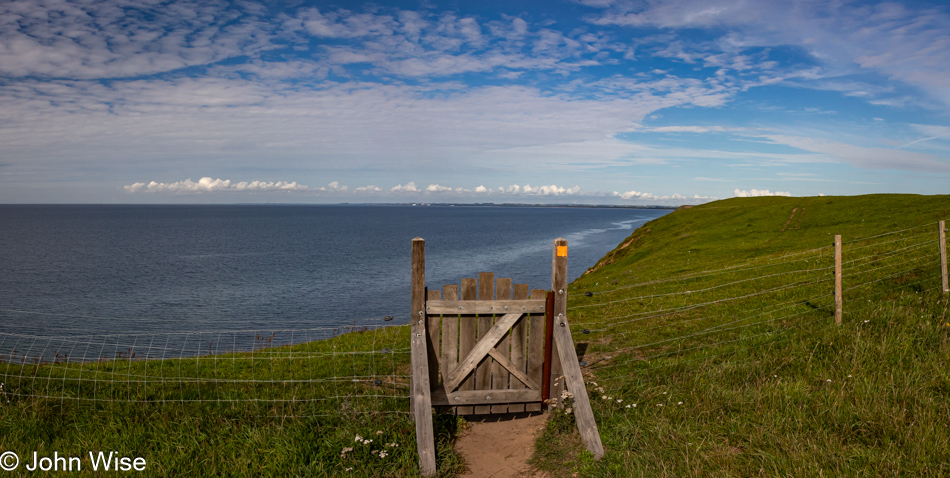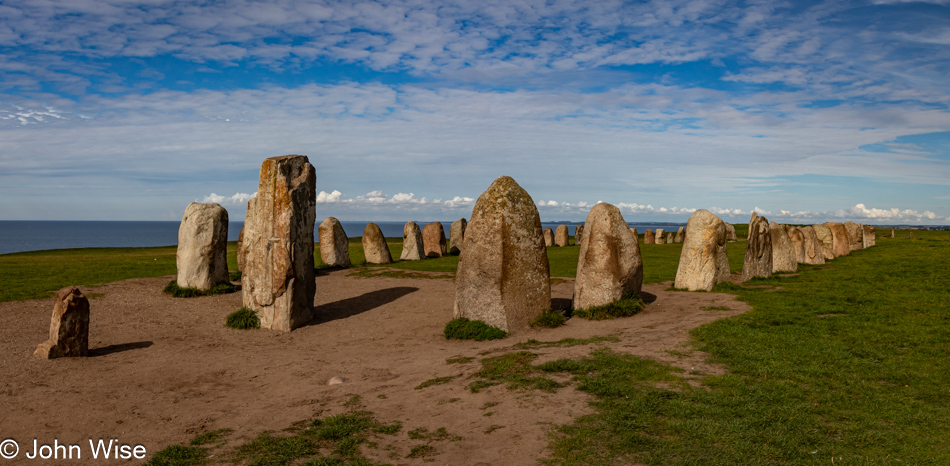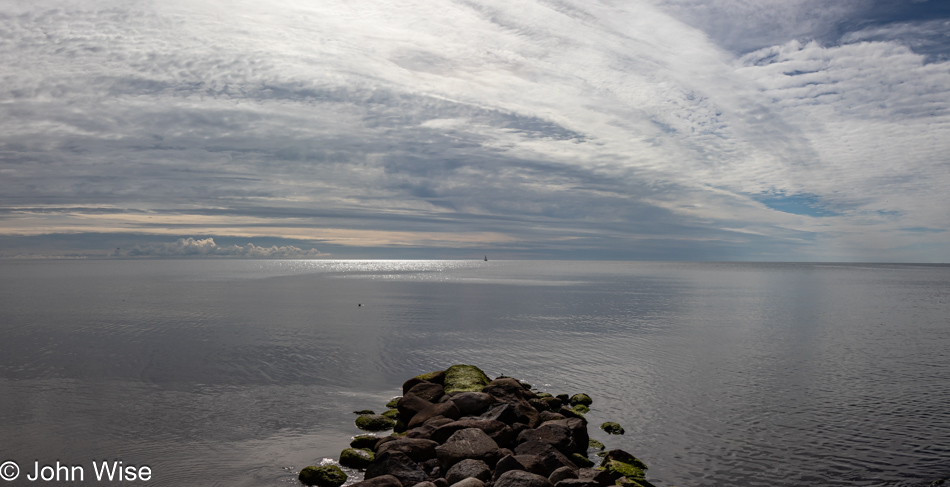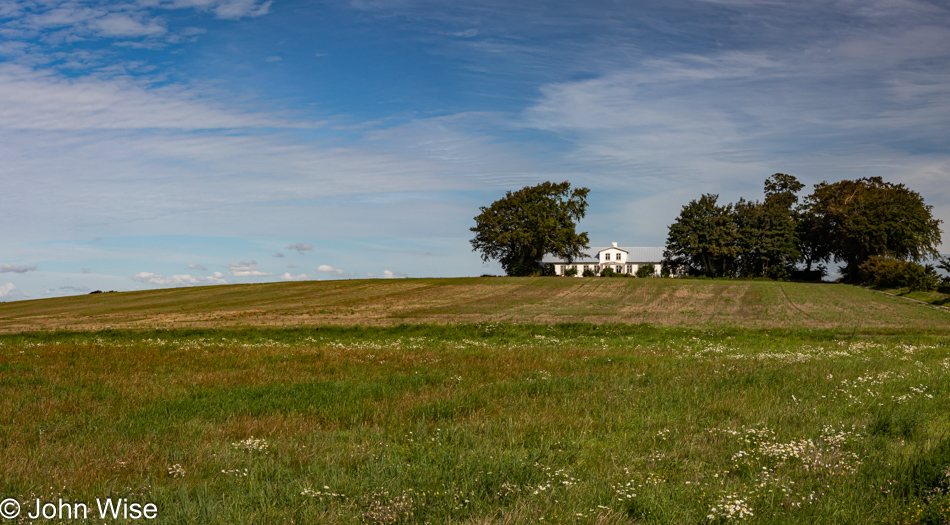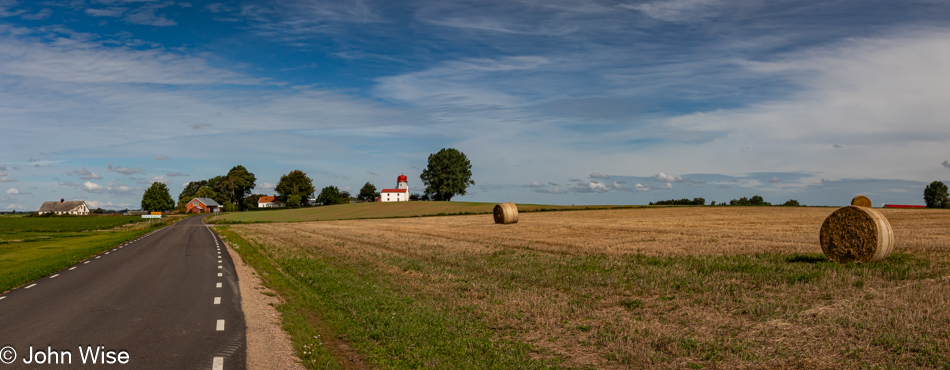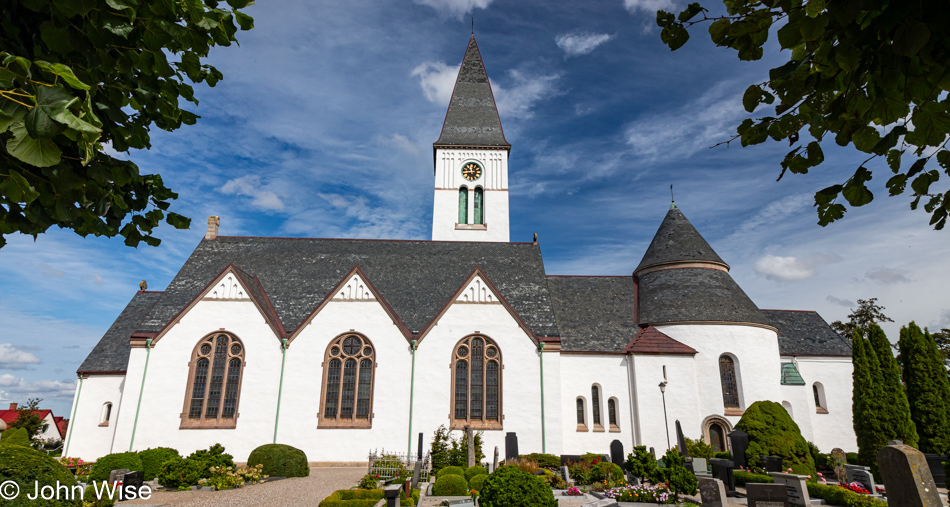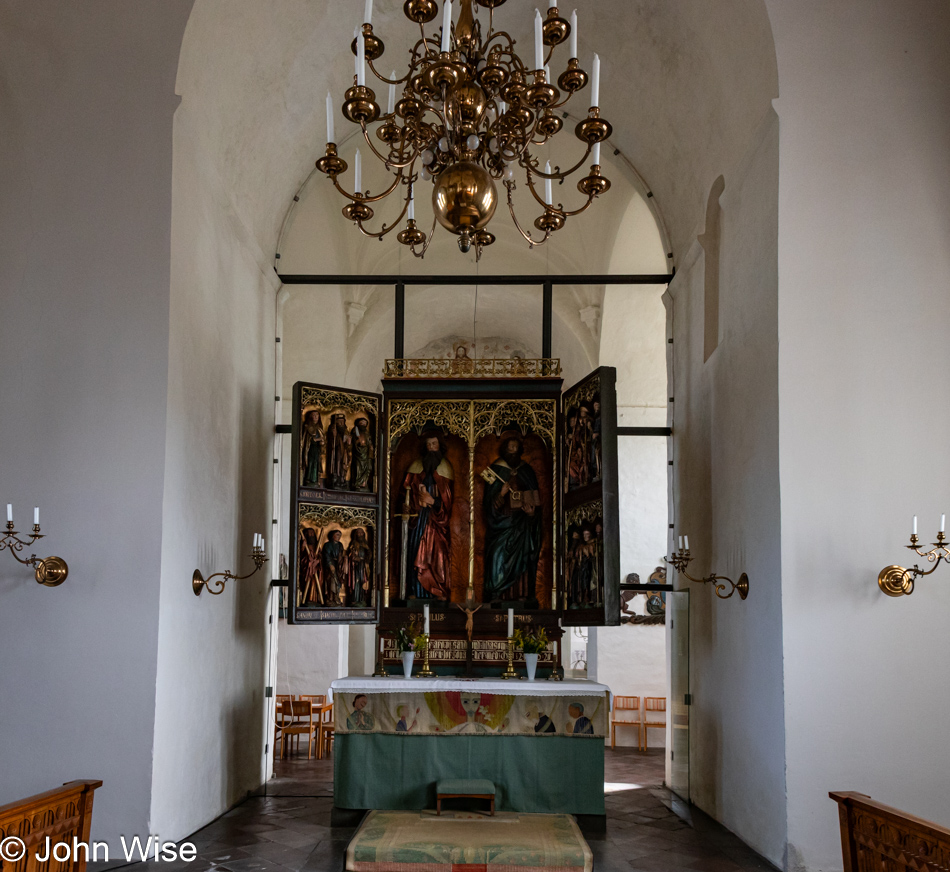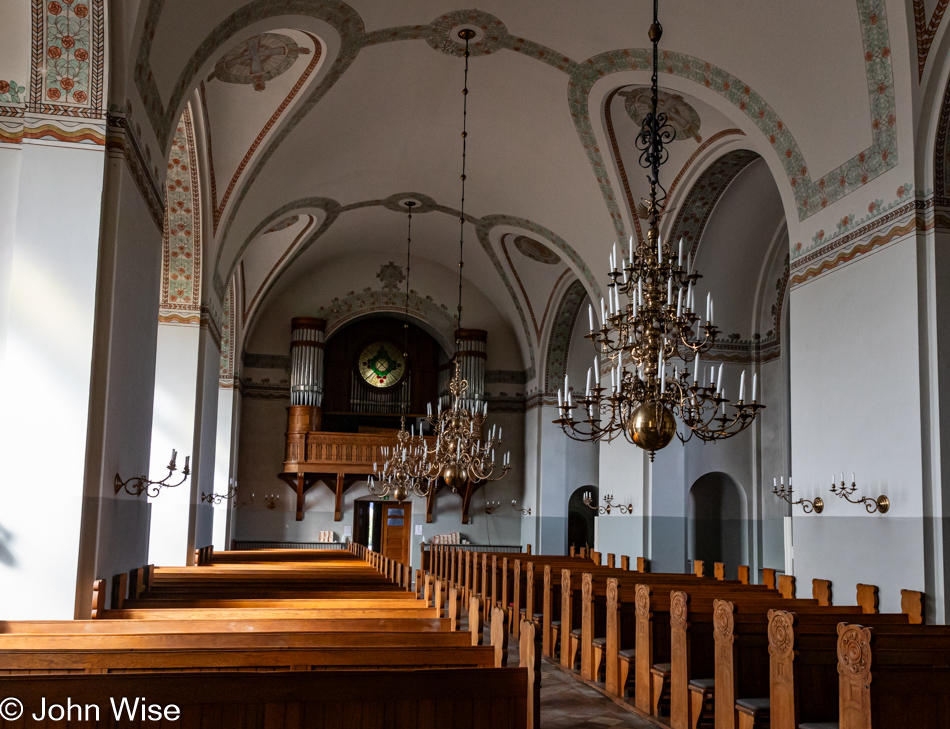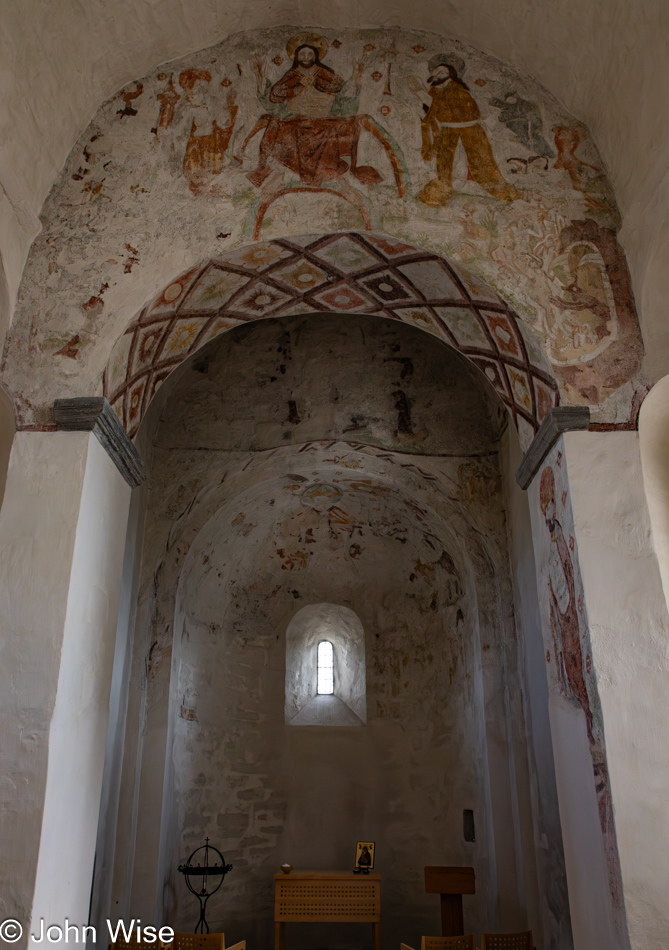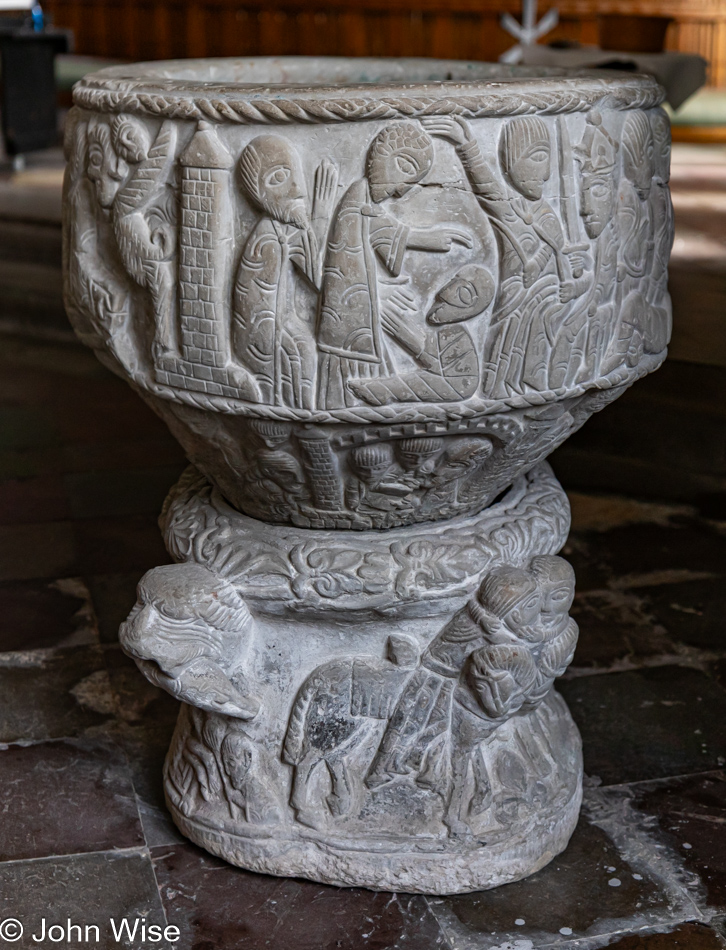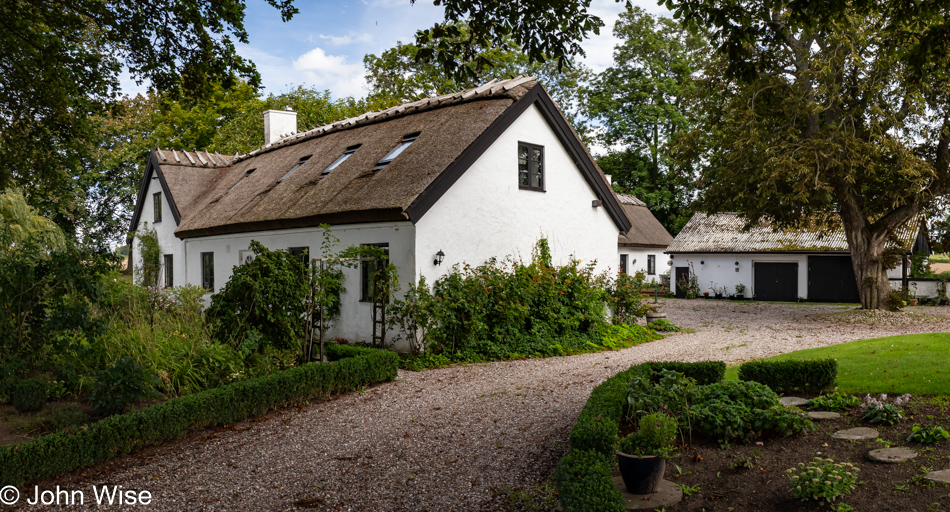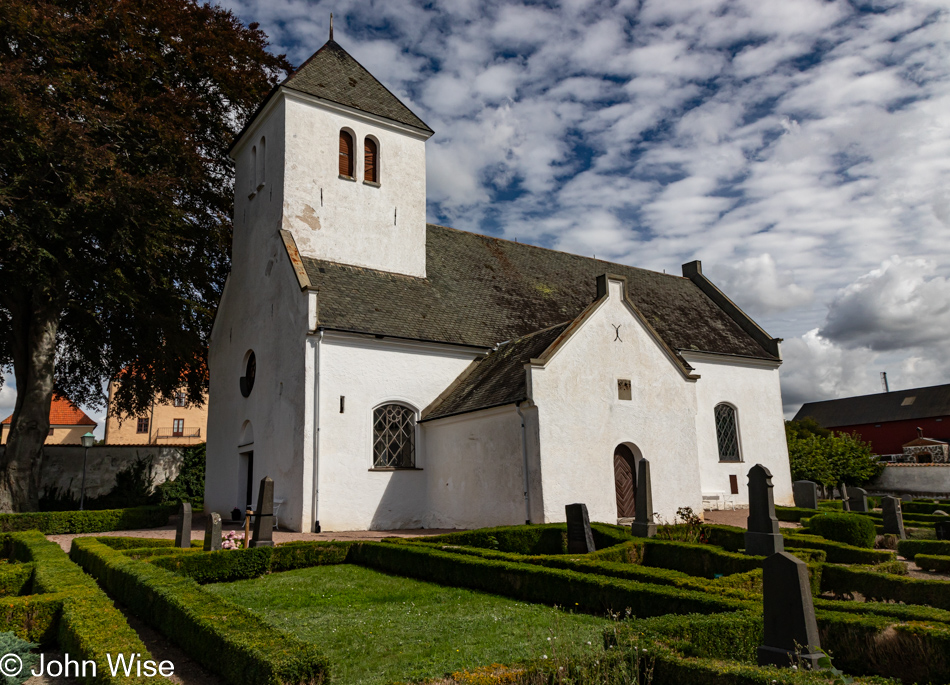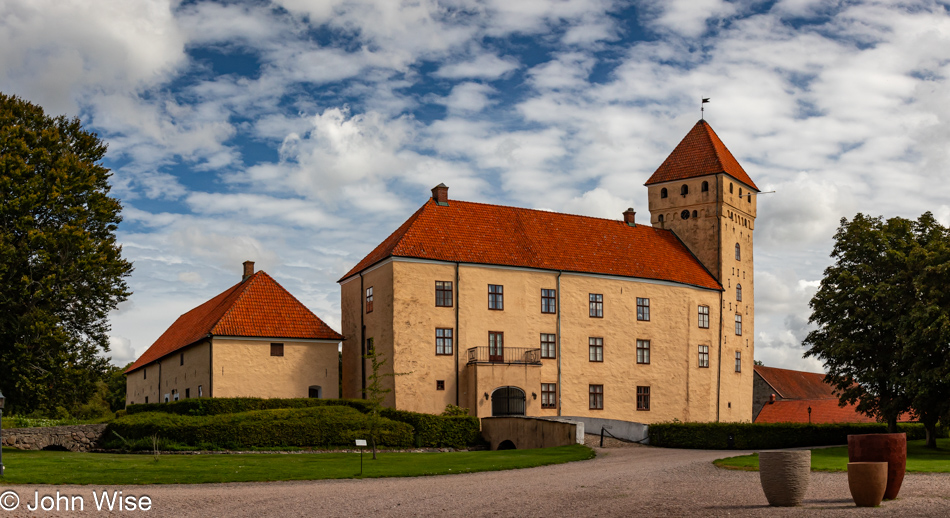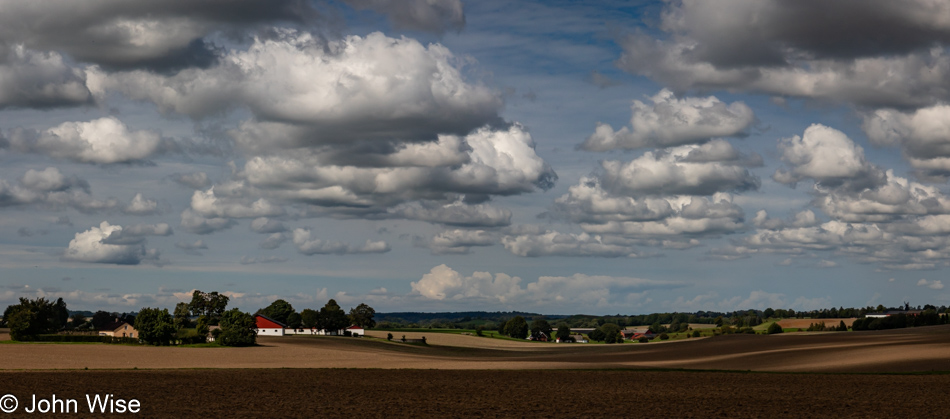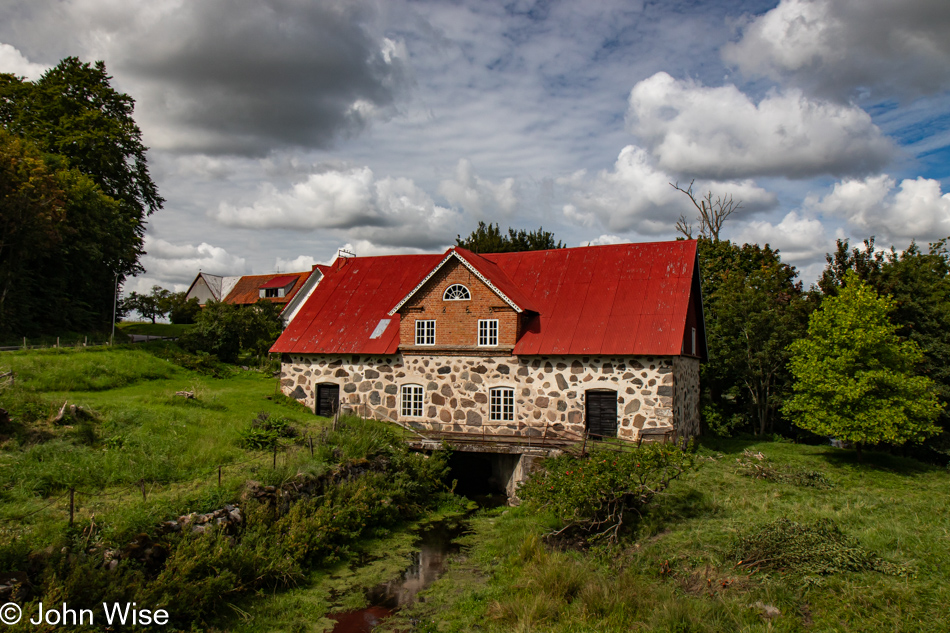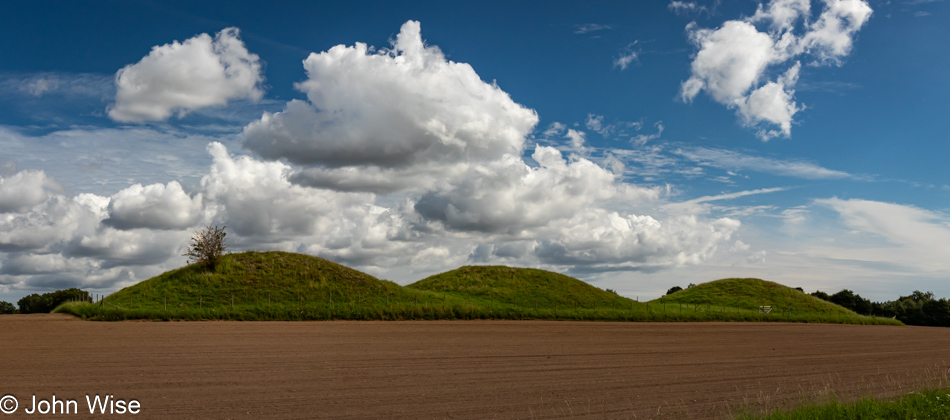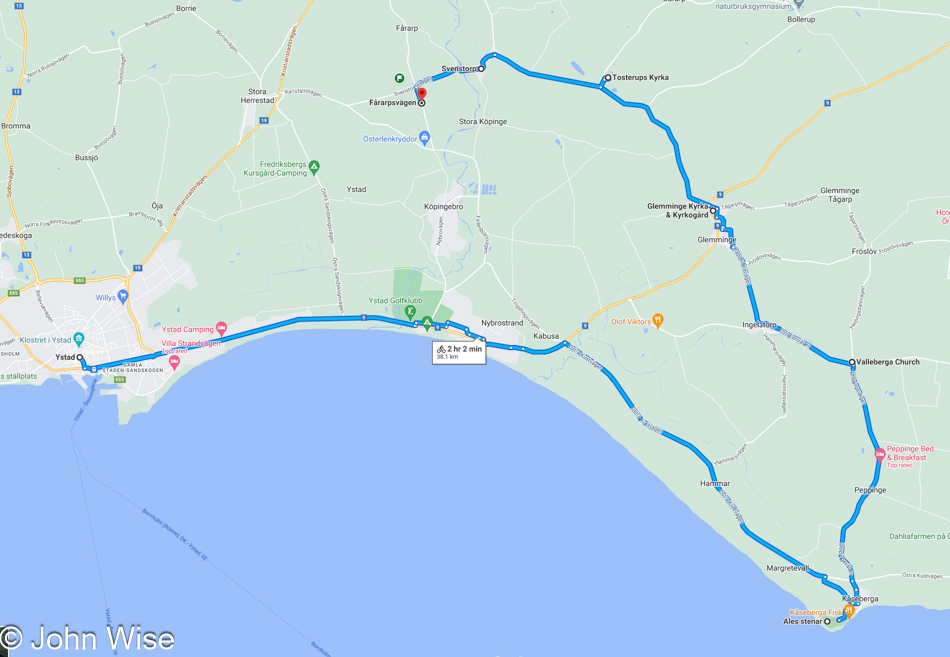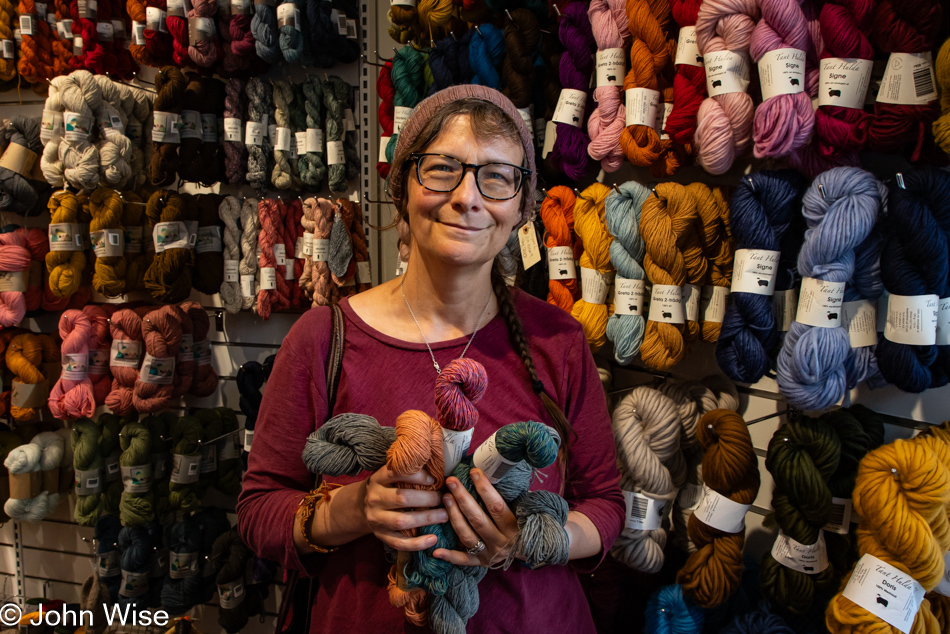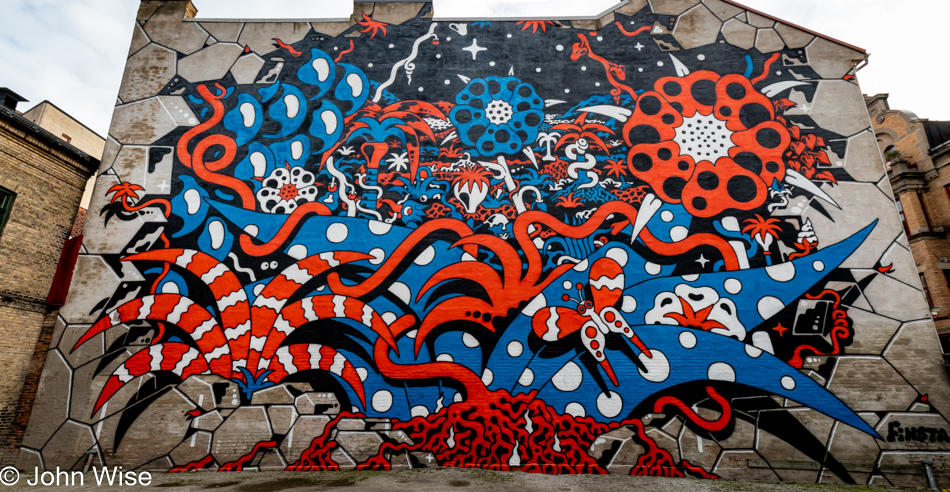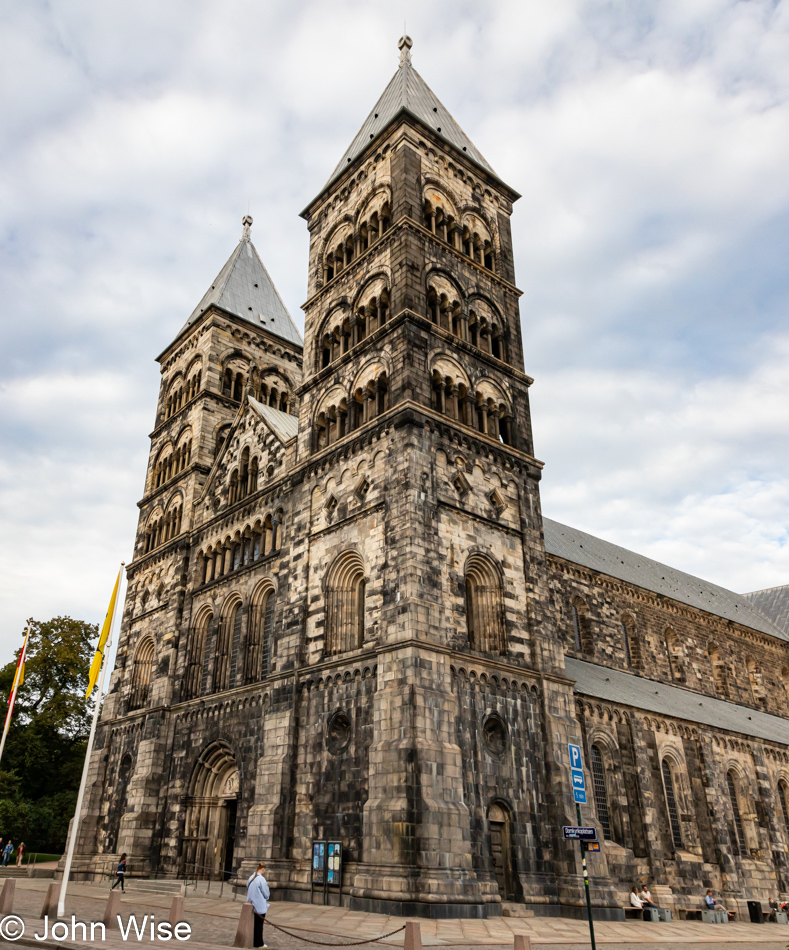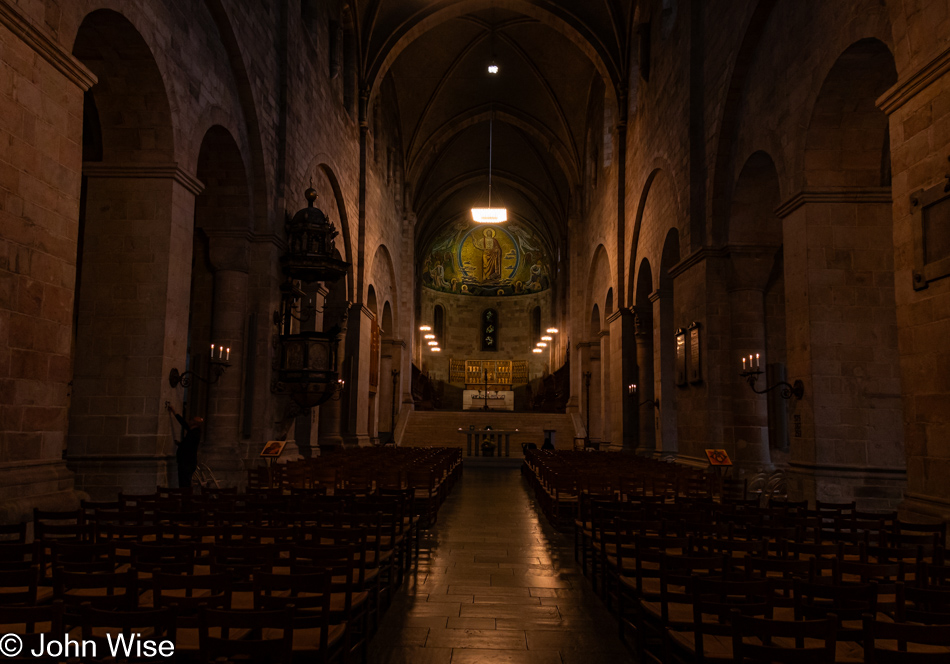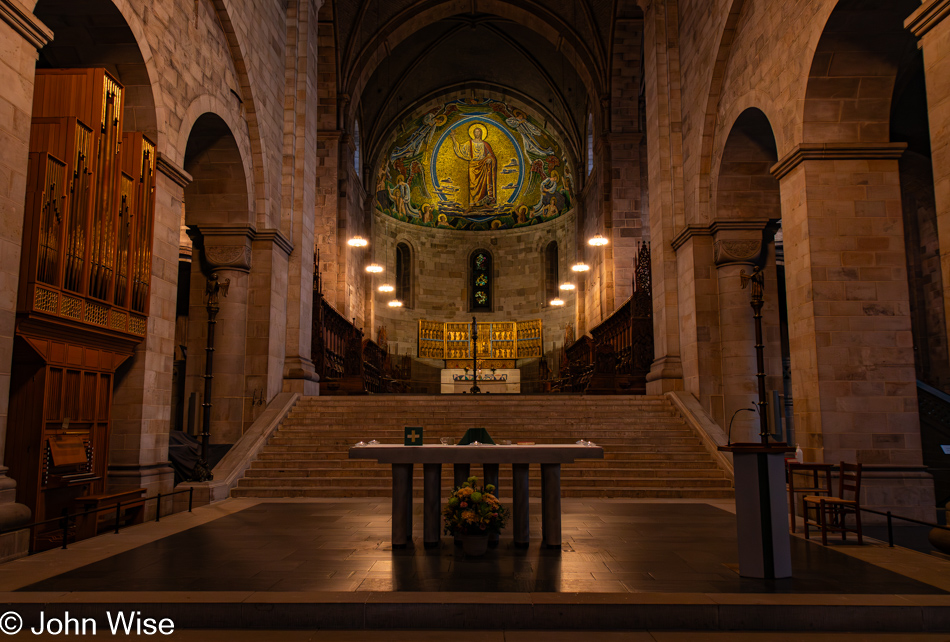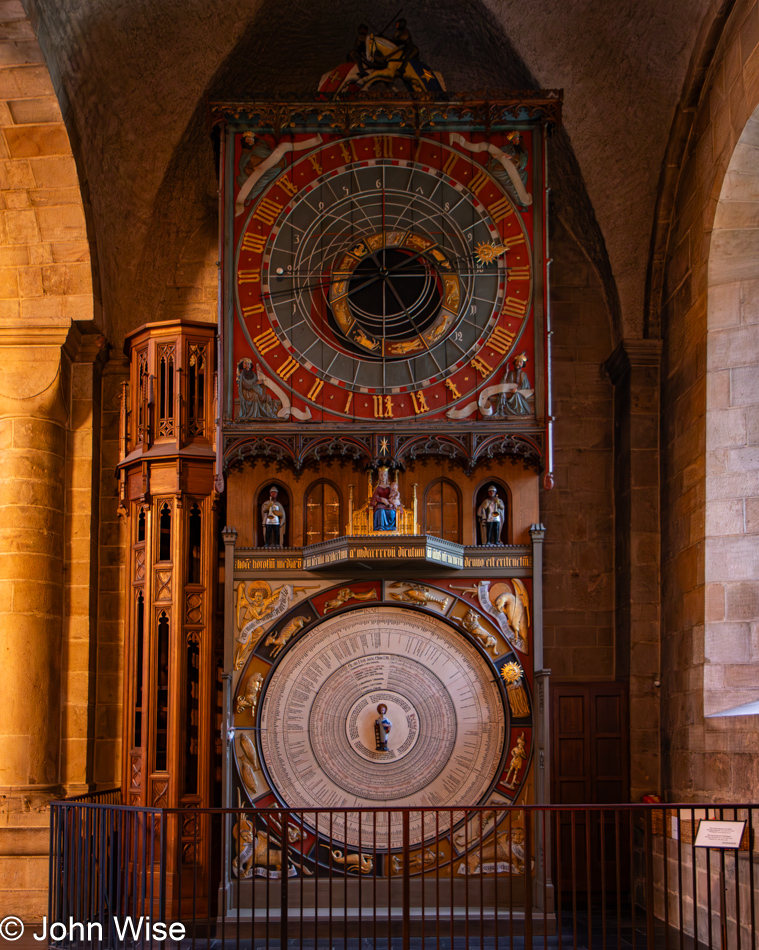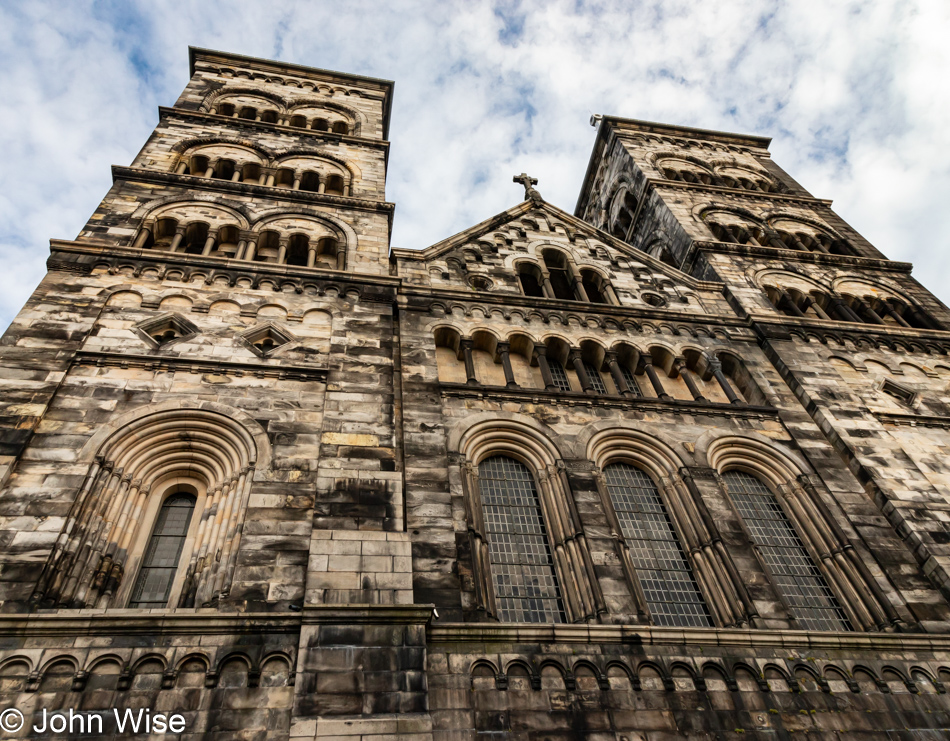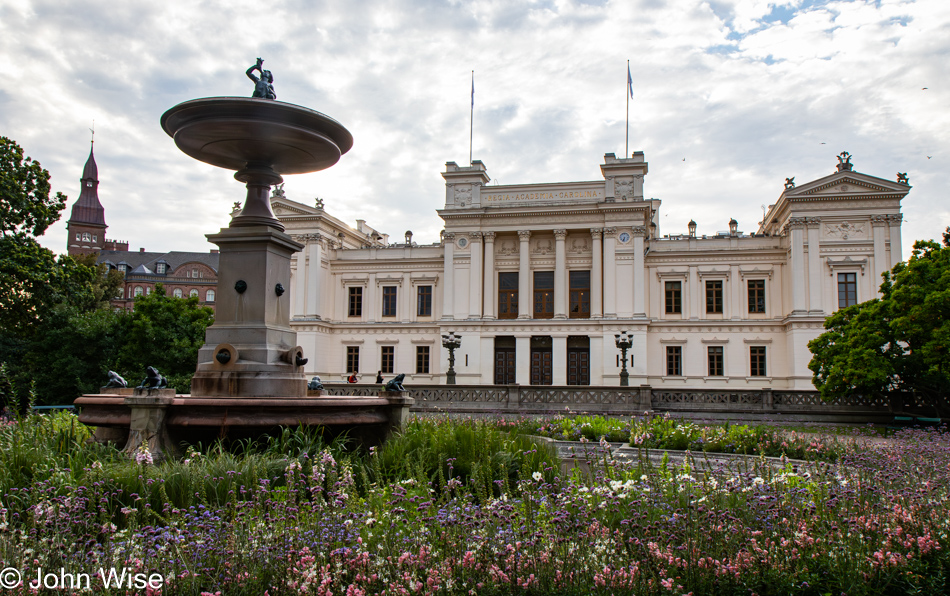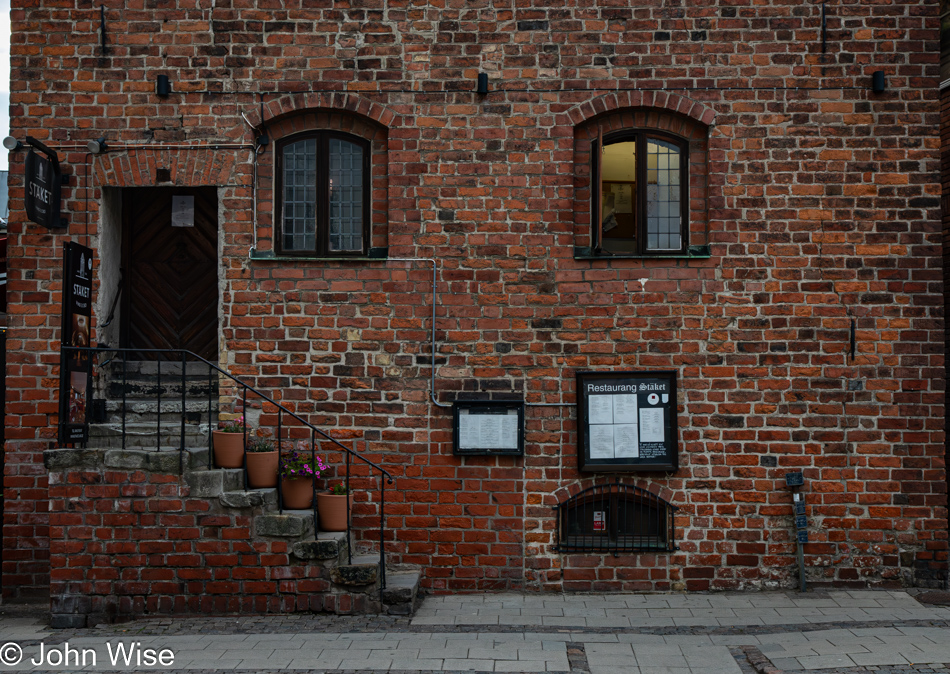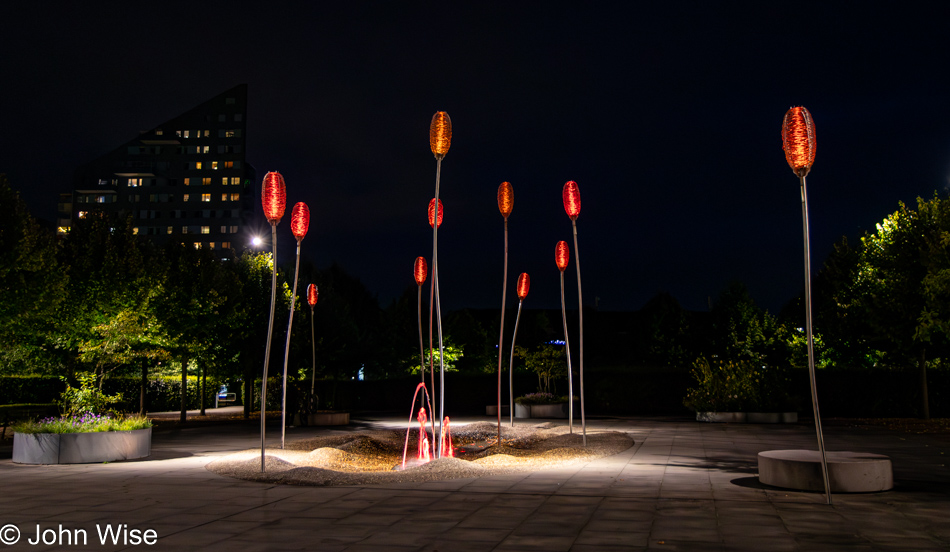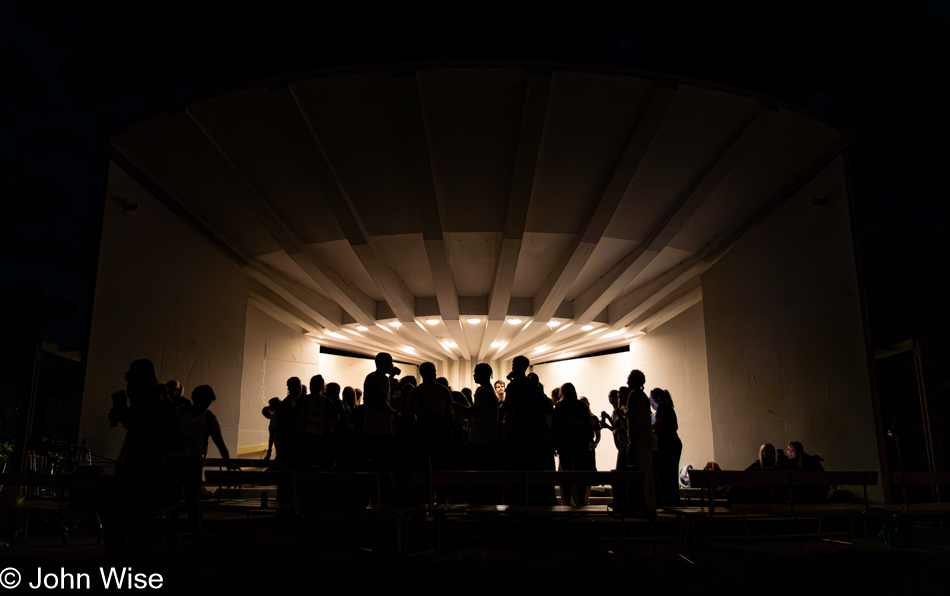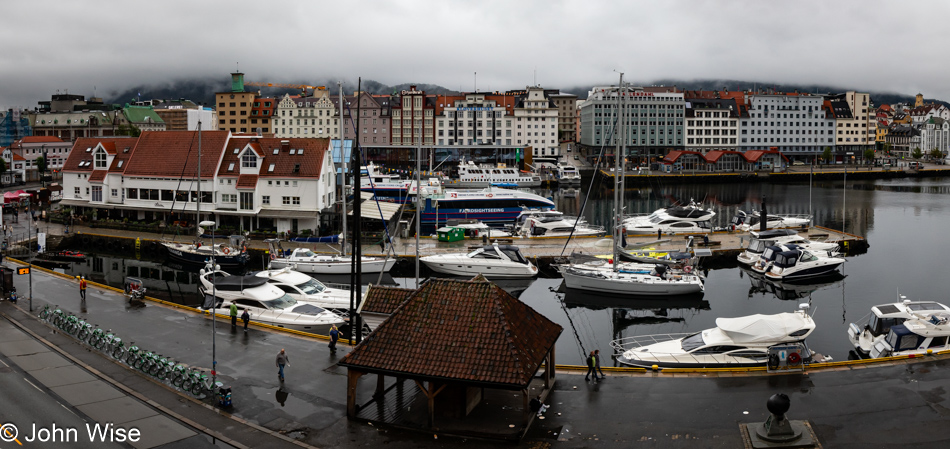
Mornings in our hotels have been the worst; it is the time when we are reminded that many of the guests are American, and we are bombarded with banshee cries and jingoistic claptrap. How do people drop words such as “tactical,” “team,” “situation,” “preparation,” “urgency,” “tactics,” and “security” into casual conversation while on vacation? Maybe they are on a military operation and wearing gym clothes for camouflage in a place where only people from the U.S. are wearing gym clothes and talking like they are operatives on a mission.
Then, at another table, I have to tune into the “History Buff,” dropping a nugget about something of importance regarding the area, but there’s zero context offered to the others at the table. This person shared some random factoid they gleaned from watching Jeopardy or playing Trivial Pursuit in the 80s, and their expertise leaves the others at the table in awe, or so it could be felt by those kowtowing to this self-anointed expert. Meanwhile, Europeans stay in their lane, eating bread, fish, cold meats and cheeses, granola, and fruit. At the hot table are my countrymen, not wavering from the eggs, bacon, potatoes, and pancakes as they prepare to chomp at the trough.
Typically, it is at breakfast that I start writing and try to catch up with what was neglected the day before, thanks to the exhaustion I felt when we hit the room at night. It is in this toxic environment that I run into what one hoped to have left behind on the shores of the U.S. This re-encounter triggers my writing hand to turn a reflexive scribble into a screed that dampens the moments before when blissful contentedness and dreams of a hot coffee were suggesting that a great start to the day was at hand.
Don’t think that my axe is only sharpened for an attack of Americans; I’m equally annoyed by the tracksuit-wearing East Europeans who are loud, use the ugliest ringtones on their phones, and stink of cigarettes. Next trip to Europe, we must avoid large cities or visit nearby cafes for breakfast, regardless of whether the meal is included in the cost of our hotel.
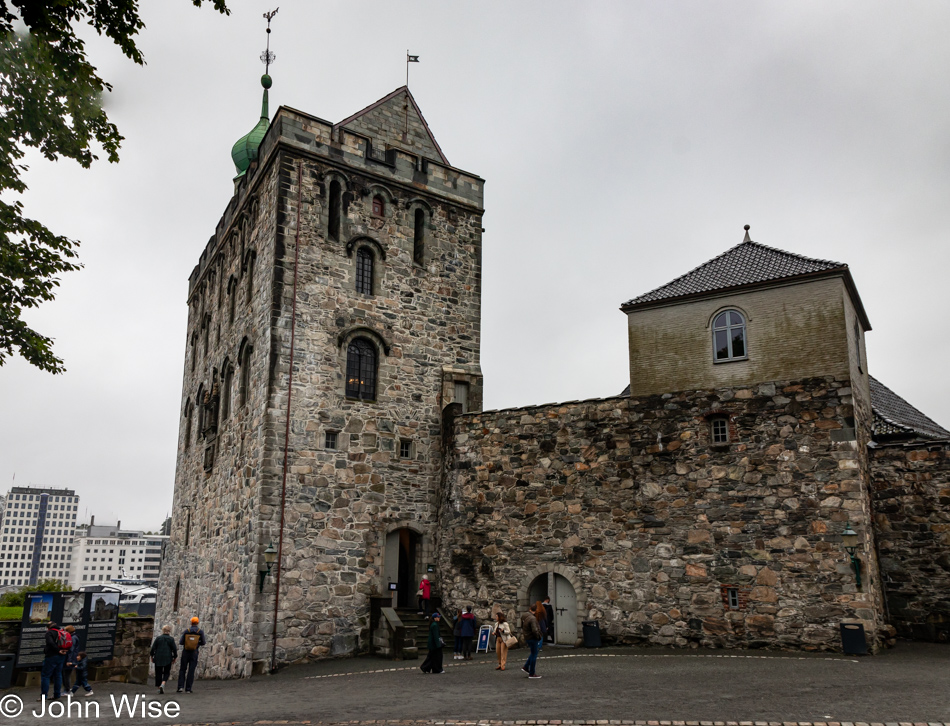
We plan to remain close to the hotel should we need to fetch ponchos or our umbrellas, as the forecast suggests we might be needing them today. With limited post-tourism season hours, we opt to return to Bergenhus Fortress first because Håkonshallen closes at 2:00 p.m. About to pass the Rosenkrantz Tower, we see that we can purchase tickets for both locations, saving us a few NOK, and with plenty of time to spare, we visit the tower first.
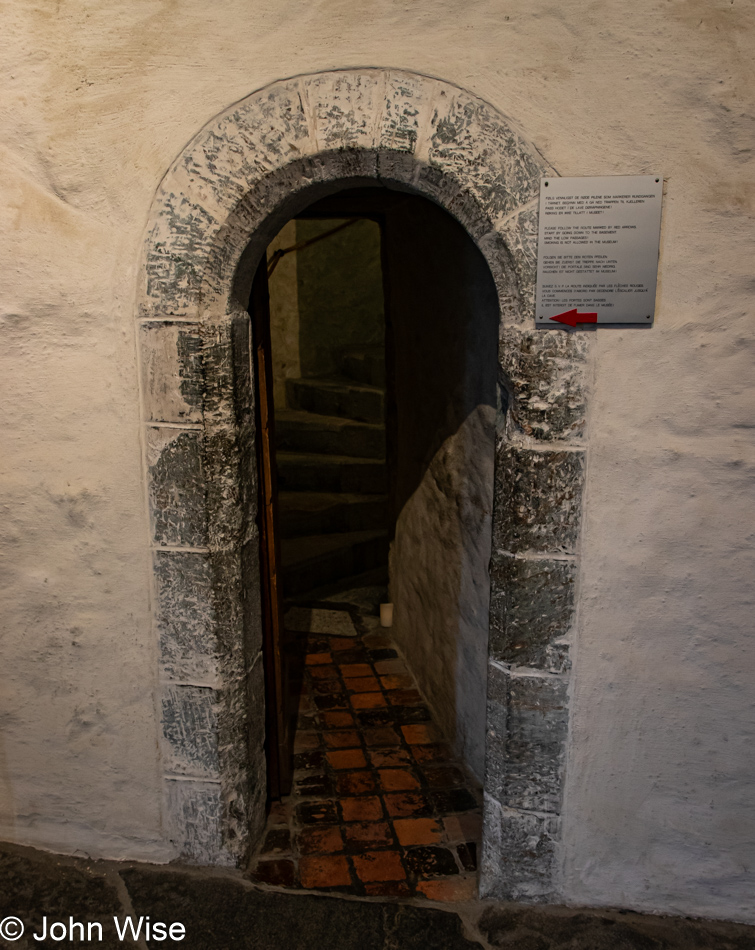
A sign in front of the tower told that the time was quickly approaching and a full renovation was becoming inevitable. Like in so many places across Europe (seen firsthand and read about in our post-COVID-19 world), renovations and repairs seem to be happening everywhere all at once. At the Bryggen area near our hotel, four of the historic facades are wrapped in scaffolding while preservation work is underway, and, as you’ll remember, we were denied the opportunity to see the Oseberg Ship at the Viking Ship Museum in Oslo since that destination is closed until at least 2026. At least that’s not quite as bad as the Pergamon Museum in Berlin, which is now closed for renovations through 2037.
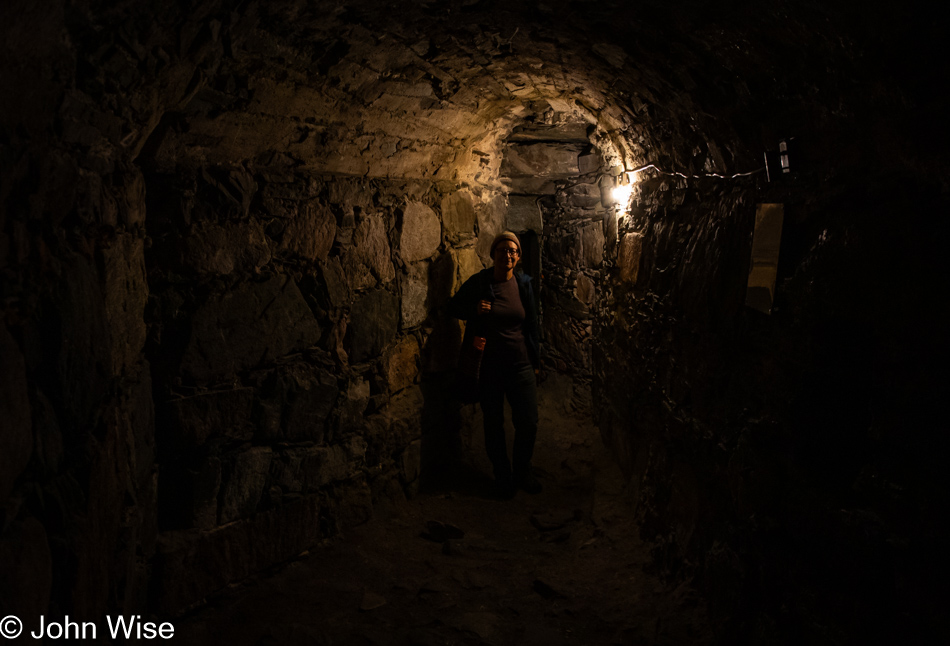
Here in the basement area of the tower with a lack of windows, the dungeon vibe offers me a happy place but also one of claustrophobia when I consider that the tower sustained heavy damage back in 1944 when a German cargo ship carrying 120 tons of dynamite exploded in the harbor, enough to destroy much of the fortress, blast away the southwest wall of the tower, collapse the floors, send the roof into another dimension, and gut Håkon´s Hall. By the way, the vibe I’m describing fits because this lower level is the dungeon.
Rosenkrantz Tower was built back in the 1270s, and the Medieval feeling of the place is alive and well with narrow passages and poor lighting. The inner core of the tower is supposed to be the original from the time King Magnus Lagabøte of Norway ruled from here, but by the 16th century, sheriff Erik Rosenkrantz added to the tower while Norway was under Danish rule and hence the name that has remained to this day.
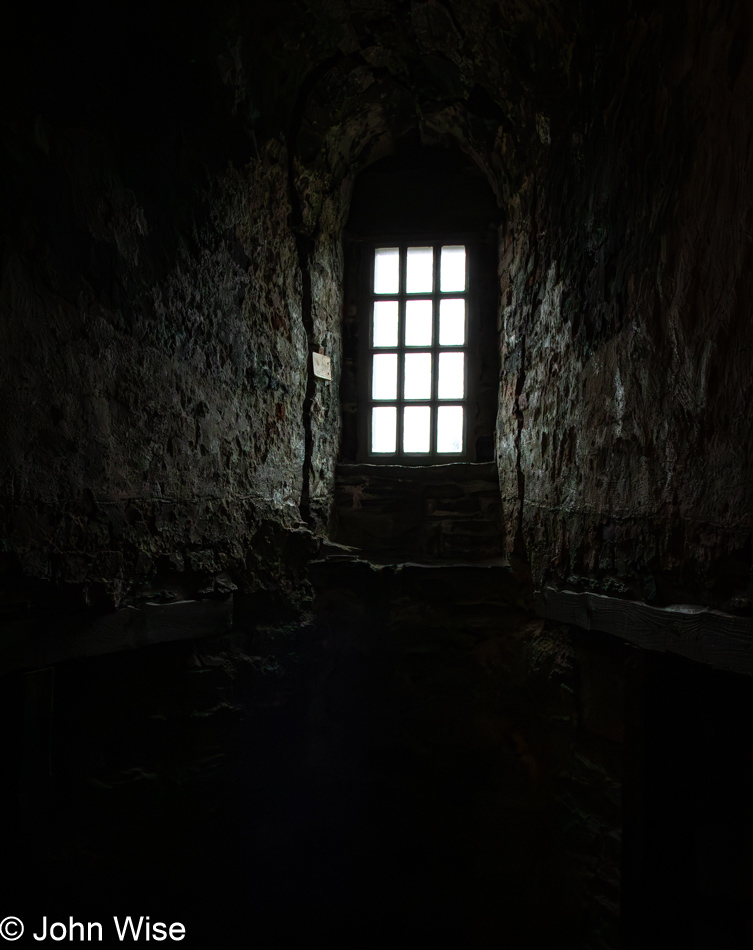
The importance of creating opportunities to see for ourselves the important places in our histories where events were set in motion and a patchwork of stories emerged cannot be understated. It is up to us to visit our pasts and drag the various threads forward if future generations are to piece together new stories touching on and learning from past successes and failures while also threading the complexities and uncertainties into new experiences that will forge the path for others to take.
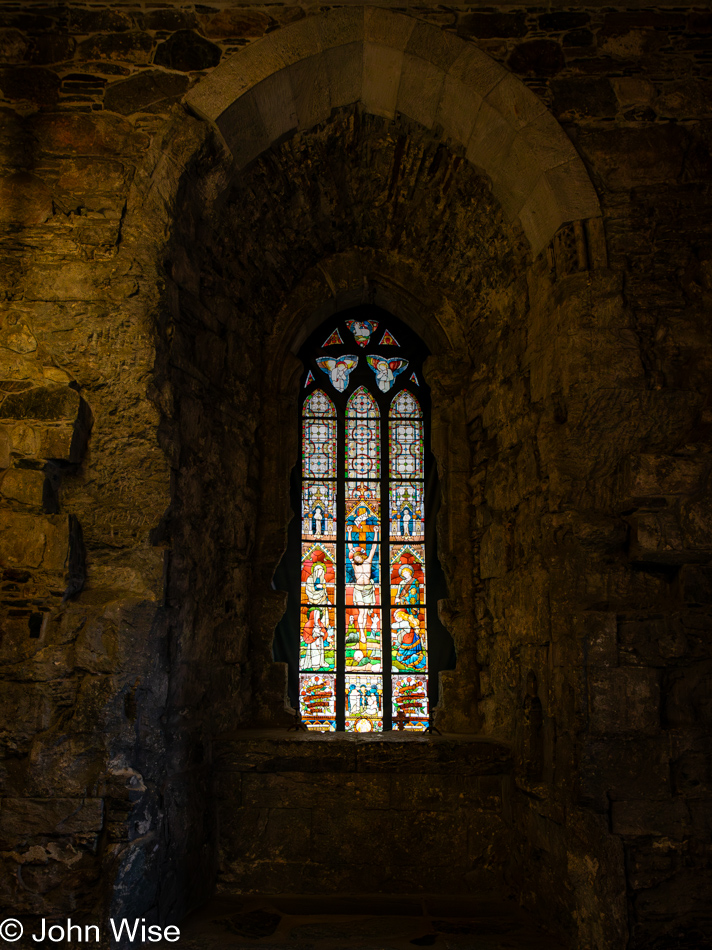
I can be disappointed at what I cannot see, but I can also be grateful for the millions of things I never anticipated encountering, such as the love I share every day and every moment when Caroline is in my thoughts. Taking time and spending money to read, gaze upon the sea, walk up narrow dark stairways, enter a church, look upon a piece of art I could have never imagined seeing with my own eyes, or try to understand the myriad of impressions streaming into my senses is already the most incredible gift that in my view would be a wasted opportunity if I were not somehow trying to give back to humanity the opportunity afforded us.
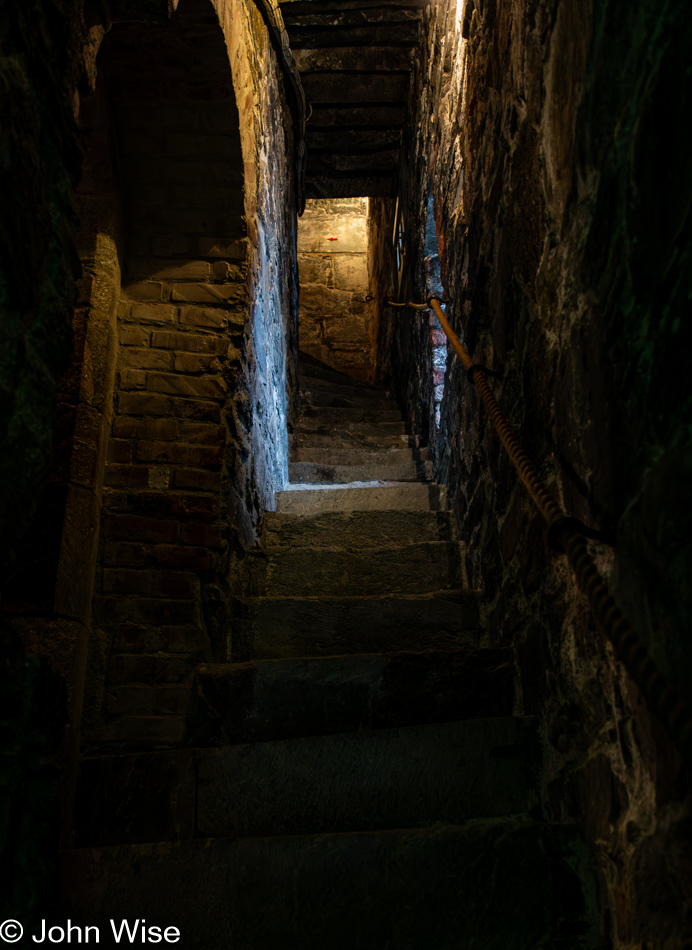
When it comes to writing about these experiences, there’s a certain mystery as to what will show up in the post. Like ascending these stairs, travel takes us to places that cannot always be fully anticipated before we arrive at the ultimate destination. Our itinerary for Bergen included 18 potential locations or activities to possibly take in, but which ones we’d fall into was ambiguous. By choosing one of the suggestions or deciding to just wander about, we would, in any case see new things and places. This is where my reference to writing comes in because, like during travels, I do not have time to linger, nor can I return to a place for greater familiarization shortly after our visit; I have to keep going forward. As quickly as I can, I try to capture impressions before moving on to the next place. The luxury of knowing what I’m encountering with any intimacy will have to wait for another day when greater consideration can be given to the subject matter, landscape, or idea.
Consequently, fleeting impressions become memory salad. Images and words are tossed into a blender, risking to turn vacations into a gray slurry of the things that were seen, touched, heard, tasted, considered, read, and spoken of. While in the act of spinning, top-like, through the experience, I’m grasping at the most notable moments, racing to pull them into the area of my mind that might hold them tight for more than a second or two. And then, when I’m home, assembling these illustrated musings that reflect how we careened through a landscape like a pinball moving over its playfield, I must move quickly before falling through the drain of forgetfulness and ending the session. Nobody gets to play forever as everything ultimately comes to an end, be it the end of vacation, the end of the sentence, the end of a thought, or the end of a blog post that signifies it’s time to move onto a new game, a new story, a new adventure.
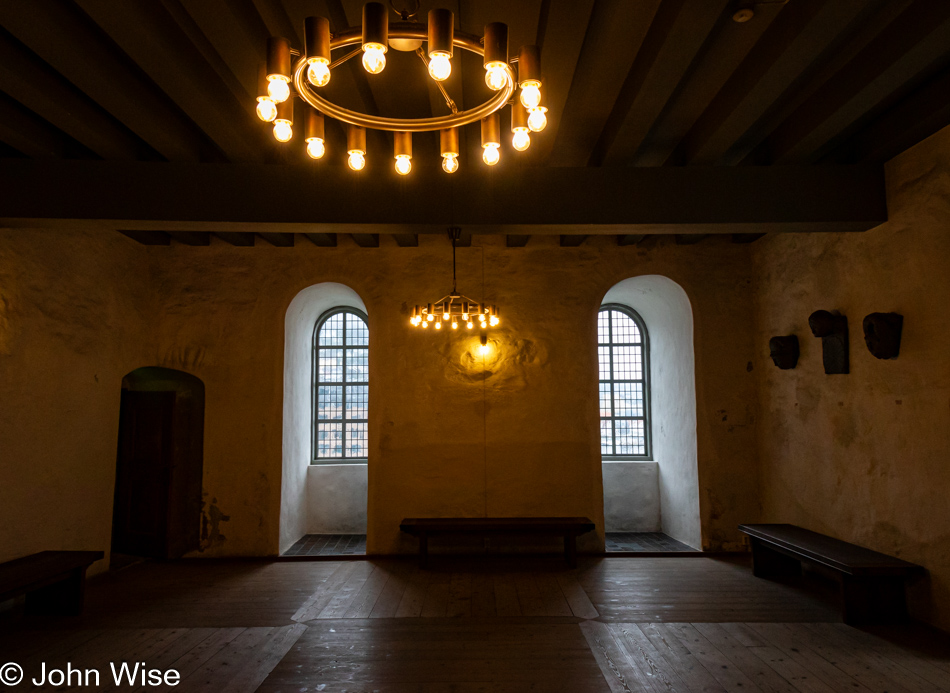
You might think that this is our good fortune because we were traveling, but what you may not be considering then is that we had to step into these adventures with minds tuned to extracting value regardless of the situation nature and chance were cultivating for us. We do not enter a space with three-foot (one-meter) thick walls, wooden floors, and the ambiance of more than 700 years of collected time to have them generate enlightening impressions that allow me to simply push out these narratives. We return home and have to reconcile who we were before the experience, what we gained, and what we desire to invest in ourselves to inflate memories into giants that tower over our lives.
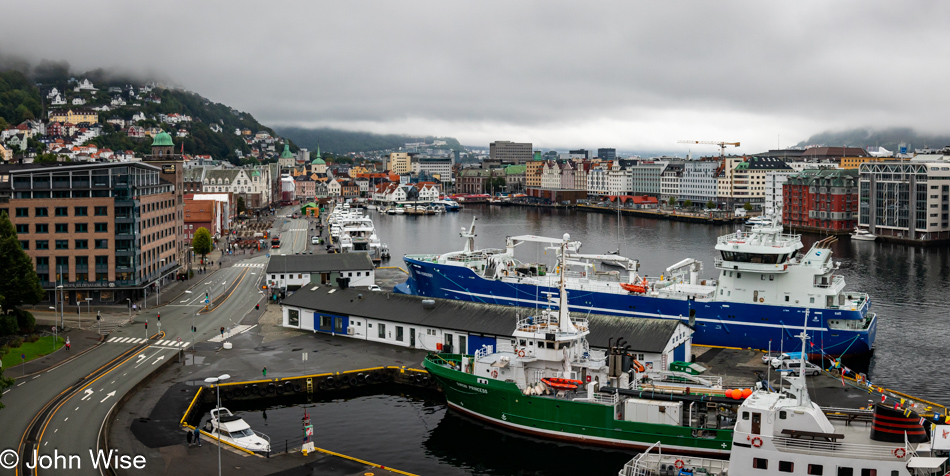
From the past, we attempt to see and define our future. From the top of the medieval Rosenkrantz Tower, we can look at the combination of new and old and be thankful that the ages can coexist. This is a human lesson lost in consumption that only sees the transaction as a means to the future. We are blind and locked in the dungeons of capitalism while the cargo ship of climate change is exploding to take this all away before the majority of humanity understands what they lost because they didn’t know what they had.
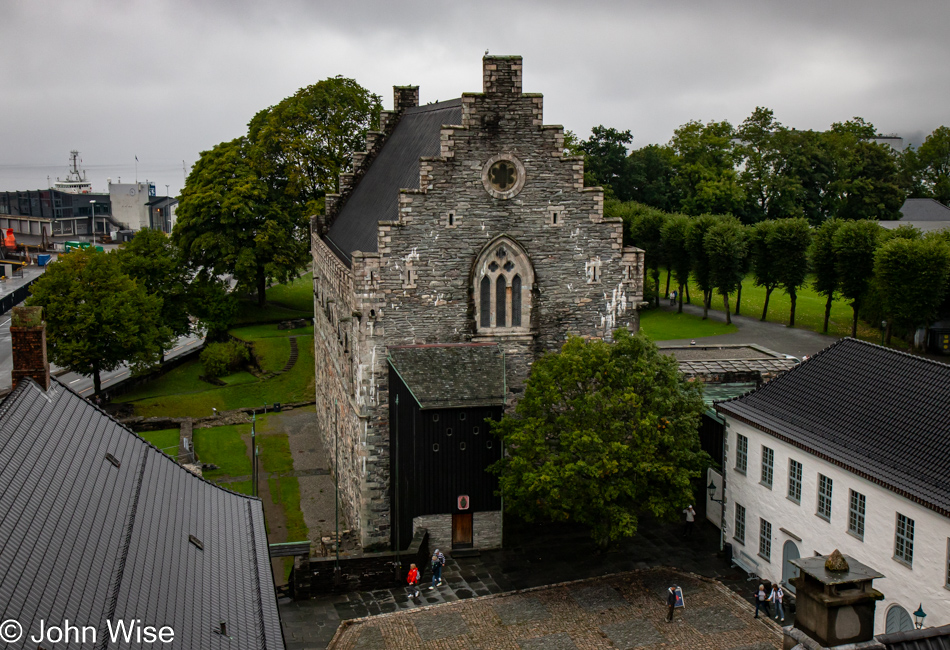
On the other side of the tower lies Håkon’s Hall, originally built between 1247 and 1261 by King Håkon Håkonsson. Bergenhus Fortress was the royal estate, and the hall was one part residence and one part banquet hall.
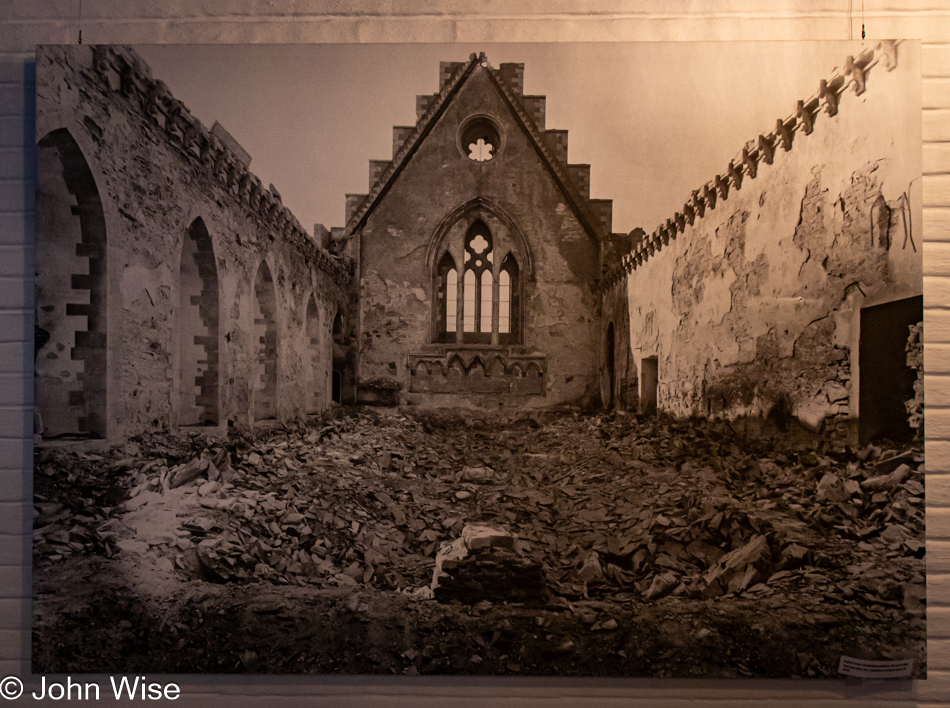
Standing next to the nearly demolished Rosenkrantz Tower, Håkon’s Hall didn’t fare much better from the dynamite explosion in the harbor, as seen in this photo taken after the event. After 17 years of meticulous restoration, the royal facility was reopened in 1961. The 700-year-old icon of Norwegian history was once again a national treasure open to all visitors.
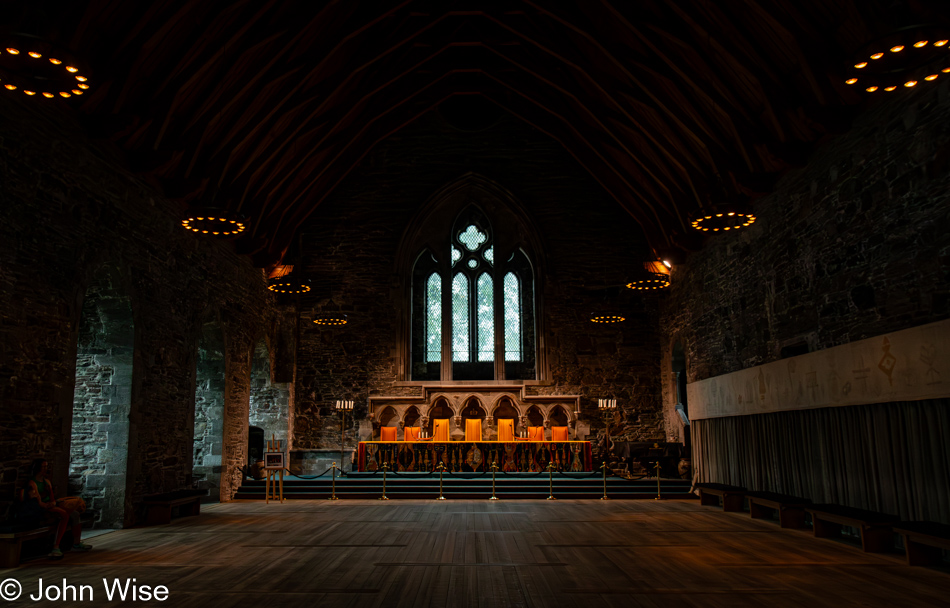
A grand ceremony presided over by Crown Prince Olav ushered in the reopening of the hall. The Bergen Philharmonic Orchestra was on hand to perform Edvard Grieg’s Incidental Music for Peer Gynt while dignitaries and others attended the festivities. There’s a photo in the hall showing the pomp and circumstance that was brought to Bergen on that day, but you’ll have to visit Håkon’s Hall to see it for yourself.
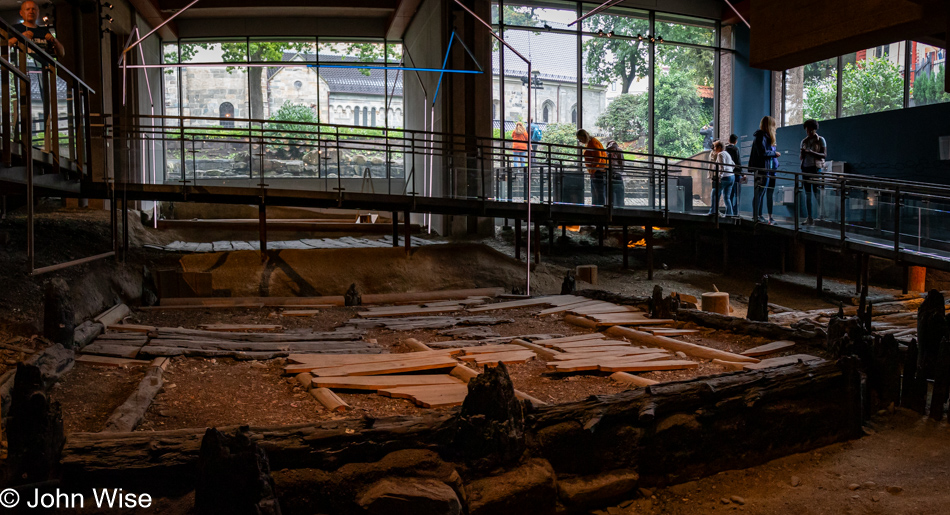
Not ones to stand still unless it’s time for a fika or pølse, our next stop was at the nearby Bryggens Museum. While difficult to make out, metal rods are hanging over these foundations to show where walls, doors, and roofs would have been of these homes in the early history of Bergen. From the timbers that still exist, it was obvious that these buildings were destroyed by one of the many fires that decimated Bergen repeatedly over its 1,000 years of history.
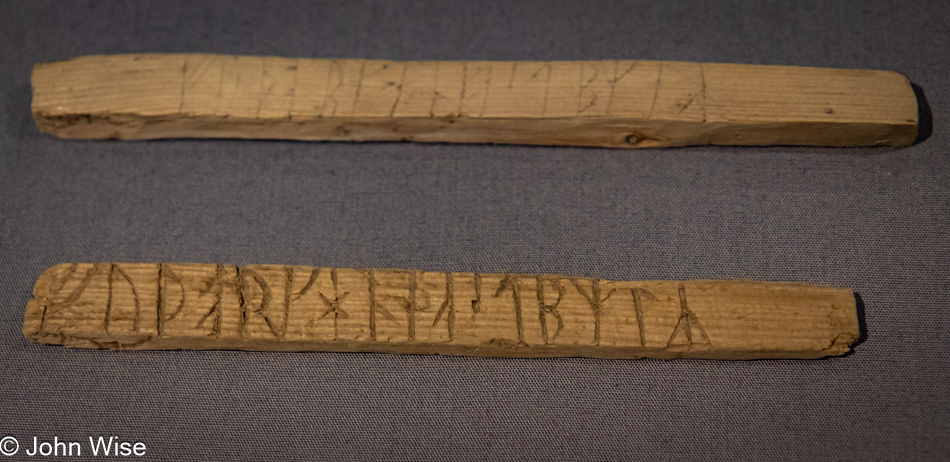
WARNING: Strong language in the following paragraph could be offensive to some readers – the translation of 1,000-year-old rune sticks can be colorful and downright vulgar.
Runes weren’t only used on stones; they were also carved on wooden sticks left in places of socializing, such as the pub where teases, insults, threats, or invitations were left for other patrons. Some of my favorite rune stick translations are “Horrid is he who brings drink to the cunt,” and “Sit down and read the runes, stand up and fart.”
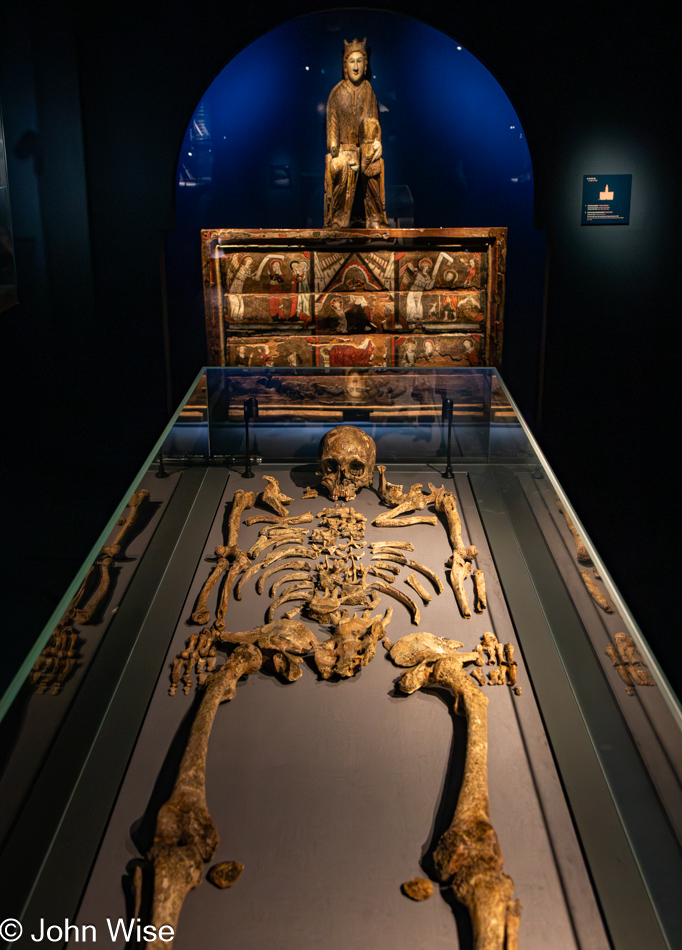
Behind the skeletal remains stands an altar from the Dale Church in Luster, Norway, while the Madonna came from the Granvin Church, which is now a part of the town of Voss that we passed through yesterday. Regarding the human remains, all I can add at this time is that they were not my own.
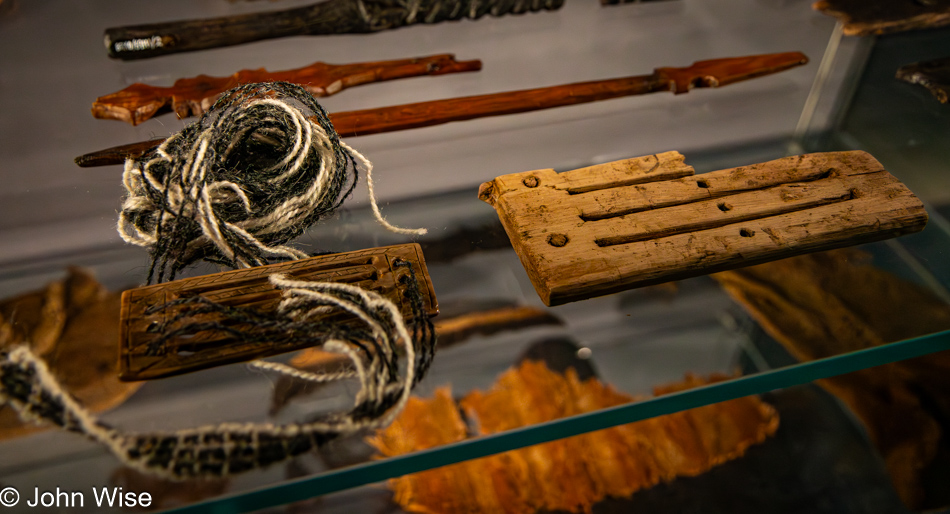
There is so much more to this museum than I’ll be able to share here. Suffice it to say that if you are interested in things relating to the Vikings up to the Middle Ages of this corner of Norway, you’ll likely find it here. Being frugal with what I can post, considering that there are already 57 photos accompanying our day, I am focusing on fiber arts-related tools from the Viking age for the short time we’ll be here at the Bryggens Museum.
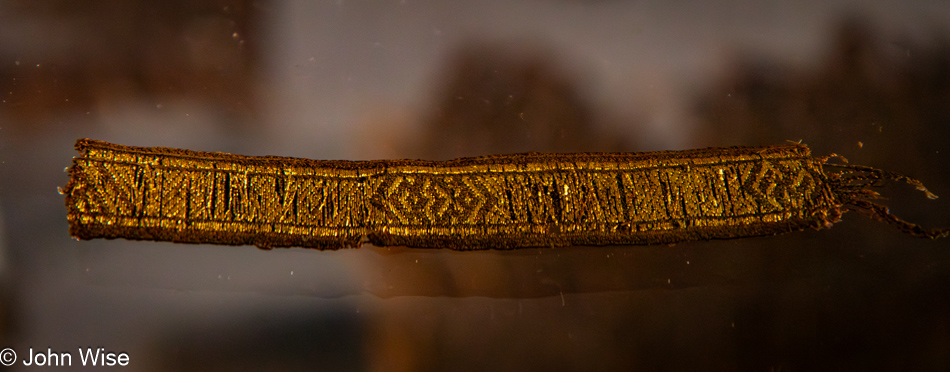
A ribbon woven over 700 years ago continues to exist, while the shirts I bought last year are already showing the kind of wear that means they won’t be wearable much longer.
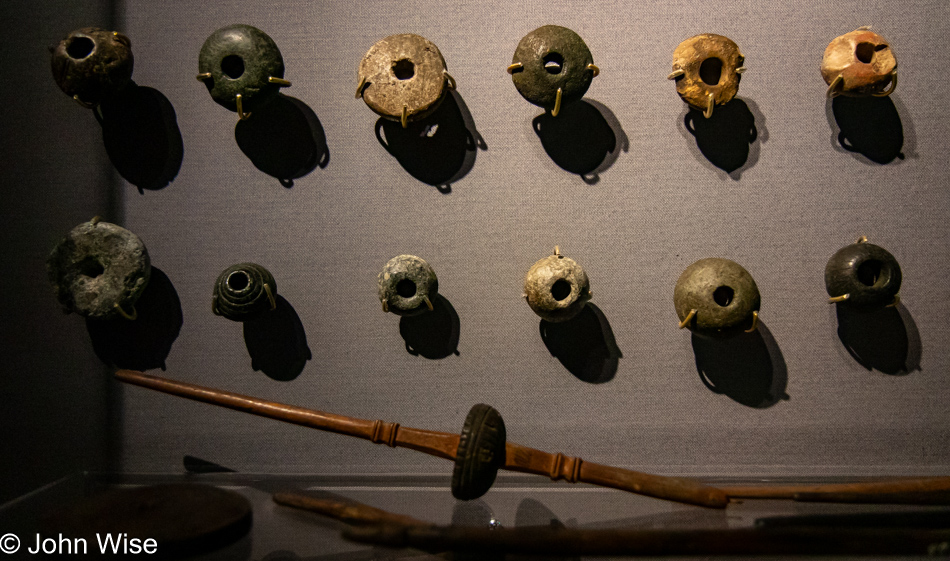
These stones with holes in them are not an early form of currency; they are whorls for drop spindles, adding momentum to the spindle and making spinning fibers far more efficient. Considering the variety of whorls we’ve seen in different museums, I can’t help but think that these were status symbols, demonstrating a kind of elevated standing similar to what people try to gain by wearing expensive watches today.
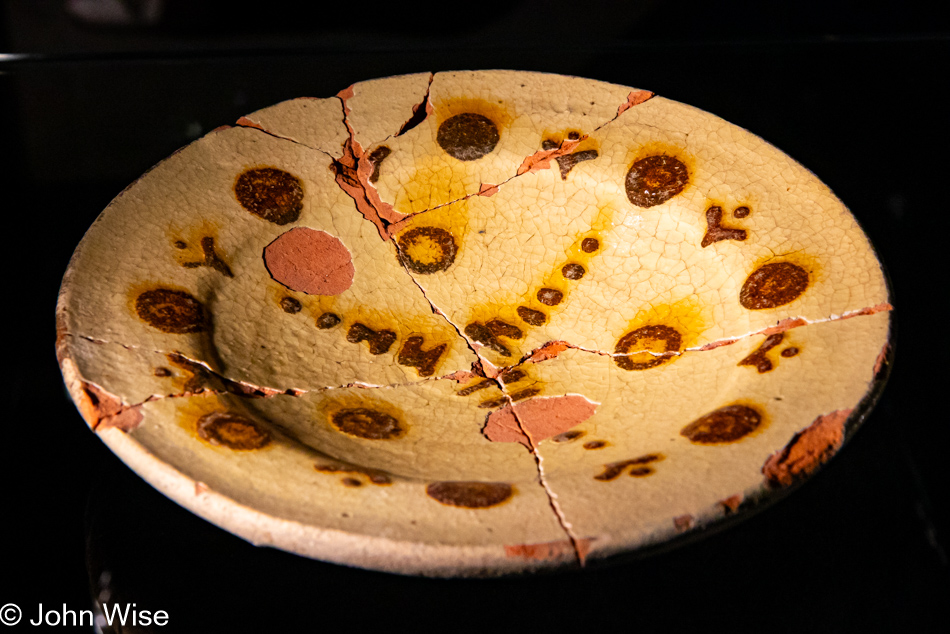
Lost in the past, we checked the time and were startled to find that our reservation for 1:00 p.m. at the next museum up the street was just 20 minutes away. Out the door we flew, grateful to have seen what we had, even if it was a mere fraction of the exhibits.
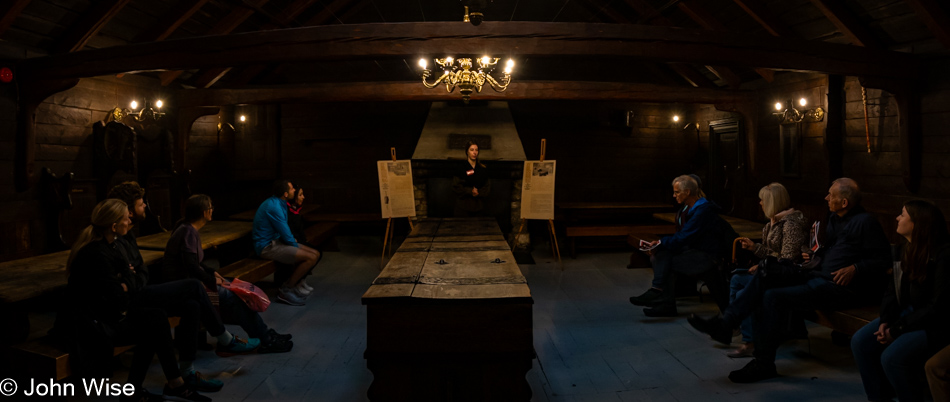
Before leaving Arizona, I had read this tour might be difficult to get on at the last minute, and with my curiosity about the subject, it was one of the few places for which I made reservations. While we got turned around for a minute on our way over due to construction, we were still on time for the English tour of the Hanseatic Museum and Schoetstuene.
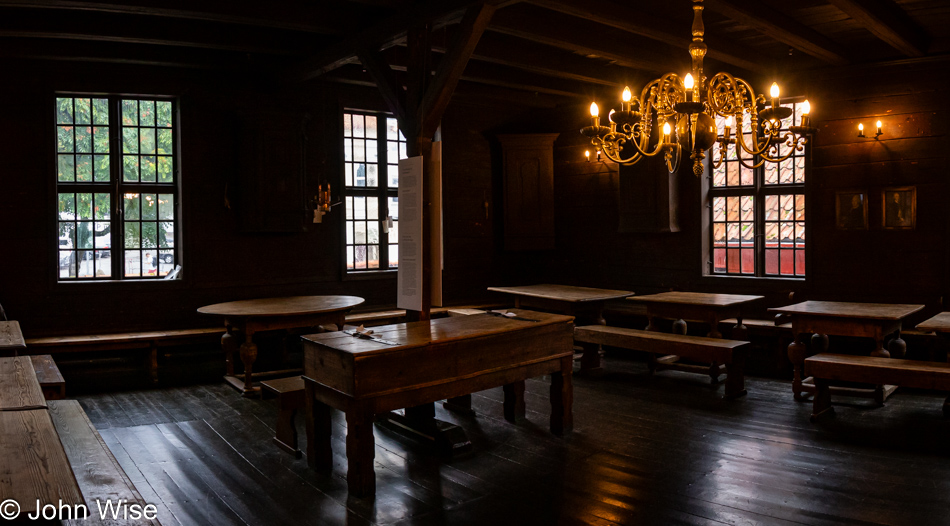
At or around 1350, the Germans set up shop in Bergen, establishing a branch office of the Hanseatic League (Hanse in German) that operated in this area known as Bryggen. For 400 years, their foothold was secure with their German countrymen growing rich at the expense of the Norwegians who took a cut, but it was the Germans who owned trade routes and contacts allowing them to control markets. The Hanseatic League got underway in the 12th century, setting its headquarters in Lübeck, Germany, while international regional offices were situated here in Bergen, Norway; Riga, Latvia; London, England; Novgorod, Russia; and Skåne (Scania), which is the southern tip of Sweden, where we visited Ystad, Malmö, and Lund. The biggest Hanseatic cities in Germany were Hamburg and Bremen, but they had smaller offices in many towns, such as Lüneburg. Back in 2013, Caroline and I visited Lübeck after dipping a toe into southern Denmark, but we didn’t stay long at all and hadn’t considered spending time there to learn something more about the Hanseatic League, but now my curiosity says we have to return.
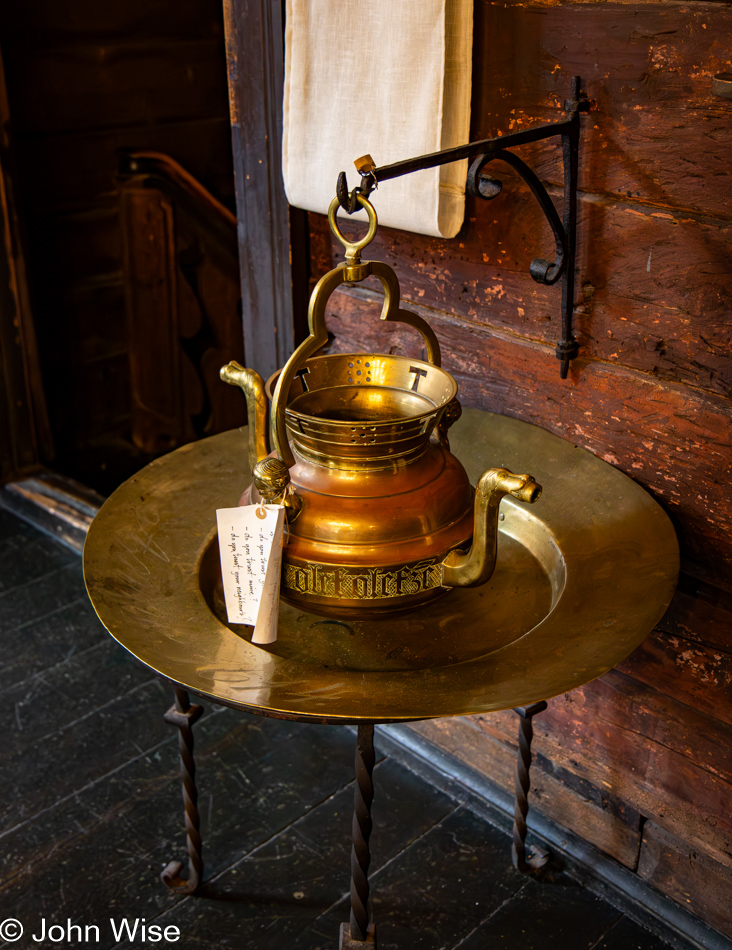
There were strict rules the Germans had to adhere to while they were working away from home, including that they could not own property outside of Bryggen and they were not allowed any contact with Norwegian women. As a matter of fact, no women were allowed in their trade zone at all. New German workers came in as apprentices at the age of 11 and wouldn’t return to Germany until they had completed their apprenticeship and journeymen years.
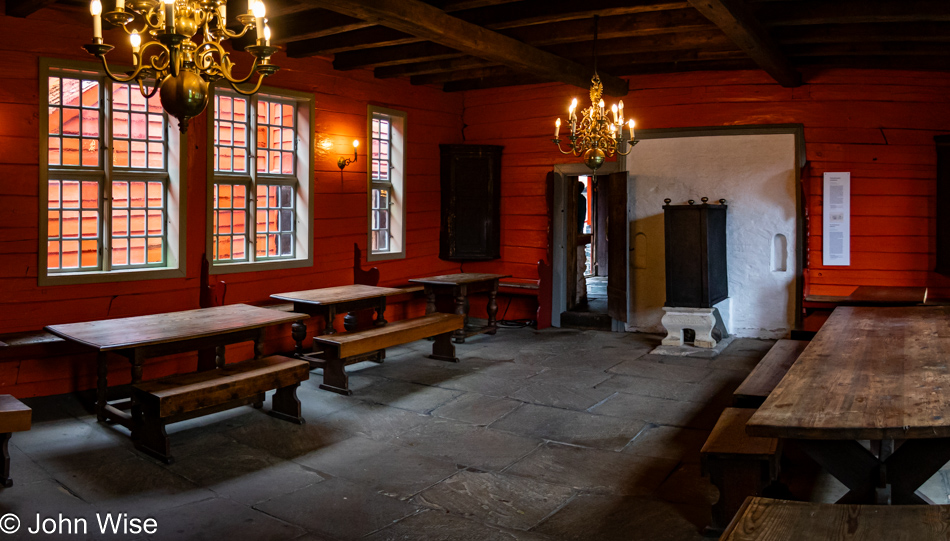
It was right here in this red room that I found out one of the most interesting things I would learn today. Red paint, used since at least Medieval times for painting houses and barns, was a mixture of animal blood, oil, and rust. I have to wonder how this emerged out of history and if its roots are related to Jewish biblical instructions regarding Passover or if the custom was originally part of Pagan rites.
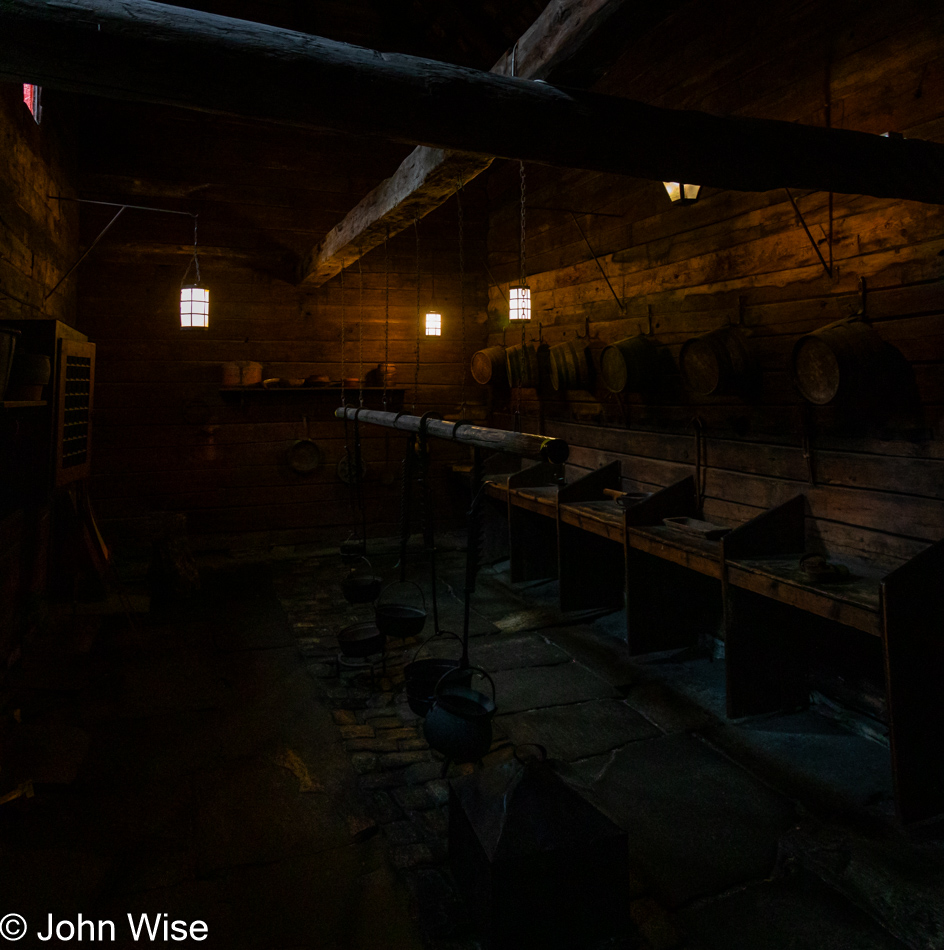
Fire and the use of it here in Bergen played an important role on our tour due to the history of large parts of the city burning to the ground. After parts of Bryggen were lost to fire in 1702, the Germans rebuilt their offices, only to be squeezed out of business in 1754. In the intervening years, warehouses and the old wharf were lost to fire again, and even the Bryggens Museum we visited just before this tour sits on a site cleared in a 1955 fire. This photo was taken in one of the large kitchens that fed the Germans working here, and the story about the rules governing the usage of fire and the precautions taken is quite interesting.
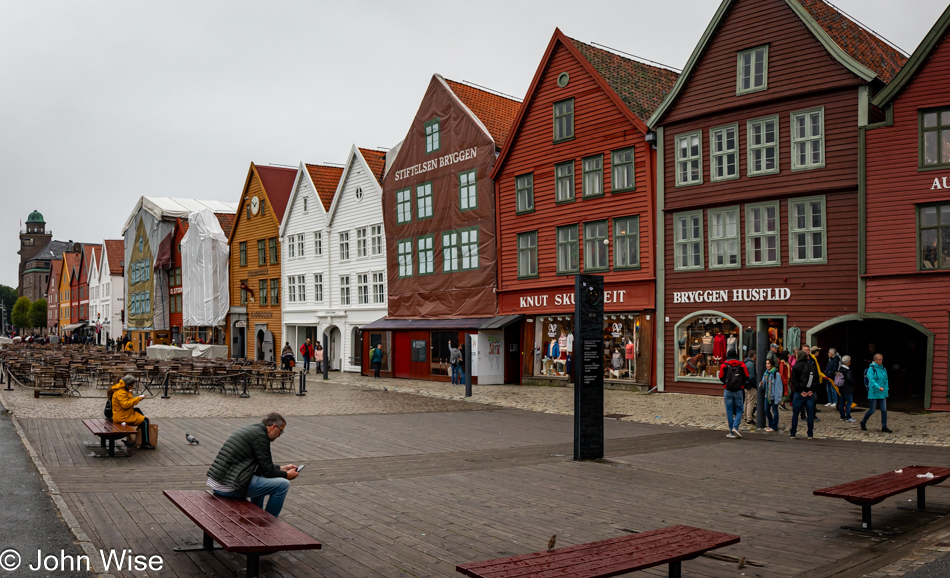
Stockfish was the primary item of trade here, rounded out by other animal products, often originating in the northern coastal region of Norway. The hour went by quickly and ended here facing the old trade fronts of Bryggen. You can see that three buildings are currently being renovated while another one behind us is also shuttered. That building out of view houses the Hanseatic Museum. Our tour had us visiting the Schoetstuene (Assembly Rooms), and it would take until we got home before we learned that we missed out on more things to see there, which will necessitate a return visit to Bergen, hopefully on a rare sunny day.

Trekroneren was a must-visit because how many hot dog stands are open from 11:00 in the morning until 4:00 the next morning? A popular hot dog stand is the answer and with ten different types of sausage, they must surely have something for everyone, except for the vegetarian. One of the takeaways from this trip to Scandinavia is that we love the Pølse from the far north because, with the addition of ketchup, mustard, and crispy onions, they have mastered the American classic.
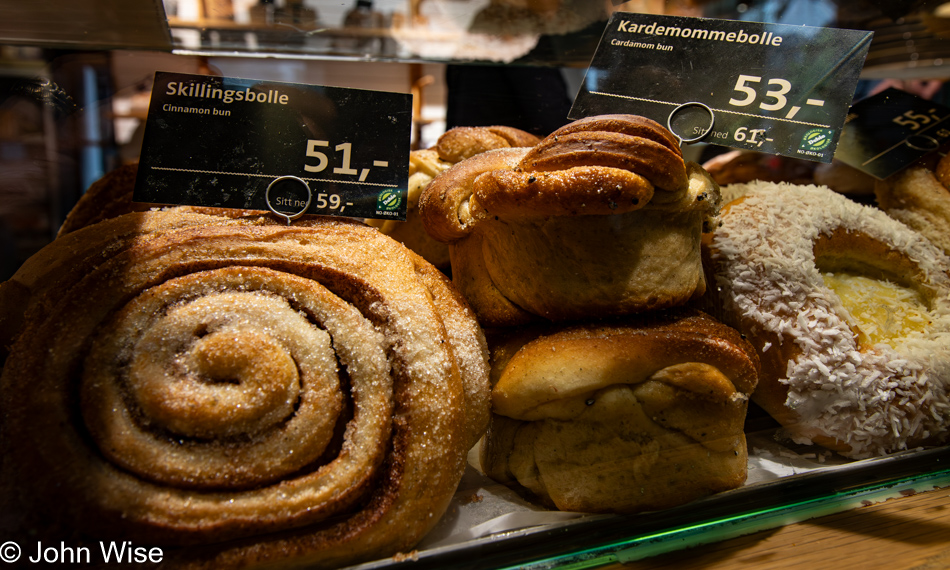
After yummy wieners, the only natural path was for us to bring ourselves to Godt Brød for, you guessed it, FIKA! Left to right, first up is the cinnamon bun, next up cardamom buns, and over on the right, almost out of view, is a skolebrød I described when we arrived in Oslo. With a coffee and bun delivering another amazing fika, we were ready to take on a distant journey.
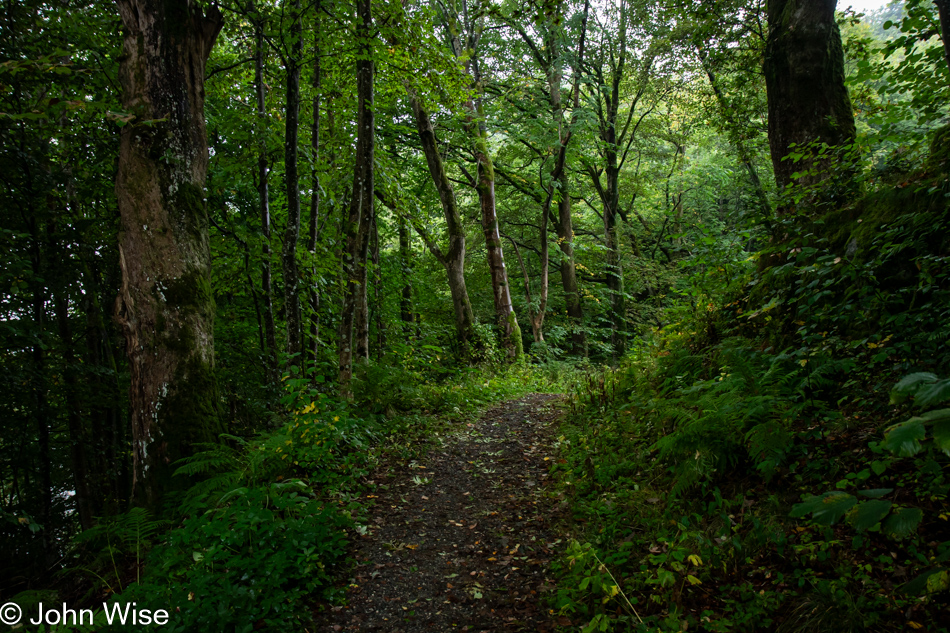
First, we needed a bus south since we were not interested in walking the 15-kilometer (about 10 miles) roundtrip to and from our next destination. Somehow, we negotiated the ticket purchasing with our bus driver, and once it got us as close as it could, we had about a mile walk down a steep street before turning onto a forest path that had us climbing uphill.
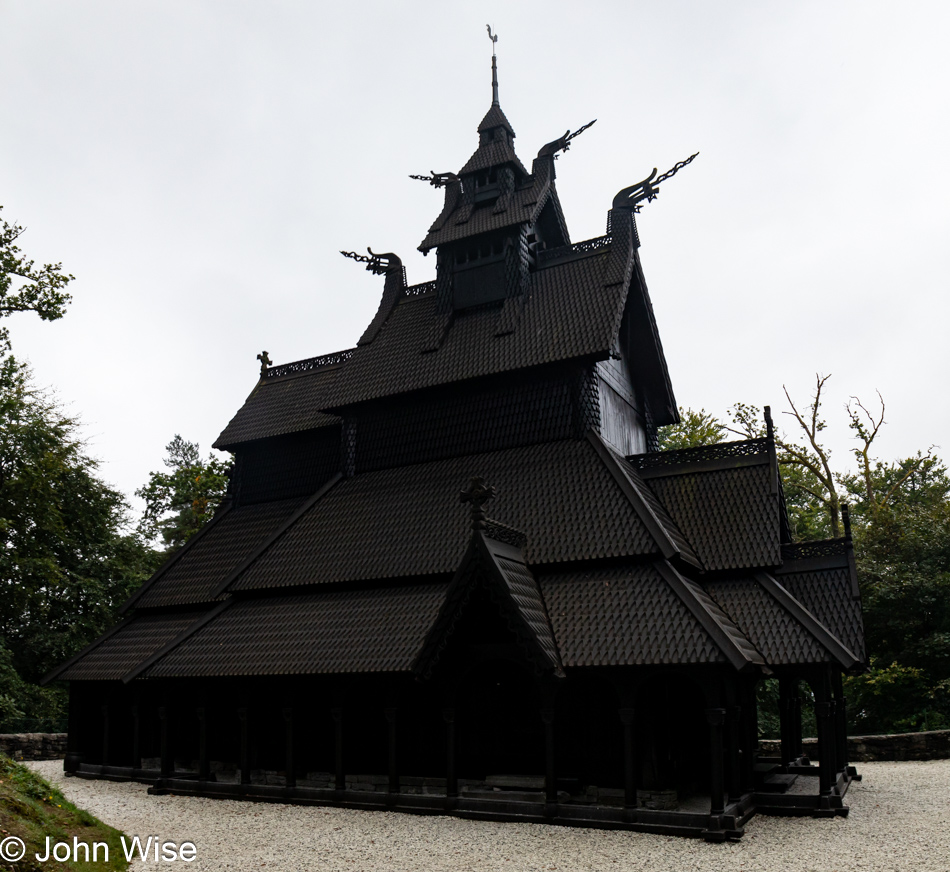
This is the Fantoft Stave Church, or more correctly; it is the completely reconstructed copy of what used to be the church before Varg Vikernes of the Black Metal band Burzum burned it to the ground. The original was built around 1150 in Fortun over on the eastern side of the Sognefjord, and it stood there until the community wanted to tear it down and replace it with a modern church. In 1883, a prominent Bergen businessman named Fredrik Georg Gade had it moved piece by piece to Bergen. Sadly, over 1,000 stave churches were destroyed over the centuries, and now only 28 of the relics survive.
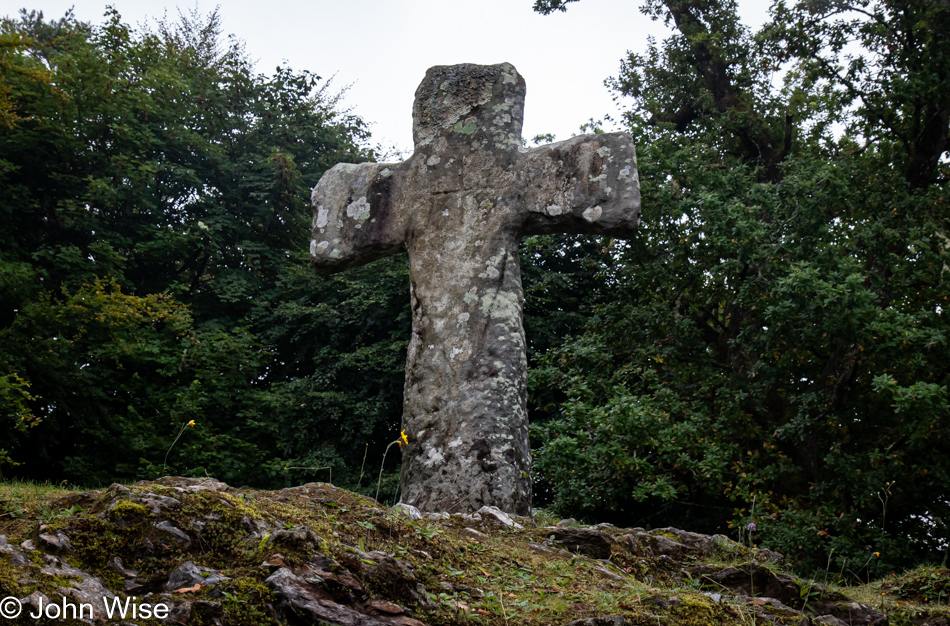
The cross was moved up here to Bergen from southern Norway. It is believed to have been created in the earliest years of Christianity when it was moving into the country and displacing the older Pagan belief system.
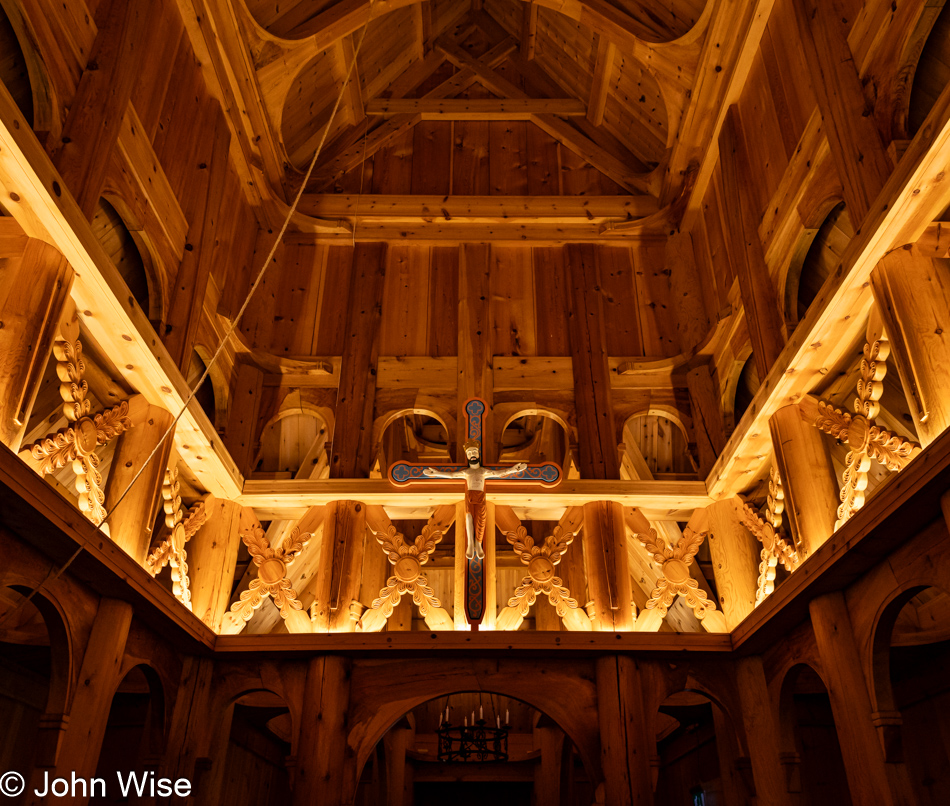
On one hand, some of the authenticity that would have been present in the old church is missing as 850 years of aging were lost in the fire, but then again, that allows us to see it much the way it would have appeared to somebody entering this building in the first years after it was built all those years ago.
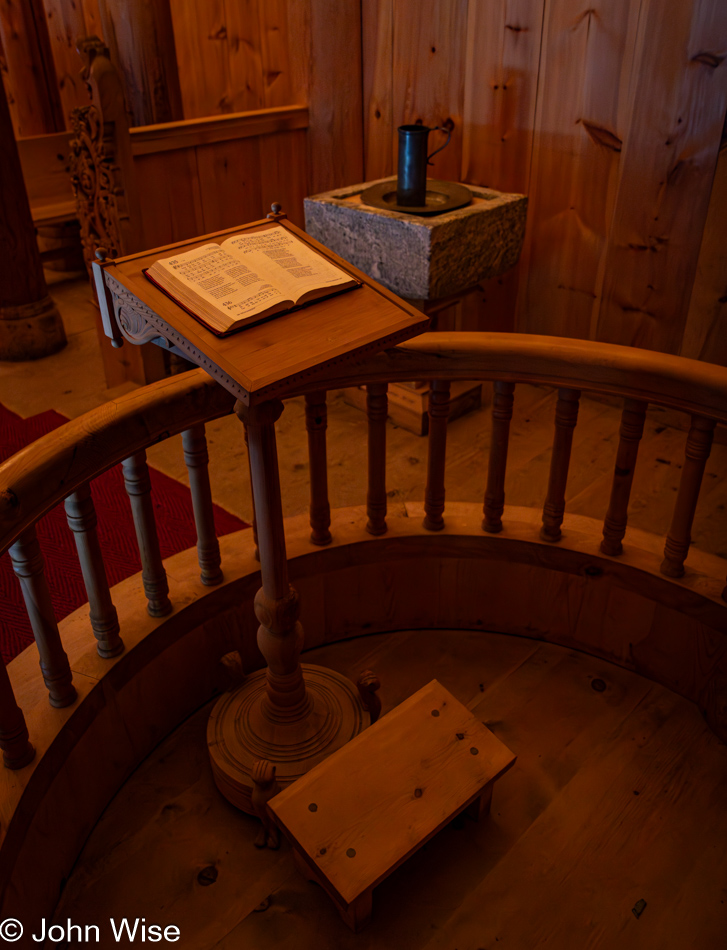
Kneeling before a congregation, someone took to the pulpit and likely used a series of poems, stories out of oral tradition, and reminders of laws and customs to speak to the local community and remind people of obligations, events on the calendar, and the ties that bound them to history in the hopes of paving the way to better tomorrows.
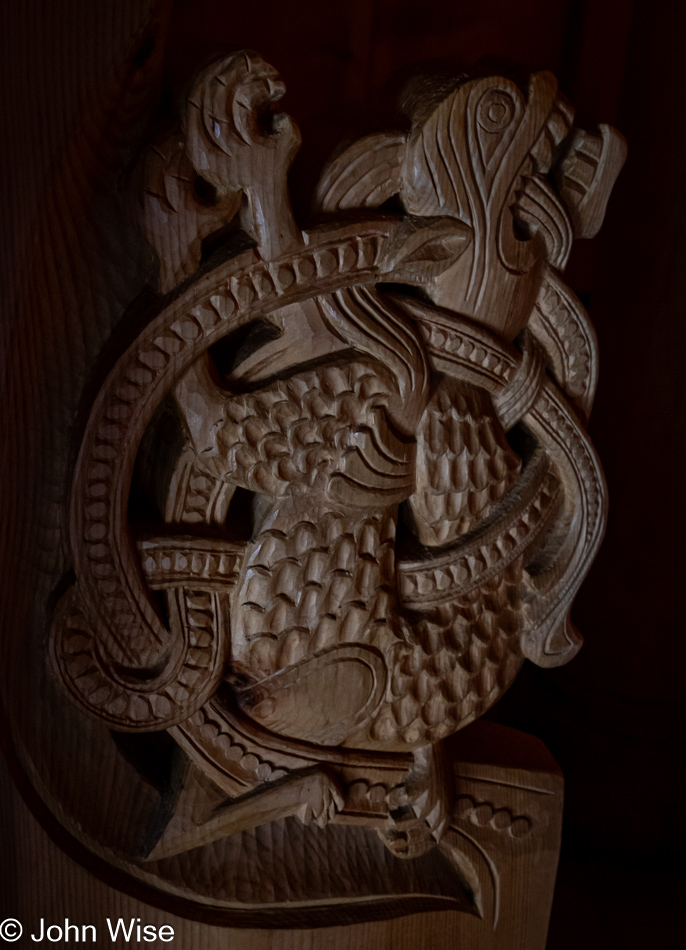
No matter what we read, see, or visit, we’ll never really understand the world our distant ancestors lived in. The way people pretend through silly costumes, hairstyles, and symbols that they are somehow channeling something pure is a travesty without vision, purpose, or ability to self-guide themselves into their own time, their own heritage that, like it or not, is carved from the period in which we are living. While most everything we learn is from the past, we cannot return there, and the only reason people can dwell in romanticized ideas of a distant age is because rather than exist in nihilism and existential uncertainty, a kind of twisted brand identity is created for them where these lost souls can purchase a construct that offers salvation and escape from an abyss of society’s creation.

When I was a young man, I found foolish the ideas that informed “primitive” religions and, probably like many people brought up in Christian faith, thought that “my” faith (even when I was doubting the veracity of its “truths”) still felt far more logical than any Pagan, Hindu, or Indigenous person’s weird beliefs. Now that I’m older and wiser, I can see the genius of creating stories and mythologies that could unite people in survival, sharing, and community.
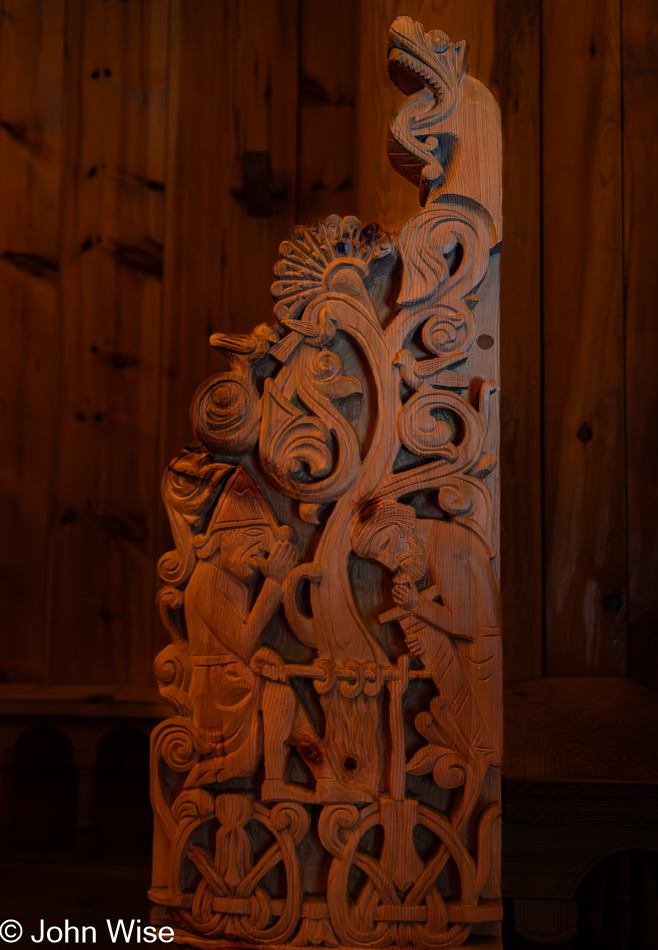
Stories that transcended humans and endowed gods with creation and destruction abilities taught people that they were not themselves gods because the transactions of the all-mighty happened in loftier realms that set the stage for us to be the fortunate inheritors of what the gods offered us. We then were left to find our way in nature and community, remaining ultimately answerable to our creator(s) and held accountable amongst ourselves to not usurp so much power over others that we deluded ourselves into believing we’ve become a god. In this sense, I find it remarkable, regardless of religion, that this form of powerful mythmaking is found throughout history as far as we can measure and across geography.
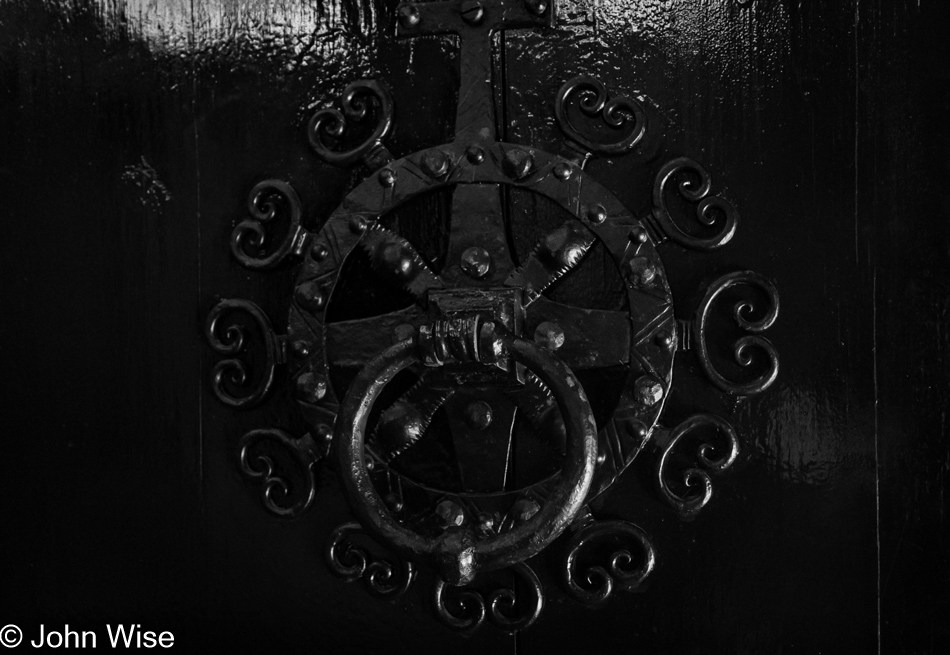
Should you be wondering why stave churches are black, and they mostly are, it was not because there was something sinister about them but because black tar was readily available in Norway and proved to be a great sealant to protect the all-wood structure from snow and rain. If you had the idea that these Gothic black buildings had something to do with Norway’s Pagan past, the Pagans built temples that faded away or were destroyed, while burial mounds and stone circles were mostly left untouched. These dark, slightly foreboding churches were built after Christianity was introduced to Norway and consequently have nothing at all to do with Paganism.
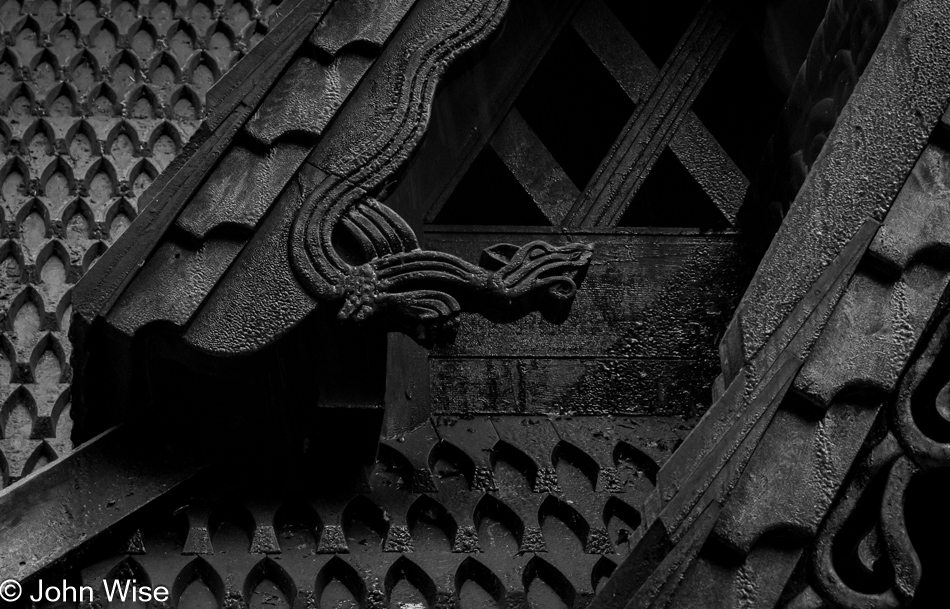
My poor, sad brain, holding biased opinions that my upbringing conditioned me to hold, can’t help but want to see a certain amount of animism and otherness in the architecture and carvings that are simply different. While I appreciate what I’m seeing, I’m looking for a deeper meaning that must differentiate this serpent as having a dark meaning compared to the griffin that adorns so many Catholic churches. The steep roofing obviously hides a mystery beyond what I can glean at a glance, while the sacred geometry used in the building of cathedrals must be benign because that’s what I grew up accustomed to. How big is the tragedy that we typically want to see people who lived 1,000 years ago as being primitive, and yet we carry around an ignorance of our world that is so big as to dwarf the scale of pyramids and cathedrals?
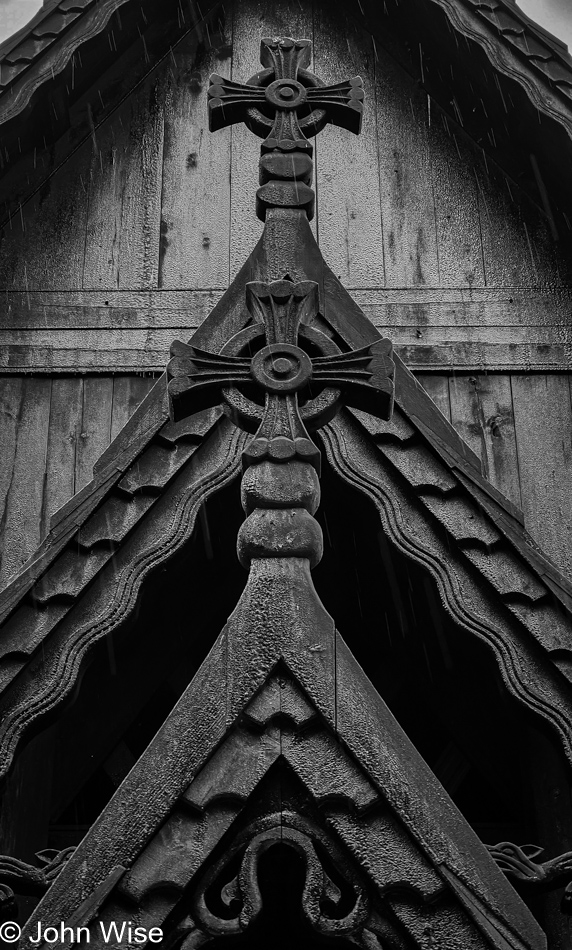
The weather forecast had called for a 90% chance of rain, a bullet which by now we figured we’d dodged, but, nope, here’s the rain.
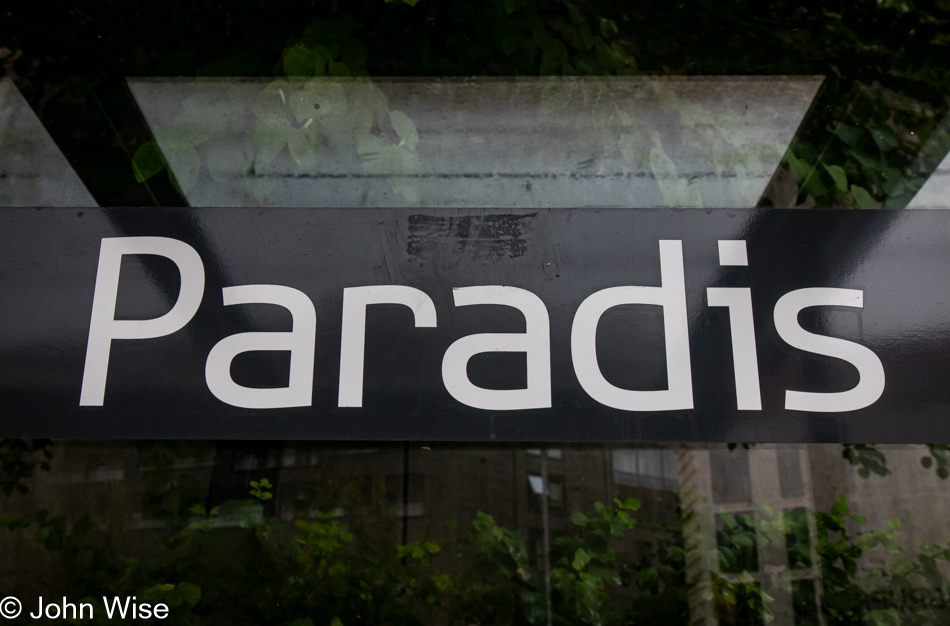
Not interested in returning the way we came if there was a shorter, dryer route, we asked the women at the gate of Fantoft Church about an alternative. They directed us here to Paradis, which somehow felt appropriate, better than hell anyway.
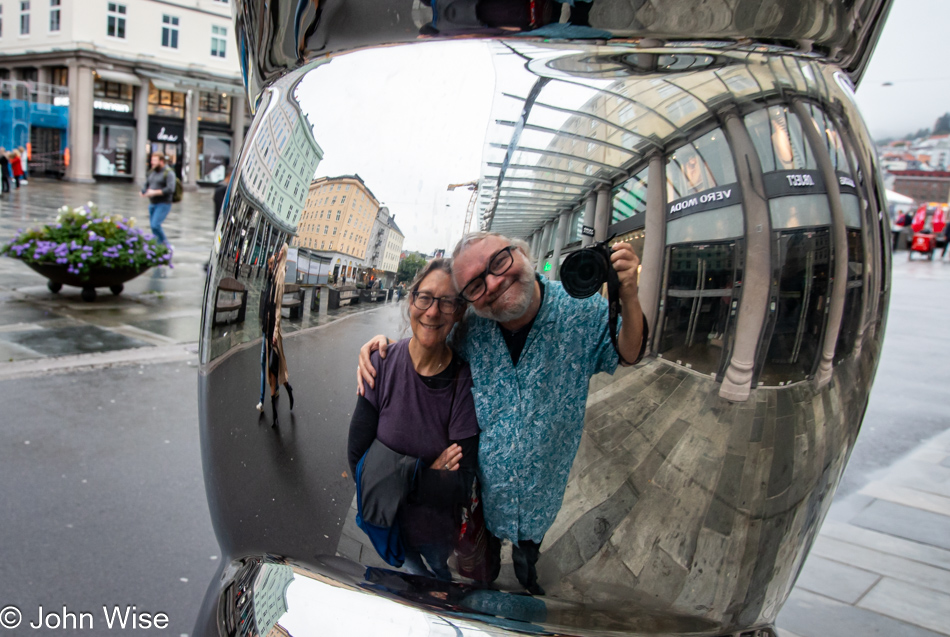
After taking well over 2,000 selfies of Caroline and me over the years, it’s always nice to find a reflective surface that offers a variation of the tried and true method of pointing the camera back at us.
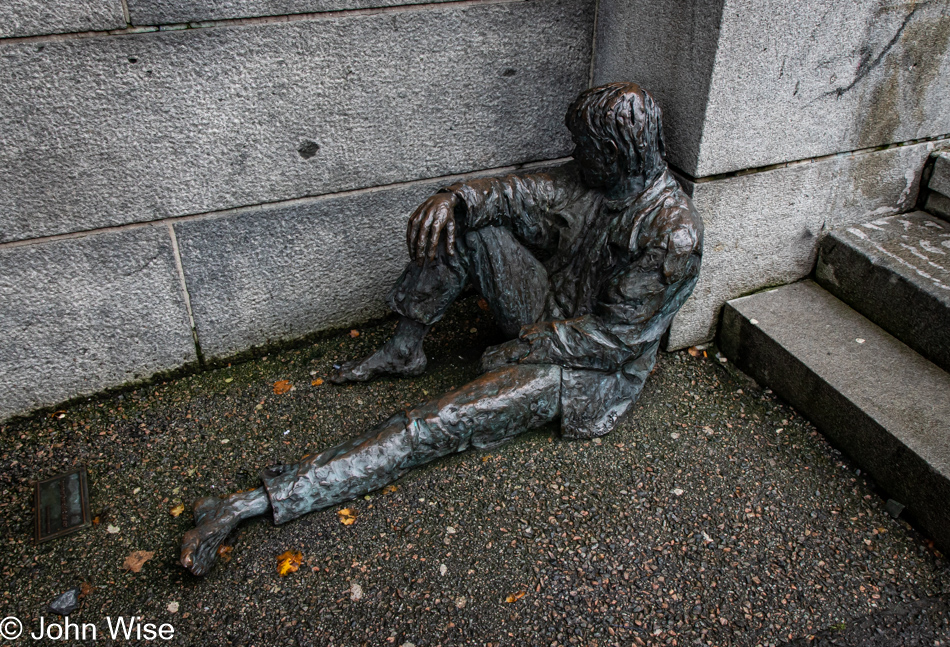
The plaque at the feet of this homeless person sculpture reads, “No one is just what you see.” While looking for information regarding the sculpture, I did find a comment on a post featuring a similar photo; it read, “In Scandinavia, homeless are a rare sight, so we have to build statues of them to remind ourselves of how good things are.” – from Dudestereo posted on 9Gag.
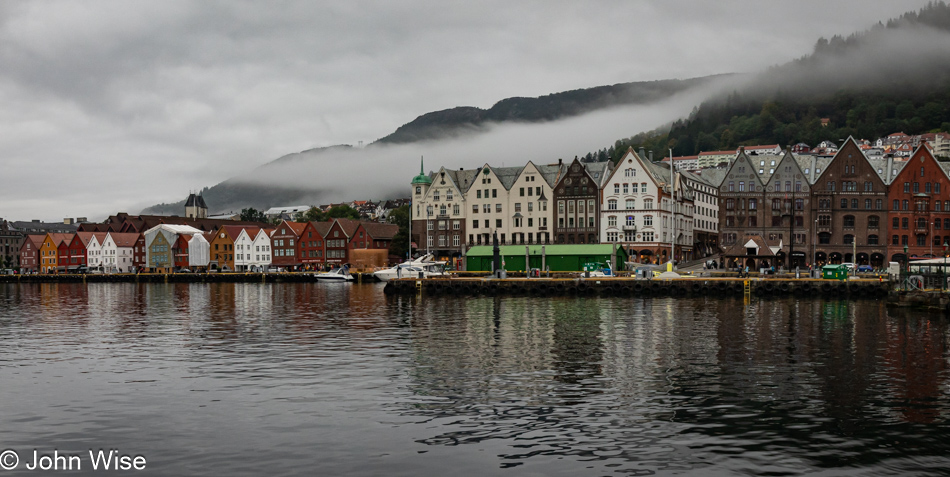
It was 3:00 p.m. when we took the bus down south and now that it’s after 5:30 and most tourist options are closed, we are at a loss of what to do. It was at that moment that the two of us knew that a fika would help us think about our options. After finding a Backstue (from the chain of bakeries we had enjoyed in Oslo) open till 7:00 p.m., that’s where we aimed our feet. No cinnamon or cardamom rolls were left, but we weren’t about to turn our noses up to a pretzel croissant and a couple of coffees. Almost better than our break was the conversation with the woman maintaining the shop this late in the day. Holding dual citizenship between the U.S. and Norway, this university student, who normally lives in Oslo but is in Bergen for its law school, voiced her recognition of how fortunate she is to be able to attend school for an advanced degree at no cost to her. While she has family in Wisconsin, where one of her parents was born, she has no interest in ever living in America as she finds the quality of life in Europe better. Her one complaint was that she can’t wait to get out of Bergen as it’s too rainy and she’s looking forward to returning to Oslo.
Still without a plan but with a dinner recommendation from the woman at the bakery, we start to wander about guiltily. How can we be in a foreign city, one of the most important at one time, and not know what to do? Mind you, it is Sunday, and as I pointed out, almost everything is closed.
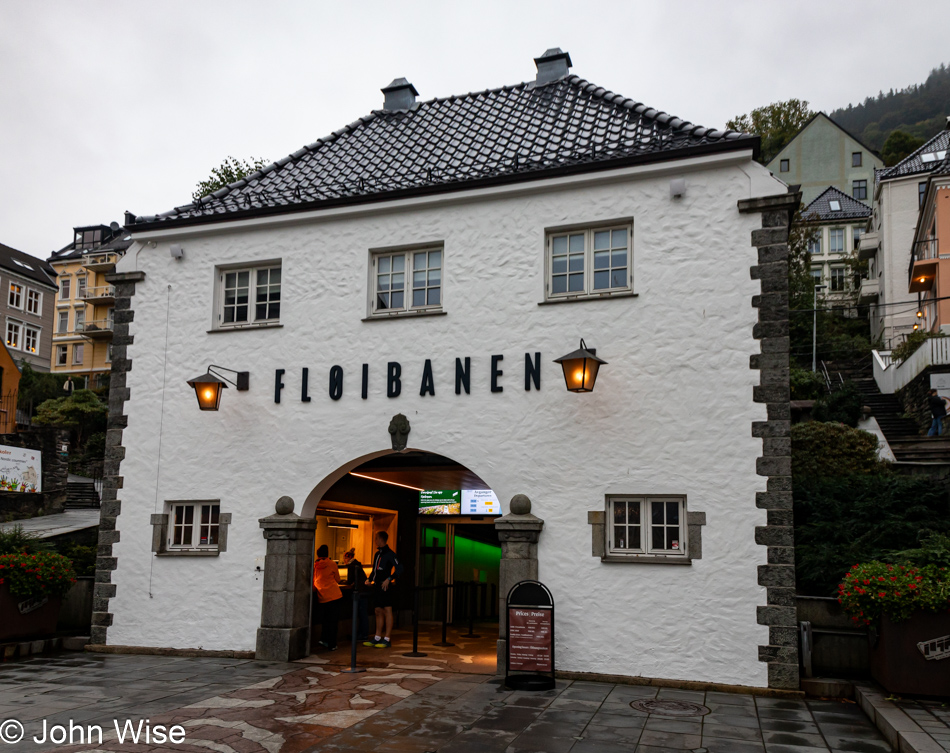
We looked up the cloudy mountain to which the funicular takes sightseers and reluctantly agreed to give it a whirl. Before buying our tickets, the salesperson warned us that the view from the top was currently obscured by a heavy fog layer. This explained why we saw others walking away from the ticket window. Undeterred and with nothing else going on, we decided to forge ahead.
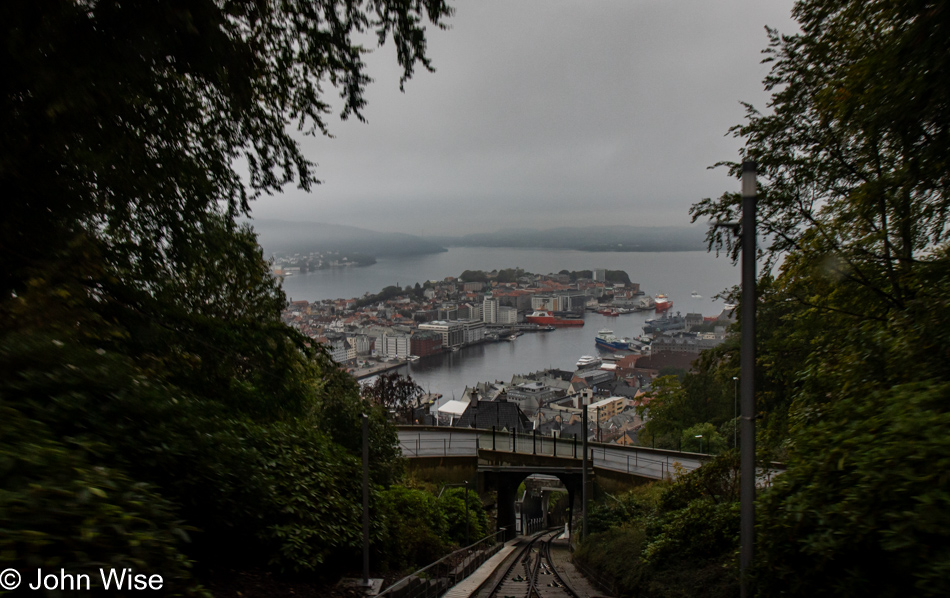
Okay, we considered this view our money’s worth. The ride-up offered us a partial view that justified the expense. Even if we just turned around up top, at least we had spent some time there that would allow us to check off yet one more item from our itinerary.
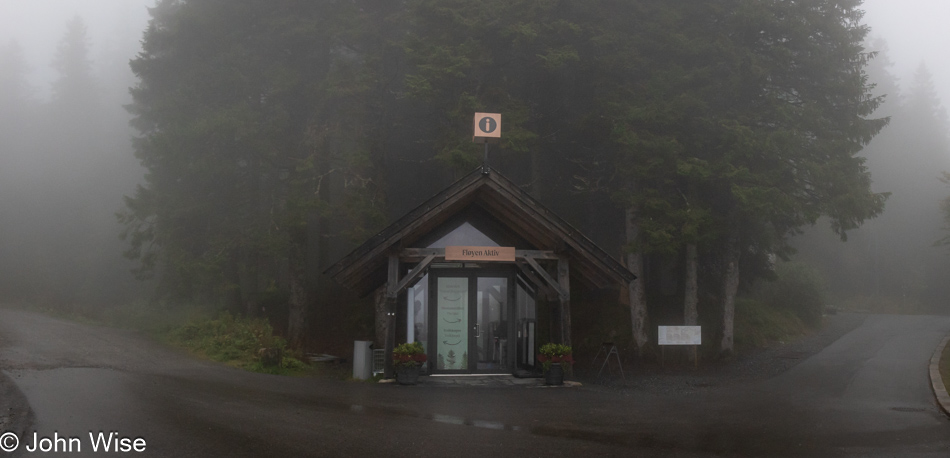
Once far above the city, it was so foggy that even the nearby forest started to disappear. While the participants of an outdoor yoga class were packing up their mats in the mist, we recognized that our roundtrip tickets were for naught. Not that we were about to throw ourselves off the mountain as human sacrifices to a Norwegian God who accepts this type of offering instead, we were going to meander down the mountain through the mysterious forest.
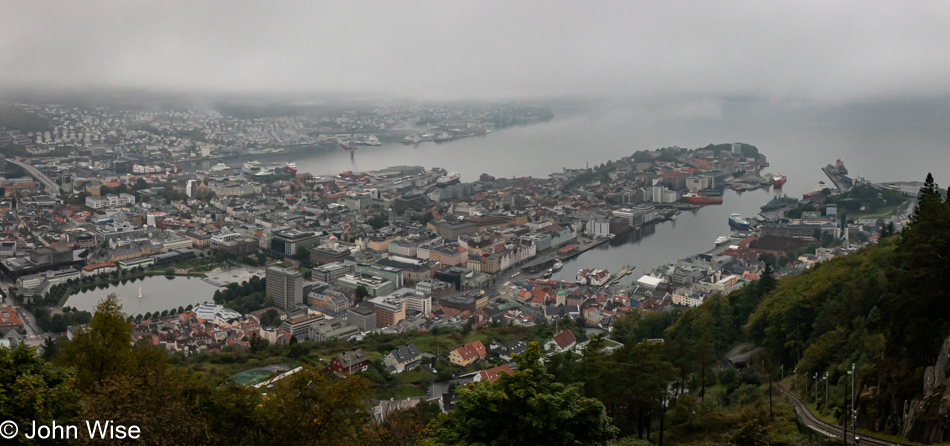
Hey Caroline, did we even walk a dozen steps before looking over our shoulders and seeing that the view had cleared? Back to the viewing platform with a direction sign informing us that New York City was 5623 kilometers one way and Istanbul 2692 kilometers away in a different direction. The sign also denoted that at this spot on Mount Fløyen, we were 320 meters (1049 feet) above sea level.
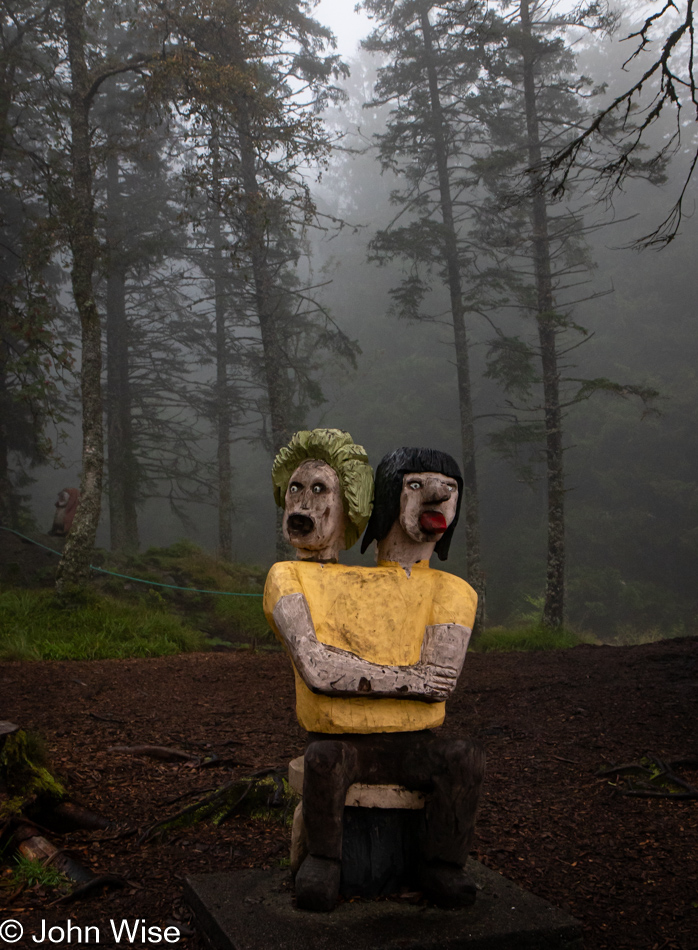
Back on the trail, we knew it was inevitable that we’d run into a troll or two at some point, but a two-headed troll surprised the two of us.
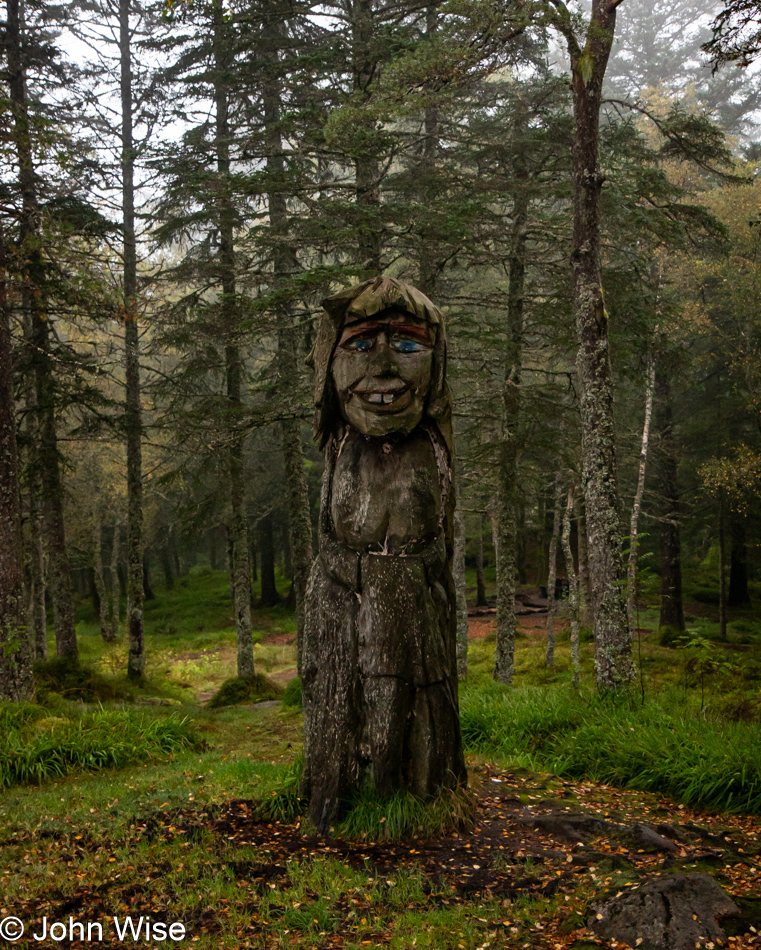
Wow, this is nothing like the Huldra we saw at Kjosfossen waterfall in Myrdal who wore a red flowing dress and danced for us to thumping Teutonic beats right out of the Middle Ages. I guess the carver of this forest spirit was having a bad day or didn’t understand that buck teeth are not appealing in any culture I’m aware of.
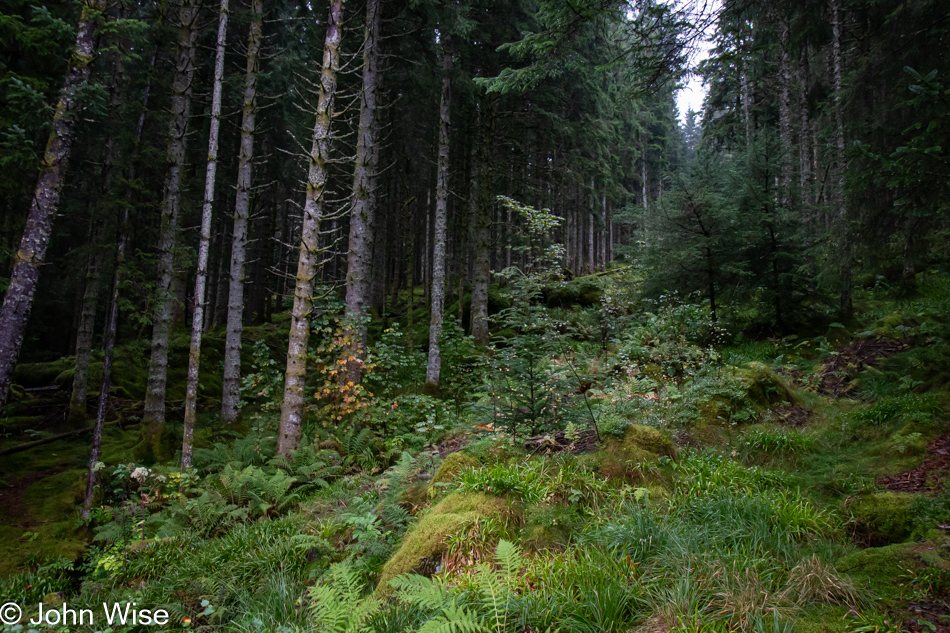
The decision to take the forest path was a great one. Good thing we had been at a loss about what to do with the rest of the day because this walk ended up being a significant highlight of the trip, but then again, most everything all the time ends up being the highlight that will define our vacation.

Just another cairn? Not hardly; it is a small monument to being human. Cairns are not required here along our well-defined trail down Mount Fløyen, so why is one here? It turns out that this activity of stacking stones for various reasons has been going on long before the various cultures of our planet made contact with each other. These analog all-natural communication towers can signal the presence of a trail, but they have also been used to mark territory, denote gravesites, and they can have spiritual purposes.
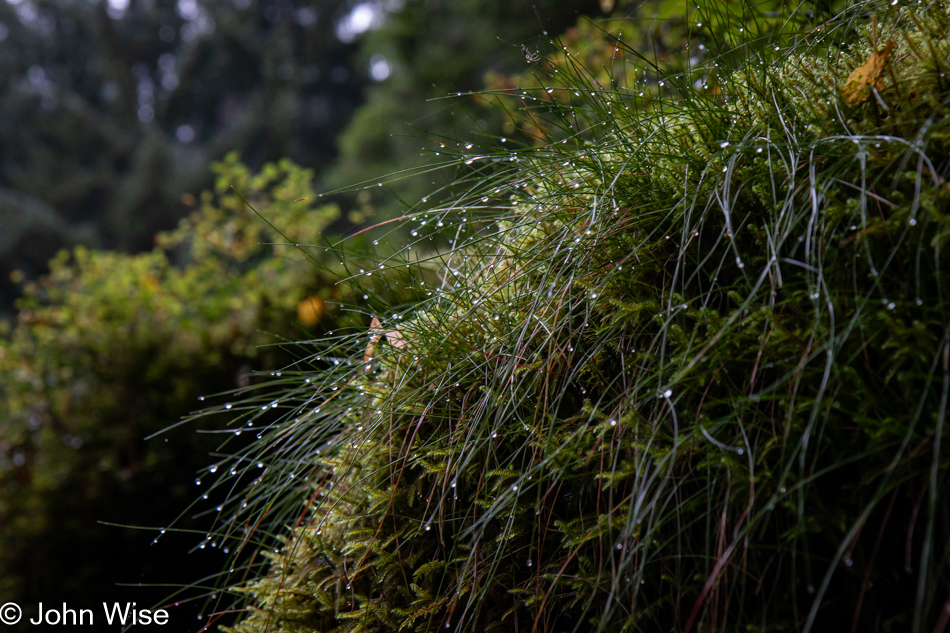
Lush and verdant are two words that quickly come to mind when the quiet forest seeps into our senses and whispers for us to notice the little things, such as these dew drops that have the appearance of fairy lights. When entering into this conversation with nature, it is as though our mind is traipsing in the joy of understanding that we are in a place perfected by the hand of time.
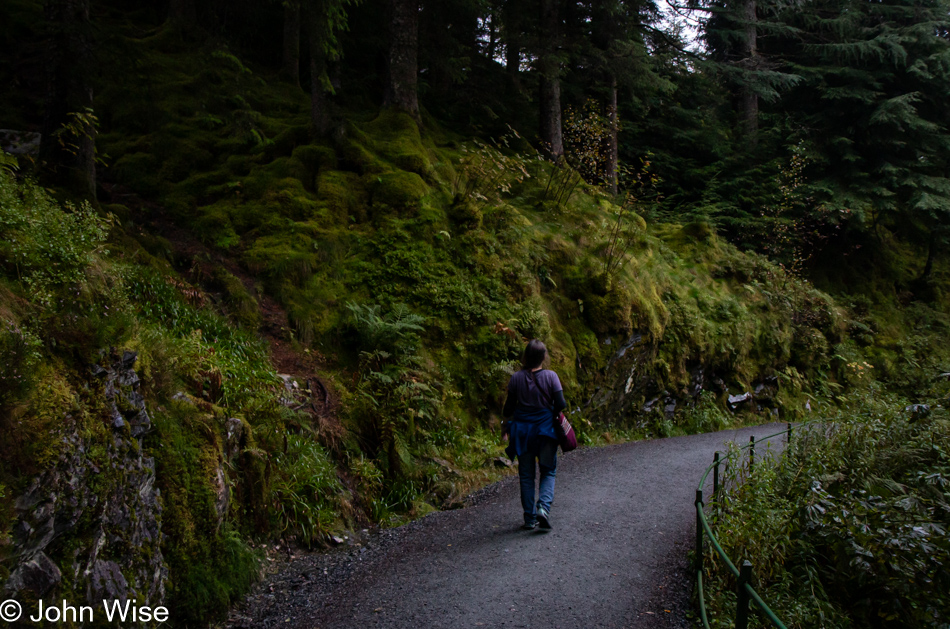
I’m aware that Caroline knows I’m here, but I also know she’s lost in the profound beauty and complexity of the world around her. While walking ahead, there’s a tape playing within her heart and mind, repeating thoughts of how charmed our moments are when together we are discovering corners of nature we couldn’t have dreamt we’d ever experience for ourselves. These times are waking dreams shared between two witnesses that reassure each other that they truly experienced these environments and that they were as magical as our recollections want us to believe.
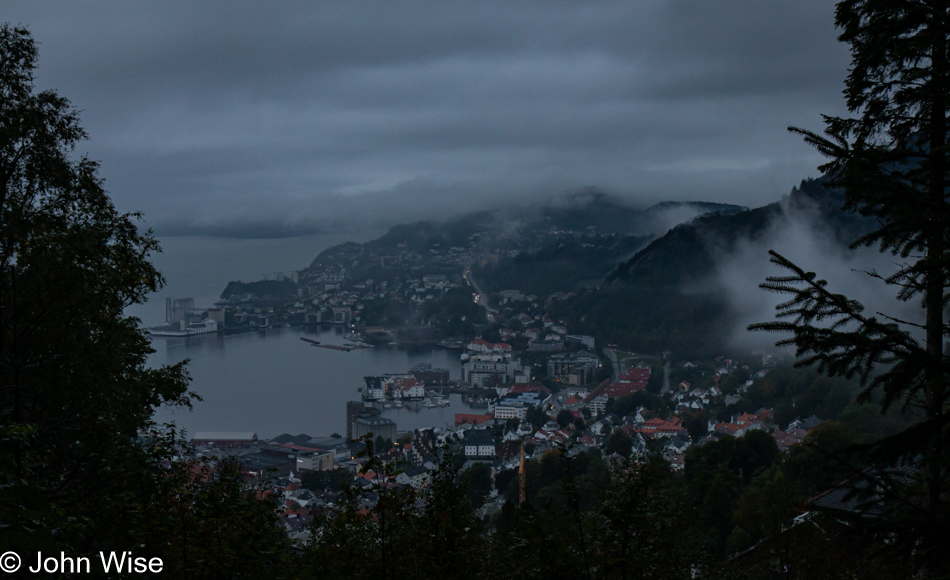
Look below and try to see that 1000 years ago, there were houses, docks, chimneys, market squares, churches, and people who could never have imagined that one day, a world vastly different from their own wouldn’t fully comprehend what they’ve inherited. A world replete with conveniences and luxuries that would exceed everything from their own time. Electricity, running water, both hot and cold but most importantly clean, trams, planes, food from all corners of the planet, the ability to communicate across all geographic limitations, the tools to capture, record, and share their lives with people from the future or on other continents, and yet they’d still find reason for war and suffer the shortsightedness to not comprehend what is offered to them by being alive in the 21st century. We are not only looking down on a city where we’ll seek refuge for the night and an evening meal; we are doing so because we are curious about a place that stands in great contrast to the desert city we departed from a few weeks ago.
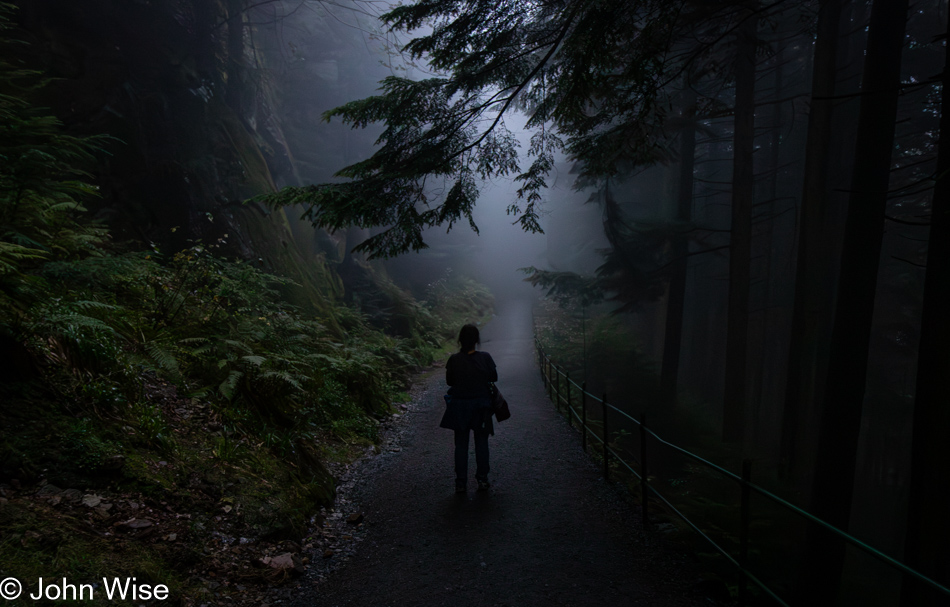
Droplets of water fall upon a plant below or maybe hit the dirt, beginning a return journey to the soil and earth below while some small part evaporates into the atmosphere, obscuring the view ahead. Our love is like drops of water falling from within us to nourish the other while some of it evaporates to cloud our eyes with the beauty of seeing and being with one another. No matter what lies ahead, we live in a symbiotic existence of transitioning that binds us together forever, though our paths might diverge from time to time.
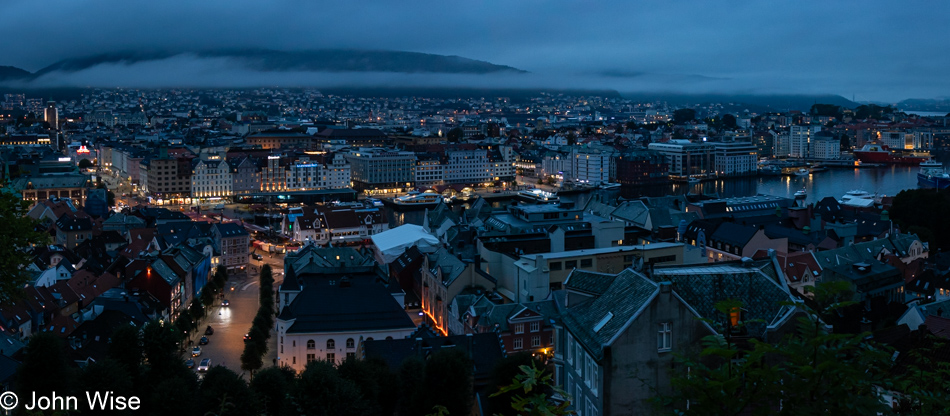
The clouds, the rain, the amount of dusk that lingered, everything worked in our favor to offer us an exquisite descent from the mountain back down to the city. Watching the glow of warm light as Bergen transitions to evening only added to the romance of being in awe of what the experiences across this Sunday offered us.
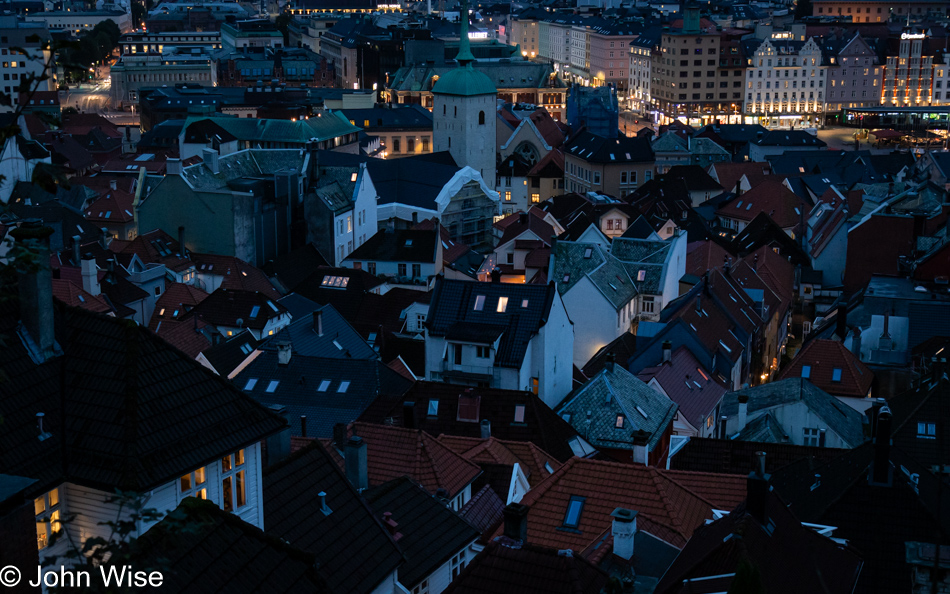
Hunger and gravity pulled us deeper into the city, where we’d be mixing up our routine.
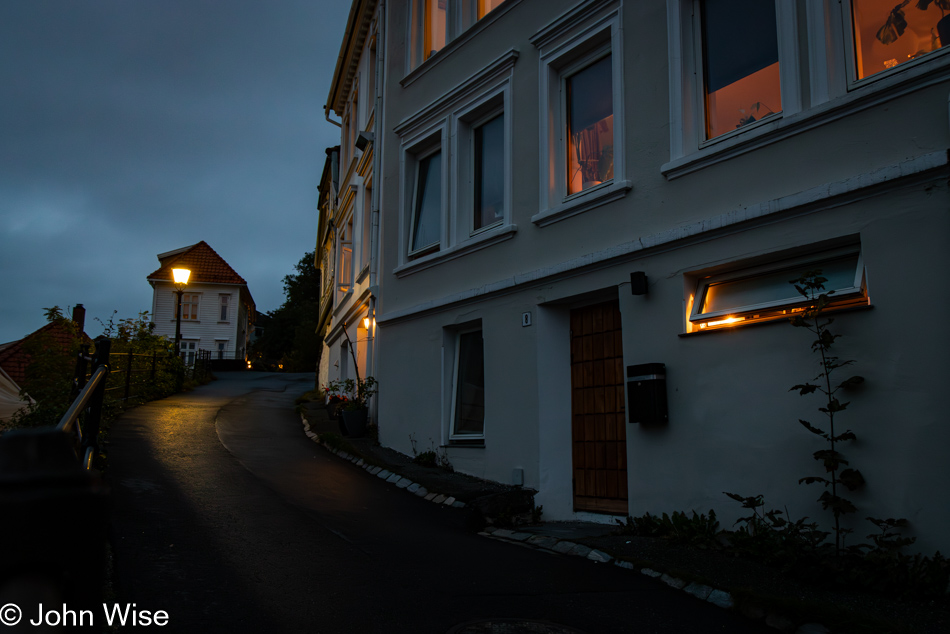
So far, we have made every effort to eat as locally as we could, meaning Danish, Swedish, and Norwegian food, but tonight, we’re taking the advice of the law student from earlier, dined at Villani Italian Restaurant, and ended up regretting nothing. Starting with yet another tartar because it seems everyone has tartar on the menu, we moved on to a burrata and arugula pizza, and while that should have been enough, we’d already ordered a plate of fusilli pesto alla Siciliana with crispy eggplant. Splurging, we shared a small Weck jar-sized portion of tiramisu that cost $13, or the same price as Caroline’s limoncello spritz. Desserts are not cheap in Norway, where sugar apparently costs more than alcohol. Dinner came to 1,444 Norwegian Kroner or about $130. While details regarding common meals tend to feel boring, to be able to look back and remember the time when we thought a particular meal was expensive and ten years later, it seems like a bargain allows this information to take on a point of curiosity.
